April 26, 2024

Celebrating Buddha’s Birthday in South Korea
The top k-news from around the world, 31 best korean dramas on netflix, q&a with salle yoo, the first chief legal…, top 5 hidden gems for authentic korean food….
Join Our Newsletter

- Korean Childbirth Traditions
- HWANGAP 60TH BIRTHDAY
- LEARN THE KOREAN LANGUAGE
- KOREAN ZODIAC
- Korean Weddings
- TRAVEL GUIDE
- RESTAURANTS
- FOOD STORIES
- K-DRAMA & MOVIE
- South Korea Travel Guide
Where to Go, What to See & How to Stay on Budget
By Patricia Liu and Joel Marinan
There has never been a better time to visit South Korea. Clean, modern, sophisticated, and ultra safe, Korea is a destination that you will want to come back to again and again. With the rise of Korean culture and entertainment throughout the world, the country is experiencing a renaissance of sorts, especially for foreigners who wish to experience all that Korea has to offer.
Korea has always been a fascinating country to visit and deserves a place on everyone’s travel bucket list. Known for its stunning blend of tradition and modernity, Korea features futuristic technology, bustling markets, and a thriving pop culture scene. There are no guns or drugs allowed in Korea, and visitors can expect a high level of safety and cleanliness while exploring the country. Also of note is that Korea is a no tipping culture, so savoring the delicious cuisine is extra affordable, as are the cab rides to restaurants and other destinations.
Speaking of affordability, the exchange rate between the Korean won and the US Dollar has been very favorable for Westerners, which is another perk of traveling to Korea right now.
Our South Korea Travel Guide shows you where to go, what to see, and when to travel. Start your journey with itinerary ideas and pre-travel tips, the best day trips, and lots more essential Korean travel advice. Let’s go!
Here are some of our most popular articles that will help you make the most of your trip to South Korea.

A Local’s Guide to Gyeongju
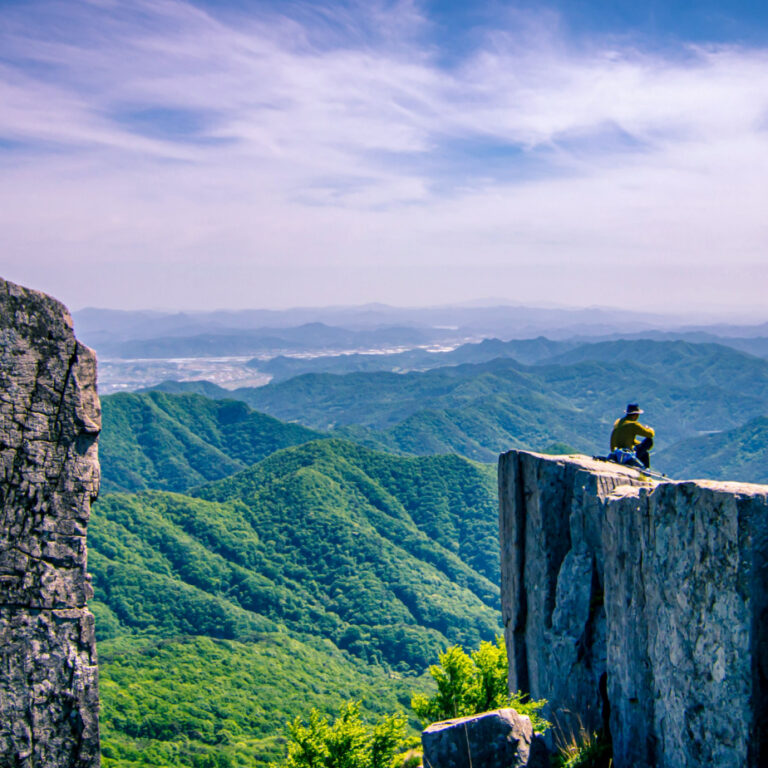
What To Do in Korea in May: The Family Month
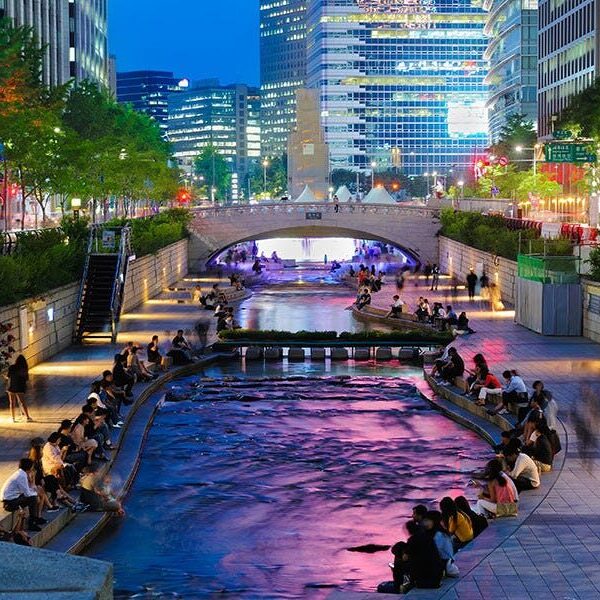
19 Did-You-Knows About Korea
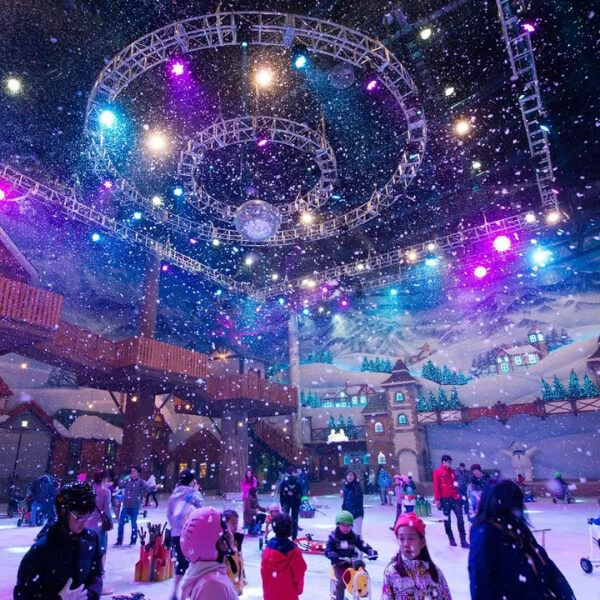
10 Ways to Spend a Magical Christmas in Korea
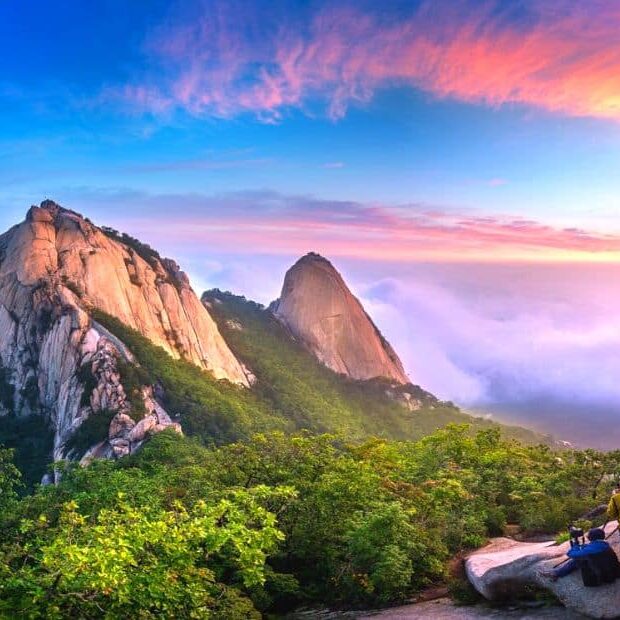
Hiking in Seoul, the Top 5 Mountains You Must Try

Jeju Island: Top 10 Places You Must See
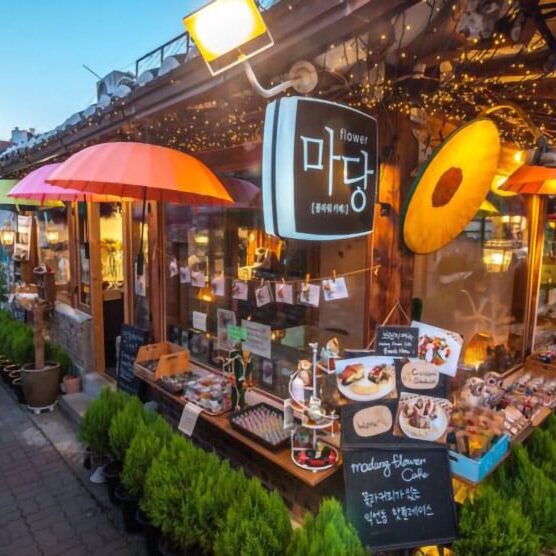
19 Best Things to Do in Seoul Right Now- An Insider’s Guide
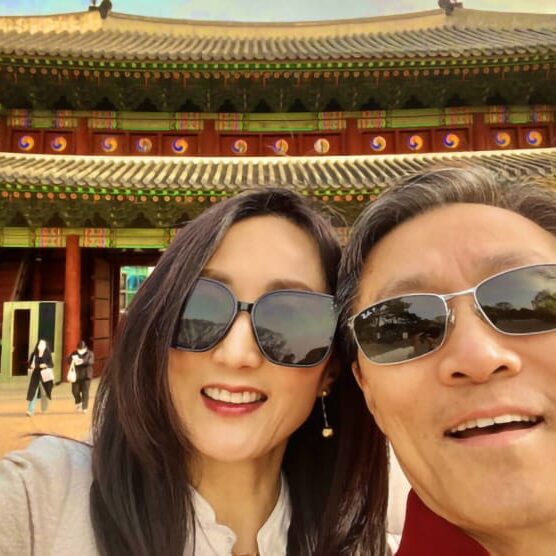
23 Reasons Seoul Will Be Your New Favorite City
Latest travel updates.
- Vaccination is NOT a requirement for entry into Korea.
- There is no requirement on the passport’s remainder validity for entry. You may travel to Korea as long as your passport remains valid throughout your stay in Korea.
- From April 1st, 2023, travelers from the USA, Canada, and 21 other countries no longer need to apply for the K-ETA to travel to Korea. This will run at least until 31st December, 2024 and is designed to make it easier to travel to Korea.

Planning Your Trip To Korea
Check the Korean Embassy for any possible travel restrictions.
- If you’re not sure where to stay, check out our guide to the best hotels in Seoul . You can find our recommendations for the best luxury, mid-range, and budget hotels in Seoul, as well as long-term apartments that you’ll love.
- For the best flight deals to South Korea, Best of Korea recommends Skyscanner and Expedia . You can find the cheapest prices and most convenient flights and buy the one that suits you best.
- For the best hotel prices in Seoul, Best of Korea recommends Klook 0r Agoda – they cover most hotels in Seoul and the rest of Korea and offer great prices without hidden fees.
- Before you travel to Korea, it’s a good idea to order an eSim card, regular sim card or portable WiFi router to collect at the airport so you’re connected as soon as you arrive. You can change a small bit of money before you travel, but you can also use the airport ATM to get some Korean won.
- There are large differences in exchange rates so you will need to do some comparing before you exchange a large sum of money. You can exchange USD to KRW easily at banks or money exchange shops in all major tourist areas like central Seoul (Myeongdong and Namdaemun are good places but the Coex Center also offers money exchange. You can also negotiate the exchange rate with the vendor if you think it is too high.
- You can withdraw cash from bank ATMs. Alternatively, use a pre-paid travel card like the one offered by Wise , which allows ATM withdrawals and payments and works perfectly in Korea.
- Don’t forget to bring a travel adapter for your electronics and leave plenty of extra space in your suitcase for the many Korean souvenirs and goodies you’ll buy on your tri
Do US Citizens Need A Tourist Visa?
No, travelers from the USA don’t need a tourist visa to enter South Korea. You can visit for up to 90 days visa-free.
Current COVID-19 Rules In Korea
Most COVID-19 rules in Korea have been dropped and now there are only 2 main rules to be aware of. First, face masks are mandatory when visiting medical facilities (hospitals). There is no longer a 7-day mandatory quarantine for people in South Korea. If you’re infected with COVID, the Korean government recommends a 5 day self-quarantine, but it’s not enforced. Travelers to Korea should follow the current restrictions or may be liable for fines or deportation.
Korean Tourism Support Hotline
If you have any concerns or problems when traveling in Korea, you can call 1330 . This is a dedicated tourism support hotline where trained specialists provide tourist assistance and is available in Korean, English, Japanese, Chinese, Russian, Vietnamese, Thai, and Malay.
US Government Travel Advisory For Korea
The U.S. Department of State currently has a level 1 travel advisory (Exercise Normal Precautions) for the Republic of Korea (ROK). Find out more about current travel advisories for South Korea on the Department of State website.

6 Best Destinations In Korea
South Korea is truly a country of contrasts. From the bustling, modern city of Seoul , with cutting-edge designer buildings, VR labs, and AI robots, to peaceful UNESCO World Heritage cities like Jeonju and Gyeongju , there are many unique places to explore.
There’s nothing worse than coming back from vacation and hearing about incredible places you missed that you wished you’d seen, such as a beautiful Buddhist temple by the beach (Haedong Yonggungsa Temple) or a leafy island getaway where deer and rabbits roam freely (Nami Island).
Here are 6 of the best destinations in Korea that you absolutely must visit, as well as some of the sights you’ll want to check out while you’re there. We’ll be bringing you lots more detailed destination guides in the future, so be sure to visit again soon.
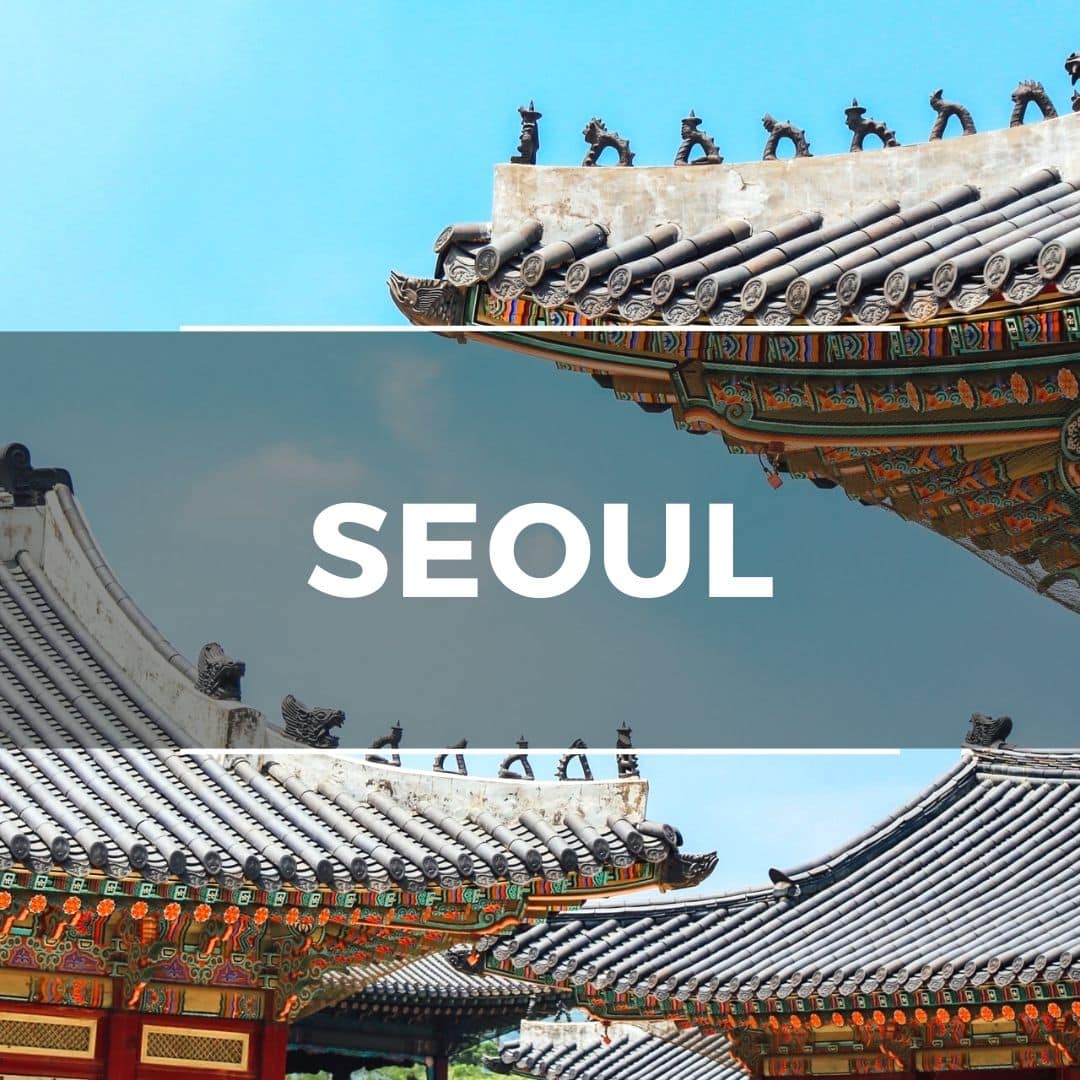
Korea’s Busy Capital
Seoul is Korea’s largest city, capital, and first, stop for most travelers to Korea. There are many beautiful places in Seoul , including landmarks, relics from ancient kingdoms, towering skyscrapers, Buddhist temples, Michelin-starred restaurants, and some of the best street food you’ll find in the world. If you see only one city in Korea, you should definitely visit Seoul.
You’ll never be bored in Seoul. Whether you’re traveling as a family, as a couple, or by yourself, there’s so much to do. Be sure to plan lots of time to check out Korea’s capital.
This Full Day Tour of Seoul will show you some of the hottest spots in the city, while this Customized Private Tour of Seoul will allow you to choose where to go.
Here are 10 of the best Seoul attractions:
- Gyeongbokgung Palace
- Bukchon Hanok Village
- Starfield COEX Mall
- Bukhansan National Park
- Myeongdong Street Markets
- Lotte World Tower
- Secret Garden (Changdeokgung Palace)
- Dongdaemun Design Plaza
- N Seoul Tower
- Yeouido Hangang Park

Korea’s Second City
Busan, Korea’s second city, is a thriving port city far away from Seoul both physically and culturally. This popular summer destination features some of Korea’s most popular beaches and bars. Explore Busan and you’ll find sprawling markets, fresh seafood, film festivals, the world’s largest shopping mall, coastal temples, and lots more.
Busan is a city with some very photogenic sights. See the sunrise on the beach, hike around leafy coastal streets on the side of cliffs, and marvel at the wide range of (living!) seafood in the markets.
This Full Day Tour of Busan will show you the best beaches, markets, and local sights, while this Customized Private Tour of Busan will allow you to choose where to go.
Here are 10 of the best Busan attractions:
- Haeundae Beach
- Gwangbokdong Food Street
- Haedong Yonggungsa Temple
- Huinnyeoul Culture Village
- Gamcheon Culture Village
- Oryukdo Sky Walk
- Lotte World Busan
- Jagalchi Fish Market
- BIFF Square & Centum City Mall
- Taejongdae Resort Park
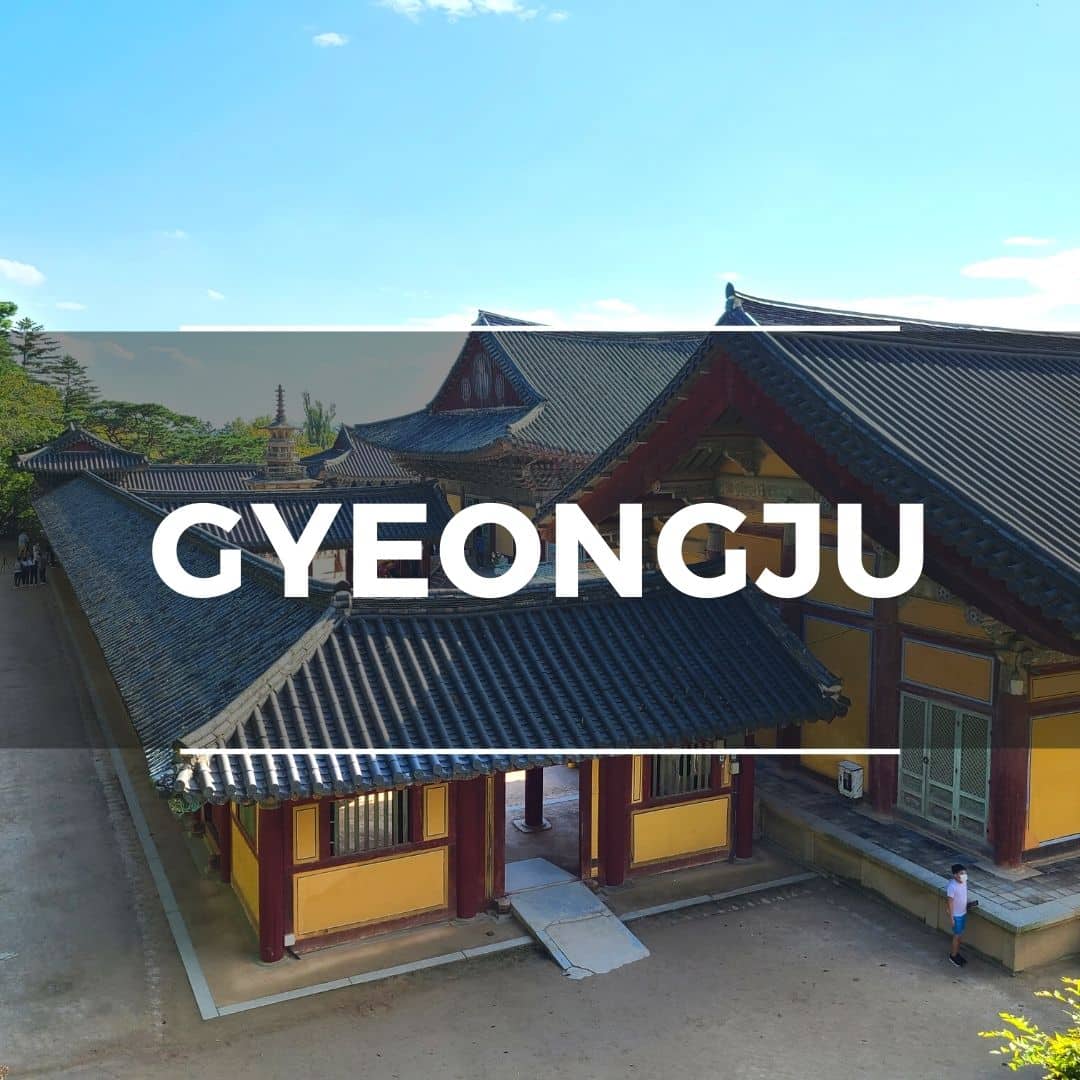
UNESCO City
Gyeongju is the former capital of the Silla Kingdom, part of the Three Kingdoms part of Korean history. These days, Gyeongju is an open air museum housing Korea’s finest history and monument. This UNESCO World Heritage City is a must-see for those who want to learn more about Korea’s deep cultural past.
Gyeongju is packed with temples, palaces, historical sights, and monuments. But it’s not just the history that draws the crowds, the city is an area of natural beauty, lined with cherry blossoms and shadowed by misty mountains.
This Full Day Tour of Gyeongju from Busan will take you around Korea’s open-air museum city, showing the top UNESCO sites along the way, while this Customized Private Tour of Gyeongju will allow you to choose where to go.
Here are 10 of the best Gyeongju attractions:
- Gyeongju Historic Area
- Bomun Lake Tourist Complex
- Bulguksa Temple & Seokguram Shrine
- Donggung Palace & Wolji Pond
- Yangdong Folk Village
- Cheomseongdae Astronomical Observatory
- Gyeongju National Museum
- Gyochon Traditional Hanok Village
- Woljeonggyo Bridge
- Gyeongju National Park
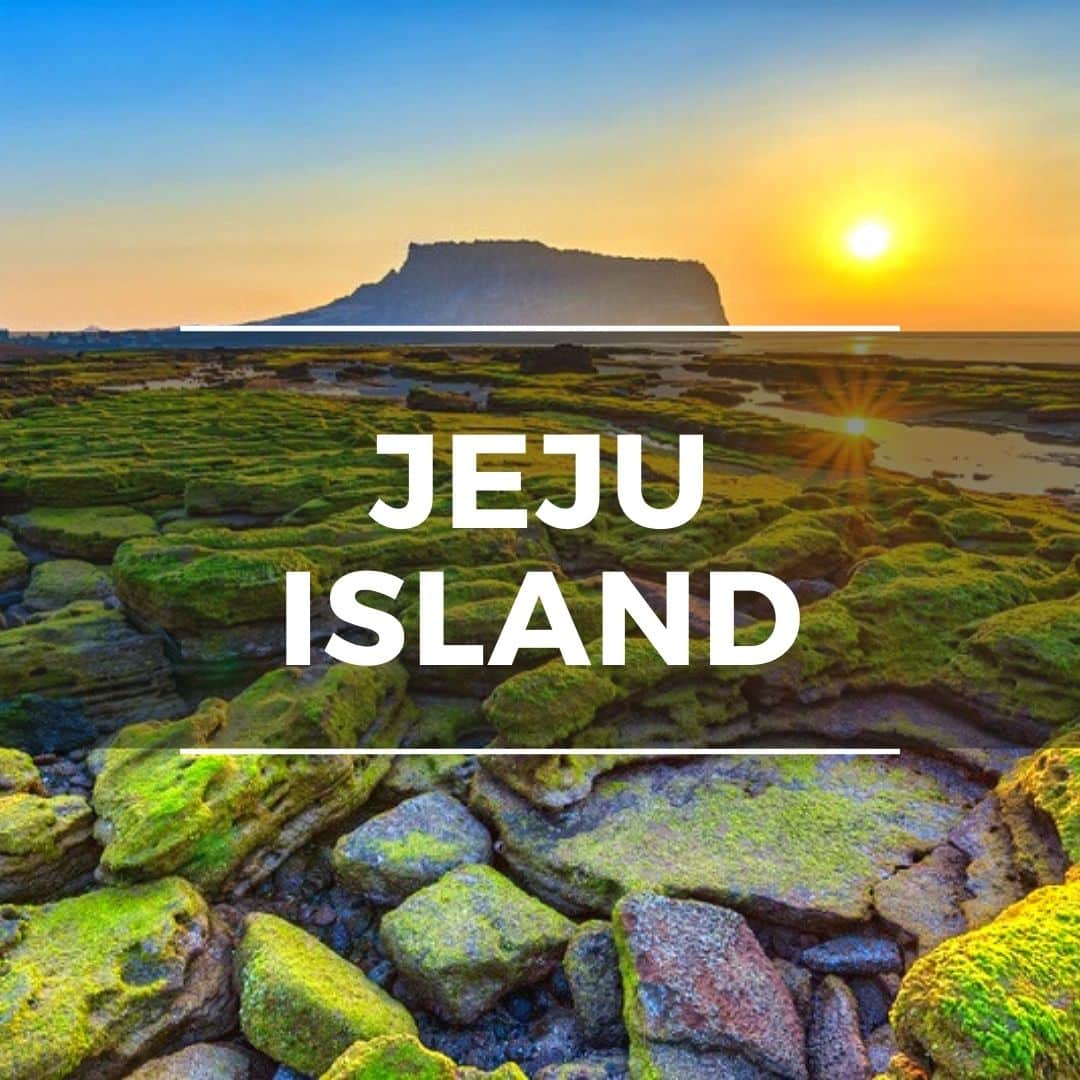
Natural Wonder
Jeju Island is Korea’s semi-tropical island that’s a popular vacation destination for locals and tourists alike. This area of outstanding natural beauty offers up rugged coastal walks, sandy beaches, green hills, and a volcano to hike up for those who enjoy a challenge. Culture and cafe lovers will also find Jeju Island a charm.
From snorkelling under the sea, to hiking above the clouds, sampling Jeju’s black pork BBQ, and drinking local green tea, there’s so many exciting activities, sights, tastes, and experiences waiting for you on Jeju Island.
This Full Day Tour of Jeju Island will show you some of the most incredible UNESCO World Heritage sites on Jeju’s East Coast, while this Customized Private Tour of Jeju Island will allow you to choose where to go.
Here are 10 of the best Jeju Island attractions:
- Seongsan Ilchulbong Sunrise Peak
- Jusangjeolli Hexagonal Lava Cliff
- Hallasan Mountain (Volcano)
- Hamdeok Beach
- Jeju Folk Village
- Hyeopjae & Geumneung Beach Areas
- Cheonjeyeon & Jeongbang Waterfalls
- Udo Traditional Island
- Yakcheonnsa Coastal Buddhist Temple
- O’Sulloc Green Tea Fields
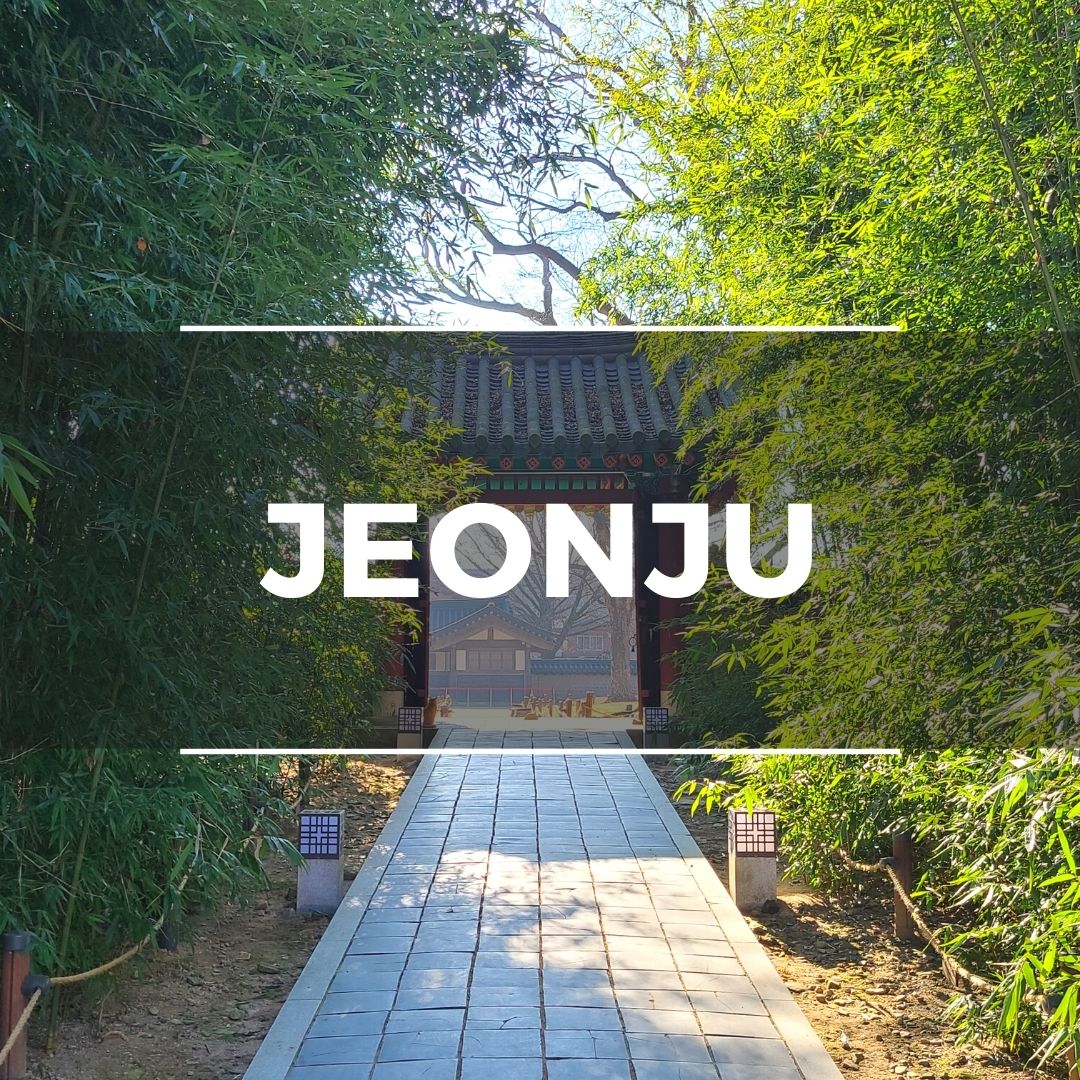
Traditional Korea
Jeonju is famous for its historical and cultural sights, including the sprawling Jeonju Hanok Village, packed with more than 700 traditional hanok houses. Jeonju’s many impressive sights are close to each other and perfect for a day trip from Seoul or Busan. You can even stay overnight in one of the traditional houses.
Jeonju is a tourist hotspot so there are plenty of things to keep travelers entertained and places to experience traditional Korean food and drinks. Be sure to check out the Jeonju bibimbap, one of Korea’s national dishes. Rent hanbok (traditional clothes), take lots of pictures, and see the sights.
This Full Day Tour of Jeonju will show you around the beautiful hanok houses and traditional Korean restaurants, while this 2-Day Tour of Jeonju includes an overnight stay in a hanok and lots of delicious Korean meals.
Here are 10 of the best Jeonju attractions:
- Jeonju Hanok Village
- Gyeonggijeon Shrine & Portrait Museum
- Jeongdon Catholic Church
- Jeonju Hyanggyo Confucian School
- Nambu Traditional Market
- Jaman Mural Village
- Omokdae Viewpoint
- Deokjin Park
- Hanbyeokdang Pavilion
- Taiji-ro & Hyangoyo-gil Shopping Streets
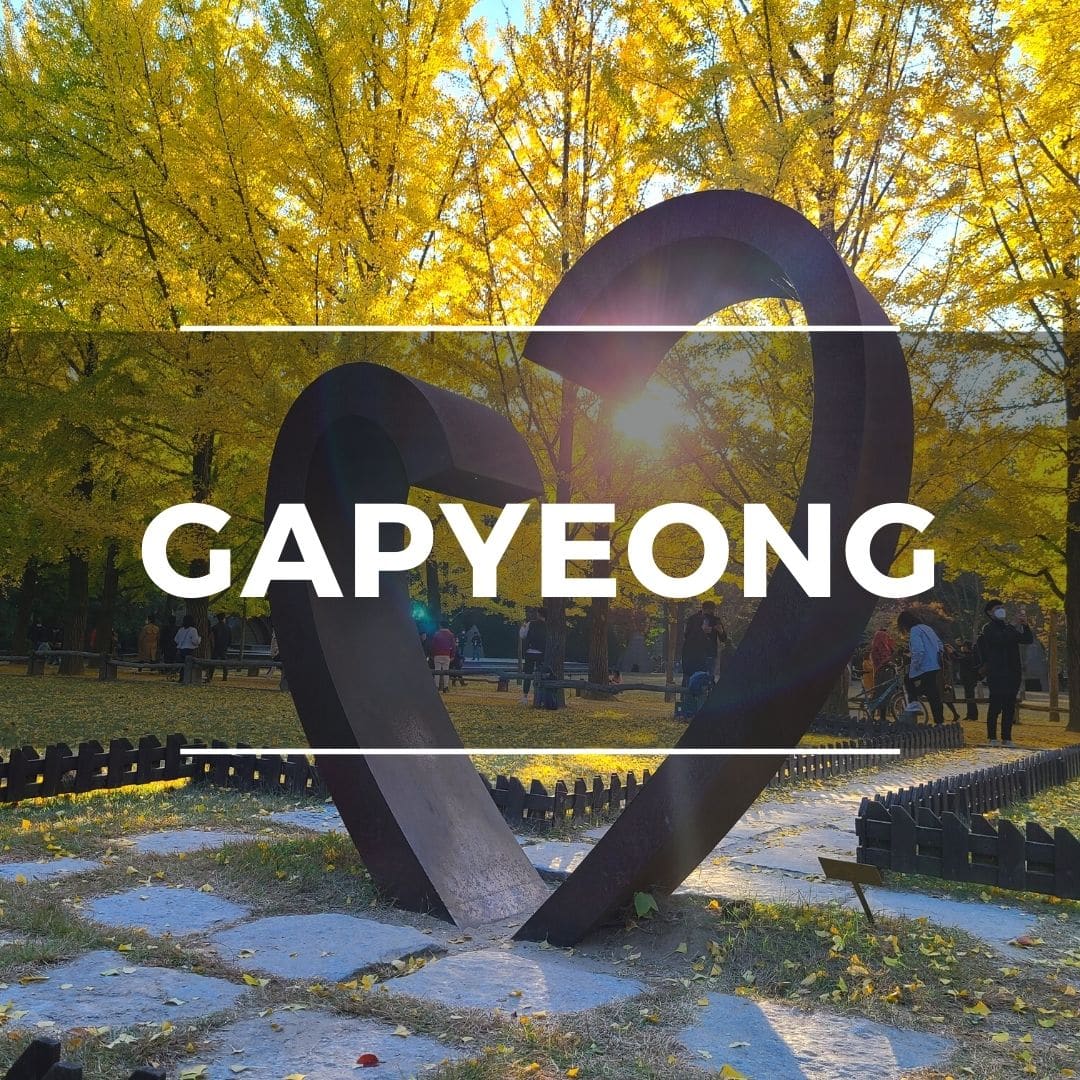
Rural Attractions
Gapyeong County is an area just outside of Seoul that’s home to several interesting attractions celebrating Korean and foreign culture. The lush green hills and blue rivers of Gapyeong make it a great place to immerse in Korean nature.
You’ll find some of the hottest day trip locations here. Explore Gapyeong County on a day trip from Seoul. You can see romantic tree-lined streets and cafes on Nami Island, explore one of Korea’s most beautiful gardens, take a trip to Petite France, and enjoy cycling through the hills on an abandoned railway track.
This Full Day Tour of Gapyeong will show you around Nami Island, Garden of Morning Calm, and the Rail Bike Park.
Here are 10 of the best Gapyeong attractions:
- Nami Island
- Garden of Morning Calm
- Petite France
- Ganchon Rail Bike Park
- Edelweiss Swiss Village
- Cheongpyeong Lake
- Jarasum Island
- Kalbongsan Recreational Forest
- Gapyeong Sledding Hills
- Nami Island Zip Line

There are loads of locations to visit in Korea that make for a perfect day trip from Seoul. Hop on a coach, train, or tour bus in the morning and explore one or more of these unique destinations.
Here are 10 of the best day trips from Seoul to discover on your next journey to Korea:
- DMZ (North Korean Border)
- Suwon Hwaseong Fortress
- Everland Theme Park
- Jeonju Historic City
- Seoraksan National Park
- Korean Folk Village
- Alpaca World
- Gwangmyeong Cave
Most travelers to Korea arrive at Incheon Airport and then travel into Seoul (it’s only 40 minutes away) to begin their journey. Seoul is certainly an incredible place to start traveling, but it definitely shouldn’t be your only destination. Korea has a lot to offer, including a lot of seasonal activities and events that you should take into consideration.
Spring and fall are the best seasons to visit Korea and during these times the traditional cities like Gyeongju and Jeonju look amazing. They’re covered with cherry blossoms or fall foliage and this creates some postcard-like scenes. Gapyeong area is packed full of natural sights to enjoy, so definitely check out these areas.
If you’re visiting during summer, head towards the coastal areas, including the north-east coastal towns of Gangneung & Sokcho, or the south-east coastal areas of Busan and the nearby islands, such as Geoje, Tongyeong, and Yeosu. You’ll find lots of winter activities to enjoy in these areas.
Winter is cold and dry and, ironically, a great time to visit Jeju Island. This semi-tropical island is warmer than the mainland, but still gets snow on the mighty Hallasan Mountain. You can sit on a sunny beach one day and then hike knee-deep in snow the next. Jeju is also famous for its citrus, with thousands of tangerine trees dropping their juicy fruits in early winter.

Where To Stay In Seoul
South Korea is truly a country of contrasts. From the bustling, modern city of Seoul , with cutting-edge designer buildings, VR labs, and AI robots, to peaceful UNESCO World Heritage cities like Jeonju and Gyeongju , there are many unique places to explore. If you’ve decided on Seoul, here are some of the best hotels that are well located and highly reviewed.
Choosing the best destinations to visit in Korea can be a challenge, especially if you don’t know what there is to see. You might not have heard of some of these destinations, which is not surprising. Korea is a country of undiscovered wonders that are waiting to be found.
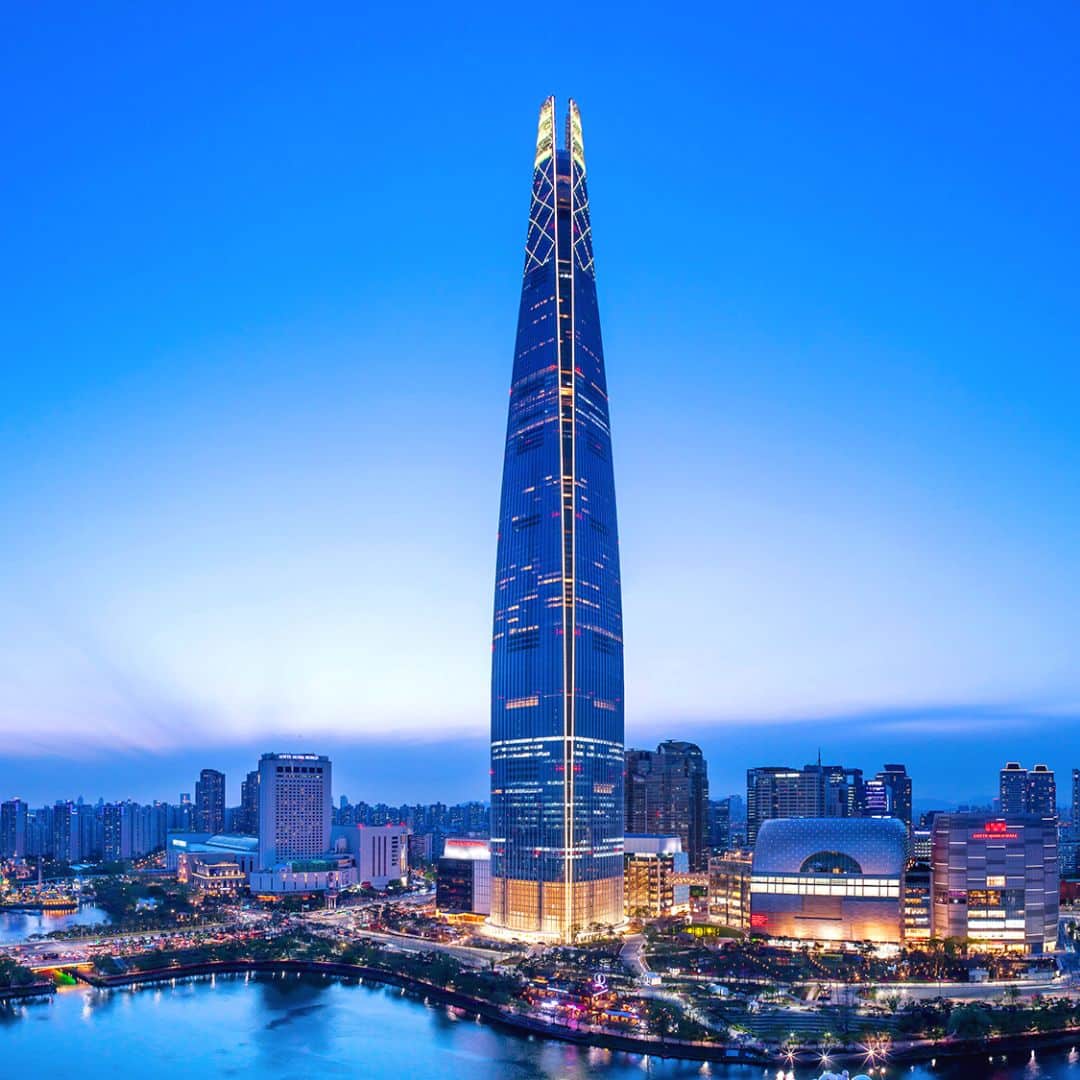
If you want the best Seoul has to offer, these luxury hotels are for you. Located in Seoul’s glitziest neighborhoods, these hotels are within walking distance of Michelin-starred restaurants, chic boutiques, galleries, museums, and the finest shopping experiences available.
Expect nothing but the best in terms of service and style at these luxury hotels. Silky soft sheets, immaculate rooms with the finest fixtures and fittings, and true 5-star service from the hotel staff. These hotels have sports, dining, and entertainment facilities to make you comfortable during your stay.
Airport transfers are available with these hotels, making your journey into and out of Seoul a breeze. Located in popular upmarket districts in Seoul, these neighborhoods have lots of local charm for you to discover, as well as allow easy access to other parts of the city with excellent transport options nearby.
Not only are these beautiful, comfortable hotels inside, but they are also located in some of the most iconic buildings or districts and provide amazing views over some of Seoul’s most interesting districts. The view from the first hotel is worth the cost alone.
Recommended Luxury Hotels In Seoul
Here are 3 of the best luxury hotels in Seoul that we recommend for an unforgettable stay in Korea’s capital:
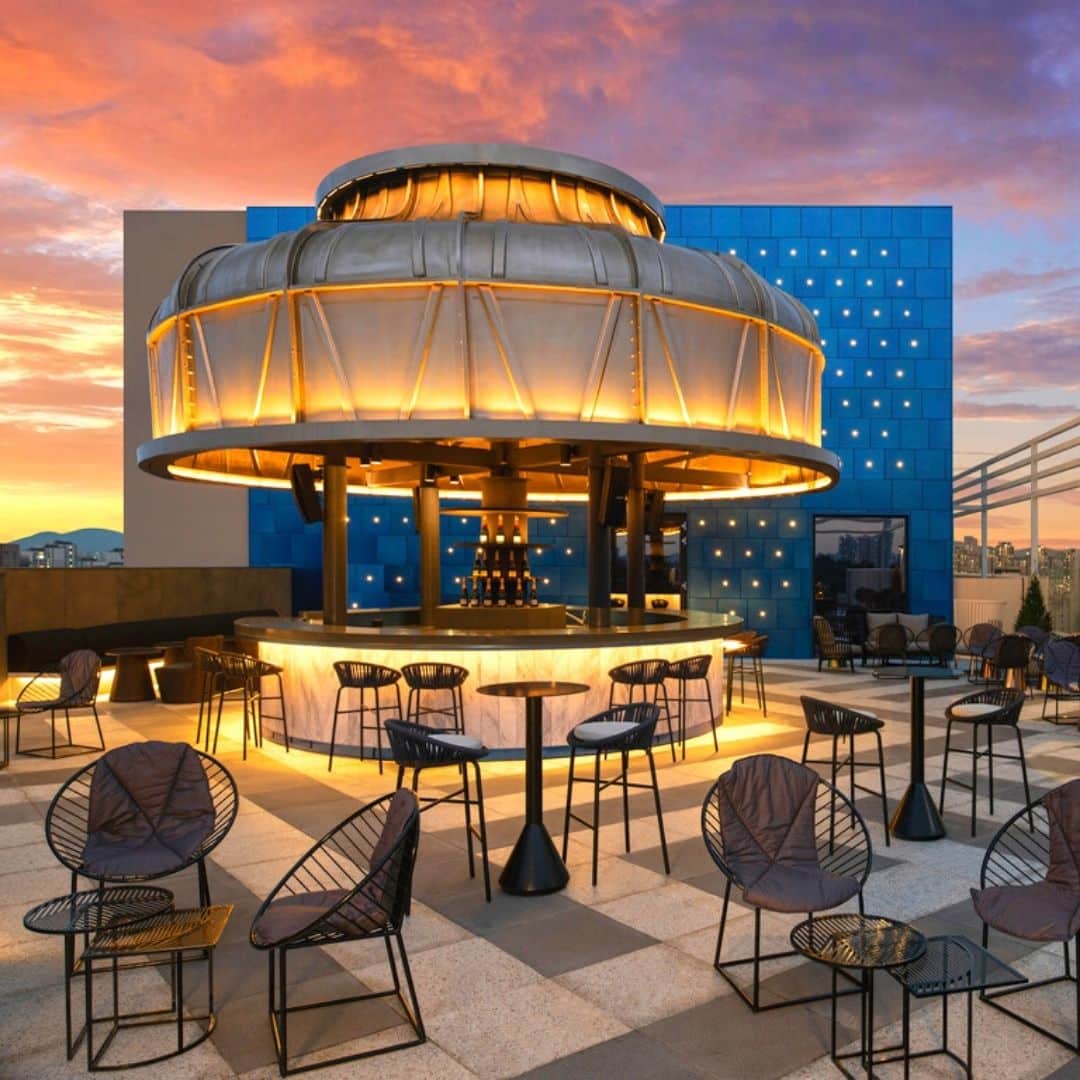
Families. couples and other travelers that want to experience the best of Seoul without breaking the bank can sleep easy with these mid-range hotel recommendations in some of Seoul’s trendy, vibrant districts, including Hongdae, Gangnam, and Myeongdong.
Encounter stylish accommodation in Seoul’s Hongdae districts, which is full of street culture and artistic scenes from the district’s eponymous Hongik University – one of Korea’s leading art centers.
Fashion lovers and shoppers will find lots to love in downtown Gangnam, with its wide streets and glassy storefronts bracketing narrow side streets and hidden delicacies.
Myeongdong is famous for its budget and mid-range accommodation options, including several hotels by the famous Lotte chain – one of Korea’s best mid-range brands.
Whichever mid-range hotel you choose in Seoul, you can be sure you’ll have fantastic city views, convenient subway access, and lots of unique cultural sights, sounds, and tastes to experience.
Recommended Mid-Range Hotels In Seoul
Here are 3 of the best mid-range hotels in Seoul that we recommend for an comfortable stay in Korea’s capital:
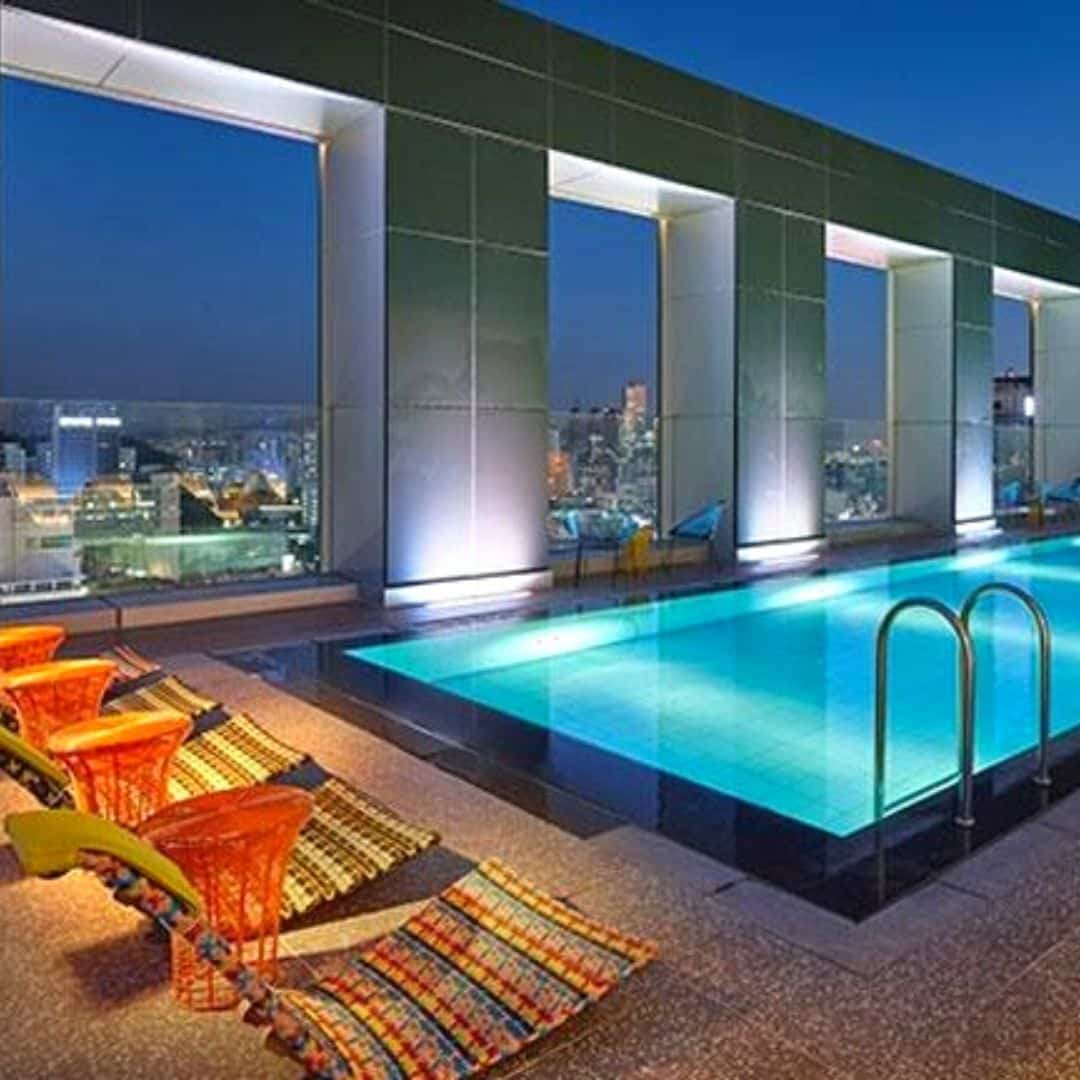
Seoul has a wealth of budget accommodation options that will help make your money go further. These hotels are all around $100 or less but offer the comfort and convenience that you’d expect to find in a mid-range hotel. One even has a beautiful rooftop pool.
Although these hotels are cheaper, don’t lower your expectations. You’ll always find great service in Korea. Save on sleeping to spend more on shopping, souvenirs, sights, and all the other fun things there are to do in Seoul.
These budget hotels in Seoul are also in great locations for shopping, enjoying local culture, and seeing the real side of Seoul and Korea. Hongdae offers bargain hunters the chance to get boutique fashion at market prices, Gangnam has plenty of cafes and cheap eats tucked away off the main avenues, and Myeongdong is a budget traveler’s paradise full of $1 street food and bargain souvenirs.
You won’t be disappointed with a night at any of these hotels. If you want to make your budget go further so you can spend more on some of the incredible day trips Seoul has to offer, definitely book a night at one of these hotels.
Recommended Budget Hotels In Seoul
Here are 3 of the best budget hotels in Seoul that we recommend for an affordable stay in Korea’s capital:

Korean Travel Tips
Korea is a unique country with a written language that looks nothing like English, fascinating etiquette rules , and an always busy lifestyle. Travelers may be lost trying to do even the simplest things.
These travel tips include the best options for staying connected, how to use public transportation easily and cheaply, great discount cards that will save you money as you travel, where to exchange money, and how to learn some basic Korean phrases for when you travel.
These essential Korean travel tips have been crafted by experienced travelers who love to save time and money. Only the best quality services and products are recommended here.
Here are our Korea travel essentials that’ll help you get around more easily, save you money, and let you get the most out of your trip.
Plan ahead now and you’ll have fewer troubles on your travels, giving you more time to enjoy your time in Korea.
If you’re traveling to Korea, you’re almost certainly going to want to get access to the internet to help you navigate, translate Korean, or even book tickets to attractions. Korea has one of the world’s best mobile internet and the prices are very reasonable. 5G mobile internet services are available across the country and Korea was one of the first to get the super-fast service. You won’t have problems connecting with a sim card or WiFi router when you travel.
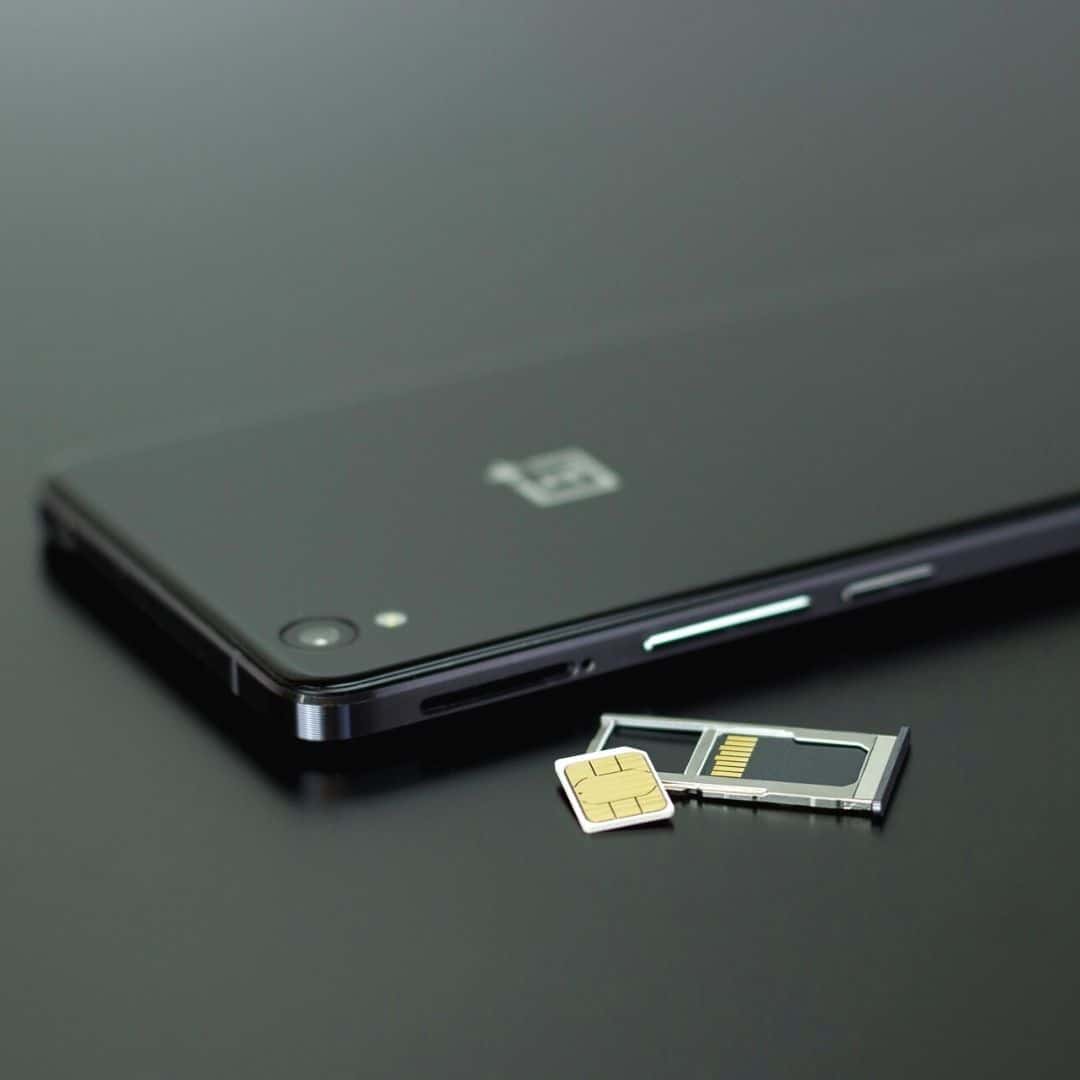
Sim Cards & Data Plans
A Korean sim card is a great way to get access to all your usual cellphone services when you travel to Korea. Sim cards come with data-only packages, or data and phone services combined.
Buying a Korean sim card will give you access to a Korean phone number, which is useful when using Korean apps. If you want to order food online in Korea, you need to have a Korean phone number to complete the order.
Korean Sim Card Costs
Prices start at W5,900 ($5) for a 1-day sim. You can also get 10-day sim cards (W34,700/$28) and 30-day sim cards (64,400/$52). These all come with unlimited data, domestic calls, and texts.
You can purchase a Korean Sim Card From Klook and collect it at the airport. This is a very convenient option as you can use it immediately to help navigate and check in back home.

Portable WiFi Routers
A Korean portable WiFi router will give you access to mobile internet throughout Korea by connecting to WiFi hotspots run by the major phone companies in Korea and comes with great coverage.
The major benefits of a portable WiFi router include a lower cost than a Korean sim card and also the ability to connect up to 3 devices to 1 router. That means that families and groups will be able to share the service.
Korean Portable WiFi Router Costs
The cost of a Korean portable pocket WiFi router is W3,200 ($2.60) per day. You can rent the WiFi router for as many days as you require and pay in advance and pay any excess days when you return it.
You can also purchase a Korean Portable WiFi Router From Klook and collect it at the airport. You can book online before you travel so that it’s guaranteed to be waiting for you.
Should I Get A Sim Card Or WiFi Router In Korea?
Both a sim card and WiFi router are great options for travelers to Korea and will almost guarantee a great reception for mobile internet. The choice between whether you should get a sim card or WiFi router in Korea really comes down to the costs involved and if you need a Korean phone number.
WiFi routers are cheaper and allow you to connect 3 devices, so they’re perfect for families. However, a sim card gives you a Korean phone number, which means you can call people and also register for Korean apps which require a phone number.
Check out our detailed article about the Best Sim Card & Portable WiFi options for traveling to Korea.
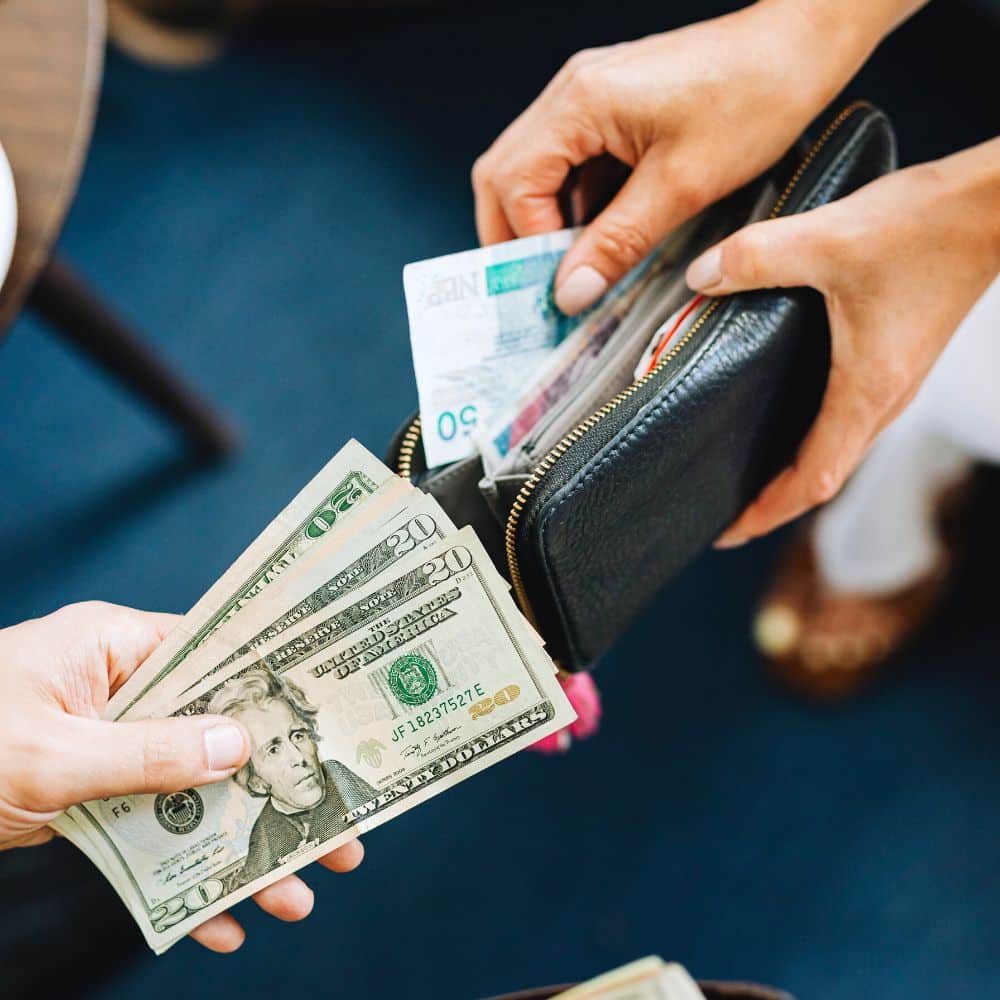
Korea is a safe, modern country and one that has pushed hard for the mass adoption of cards. Almost every location that deals with money is required to accept card payments. This is great news for travelers to Korea as you can use a card to pay for meals out, entrance tickets, trains, and lots more.
Cash is still needed for some things, such as topping up transportation cards like the T-Money Card (more on that soon) and for paying for small things like street food. Please note, as Korea doesn’t have a tipping culture, you don’t need cash for leaving a tip. In fact, if you try to leave a cash tip, it’ll be returned to you in most places.
Read on to find the best tips to avoid getting ripped off when exchanging money and how to pay the lowest fees when you use a card to pay in Korea. Be a smart traveler and save more money for shopping and souvenirs.
Korean Money Exchange Options
Once you arrive in Korea, there are several options for exchanging money. First, you can exchange money at a money changer in tourist areas such as Myeongdong. These money changers used to have the best rates in Seoul.
However, a better option these days is to use the currency exchange machines from WOW Exchange. These machines are located all over Seoul’s most popular tourist spots, stations, and hotels. They allow you to exchange foreign cash directly to Korean won, with better rates than at the airport. You can also use these machines to claim a tax refund for your shopping before heading to the airport. Both options require a passport.
Should I Change Money At The Airport?
Exchanging money at the airport is easy and convenient as you can instantly get cash to use for shopping, transportation, and general use. However, the exchange rate at the airport is usually much worse than you’ll find in other places in Korea, as mentioned previously. If you need cash as soon as you land, withdraw a small amount ($50) and then exchange the rest in Seoul.

Travel Money Cards For Korea
While cash is useful and familiar when traveling, a much better option is to use a travel money card (also known as a currency card). Travel money cards, such as the Wise Travel Money Card, allow you to pay for travel expenses without the need to carry cash or convert money.
A travel money card offers the convenience of using a credit card without high fees that a regular bank could charge. It also allows you to withdraw cash from an ATM without a fee (up to a limit), so you can avoid carrying any cash on the flight or using a money exchange. The exchange rate is the mid-market rate, meaning it’s better than you’ll find even at the money exchanges listed before.
Can I Use My Bank Card In Korea?
Credit cards are widely accepted in Korea. Visa and Mastercard users shouldn’t face a problem, but other cards aren’t as widely accepted. Debit cards and cash withdrawals might not work depending on the bank. Your bank may charge a fee when using it overseas, or give a bad exchange rate. Check with your bank before traveling.
The best option for travel money in Korea is to have a mixture of cash and cards, with a backup credit card just in case. Taking some USD with you is always a good option as you can find plenty of places to exchange it to Korean won and probably at a better rate than you’ll get in the US. If you want to withdraw money in Korea, look for the global ATMs in tourist areas.
Taking a travel money card will be safer, cheaper, and more convenient than relying on your own bank or credit card, too. These cards offer competitive rates and are widely accepted around the world so you can use them to visit other countries, too. If you use a travel money card and it gets lost or stolen, you can freeze the card instantly with the app and not have to worry about losing the balance on the card.
When you visit Korea, you’ll notice that most people pay for goods with a card or payment app, even for small purchases like a bottle of water. Unfortunately, the payment apps that are common in the US, such as Apple Pay or Google Pay, aren’t available in Korea. Korean apps, such as Kakao Pay, require a Korean bank account, and therefore aren’t an option for travelers.
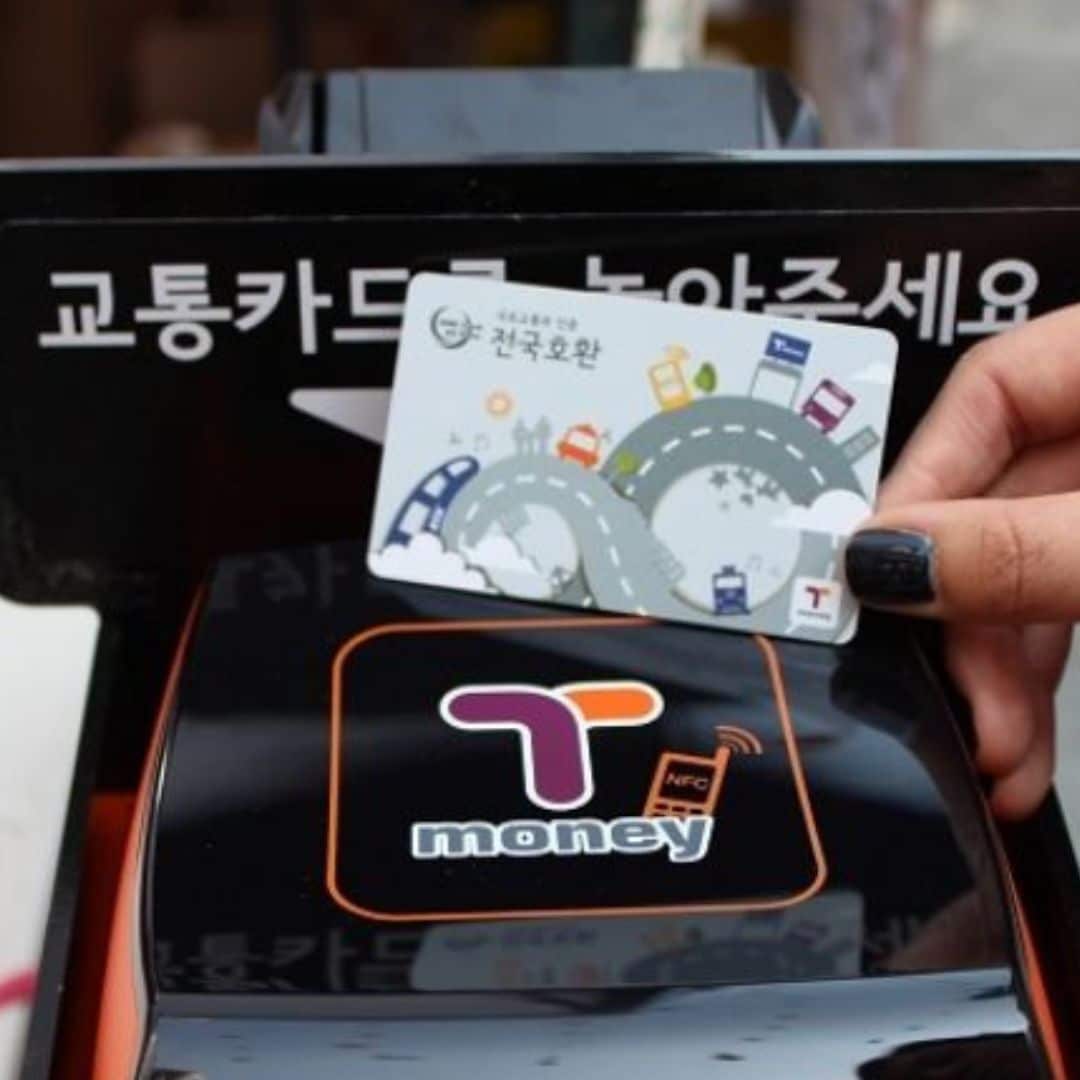
T-Money For Public Transport
The T-Money Card is an essential purchase for every traveler to Korea. The T-Money Card is a transportation card that allows contactless travel on Korea’s buses and subways. Simply buy a T-Money Card, top-up the card, then use it to travel.
Not only is this transportation card really convenient, it also saves you money. You’ll receive a discount on every bus or subway journey when you pay with the T-Money Card. These discounted fares are available in all cities across Korea, not just Seoul.
This isn’t the only use of the T-Money Card. You can also use to buy a coffee from Starbucks, get lunch in McDonald’s, shop for Korean cosmetics, and even to watch a baseball game. It’s a very useful card that can be used anywhere you see the T-Money Card.
You can get the T-Money Card in Korea from subway stations and at certain transport centers, including Seoul Station and Incheon Airport. The card costs 2,500 KRW. You can buy the card with a credit card, but to top-up the card, you need to use cash. If you buy a Discover Seoul Pass, this card includes the T-Money functions.
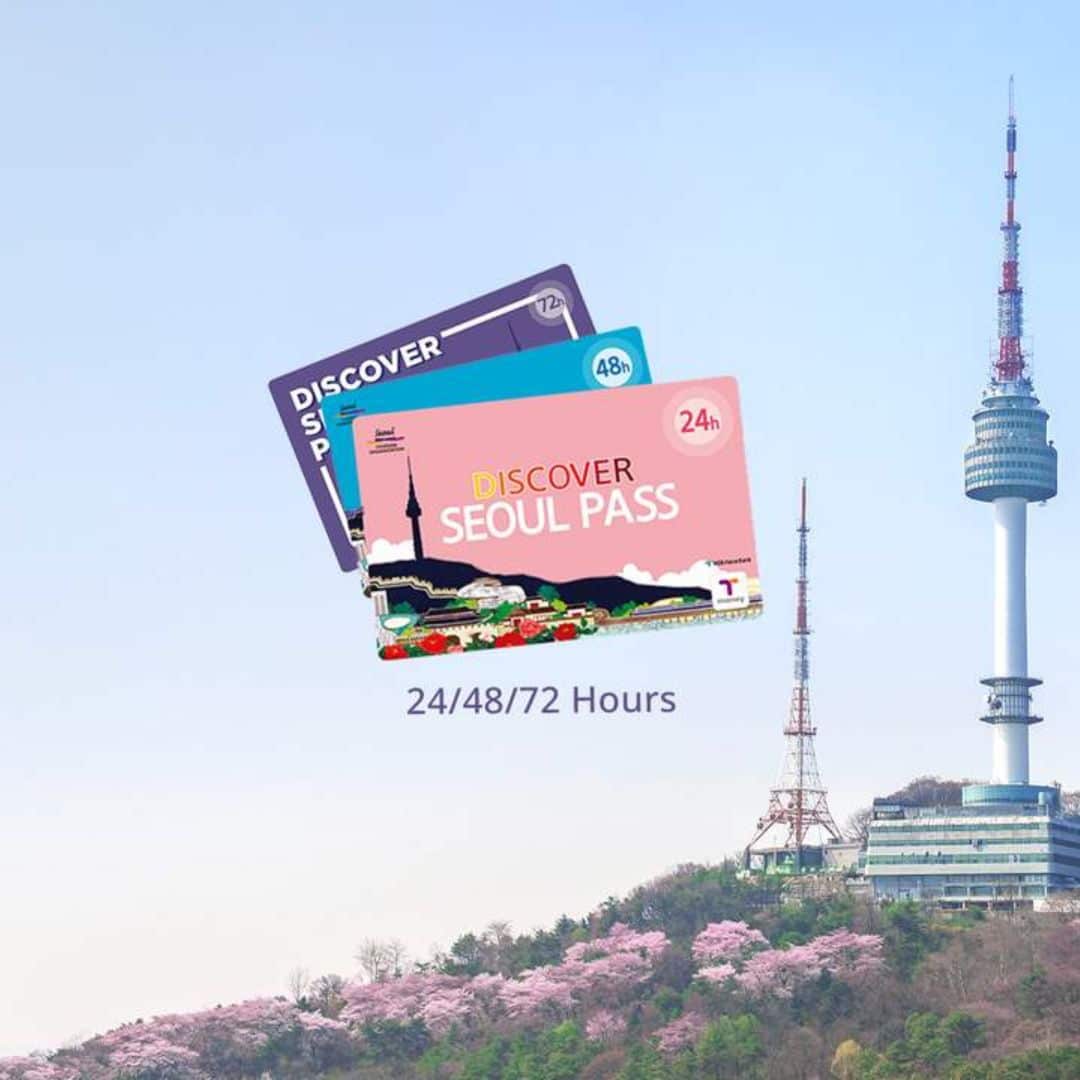
Save With The Discover Seoul Pass
Travelers to Seoul have a lot of options for incredible attractions to enjoy and experience. However, tourists, especially families, can find that the cost of these attractions quickly add up, especially when you are visiting many locations in a short time.
A great way to save money when you travel in Seoul is to buy a Discover Seoul Pass – a special card that offers you big savings on some of Seoul’s top attractions, as well as other benefits.
If you plan to visit Seoul’s Royal Palaces, N Seoul Tower, Lotte World Adventure Theme Park, the COEX Aquarium, Alive Museum, Seoul Zoo, or other premium attractions, you can gain free entry when you purchase a Discover Seoul Pass.
Not only that, you can also get a free river cruise, free hanbok rental, free ride on the Airport Express from Incheon Airport to Seoul, free City Tour Bus Ride, free T-Money Card and lots more.
The Discover Seoul Pass is valid for 24 | 48 | 72 hours and is valid from the moment you first use it until that many hours later.

Things To See & Do In Korea
If you want to build your own itinerary for South Korea, then this section of the South Korea Travel Guide will provide the building blocks you need to craft the perfect trip.
South Korea is a country packed with famous landmarks and sights, unique culture – modern & historical, family-fun activities, outdoor adventures, cozy cafe districts, and natural wonders. There’s more to do in Korea than you could imagine and it’s impossible to explore it all in one trip. Try to plan your itinerary by cities and locations. For example, plan your day in Seoul stay by district.
Here are some of the best things to see and do in South Korea, broken down into different themes so you can find things that interest you the most. The location of each of these attractions is included, too, so you can create a city by city itinerary, seeing the best South Korea has to offer.
These attractions are available all year round so whenever you go to Korea, you can enjoy them. There are plenty of things to see and do in Korea that only happen during certain seasons. Check out the Season Guide in this South Korea Travel Guide for more information about Korean festivals and seasonal events.
Here are 10 of the best Korean landmarks:
- Lotte World Tower (Seoul)
- Bukchon Hanok Village (Seoul)
- Nami Island (Gapyeong)
- Banwol ‘Purple Island’ (West Coast)
- N Seoul Tower (Seoul)
- Dongdaemun Design Plaza (Seoul)
- Seoraksan National Park (Gangwon Province)
- Hwaseong Fortress (Suwon)
- Cheonggyecheon Stream (Seoul)
- Gamcheon Cultural Village (Busan)
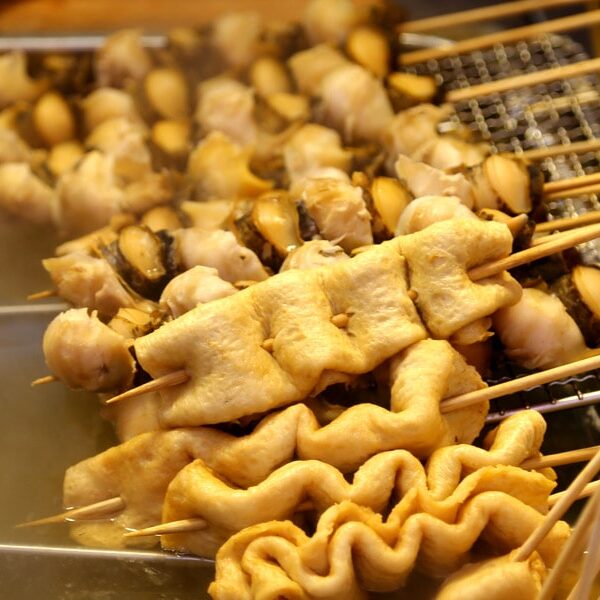
Why travel to a diverse country such as Korea and not embrace the local culture? Here are 10 of the best unique Korean experiences you can only enjoy fully in Korea. Be brave, try something new and create lasting memories of your Korean adventure.
Here are 10 of the best uniquely Korean experiences:
- Wear Traditional Korean Hanbok (Royal Palaces)
- Sing In A Korean Noraebang (Everywhere)
- Sleep In A Korean Hanok House (Hanok Villages)
- Visit The Kimchi Museum (Seoul)
- Eat Street Food (Traditional Markets)
- Experience A Korean Temple Stay (National Parks)
- Drink Makgeolli – Korean Rice Wine (Everywhere)
- Visit The World’s Most Dangerous Border – The DMZ
- Relax In A Korean Sauna (Everywhere)
- Visit A Korean Green Tea Field (Boseong, Jeju)

Here are 10 of the best Korean historic sights:
- Gyeongbokgung Palace (Seoul)
- The Secret Garden (Seoul)
- Bulguksa Temple (Gyeongju)
- Jeonju Hanok Village (Jeonju)
- Seoul Fortress Walls (Seoul)
- Haedong Yonggungsa Temple (Busan)
- Andong Hahoe Folk Village (Andong)
- Gyeongju Historic Area (Gyeongju)
- Baekje Historic Area (Gongju, Buyeo)
- Jangsaengpo Whale Museum (Ulsan)

Here are 10 of the best modern K-Culture spots:
- K-Pop Headquarters (Seoul)
- HYBE Insight (Seoul)
- COEX Artium (Seoul)
- K-Style Hub (Seoul)
- Hongdae Shopping Street (Seoul)
- Hallyu K-Star Road (Seoul)
- Asia Culture Center (Gwangju)
- Busan International Film Festival Square (Busan)
- MBC World Theme Park (Seoul)
As you’ll see, there’s just so much to see and do in Korea. You could spend a whole week in Seoul and not run out of exciting activities to do and sights to explore. Our advice is to try to avoid planning to do too many things in one day and adding in plenty of free time.
There’ll be many random things that catch your eye, such as a curious side street, or your nose, like the delicious smells from a food stall. Make sure you’ve got flexibility in your schedule to investigate these surprises and to take a rest if you need to – walking and traveling for days on end can get tiring.
Korea comes alive at night and markets and city streets are often best explored after the sun goes down. Drab concrete buildings come alive with neon signs, lanterns, and electric lights and are quite a sight to be seen. Visit popular tourist attractions such as the royal palaces and hanok villages during the morning as they’ll be less crowded.
If you plan to visit the Secret Garden in Changdeokgung Palace (you really should!), tickets are available on the day and sell out fast. Getting to these places early can guarantee you get tickets, see the sights unobstructed, and have time in the evening to soak up the night life and culture.
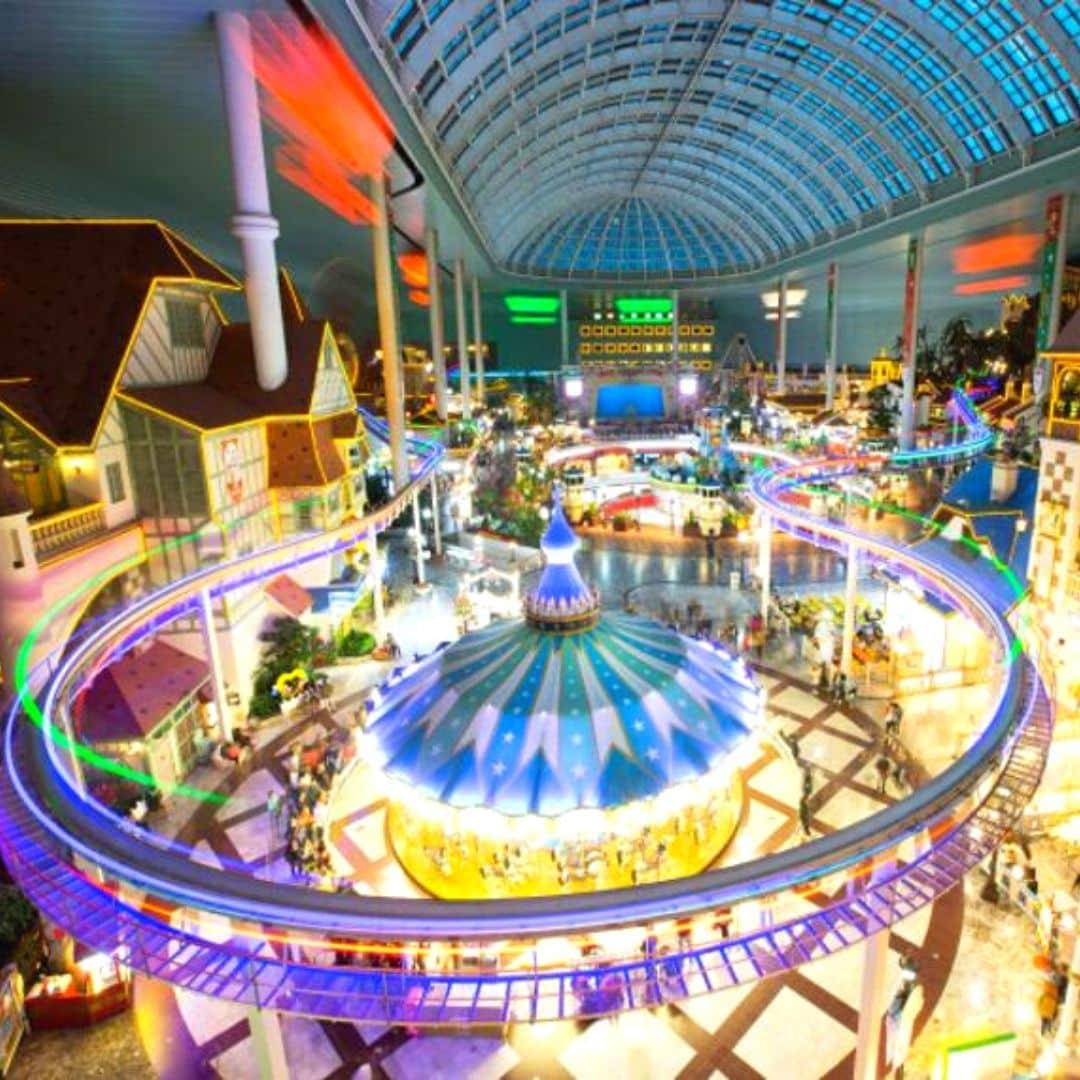
Here are the 10 best family-friendly activities in Korea:
- Nami Island & Garden of Morning Calm (Gapyeong)
- Seoul Grand Park & Zoo (Seoul)
- Lotte World Adventure (Seoul, Busan)
- Alive Museum & Dynamic Maze (Seoul)
- Seoul Children’s Grand Park (Seoul)
- Seoul Children’s Museum (Seoul)
- Everland & Caribbean Bay Theme Parks (Near Seoul)
- Sea Life Busan Aquarium
- Jeju Dinosaur Island (Jeju)
- Alpaca World (Gangwon Province)
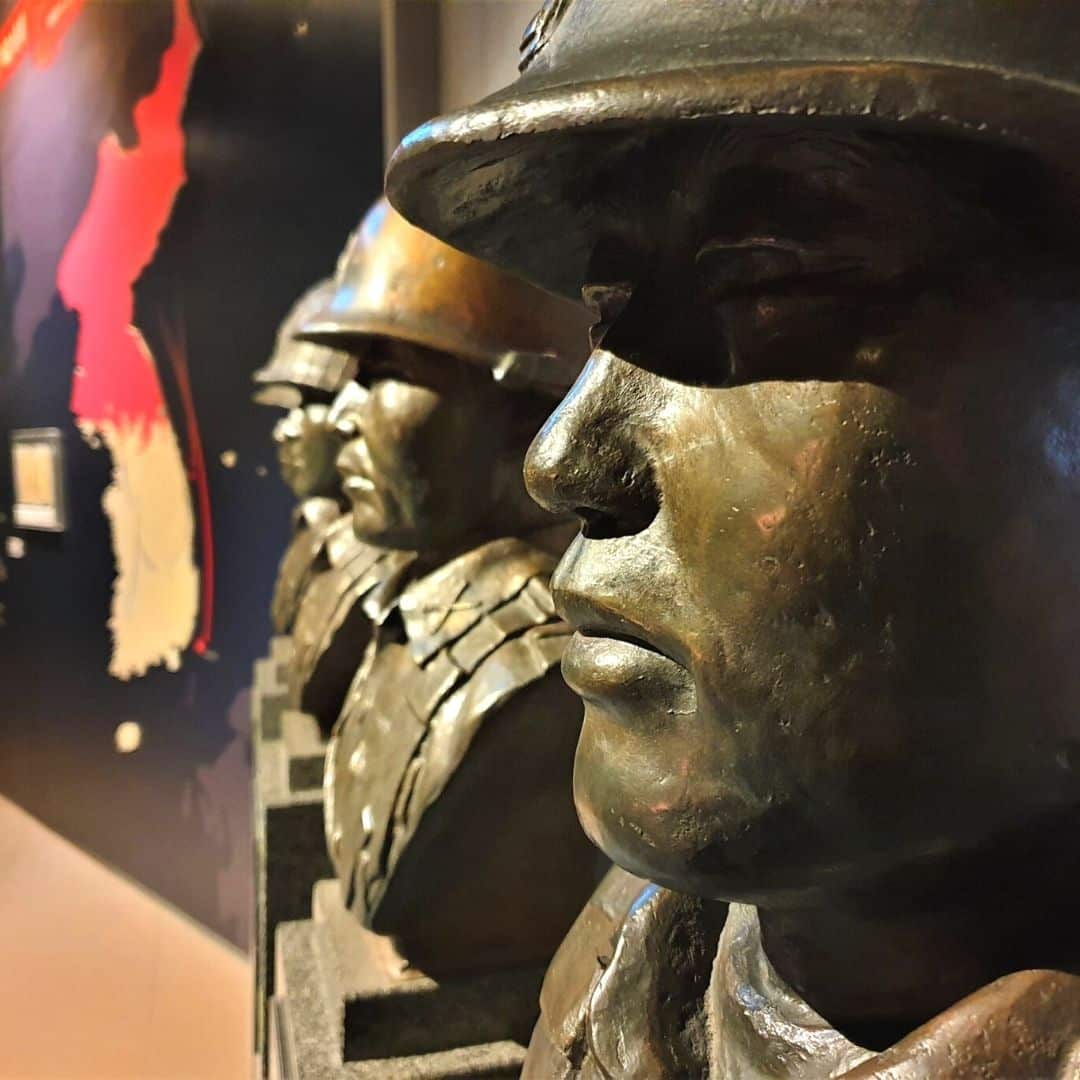
Here are the 10 best museums & galleries in Korea:
- National Museum of Korea (Seoul)
- Seoul Museum of Art (Seoul)
- Gyeongju National Museum (Gyeongju)
- War Memorial of Korea (Seoul)
- National Folk Museum of Korea (Seoul)
- National Maritime Museum (Busan)
- Seodaemun Prison History Museum (Seoul)
- Seoul Museum of History (Seoul)
- Museum Kimchikan (Seoul)
- Daegu Art Museum (Daegu)

Here are the 10 best cafe areas in Korea:
- Ikseondong Hanok Village (Seoul)
- Gyeongui Line Hongdae (Seoul)
- Samcheondong Cafe Street (Seoul)
- Jeonpo Cafe Street (Busan)
- Hwangnidan-Gil (Gyeongju)
- Gangneung Coffee Street (Gangneung)
- Sinsa-Dong / Garosugil Road (Seoul)
- Jukjeon Cafe Street (Seoul)
- Hwaseong Haenggung Area (Suwon)
- Kim Kwang Seok Gil Street (Daegu)

Here are 10 of the best Korean markets and shopping areas:
- Gwangjang Market (Seoul)
- Myeongdong Market Area (Seoul)
- Jagalchi Fish Market (Busan)
- Centum City Mall (Busan)
- IFC Mall (Seoul)
- Starfield COEX Mall (Seoul)
- Nambu Market (Jeonju)
- Seomyeong Underground Shopping Center (Busan)
- Seogwipo Maeil Olle Market (Jeju)
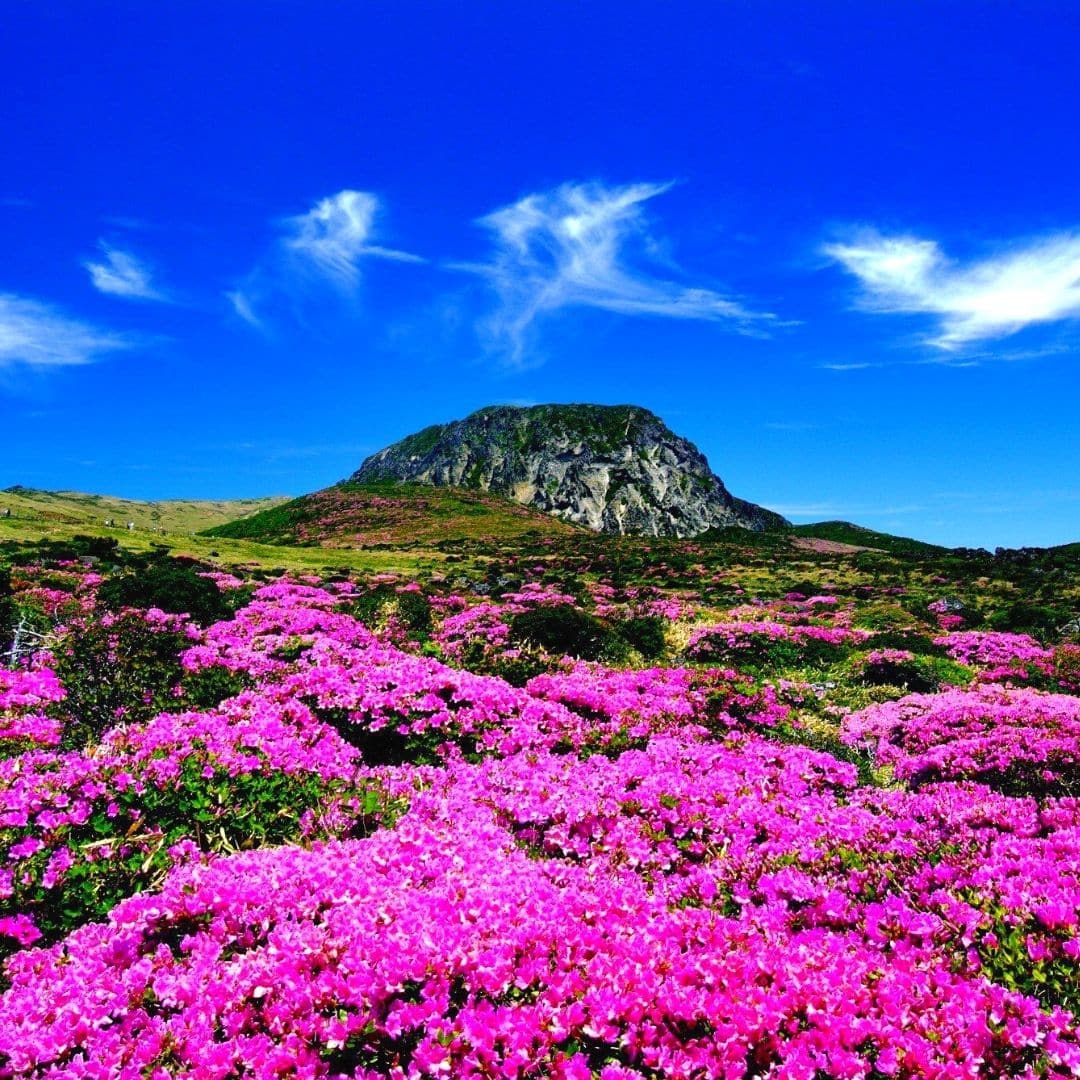
Here are 10 of the best natural sights in Korea:
- Hallasan Mountain (Jeju)
- Jirisan National Park (Jeollanam Provice)
- Seoraksan National Park (Gyeonggi Province)
- Seongsan Ilchulbong Sunrise Peak (Jeju)
- Damyang Juknokwon Bamboo Forest (Damyang)
- Boseong Green Tea Plantation (Boseong)
- Haeundae Beach (Busan)
- Udo Island (Jeju)
- Hwaamdonggul Cave (Gangwon Province)

Travel Itinerary For Korea
When planning a travel itinerary for South Korea, it’s best to think about what kind of experience you want when you travel to South Korea and build your itinerary from that. What kind of traveler are you and what do you want to take away from your Korea trip? Are you planning a trip for yourself, for your family, or as a romantic escape?
Do you want to learn about traditional Korean culture and history? Are you visiting to immerse yourself in modern Korean culture and maybe meet your idols? Are you planning to get out into Korea’s mountains to hike and join a Buddhist Temple Stay? Or are you going to eat, drink, shop, and make the most of Korea’s discounted goods? Or all of the above?
This section of this South Korea Travel Guide will offer some of the best one-week and two-week itineraries for South Korea. These itineraries are rough guides, created to help you begin planning your trip. Feel free to pick and choose the parts from them that you like to create your own travel itinerary for South Korea. We’ll be adding more great itineraries soon, be sure to check back for the latest ideas.
Classic 1 Week Itinerary For Korea: Seoul, Busan, Gyeongju
This is one of the most popular of the 1-week itineraries for South Korea and will take you to the most famous and interesting places that are top of most travelers’ South Korea bucket lists. Starting in Seoul, Korea’s capital, you’ll explore the best sights in this city before taking a day trip out to the lovely Gapyeong County to get a breath of fresh Korean countryside air.
From day 4, zip across the whole of Korea on the high-speed KTX train and explore Korea’s second city, Busan. See coastal temples, fish markets, wide beaches, and more in Busan before taking a day trip to Korea’s historic UNESCO World Heritage City, Gyeongju. On the last day, it’s time to return to Seoul to pack your bags full of the best souvenirs and snacks and say farewell in the highest part of the city.

Afternoon : Dressed in your hanbok, enjoy more traditional Seoul with a walk around the narrow streets of the Bukchon Hanok Village. Visit traditional Korean teahouses, galleries, markets, and more.
Evening : Check out the stalls and shops of artsy Insadong, contemplate Jeogyesa Temple, and take an evening stroll along the Cheonggyecheon Stream before dining in Myeongdong or the Jonggak Avenue of Youth. This Full Day Tour of Seoul will show you some of the hottest spots in the city, while this Customized Private Tour of Seoul will allow you to choose where to go.
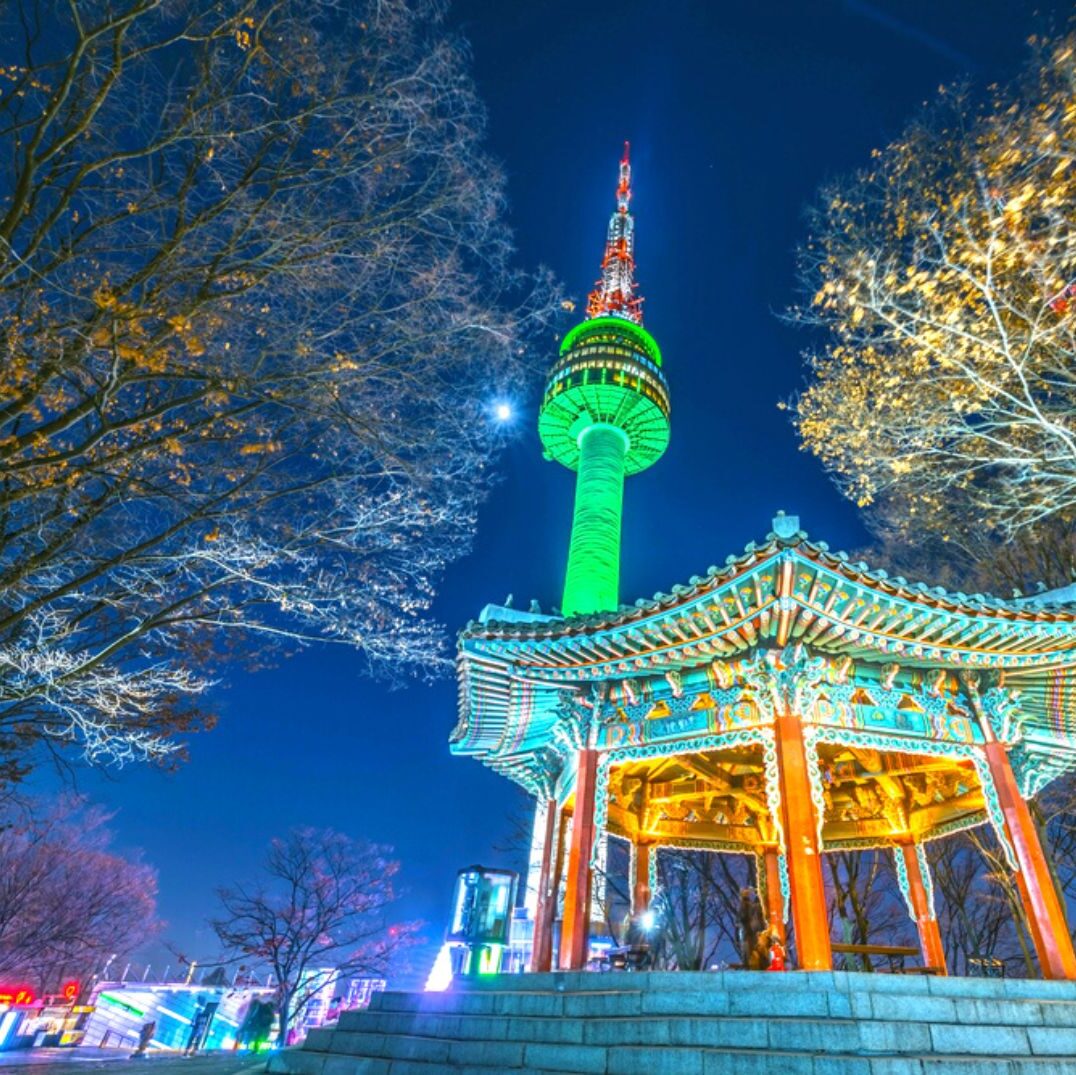
Afternoon : Head back to central Seoul and witness the bustling sights and delicious smells of Seoul’s traditional Gwangjang and Dongdaemun Markets. Try delectable Korean street foods here.
Evening : Take the Namsam Cable Car to the top of Namsan Mountain and watch the sunset from N Seoul Tower. See some of Seoul’s fortress walls before heading back down to go late-night shopping at Myeongdong Market.
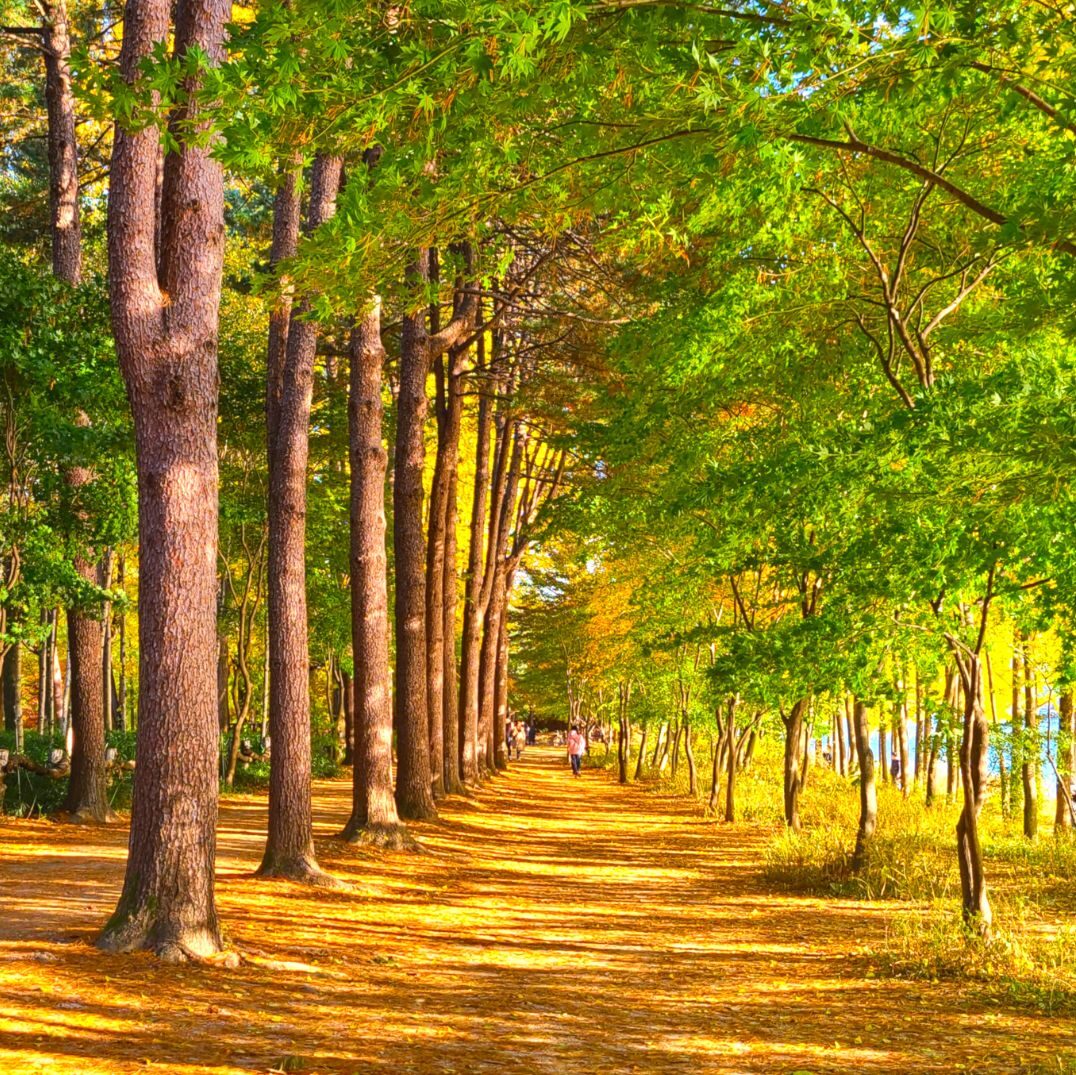
Afternoon : Zip line or sail over to Nami Island for impressive nature, bike rides, leafy walks, and cozy cafes. See popular scenes from K-dramas and even some wild animals, like deer and rabbits.
Evening : Pedal your way along an abandoned railway at the Gangchon Rail Bike Park before heading back to Seoul for fine dining in Gangnam’s Apgujeong Rodeo district.
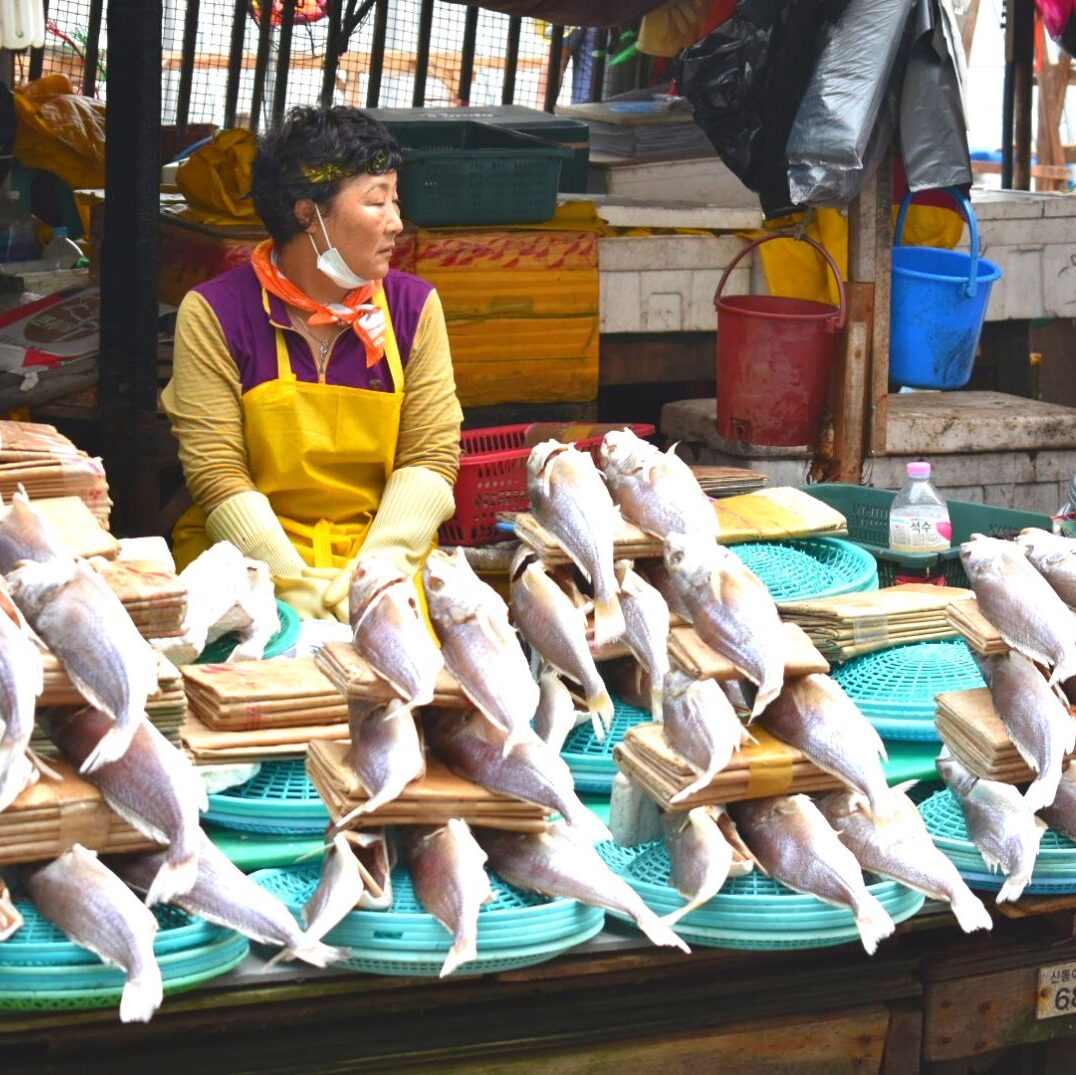
Afternoon : Head to the Nampo-dong near Busan Station and visit Jagalchi Market for a fresh seafood lunch. Then explore cosy Bosu-dong Book Alley or take a taxi to the Huinnyeoul Culture Village.
Evening : Take the subway up to Haeundae Beach for Busan’s best night-scenes. Grab dinner overlooking the beach, or at one of the market stalls. If you’re feeling brave, visit BUSAN X the SKY to see breathtaking views over the coast and city.

Afternoon : Head to the Gyeongju Gyochon Traditional Village for a traditional meal and to see the stunning Woljeonggyo Bridge. Gyeongju National Museum is nearby, too.
Evening : See the tranquil night views of Wolji Pond where palace buildings reflect perfectly in still waters. Stop at Hwangnidan-gil area for dinner and drinks before returning to Busan.
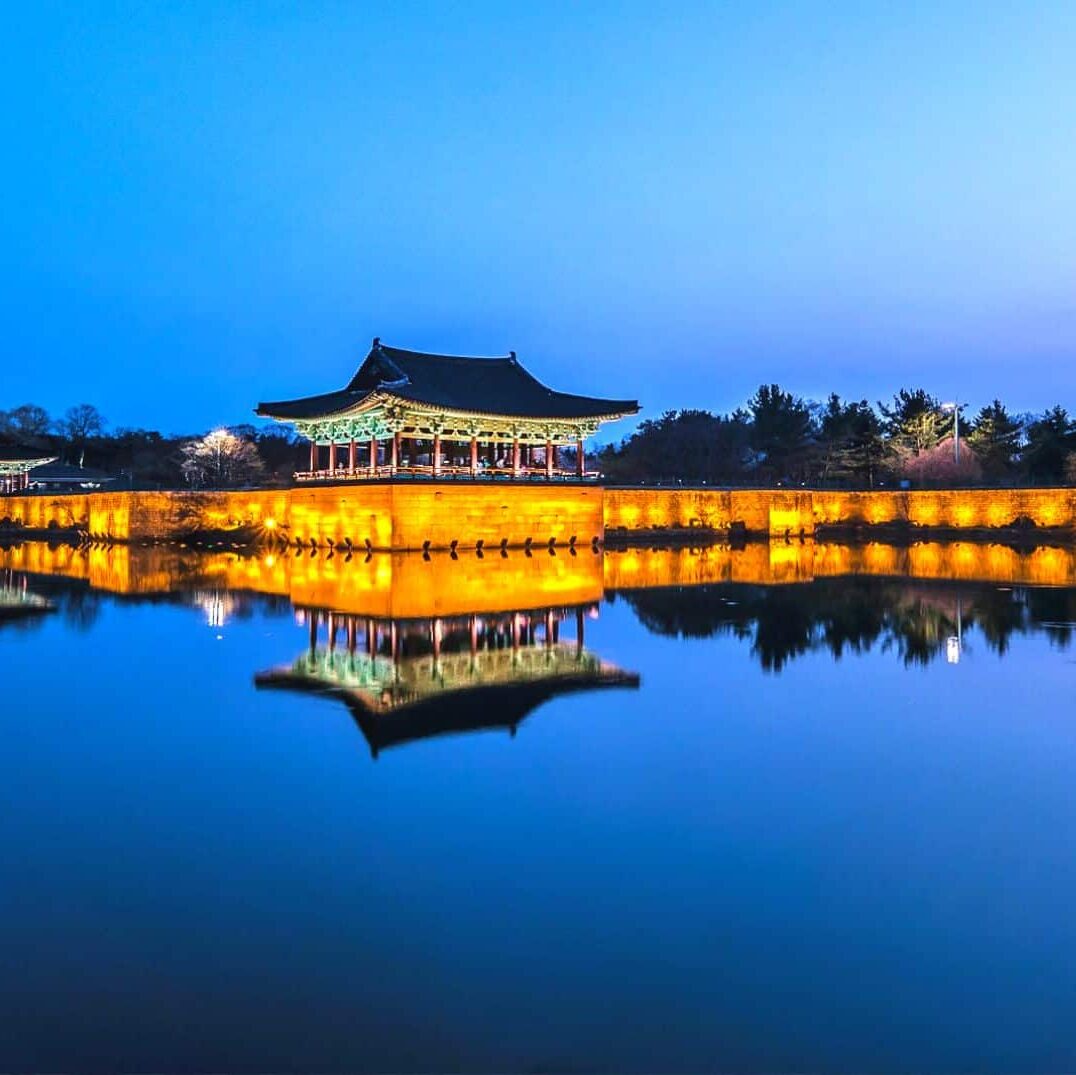
Afternoon : Explore the artistic shopping streets of Hongdae for last minute souvenirs and gifts for yourself. Take a break in one of the unique animal or artsy cafes.
Evening : Either take a night cruise along the Han River from Yeouido Hangang Park or dine in style at the Lotte World Tower in Jamsil, the world’s 6th tallest building. Both offer great night views of Seoul and unforgettable memories to take home.

Korean Seasons Guide
The best time to visit South Korea is during the warm spring or fall seasons. The weather is mild and clear, there’s a range of festivals and seasonal activities to enjoy, and you can travel to Korea comfortably.
The best months to visit are April, May, September, and October. These months are all during the Korean school semester, so there won’t be as many local travelers around during the weekdays. However, expect the weekends to be busy as people leave the cities to travel within Korea.
Large public holidays, including Chuseok (mid-autumn festival) in September / October) and Buddha’s Birthday (May), provides travelers with the opportunity to experience Korean culture and celebrations. These holidays change each year based on the lunar calendar.
Korean Weather & Climate
South Korea is a country that experiences four very distinct seasons, with temperatures ranging from 100 Fahrenheit in the summer to below 0 Fahrenheit in the winter. Each of South Korea’s seasons brings opportunities to see unique natural views and enjoy the different climates in Korea.
Spring has some of the gentlest weather, with light rain and a quick jump in temperature to the 60s and 70s by late March. Summer begins with the rainy season in late June and becomes extremely humid and hot throughout July and August before cooling again in September.
Fall has the best weather in Korea, with many warm, sunny days. Cold winter weather appears very quickly in mid-November and the first snow usually appears by late November. Winter is dry and sunny with the lowest chance of rainfall but is also very cold. Snow isn’t constant, but can fall for several weeks on and off during winter.
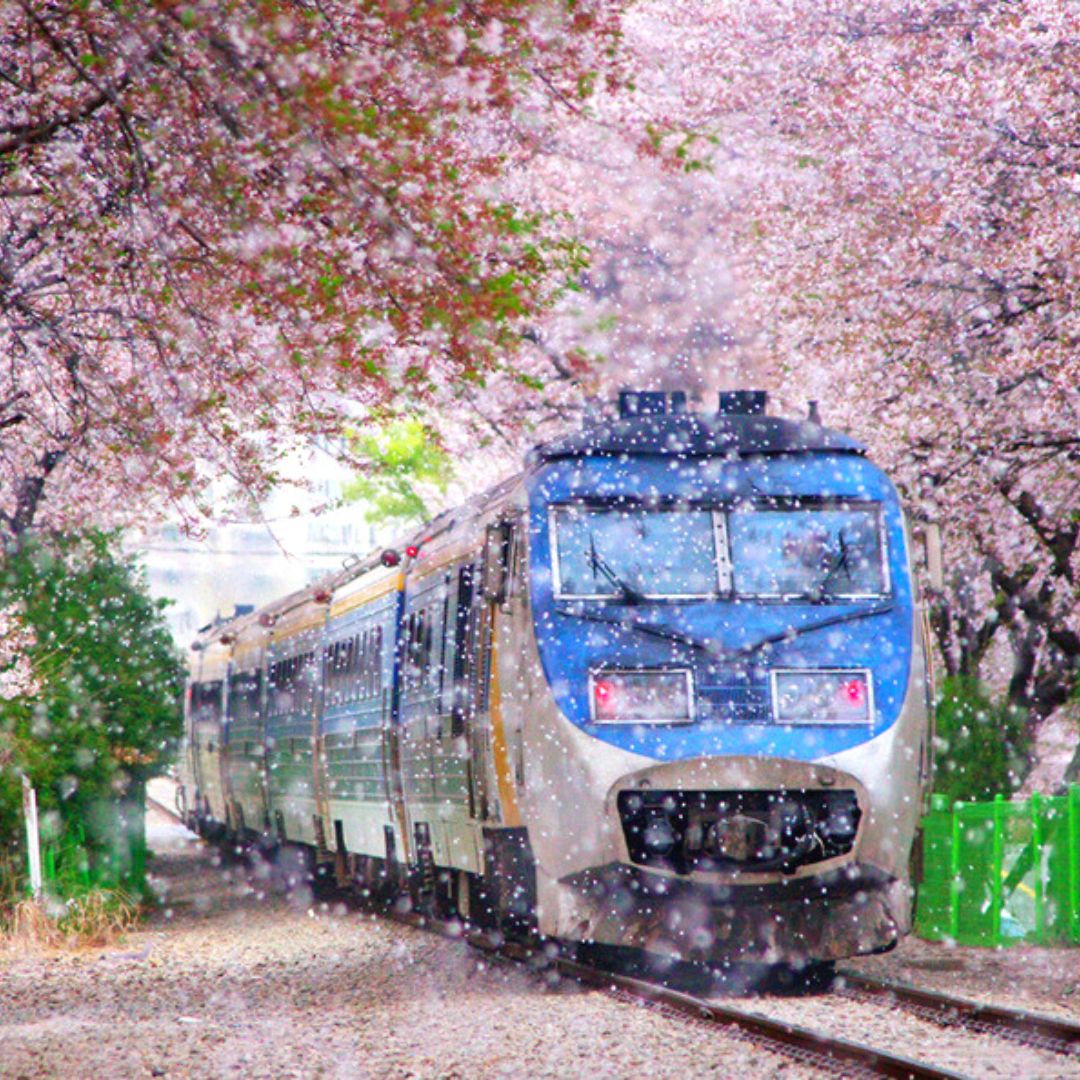
Visiting in spring offers the chance to see beautiful cherry blossoms stretch across the country, as well as many other spring flowers that brighten up Korea after a cold winter.
Spring starts in late March with the awakening of the cherry blossoms and ends in early June with the start of the rainy season. South Korea is a country with a close connection to nature, which can be witnessed in the many spring festivals and celebrations that happen throughout the year.
Some of the best spring festivals include the Jinhae Cherry Blossom Festival, Damyang Bamboo Forest Festival, Yeon Deung Hoe Lotus Lantern Festival, Jindo Sea Parting Festival, and Boseong Green Tea Plantation Festival.

The weather in summer is perfect for getting outside and relaxing on one of Korea’s many beaches. Some of the best activities include spending a weekend camping or glamping by the beach, hiking in shaded valleys in the national parks, and water sports such as surfing, kayaking, and scuba diving.
Unfortunately, the heat may put off some travelers, and high humidity makes it uncomfortable to move around too much. Fortunately, Korea is a modern country with lots of air-conditioning and ways to deal with the hot weather, including delicious summer dishes.
Cool down with a bowl of Korean bingsu (shaved ice dessert) or a cool latte in one of the many cozy Korean cafes in popular beach destinations.

Travelers to Korea in the fall are treated to spectacular fall foliage creeping far and wide. You can see it falling on palace grounds, sprawled on mountains in national parks, and along city streets.
The start of the fall foliage season in Korea coincides with the end of the hot and humid summer, with clear skies and cool weather, making it the perfect time to travel in Korea. Like spring, the fall season in Korea is one of the festivals and celebrations.
The Chuseok holidays in late September / early October are the biggest public holidays of the year, with cultural events held in popular tourist destinations. There’s also a range of cultural festivals, such as the Andong Mask Festival, Baekje Culture Festival, Jinju Namdang Yudeung Lantern Festival, Jeonju Bibimbap Festival, and the Seoul Kimchi Festival.

Winter, like summer, has more extreme weather than spring and fall, with temperatures often in the 20s and 30s and below. This season, however, is also one of the best for travelers who want to see clear, blue skies and experience good weather.
Winter is the driest season and it very rarely rains. If you don’t mind the cold weather, it’s perfect for traveling around South Korea. One of the biggest draws during winter is the chance to see snowy Korean landscapes, from snow-bedecked royal palaces to frosty peaks atop Korea’s many mountains.
Winter sports are popular in Korea, with ski and snowboard resorts aplenty. Winter also offers the chance for family fun with winter attractions including sledding, winter illuminations, and Christmas parades.

Cost To Travel To Korea
The cost to travel in South Korea largely depends on your personal style of travel. You can travel on a low budget in Korea, for under $50 per day, or you could also travel for 10 times that amount if you wished to.
Food costs range from a few dollars for a bowl of jajang (black soybean) noodles to hundreds for premium hanwoo (Korean beef) steak. The same applies to accommodation, with budget hostels costing $10 per night and premium 5 stars hotels costing hundreds.
Most travelers to Korea will already know what they want to prioritize their spending on. Some travel to Korea to eat, others to shop, and many more to experience the unique culture and history that Korea has to offer.
The costs in this section of our South Korea Travel Guide are based on the latest costs in Korea from this year. Examples of different costs have been covered to give you an idea of what to expect when you try to budget.
Please note, these prices are based on traveling in Seoul during non-peak times. Prices may be higher in peak times, which include cherry blossom season (Apr) and fall foliage season (Oct). Popular tourist cities, such as Gyeongju and Jeonju, may also have higher prices on weekends.
How Much Does It Cost To Travel In South Korea?
Travelers may find they want to spend more on hotels and less on eating out, or vice-versa, so don’t feel like you have to only follow the costs for one section. This is only a guideline to help you plan based on your own personal preferences.
To make it easier to figure out your expected costs to travel in Korea, this South Korea Travel Guide has broken down the costs into 3 different categories. These categories loosely fit 3 different types of travelers, as described below:
- Accommodation: $200+ per night, per room (double)
Korea has a wide range of luxurious hotel options, including rooms in the Lotte World Tower, historic hanok houses, and glamping for those who want to escape to the countryside.
- Food & Drink: $100+ per day, per person
It’s easy to spend a lot on food and drink in Korea as there are so many delectable restaurants. Fresh seafood, Korean steak, or the finest foreign foods are all available.
- Transportation: $20+ per day, per person
Taxis and transportation are relatively cheap in Korea. A taxi journey across Seoul can cost less than $20 for 30 minutes and even the 1st class options on Korea’s high-speed trains are under $100 for the longest journey (Seoul to Busan).
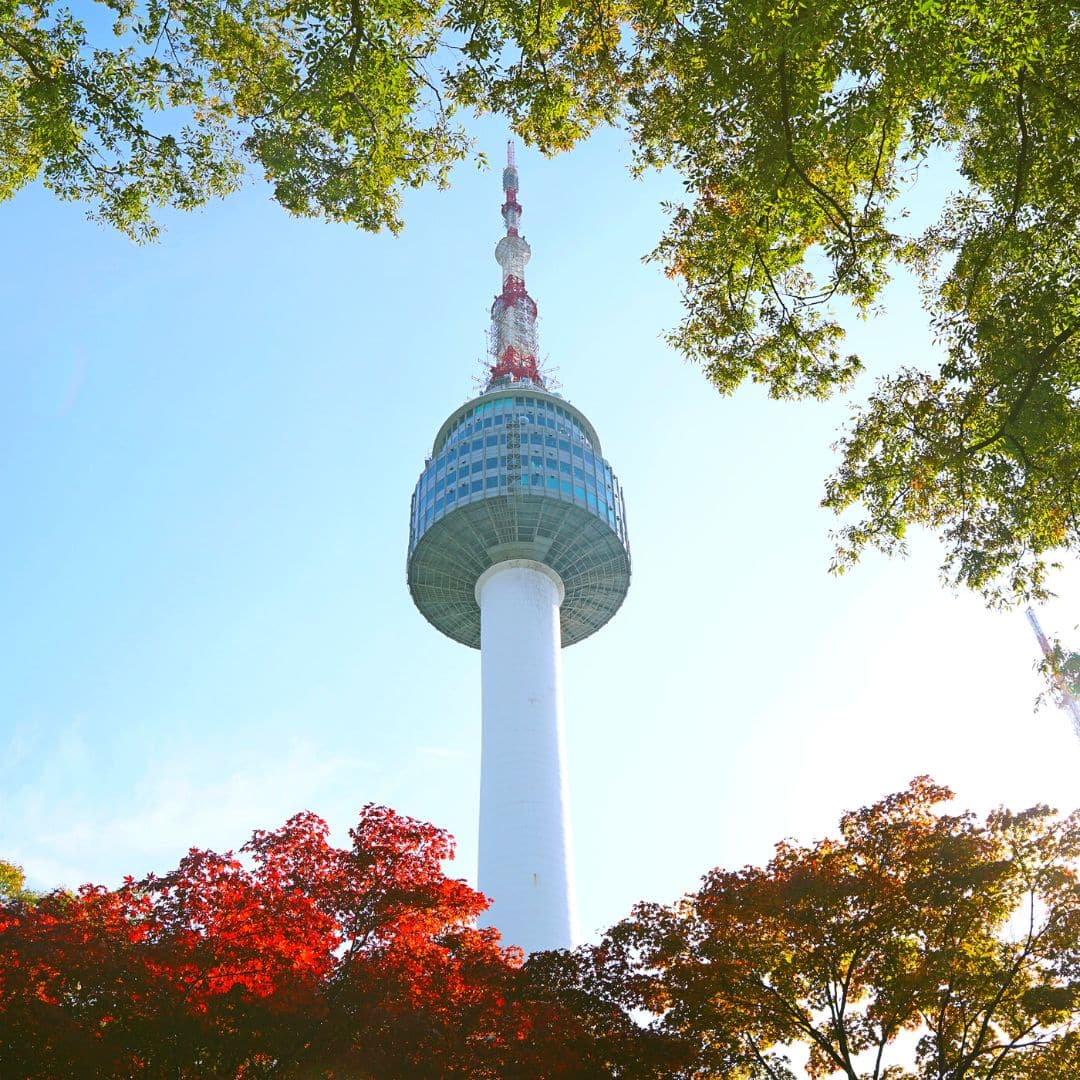
- Accommodation: $100 ~ $200 per night, per room (double)
You can book 4-star hotels in Seoul for very reasonable prices and enjoy both comfort and lower prices than you’d find at home. Korea has a wide range of comfortable mid-priced hotels.
- Food & Drink: $50+ per day, per person
With all-you-can-eat Korean restaurants that serve unlimited Korean BBQ and other dishes for under $20 or $30 per person, it’s easy to enjoy the best food Korea has to offer without breaking the bank.
- Transportation: up to $15 per day, per person
Use the subway and buses to get around the big cities and trains to travel further around Korea without breaking the bank. You can even splash out on a taxi and pay only a few dollars per person when traveling as a group for a few dollars extra.
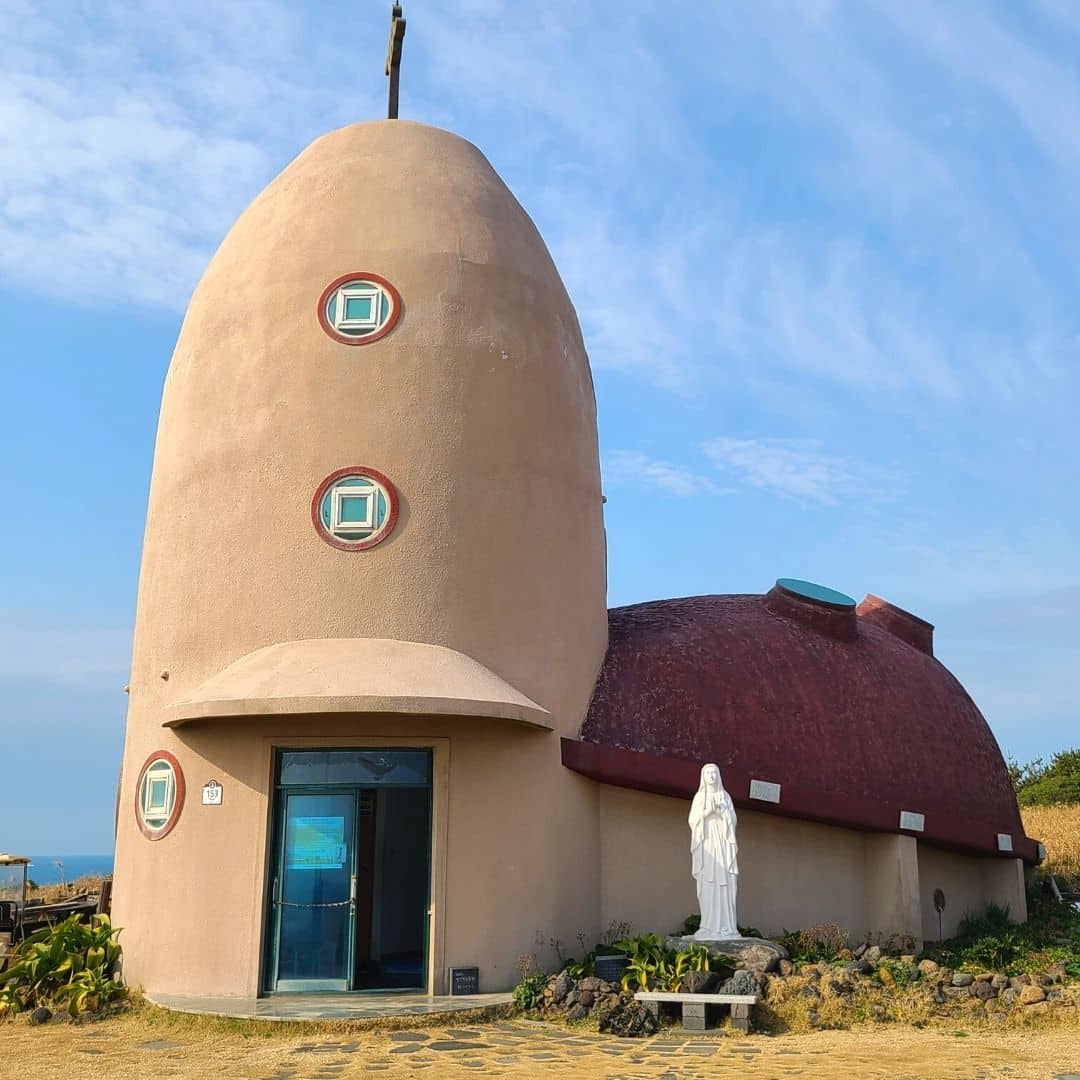
- Accommodation: up to $100 per night, per room (double)
Hostels and guesthouses can be found for under $50 per night and are perfect for somewhere to rest and recharge. If that’s all you need, save money here and spend it elsewhere.
- Food & Drink: $20 – $30 per day, per person
If you budget well and stick to street food, free hotel breakfasts, and convenience store foods, you can eat well and still have enough to splurge on good food for dinner.
- Transportation: up to $10 per day, per person
Walking and buses are cheap and convenient ways to travel around Korea’s biggest cities. Traveling from city to city is also cheap, with intercity buses costing less than $10 for 1-2 hour journeys.

Further Costs To Travel In South Korea
Besides these everyday costs to travel in South Korea, there are other costs that you’ll need to cover from time to time. These costs include internet & phone access, day trips, activities, souvenirs, travel insurance, and flights. These costs will be broken down into low and high-end costs that you can expect to pay in Korea.

Museums and galleries offer unique (and authentic) Korean souvenirs such as pottery, painting, tea & soju sets, and more. If you want something a bit more special, head to the underground markets near Gwangjang Market in Seoul and get your own handmade hanbok, which you can get posted back home to save luggage space.
- Small Souvenirs: $5+
- Korean Cosmetics: $5+
- Korean Artworks: $10+
- Korean Tea (box of): $10 to $20
- Korean Soju Set: $10 to $20
- Korean Handcrafts: $10+
- Tailored Hanbok: $200+
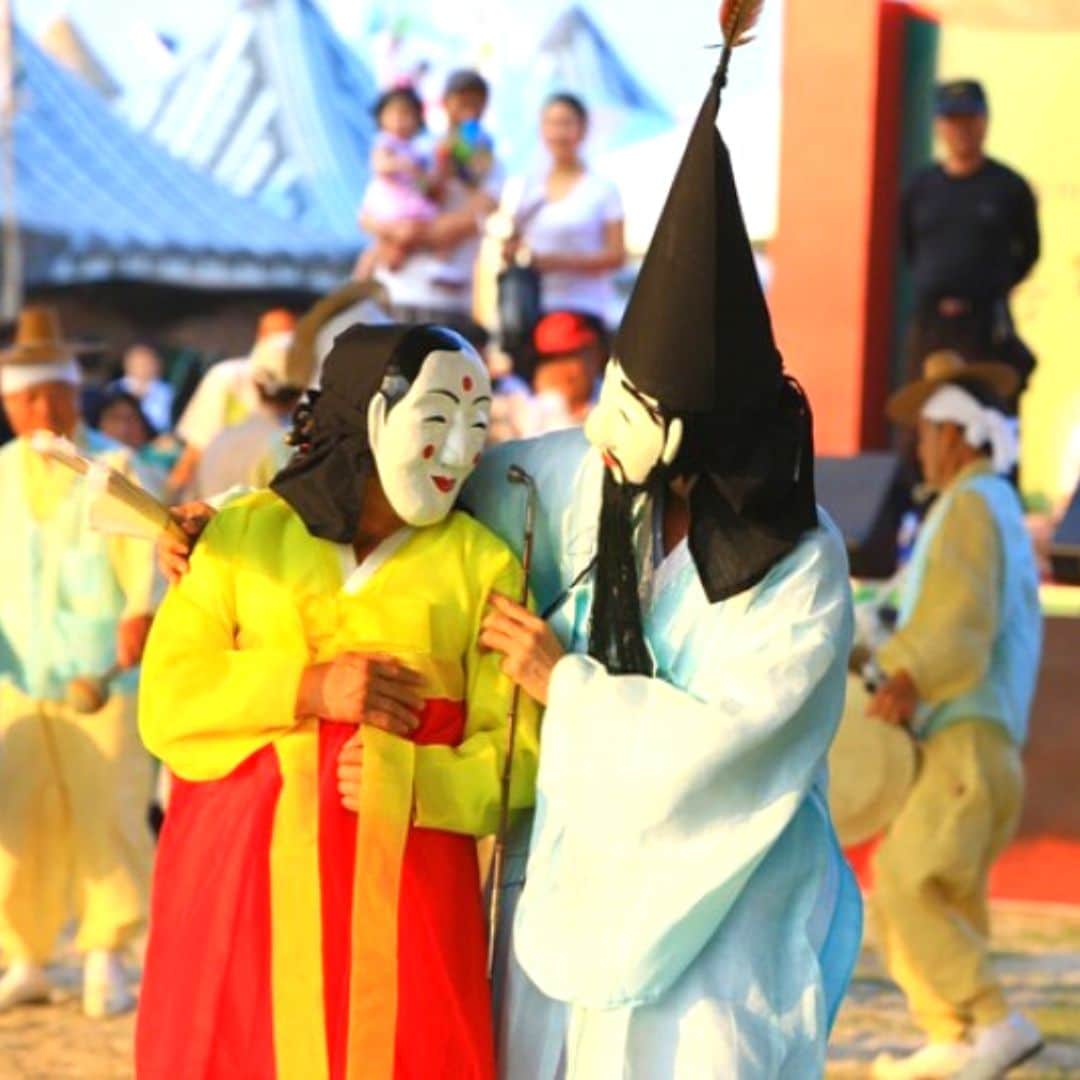
The day trip prices quoted below are the prices you can expect to pay with a reputable tour company like Klook or Trazy . Hiring a private guide will be a lot more expensive and might come to $200+ per day.
Please note: The prices quoted below are estimates and may change depending on the season or tour services.
- DMZ Tour – $50 to $120
- Nami Island Area – $40 to $70
- Everland Theme Park – $30 to $50
- Jeonju Hanok Village – $50 to $70
- Korean Folk Village – $50 to $60
- Seoraksan Mountain – $70 to $150
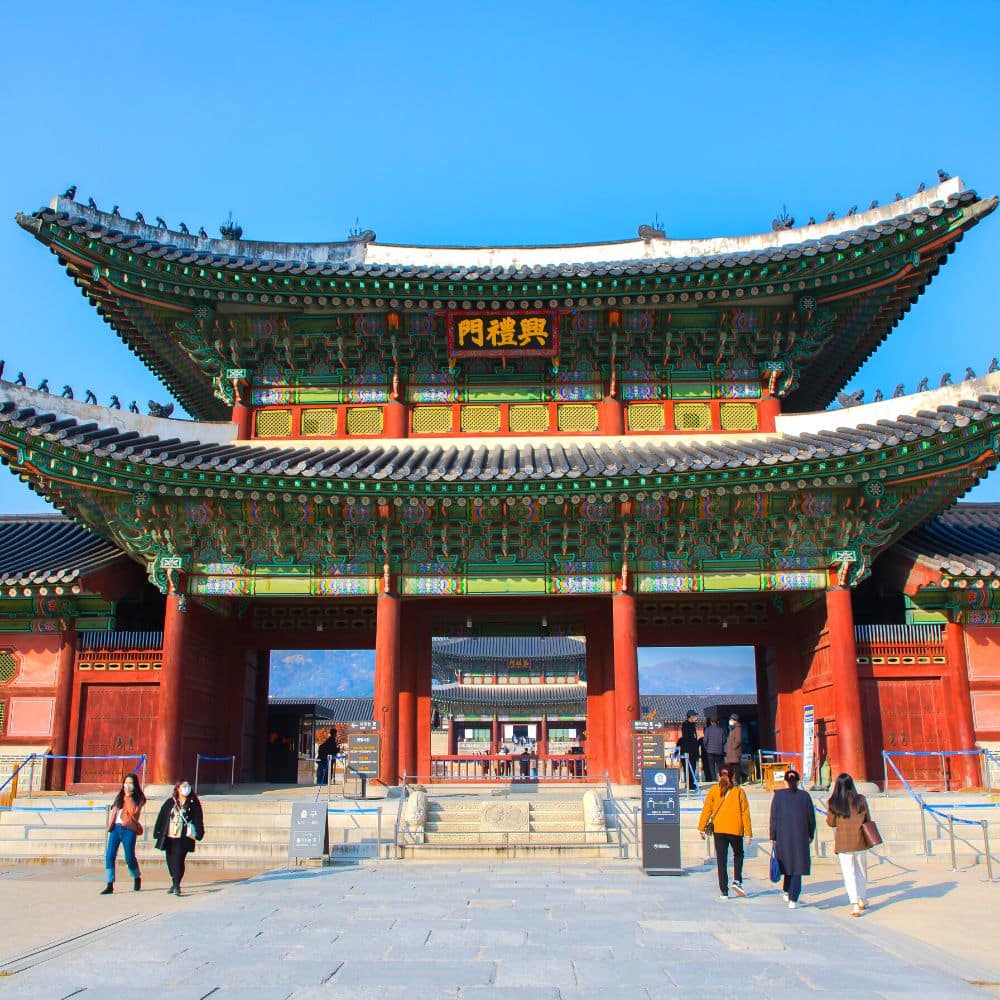
As mentioned earlier in this South Korea Travel Guide, buying a Discover Seoul Pass is a great way to save money on Seoul’s premium attractions.
- Royal Palaces – $3
- N Seoul Tower – $10
- Hanbok Rental – $10+
- Seoul City Tour Bus – $10
- Han River Cruise – $15 to $30
- Seoul Sky Observatory – $30 to $50
- Aquariums – $20 to $30
- Seoul Zoo & Seoul Grand Park $10
- Amusement Parks – $30 to $40
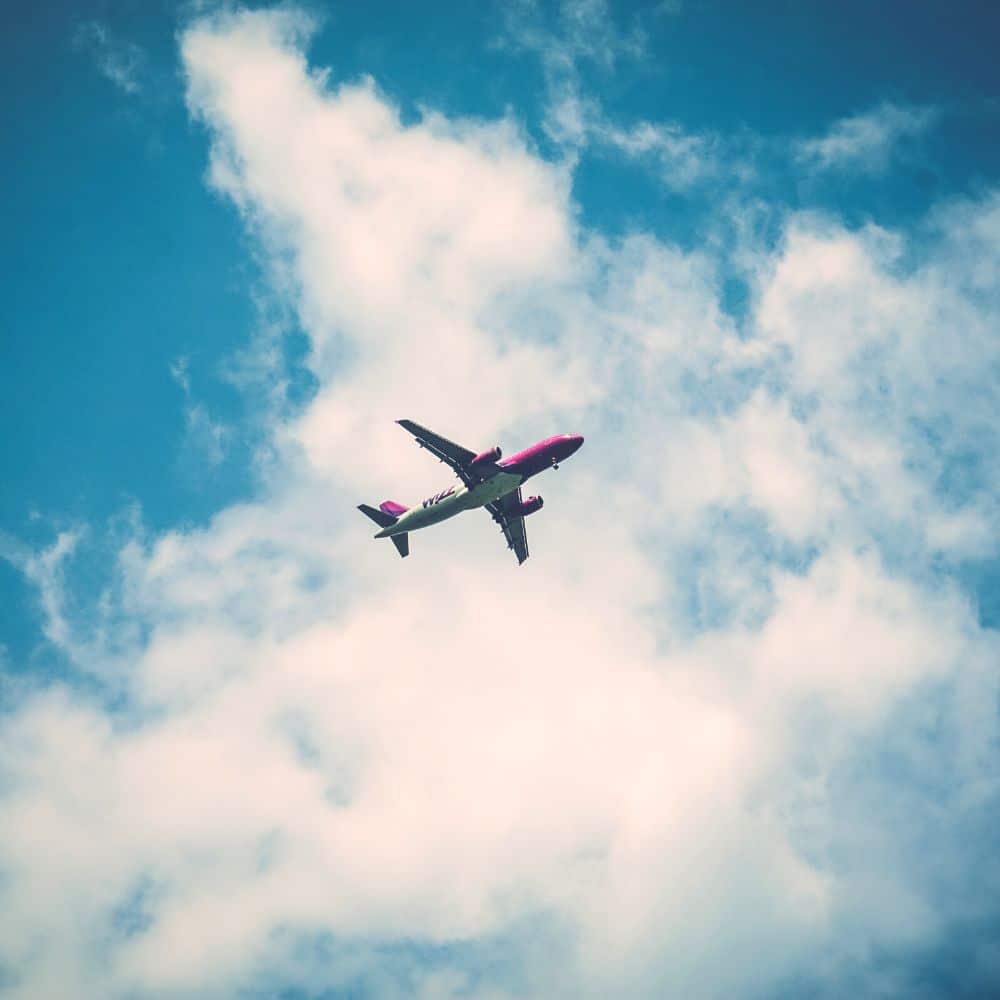
The cost to fly to Korea is more than twice the normal price right now. Fortunately, Korea ended the restrictions on the number of flights into the country from June 2022 and flight costs and availability should be improved in the near future.
Best of Korea recommends Skyscanner and Expedia for the best flight deals to Korea.

Why Travel To South Korea?
In recent years, travelers from around the world have been increasingly drawn to South Korea. The country is a must-see destination in Asia, with more than 17 million travelers in 2019. After reading this South Korea Travel Guide, you’ll understand what draws so many people to the Land of The Morning Calm, as Korea is also known.
There are myriad reasons why people visit Korea. Many come to experience life in a unique country, packed with historical and cultural sights that you won’t find elsewhere in the world. In the afternoon you can walk through a royal palace dressed in hanbok (traditional Korean clothes), sip green tea in a hanok (traditional Korean house), and pass Buddhist monks walking peacefully through an ancient temple.
Modern South Korean culture is conquering the world, with chart-topping acts that include BTS and Black Pink, Oscar-winning movies like Parasite, and phenomenally successful TV shows like Squid Game. This brings in legions of fans flocking to shooting locations and film sets to relive their favorite K-Culture moments. Some lucky travelers even get to catch sight of their favorite K-Stars walking around Gangnam, a hotspot for Korea’s most famous citizens.
Not only is Korea a beautiful country, it’s a country that will make you beautiful, with some of the world’s best fashion and beauty shops. Korea is famous for its K-Beauty products and is a beauty and fashion shoppers paradise. From the street fashions of Hongdae, to the luxurious fashion malls of Gangnam, and the wall-to-wall malls with discount clothes in Dongdaemun, you’re guaranteed to find something you can’t resist at a great price. If you prefer a cultural shopping experience, there are traditional markets all over Korea, where you can experience street food, buy novel gifts, and see how locals live and socialize.
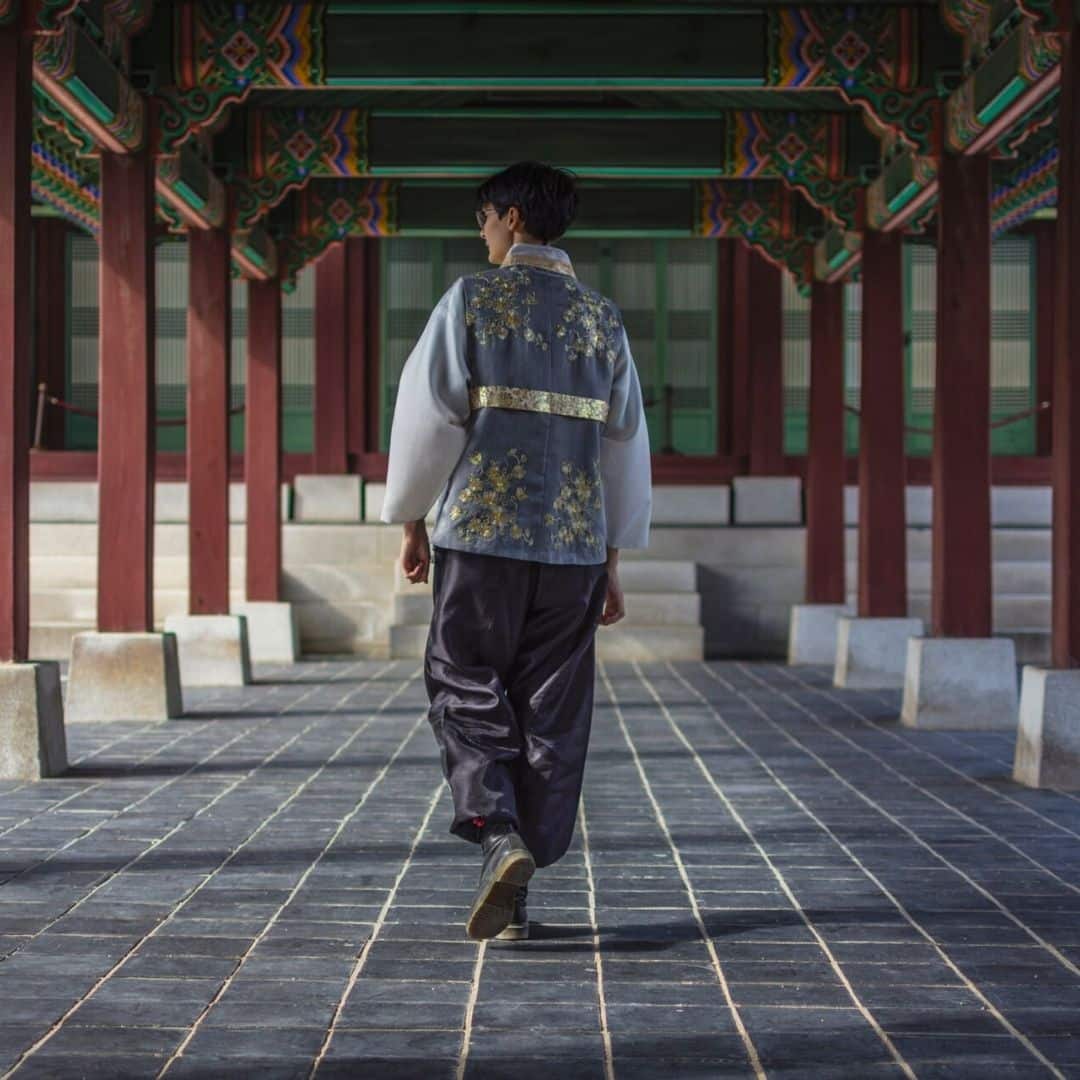
There’s so much more to South Korea than what you’ll find in the cities, however. South Korea, a country that’s 70% mountainous with coasts on three sides, offers so much to nature and adventure lovers. Hiking, South Korea’s national pastime, is a popular way to see more of the Korean countryside, looking down over rice fields, forested valleys, and pockets of urbanization. Skydiving, parasailing, scuba diving, water sports, cycling, rock climbing, white water rafting, and lots more are on offer and very reasonably priced. South Korea is a great place to enjoy the great outdoors.
The real jewel in South Korea’s natural crown, however, has to be Jeju Island – one of the New 7 Wonders of the Natural World. Explore lava caves, hike to the peak of the central dormant volcano (Hallasan Mountain), trek around the rugged coast, relax on a sandy beach in a modern cafe, and even try your hand at horse riding.
Whatever your reason to travel to South Korea, you’re sure to find more and more reasons to return again and again. Let this South Korea Travel Guide whet your appetite for your first trip, inspire you to plan a follow-up trip, and guide you to the best things to see and do in South Korea.

South Korea Travel Guide FAQs
Not sure about the South Korea travel restrictions and want to know more about visas, vaccinations, and what the rules are? This next section covers some of the most frequently asked questions about traveling to Korea now. If you have more questions that aren’t covered below, feel free to write to us on the Best of Korea Facebook page.
Do I need a visa to travel to South Korea?
US citizens and tourists from 111 other countries, including Canada and Mexico, don’t need a visa to travel to South Korea. The US government and South Korea have a visa-free travel arrangement and tourists can stay for up to 90 days.
What happens when I arrive in South Korea?
From September 2022 onwards it is no longer necessary to provide any vaccination status or take any PCR or RAT tests. A mandatory health check will be required, but this is only a simple form you can fill in on arrival.
What happens if I get a positive PCR result?
If you test positive for COVID-19 while in Korea, you will need to quarantine for 7 days at government facilities. Travelers who break the quarantine rules are subject to deportation or fines.
Can I travel to Korea if I'm unvaccinated?
Yes, you can still travel to South Korea if you’re unvaccinated. South Korea no longer restricts travel based on vaccination status (as of October 2022).
However, if a traveler (vaccinated or unvaccinated) tests positive for COVID-19 in Korea, they will have to self-quarantine until negative.
South Korea is a dynamic and culturally rich country that deserves a place on everyone’s travel bucket list. Known for its stunning blend of tradition and modernity, Korea features futuristic technology, bustling markets, and a thriving pop culture scene. Perhaps most importantly, visitors can expect a high level of safety and cleanliness while exploring the country and savoring its delicious cuisine.
This South Korea Travel Guide shows you where to go, what to see, and when to travel. Start your journey with itinerary ideas and pre-travel tips, the best day trips, and lots more essential Korean travel advice. Let’s go!
LATEST KOREA TRAVEL UPDATES
How to travel to korea, best destinations in korea, where to stay in seoul, korean travel tips, things to see & do, travel itineraries for korea, korean season guide, cost to travel to korea, further costs to korea, why travel to korea now, south korea travel faqs.
6/1/23 From June 1st, 2023, there is no longer any mandatory quarantine for COVID-infected people in Korea – both locals and travellers. The Korean government now recommends that infected people showing symptoms should self-isolate (voluntarily) for 5 days.
4/1/23 From April 1st, 2023, travelers from the USA and 21 other countries no longer need to apply for the K-ETA to travel to Korea. This will run until 31st December, 2024 and is designed to make it easier to travel to Korea.
3/20/23 From March 20th, 2023, the indoor mask mandate has been removed for public transport, including buses, trains, subway, taxis, and flights. The only remaining mask mandate is for medical facilities, including hospitals, care homes, and pharmacies.
How To Travel To Korea
Current Travel Restrictions For South Korea 2023
If you’re suspected of infection when you arrive (high temperature, feverish signs), you may be asked to take a PCR test. PCR tests are now free for travelers suspected of being COVID-19 positive within the first 3 days of arrival. This South Korea Travel Guide is regularly updated with the latest Korean travel restrictions.
Requirements To Travel To Korea
Here’s a simple 2-step guide about how to travel to Korea right now. Most restrictions have been lifted so travel to Korea is easier than ever. This applies to travelers from the US, Canada, and many other countries . As mentioned, it doesn’t matter whether you’re vaccinated or not.
Check the Korean Embassy if you’re not sure in either situation.
- When you travel to Korea, you will be asked to complete a self-check health questionnaire to show you’re not sick. You can do this when you arrive or complete it before you depart on the Q-Code website .
- You don’t need to do any testing before you fly, but it is a good idea to take a self-test to make sure you’re safe. If you’re infected in Korea, it’s necessary to do 7 days self-quarantine. You don’t need to bring copies of your vaccination records but printing a copy of the K-ETA is recommended.
No, travelers from the USA don’t need a tourist visa to enter South Korea. You can visit for up to 90 days visa-free. However, you must apply for the K-ETA before traveling and upload your travel plans and hotel details.
Here are 6 of the best destinations in Korea that you absolutely must visit, as well as some of the sights you’ll want to check out while you’re there. We’ll be bringing you lots more detailed destination guides in the future, so be sure to visit again soon

This Full Day Tour of Seoul will show you some of the hottest spots in the city, while this Customized Private Tour of Seoul will allow you to choose where to go.

Korea is a unique country with a written language that looks nothing like English, interesting Korean Cultural And Etiquette Rules , and an always busy lifestyle. Travelers may be lost trying to do even the simplest things.
If you’re traveling to Korea, you’re almost certainly going to want to get access to the internet to help you navigate, translate Korean, or even book tickets to attractions. Korea has one of the world’s best mobile internet and the prices are very reasonable. 5G mobile internet services are available across the country and Korea was one of the first to get the super-fast service. You won’t have problems connecting with a sim card or WiFi router when you travel
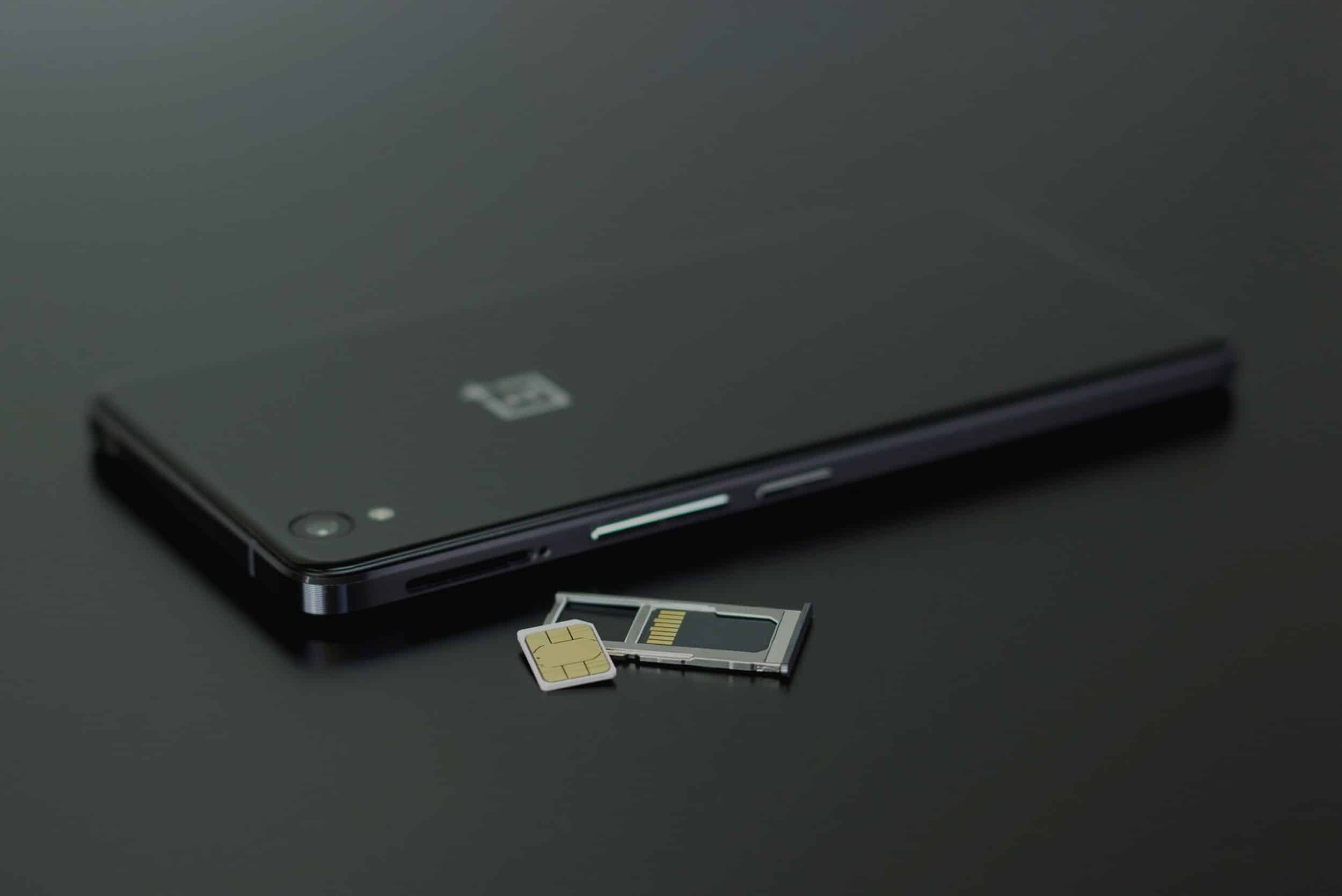
Traveling to any country involves potential scams, bad exchange rates, mistakes, and confusion when it comes to dealing with foreign currency. Fortunately, travelers to Korea have a wide range of options for travel money both before and while they travel.

South Korea is a country packed with famous landmarks and sights, unique culture – modern & historical, family-fun activities, outdoor adventures, cozy cafe districts, and natural wonders. There’s more to do in Korea than you could imagine and it’s impossible to explore it all in one trip. Try to plan your itinerary by cities and locations. For example, plan your day in Seoul and stay by the district.
Here are some of the best things to see and do in South Korea, broken down into different themes so you can find things that interest you the most. The location of each of these attractions is included, too, so you can create a city-by-city itinerary, seeing the best South Korea has to offer.
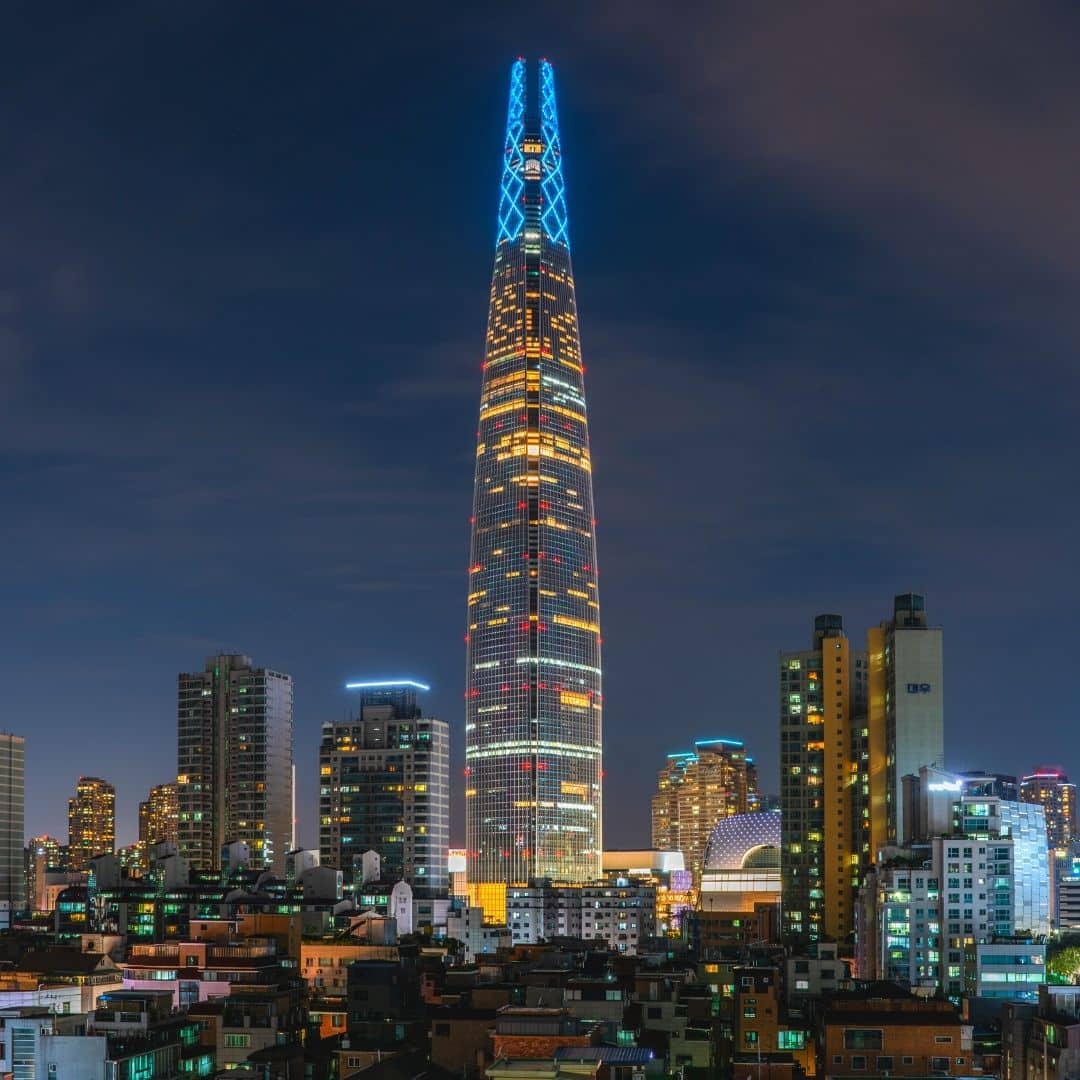
Any South Korea Travel Guide would be incomplete without thee top landmarks & famous areas in Korea. These unmissable Korean attractions offer some of the best sights in Korea, showing you Korean history, culture, design, and sense of humor.
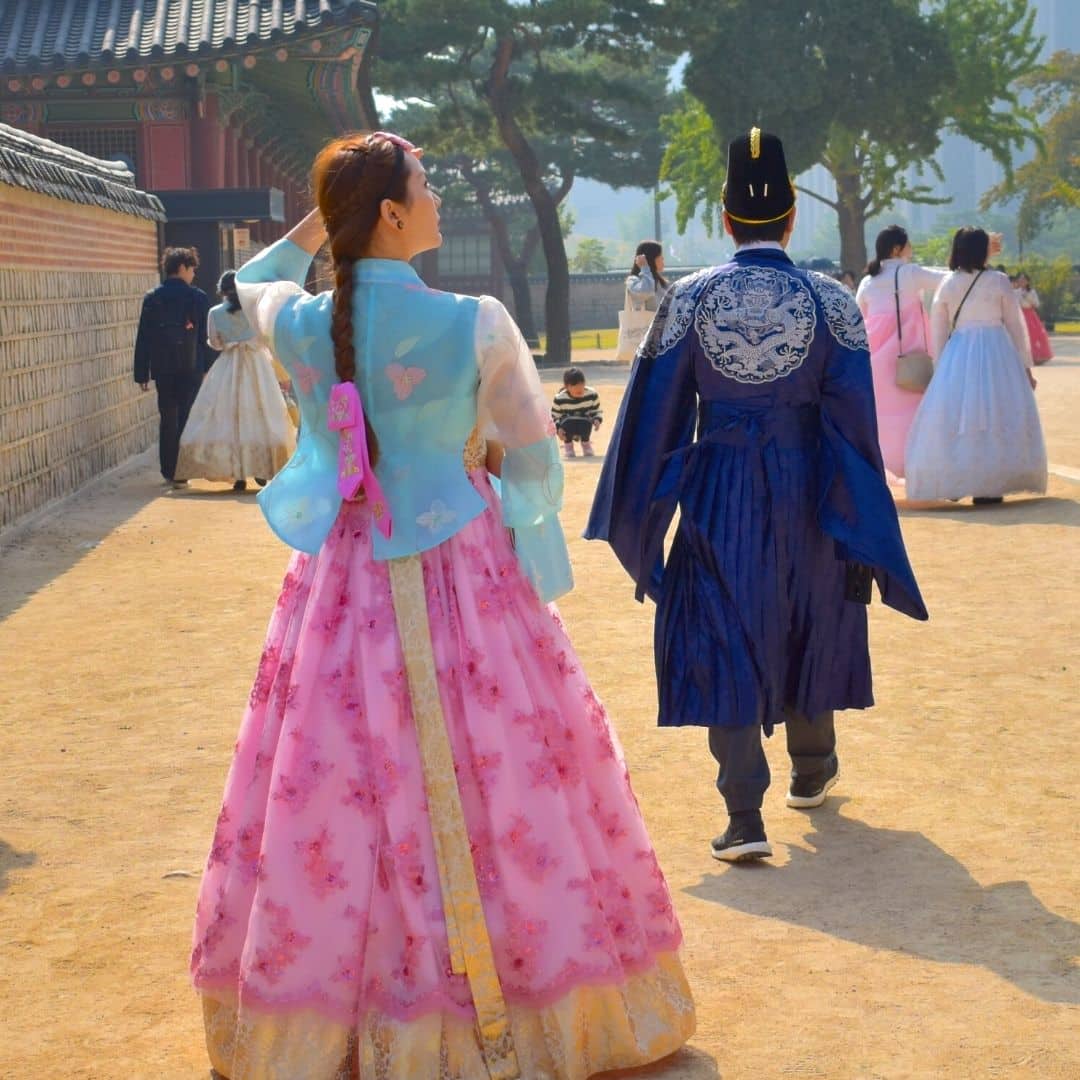
Learning about Korea’s past is not only enjoyable, it’ll also open your eyes to how modern Korean culture has evolved. Witness the majesty of grand palaces and the humble Buddhist temples and gain an insight into life in Korea with these fascination historical sights.

Are you a fan of Korean culture? Then check out these 10 modern K-Culture locations in Korea. Whether you’re ARMY or an arthouse cinema fan, you’ll love these sights. K-Drama fans, check out these K-Drama Filming Spots in Seoul .

If you’re traveling to Korea with your family, you don’t need to worry about the kids getting bored. There are plenty of family-fun attractions in Korea to keep them amused and to show them what Korea’s really like.

Culture lovers will find no shortage of places to learn about Korean, Asian, and world history & culture. Korea has a rich history and displays this through a range of museums. Learn about traditional life, Korean wars, the democracy struggles, and even kimchi .

Once a land of teahouses, Korea has now fully embraced coffee culture. Korea’s late-night culture makes cafes a great place to gather and chat. The rise of social media has also led to hundreds of insta-worthy cafes with photogenic decor, unusual coffee designs, and delicious desserts.

Many people travel to Korea just to shop, thanks to the low prices, haggling in the markets, and good quality items. From traditional markets to high-end designer goods, there’s somewhere to shop for everyone. Be sure to try authentic Korean street foods in the markets, too.

Korea is a country surrounded by sea on 3 sides and 70% mountainous, giving it a wealth of natural beauty. Besides Korean cherry blossoms , flowers, and fall foliage, there are sculpted gardens, shimmering ponds, riverside parks, and a volcano to see.

Morning : Explore Seoul’s historic royal palaces starting with Gyeongbokgung or Changdeokgung Palace in central Seoul. You get free entry if you’re wearing a Korean hanbok, so be sure to pick one up from the rental shops outside.
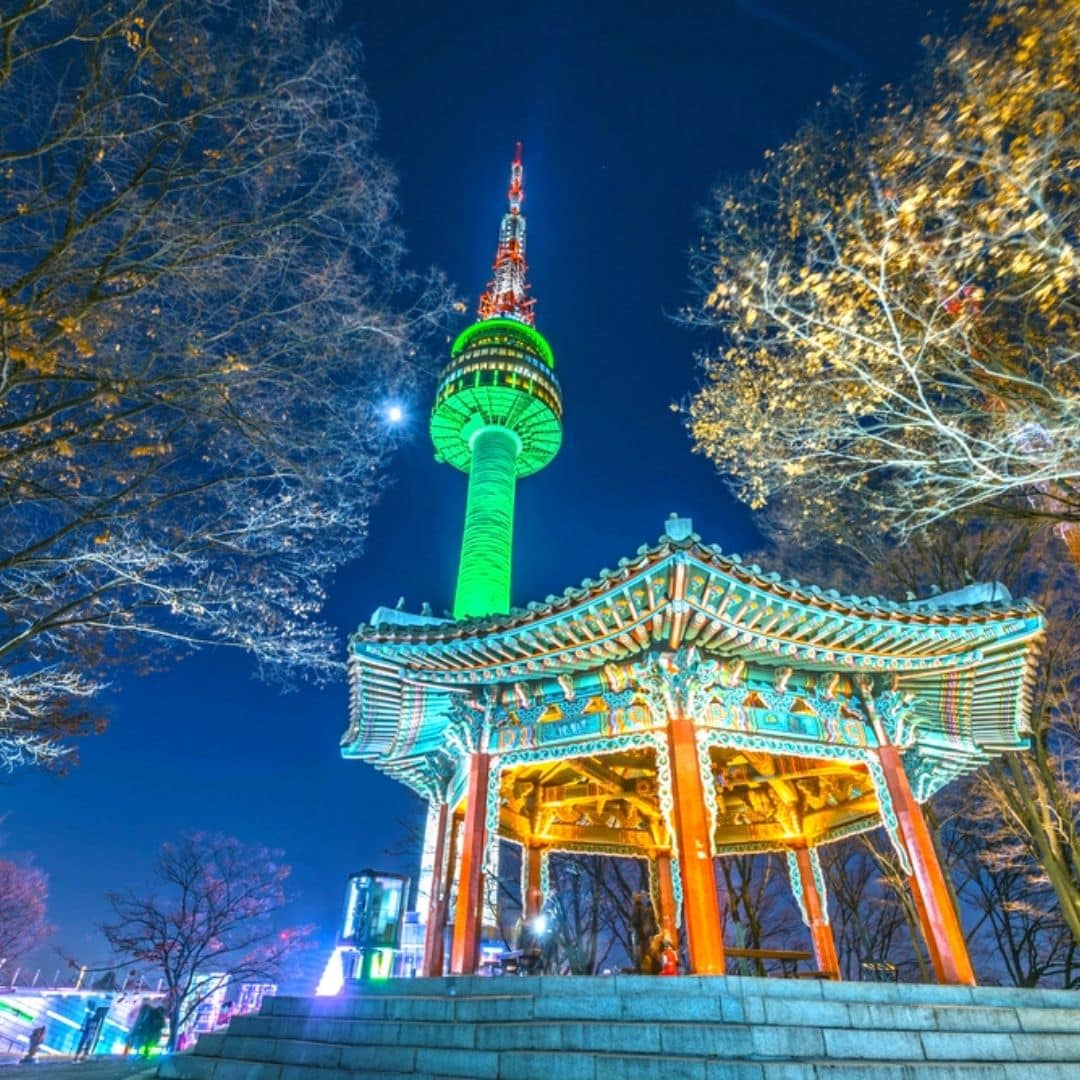
Morning : Learn about Korea’s history at the National Museum or War Memorial in Yeongsan. These fascinating museums have interactive exhibits and feature 1000’s of years of Korean history.

Morning : Take a day trip from Seoul to explore Gapyeong County. See the wonders of the Garden of Morning Calm and its idyllic nature. This is one of the most beautiful gardens in Korea.

Morning : Grab an early breakfast at Seoul Station and ride the high-speed KTX train directly to Seoul. It takes less than 4 hours and rides past rice fields, mountains, and the Korean countryside.

Morning : Take a day trip to the UNESCO World Heritage City of Gyeongju and roam the Gyeongju Historic Area. See Daereungwon Tomb Complex and Cheomseongdae Observatory.

Morning : Pack your bags and ride the KTX back to Seoul. Head to Hongdae for street food snacks or Michelin-starred delights in famous restaurants.

March to May

June To August

September to November

December to February
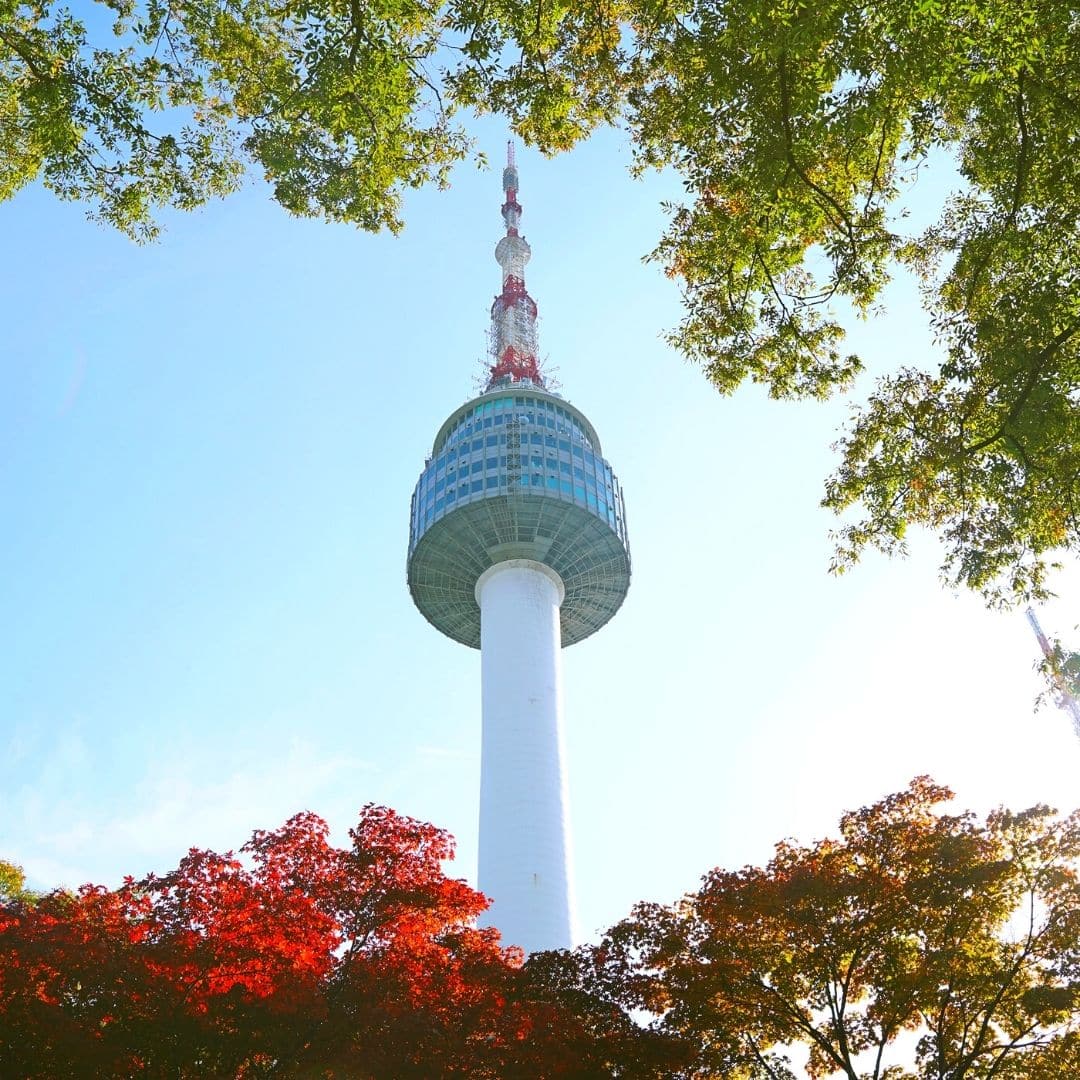
Korean Souvenir Costs
The best places to buy souvenirs in Korea are in the traditional markets and tourist areas. Insadong in Seoul has a lot of art and souvenir shops, as do the market streets around Bukchon Hanok Village. Hongdae offers lots of bargain snacks and souvenirs to take home.

Day Trip Costs From Seoul
A day trip from Seoul is a must to see a different side of Korea from what you’ll experience in the capital. Taking a day trip is a great chance to experience Korea’s countryside, nature, and hard-to-reach cultural attractions.

Korean Activity Costs
Seoul and other Korean cities have so much to offer to tourists. From historical palaces to exciting theme parks and attractions, it’s easy to have fun, explore, and discover more about Korea’s history.

Flight Costs To Korea
Flight costs depend on which airports you’re traveling from. A flight from Los Angeles to Incheon Airport (Korea’s main airport) costs around $1370 right now. Flight costs vary depending on the season and time of day.
Welcome to Best of Korea!
Please Sign Up for Updates
We hate spam. You can unsubscribe anytime.
Nomadic Matt's Travel Site
Travel Better, Cheaper, Longer
South Korea Travel Guide
Last Updated: July 17, 2023
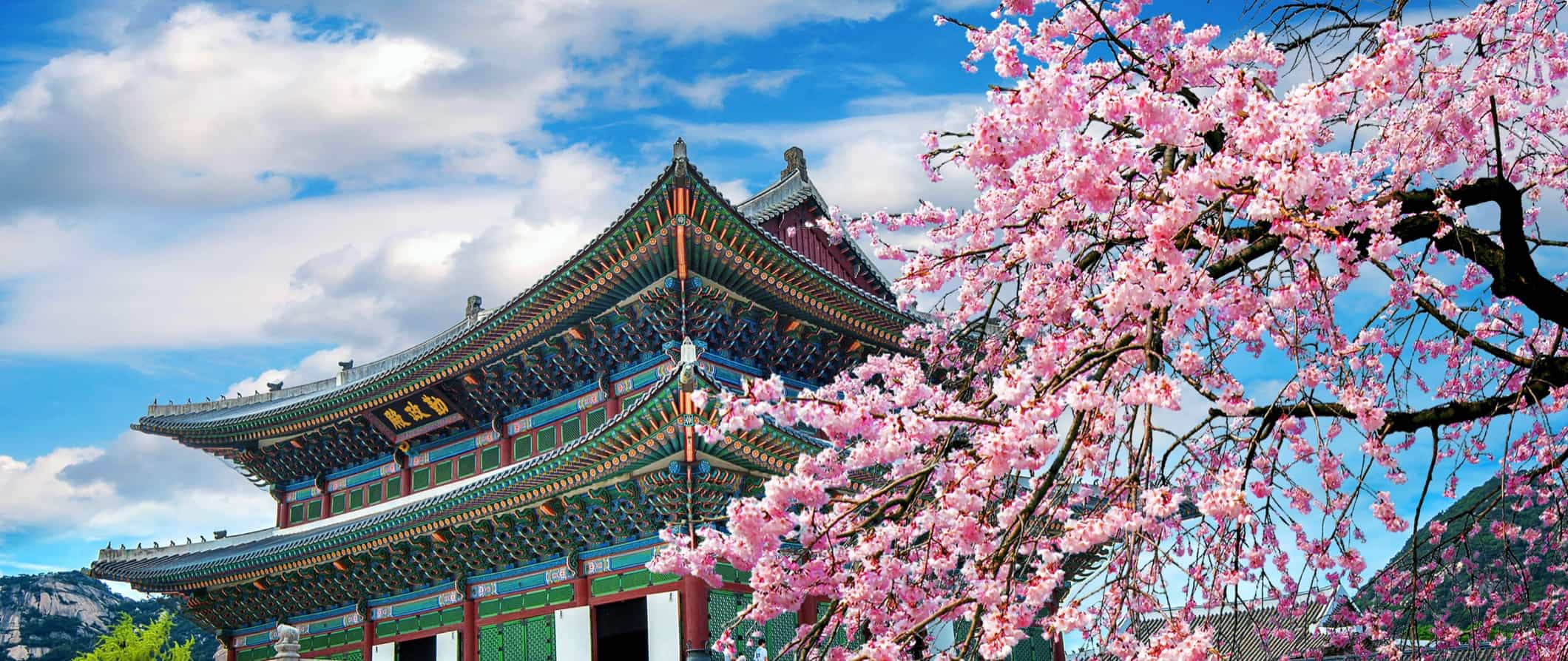
Though South Korea is small (about the size of the US state of Indiana), it punches well above its weight in terms of things to see and do. Boasting a vibrant culture, incredible history, natural beauty, delicious food, and a wild nightlife, it’s home to both major cities and untouched nature, offering something for every traveler.
Seoul, the capital city and fourth-largest metropolitan area in the world (over half the country’s population of 50 million is concentrated here), is a lively hub for food lovers and partying. But while it gets all the attention, there is much more to explore, including 22 national parks, lush Jeju Island, and the infamous Demilitarized Zone (DMZ) bordering North Korea.
Best of all, since South Korea is a manageable size, you can see a good portion of it in a limited amount of time. The transportation here is modern, clean, and efficient, so it’s easy to get around quickly.
The country is also a foodie’s paradise, with cheap street food and delicious dishes like bibimbap, kimchi, and the famed Korean barbecue.
It’s one of my favorite countries in the world and one that I think is super under the radar and often overlooked by travelers. You never see the tourist crowds found in other Asian countries.
This travel guide to South Korea can help you plan your trip, save money, and make the most of your visit.
Table of Contents
- Things to See and Do
- Typical Costs
- Suggested Budget
- Money-Saving Tips
- Where to Stay
- How to Get Around
- How to Stay Safe
- Best Places to Book Your Trip
- Related Blogs on South Korea
Top 5 Things to See and Do in South Korea
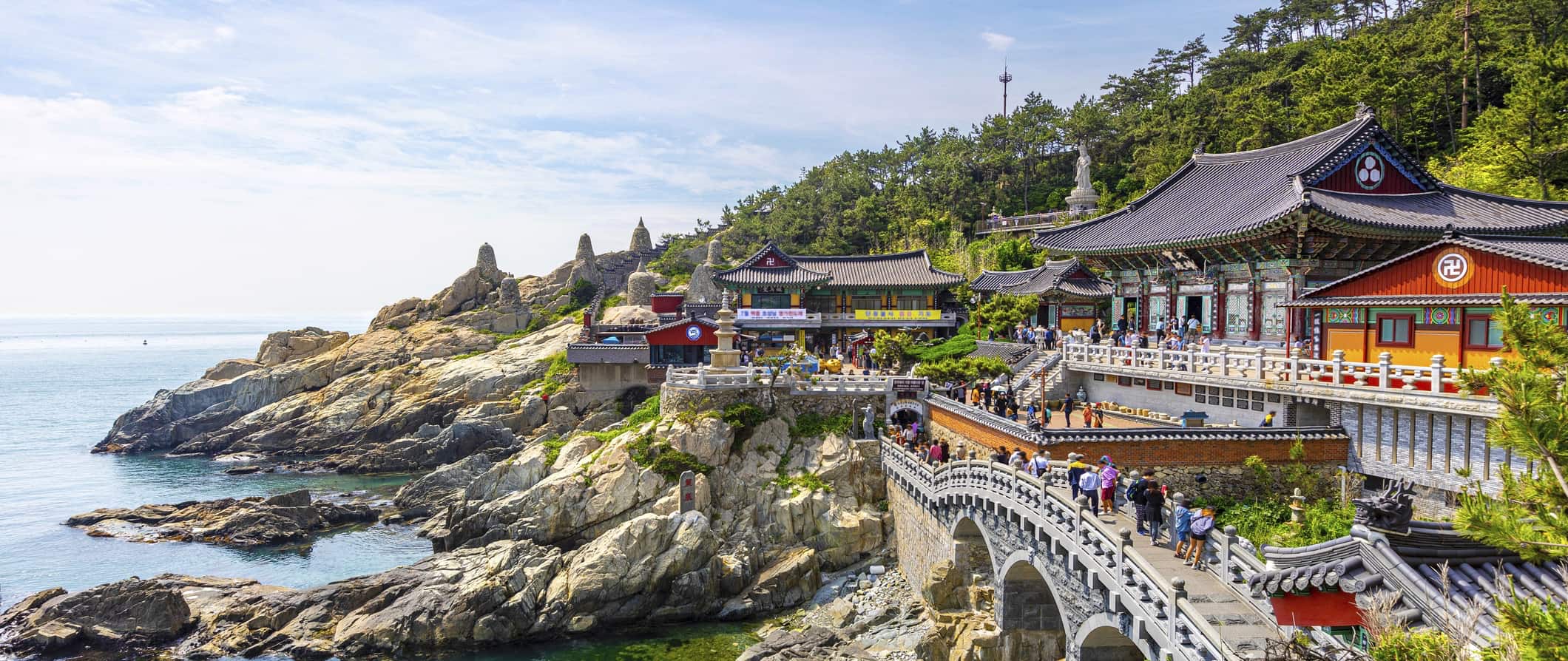
1. Explore Seoul
Korea’s capital has a little bit of everything. It’s a bustling metropolis and global technology hub, with sleek and modern neighborhoods like Gangnam and iconic sights like the Lotte World Tower, the sixth-tallest building in the world. Yet there is a lot of history here too, including many museums, palaces, and temples, among them five UNESCO World Heritage Sites. When you’re done exploring for the day, Seoul has a robust street food scene, countless trendy restaurants, and fast-paced, soju-driven nightlife. You could easily spend weeks here and never get bored.
2. Tour the DMZ
The Demilitarized Zone (DMZ) separates North and South Korea and, despite the name, is the most militarized border in the world. You can only visit the Joint Security Area (JSA), which has military personnel from both sides, on a guided tour, but it’s a unique experience and an important way to learn about this ongoing conflict (the war started in 1950 and has not officially ended). On the tour, you’ll be able to actually stand in North Korea, visit the Third Tunnel of Aggression (which North Korea dug to sneak soldiers across the border), see the Freedom Bridge, and catch glimpses of North Korea from the Unification Observatory. Guided tours of the DMZ start from 80,000 KRW.
3. Visit Jeju Island
This volcanic, semitropical island is a popular domestic vacation spot. It’s accessible via cheap daily flights from Seoul that take just one hour. Known as “the Hawaii of Korea,” it’s a natural paradise, home to the tallest mountain in Korea (Mount Hallasan), lava tubes, beautiful beaches, and countless hiking and walking trails. Other attractions include visiting mythic Jeju Stone Park, wandering the Yeomiji Botanical Gardens, and watching the haenyeo divers — women who dive without any protective equipment to gather underwater treasures like shellfish and seaweed, which they then sell on the beaches. You can visit the Jeju Haenyeo Museum as well to learn more about this cultural practice that dates back centuries.
4. Sing karaoke
Known as noraebang , this is a cultural phenomenon and something worth experiencing at least once while visiting Korea. While the karaoke machine was originally invented in Japan, Koreans have adopted the pastime and made it their own. Here, you rent out a private room with a group of friends (instead of singing in a public bar, as is often the case in Western countries). Pricing is determined by the hour, with rates varying wildly depending on the number of people, time of day, day of the week, and whether snacks and drinks are included. Average group karaoke rates range from 5,000 to 15,000 KRW.
5. Step back in time at a hanok village
Other things to see and do in south korea, 1. visit changdeokgung palace.
One of the Joseon dynasty’s Five Grand Palaces, this 15th-century complex in Seoul was built in harmony with the natural environment at the foot of Bugaksan Mountain. Changdeokgung, or “Palace of Prospering Virtue,” was the main royal residence for 13 kings over the course of three centuries. The complex sprawls over 110 acres, 60% of which is taken up by the beautiful Huwon Secret Garden, home to over a hundred species of trees, flowers, and other plants (some of the trees here are over 300 years old!). The main draw is wandering around the exterior, with its restored buildings and gates, though you can also go inside Injeongjeon Hall, the palace’s throne room. Admission to the complex is 3,000 KRW; the Secret Garden is an additional 5,000 KRW. There are guided tours in English as well.
2. Explore Busan
Korea’s second-largest city is located just two hours from Seoul on the KTX high-speed bullet train. A coastal city, Busan boasts great beaches, such as Haeundae Beach, with its miles of sand, and Gwangalli Beach, known for its sunsets. Gamcheon Culture Village, the “mural village of Korea,” is a hillside neighborhood rich in street art and covered in murals, and nearly all the houses are painted bright colors. It’s a great place to wander around for a few hours, popping into the unique shops, cafés, and restaurants.
3. See the National Museum of Korea
If you visit only one museum in Korea, make it this one. Located in Seoul, it covers all aspects of Korean culture, art, and history, from prehistory to the early modern era. It also contains many national treasures and artifacts that have been designated as having special importance and value in Korean culture and history. Some of the most important ones include the sixth-century inscribed Bukhansan Monument, detailing military expansions; sixth-century gilt-bronze Buddhist statues; and the 10-story Gyeongcheonsa Pagoda, which dates to the 14th century. Don’t miss the exterior gardens, which feature indigenous plants, reflecting pools, and traditional Korean sculptures and lanterns. Admission to the main exhibitions and children’s museum is free.
4. Take a food tour
As a foodie, learning about a culture through its food is one of my favorite things to do while traveling. Korea has an incredible variety of amazing dishes to try, as well as a bustling (and delicious) street food scene. Taking a food tour with an experienced guide is one of the best ways to gain a deeper understanding of Korean cuisine. O’ngo Food offers a variety of tours in Seoul, Busan, Jeonju, and Jeju, with prices starting from 70,000 KRW per person.
5. Visit Gyeongbokgung Palace
Originally built in the 14th century by the kings of the Joseon dynasty, this palace in Seoul served as the seat of the government for two hundred years until it was destroyed by a fire and abandoned for centuries. Since the 19th century (and still today), it has been undergoing renovations to restore the complex to its former glory. It is considered the most stunning of all five royal palaces in Seoul, featuring grand gates, open courtyards, and terracotta-topped buildings set against the backdrop of Mount Bugak. In addition to wandering through the complex, you can also go into the many administrative halls and residential chambers set up to resemble the palace’s heyday. You can watch the changing-of-the-guard ceremony as well, every day except Monday. The National Palace Museum and the National Folk Museum are also located in the complex. Admission is 3,000 KRW.
6. See the cherry blossoms
While cherry blossoms are often associated with Japan, festivities surrounding the blooms are incredibly popular in Korea as well. Here, the season runs from late March to late April, with many festivals throughout the country. Just be prepared for crowds at the more popular ones, like the Yeouido Cherry Blossom Festival in Seoul.
7. Try taekwondo
Korean’s native martial art, taekwondo, is characterized by high kicks and punches and, like all such disciplines, emphasizes mental training. An Olympic event since 2000, taekwondo has only grown in popularity in recent years and is a point of pride in Korean culture. Kang’s Global Taekwondo in Seoul offers classes to adults and foreigners that cost around 43,000 KRW for one hour.
8. Learn to cook classic Korean foods
If you’d like to take your knowledge of Korean food one step further, take a cooking class, where you’ll learn to prepare classics like bibimbap, kimchi, bulgogi, and Korean pancakes. Hello K Cooking in Seoul offers a class where you’ll learn how to cook three main dishes and one stew — recipes and skills that you can bring home with you. Classes are 107,000 KRW.
9. Go hiking
Korea is an incredibly mountainous country, so hiking is a favorite pastime for locals. Be sure to immerse yourself in nature while visiting this lush land. There are even hiking spots near the bigger cities if you don’t have enough time or don’t want to venture too far afield. Bukhansan National Park, just outside Seoul, is a popular place to go hiking, offering panoramic views over the capital (expect crowds due to its proximity to the city, though). Yet with 22 national parks spread across the country, there are plenty of opportunities to escape the crowds (including lots of guided hikes if you don’t want to organize one yourself). For a multiday hike, the Jirisan Ridge Trek in Jirisan National Park is one of the most famous — a four-day walk from mountain shelter to mountain shelter.
10. Wander around Seoul Olympic Park
In 1988, Seoul hosted the Summer Olympics, which was only the second time the summer games had been held in Asia (the first was in Tokyo in 1964). Today, you can visit the massive park where the games were staged, and while Olympic Park does have many sports facilities, there’s much more to explore here as well. The park is divided into four sections, focusing on the arts, history, nature, and sports. In the arts section, you’ll find the SOMA Museum of Art and a park with over 200 sculptures, while in the history section, you can see the third-century defensive Mongchontoseong Earthen Fortifications, excavated dugout huts and storage pits left in the state in which they were uncovered. You can easily spend an entire afternoon here. Admission to the park is free.
11. Discover Jirisan National Park
Located in the southern part of the country (Namwon is the nearest city), this park is named after Jirisan (Mt. Jiri for short), the tallest mountain on mainland Korea. As it’s South Korea’s first national park (as well as its largest), hiking trails and cultural sites abound. You can visit seven major Buddhist temples and see several of Korea’s national treasures of ancient carved stonework from the seventh to the tenth centuries. One of the most important sites here is Samseonggung, or Three Sages Palace, a mountainside shrine dedicated to the legendary founders of Korea. Admission to the park is 1,600 KRW.
South Korea Travel Costs
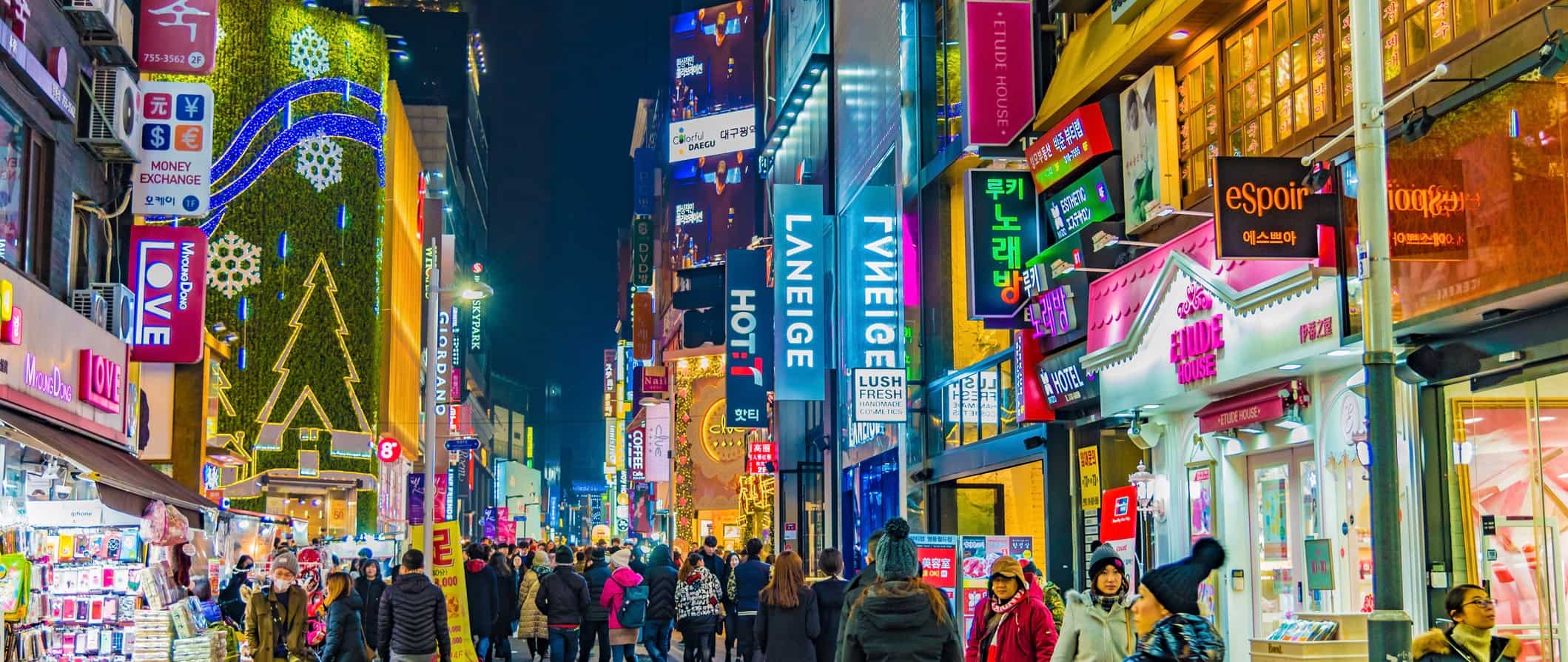
Cheap hotel rooms start at 28,000 KRW for a room that sleeps one, while a double room generally costs at least 40,000 KRW. Expect basic amenities like Wi-Fi, a TV, air conditioning, and an electric teapot. Breakfast is usually not included at budget hotels.
Airbnb is available around the country, with private rooms starting at 25,000-30,000 KRW. For an entire home or apartment, expect to pay at least 50,000-70,000 KRW per night.
While wild camping is illegal in Korea, there are plenty of campgrounds should you want to pitch a tent. Expect to pay 7,000-20,000 KRW for a plot with access to bathroom and shower facilities, and usually even Wi-Fi.
Food – Korean cuisine has developed its own traditions and flavors over the centuries, with a unique emphasis on using uncooked, fermented, and pickled vegetables. Traditional Korean meals are often composed of a variety of side dishes, eaten with short-grain rice. A meal isn’t considered complete unless there’s kimchi on the table.
Common dishes include bulgogi (marinated, grilled beef), samgye-tang (chicken and ginseng soup), bibimbap (a mixed rice bowl), chap chae (a glass noodle dish), and many other noodle and rice dishes. Popular street foods include hotteok (a sweet, filled pancake), tteokbokki (spicy cylindrical rice cakes), and bungeo-ppang (a fish-shaped pastry filled with red bean paste).
Dining out in South Korea is relatively inexpensive. A meal at a casual restaurant serving traditional Korean food is around 9,000-15,000 KRW, while a three-course meal at a mid-range restaurant is around 25,000-30,000 KRW. Expect higher prices in larger cities.
Western food is more expensive. Expect to pay at least 20,000 KRW for a pasta dish at an Italian restaurant.
In terms of fast food, a combo meal (think McDonald’s) is around 7,000 KRW, while a burger is around 4,500 KRW. A typical Korean street food dish is 1,500-3,000 KRW.
A pint of beer is 4,000-5,000 KRW, a glass of wine is 6,000 KRW and up, and a cocktail is 7,000 KRW and up. A latte or cappuccino is 5,000 KRW.
If you cook your own food, expect to pay 50,000-70,000 KRW per week for basic staples like rice, pasta, vegetables, and some meat. Shopping at local markets is the best way to get great fresh produce for cheap.
Backpacking South Korea: Suggested Budgets
On a backpacking budget of 75,000 KRW per day, you can stay in a hostel dorm, cook all your meals, use public transportation and intercity buses to get around, skip the alcohol, and do mostly free activities like walking tours and hiking.
On a mid-range budget of 135,000 KRW per day, you can stay in a private Airbnb or cheap hotel, eat out for most meals at casual restaurants, enjoy a few drinks, take the occasional taxi as well as trains between cities, and do more paid activities like museum visits and food tours.
On a “luxury” budget of 255,000 KRW or more per day, you can stay in a nicer hotel or entire Airbnb apartment, eat out pretty much anywhere you want, drink at the bar, get a high-speed rail pass, and do as many guided tours and activities as you want. This is just the ground floor for luxury, though. The sky is the limit!
You can use the chart below to get an idea of how much you need to budget daily. Keep in mind these are daily averages — some days you’ll spend more, some days less (you might spend less every day). We just want to give you a general idea of how to make your budget. Prices are in KRW.
South Korea Travel Guide: Money-Saving Tips
I find South Korea to be one of the best value countries out there. It’s a really affordable place to visit. Accommodation can add up but food and drinks are generally cheap. Here are some ways to save money when you travel around South Korea:
- Visit the free attractions – With countless museums, shrines, temples, historic neighborhoods, and parks, Korea is filled with opportunities to become immersed in its culture. Many of the nation’s museums and cultural attractions are free, so don’t pass them up!
- Purchase a KORAIL Pass – If you want to travel by train, getting a rail pass is the most economical way to do so. You’ll get unlimited train travel for the time period you choose (2-5-day increments). Prices start at 121,000 KRW.
- Get a transit pass – Most major cities in Korea offer a day pass for public transit, which means great savings if you plan to hop around using buses and subways. Seoul’s day pass costs 15,000 KRW, though the longer you stay, the more you’ll save (a seven-day pass is 64,500 KRW).
- Buy a city pass – If you plan on visiting a lot of attractions, buy a city pass . Seoul and Busan both offer ones that include admission to popular sights, a transit pass, and discounts to restaurants and other attractions. A one-day pass starts at 33,000 KRW.
- Eat from the convenience stores – Convenience stores in Korea offer not only snacks and drinks but prepared boxed meals and cheap alcohol. If you’re on a tight budget, shop in those.
- Take the bus – While the trains are fun, the cheapest way to get around Korea is by bus. They take longer but are much cheaper, so if you have the time, opt for long-distance buses. Just show up at the bus station to reserve your tickets in advance, as most websites and apps are in Korean.
- Stay with a local – Couchsurfing lets you stay with a local for free, cutting your accommodation costs drastically. You’ll get to spend time with someone who can share their tips and advice in exchange for your own travel stories and culture. You can also use the app to meet people for activities (coffee, museum visits, etc.) if you don’t feel comfortable staying with a stranger.
- Drink like the locals – Soju, the national alcohol of Korea, is incredibly cheap, as is domestic beer. Just be careful to not let it sneak up on you — both monetarily and physically. Korea’s drinking culture is infamous!
- Stay in capsule hotels – If you don’t want to Couchsurf or stay in hostels but still want to save money, capsule or pod hotels are great options. These offer just what you need to sleep (a small, basic pod) yet can be surprisingly comfy and much more affordable than a traditional hotel. Prices start as low as 45,000 KRW per night.
- Bring a water bottle – The tap water here is safe to drink, so bring a reusable water bottle to save money and reduce your plastic use. LifeStraw is my go-to brand, as its bottles have built-in filters to ensure that your water is always clean and safe.
Where to Stay in South Korea
South Korea has plenty of budget-friendly hostels and guesthouses. Here are some of my recommended places to stay when you visit:
- Time Travelers Relax Guesthouse (Seoul)
- Zzzip Guesthouse (Seoul)
- Time Travelers party Hostel (Seoul)
- INSIDE Busan (Busan)
- Jeju Hiking Inn (Jeju)
- Backpacker’s Home (Jeju)
How to Get Around South Korea
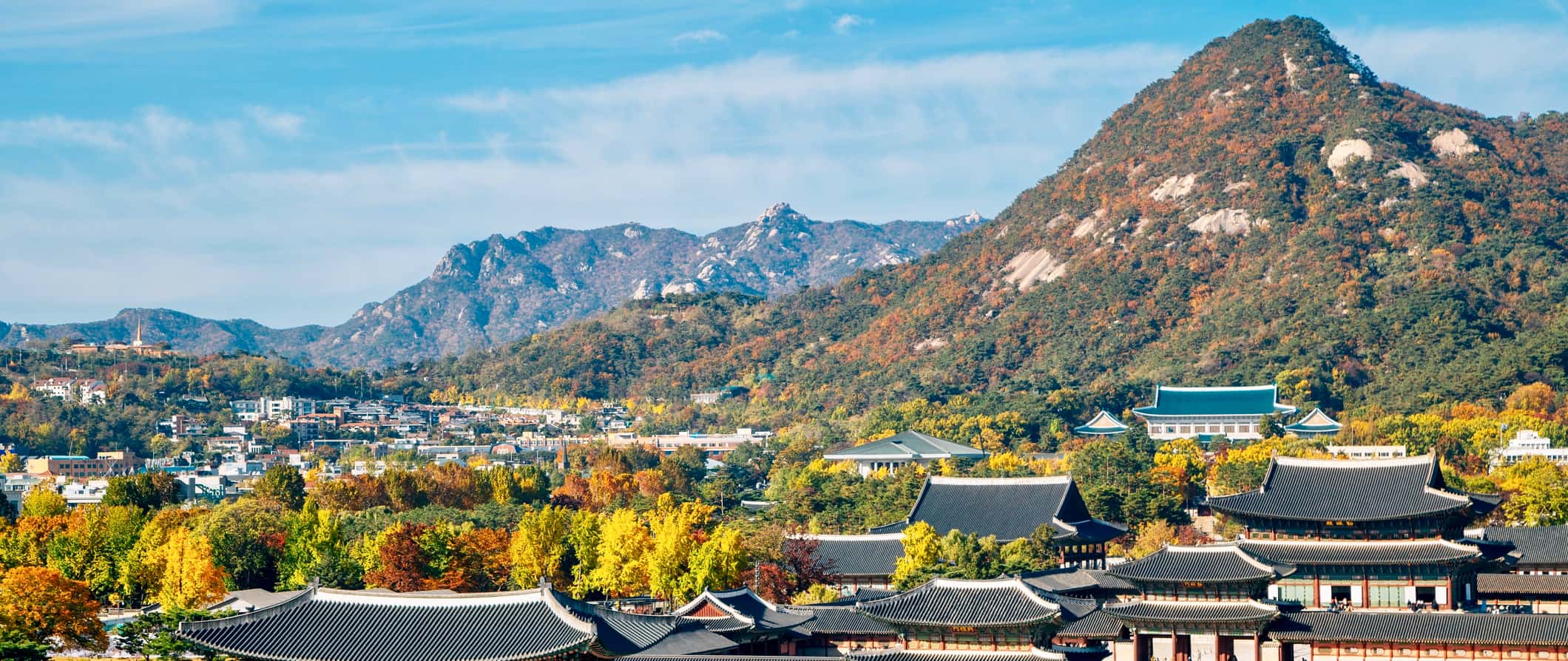
Bus – Taking a long-distance bus is the cheapest and most popular way to get around the country. There are two types: express (which makes few to no stops) and intercity (which travels between smaller destinations and makes more stops).
Your best bet for reserving tickets in advance is to go directly to the bus terminal, as most bus websites and booking apps are in Korean and only accept Korean credit or debit cards.
Pricing depends on what class ticket you choose: standard, luxury, or premium. The four-hour bus ride from Seoul to Busan costs around 36,000 KRW for a standard ticket, Incheon to Busan takes just over four hours and costs 38,000 KRW, and Seoul to Daegu is 29,000 KRW and takes just under four hours.
Train – South Korea has a robust train system that can take you all over the country. Korean Train Express (KTX) is the country’s bullet train, regularly running at speeds up to 305 kilometers (190 miles) per hour. However, these only go between major cities, have limited schedules, and are more expensive, so KTX may not always be the most convenient choice.
KORAIL (the national railway service) operates slower-speed, intercity trains that offer a wider range of schedules and destination choices. You can also get the unlimited KORAIL Pass, which is offered exclusively to international tourists. A two-day adult pass is 121,000 KRW; a five-day adult pass is 210,000 KRW.
As a comparison of the two train types: the journey from Seoul to Busan on a KRX train costs around 90,000 KRW and takes 2.5 hours, while on a regular intercity train, it takes 5.5 hours and costs 47,500 KRW.
The further out you book, the cheaper KTX train prices get, while intercity prices stay about the same. You can book up to a year in advance.
Flying – South Korea is so small that flying around the country doesn’t really make sense. Trains can get you anywhere pretty quickly. However, if you’re very pressed for time and have cash to burn, there are a few budget airlines offering domestic flights between major cities. Most are around one hour long.
The flight from Seoul to Busan is around 30,500 KRW, Seoul to Jeju is 55,000 KRW, and Busan to Jeju is 22,000 KRW. However, you can find flights even cheaper when you book further in advance.
Low-cost airlines in South Korea include the following:
Car rental – Renting a car isn’t incredibly cheap in South Korea. However, it is one of the best ways to explore all the natural wonders that the country has to offer, many of which are inaccessible by public transportation. Expect to pay around 50,000-55,000 KRW per day on a multiday rental. Drivers need to be at least 21 years old.
When to Go to South Korea
Generally, the best times to visit South Korea are March-May and September-November. During these periods, the weather is mild, with temperatures of 10-24°C (50-75°F); prices for accommodation and transportation are lower; and there are fewer crowds.
In the spring, the cherry blossoms are in bloom all over the country, while the fall brings the beautiful colors of the changing leaves. Also, if you plan on doing a lot of hiking, the fall is the best time to visit.
The summer starts with monsoon season, from June through mid-July, and the rest of the summer is hot and humid in the cities (though it cools down in the mountains and along the coasts). Prices for accommodation are also very high during this time.
Winters in South Korea get very cold, with temperatures dipping as low as -6°C (21°F), so unless you plan on skiing, visiting from December through February might not be the best option (though the temples and landscapes look beautiful covered in snow).
How to Stay Safe in South Korea
South Korea is an incredibly safe place to backpack and travel around. Petty crime is rare here, though it never hurts to be cautious on public transportation and around popular tourist landmarks. Always keep your wallet and valuables secure and out of reach, just in case. Violent crime is even more rare.
Solo female travelers should feel safe here. However, the standard safety precautions apply as always. For specific tips, consult one of the many solo female travel blogs on the web.
While scams are super rare in South Korea, to avoid getting ripped off, you can check out this list of common travel scams to avoid .
When hiking, always bring water and sunscreen. Be sure to check the weather before you depart and dress accordingly.
Earthquakes occur regularly in the region, so it’s best to be prepared and download the Emergency Ready app, which the Korean government developed to provide information in English to foreign residents and tourists. It has all kinds of advice and tips for natural disasters, shows you where nearby emergency shelters are, and sends out warnings and notifications should a disaster occur.
If you do experience an emergency, dial 112 for assistance.
Always trust your gut instinct. Make copies of your personal documents, including your passport and ID, and forward your itinerary along to loved ones so they’ll know where you are.
South Korea Travel Guide: The Best Booking Resources
These are my favorite companies to use when I travel. They consistently have the best deals, offer world-class customer service and great value, and overall, are better than their competitors. They are the companies I use the most and are always the starting point in my search for travel deals.
- Skyscanner – Skyscanner is my favorite flight search engine. They search small websites and budget airlines that larger search sites tend to miss. They are hands down the number one place to start.
- Hostelworld – This is the best hostel accommodation site out there with the largest inventory, best search interface, and widest availability.
- Booking.com – The best all around booking site that constantly provides the cheapest and lowest rates. They have the widest selection of budget accommodation. In all my tests, they’ve always had the cheapest rates out of all the booking websites.
- Get Your Guide – Get Your Guide is a huge online marketplace for tours and excursions. They have tons of tour options available in cities all around the world, including everything from cooking classes, walking tours, street art lessons, and more!
- SafetyWing – Safety Wing offers convenient and affordable plans tailored to digital nomads and long-term travelers. They have cheap monthly plans, great customer service, and an easy-to-use claims process that makes it perfect for those on the road.
- LifeStraw – My go-to company for reusable water bottles with built-in filters so you can ensure your drinking water is always clean and safe.
- Unbound Merino – They make lightweight, durable, easy-to-clean travel clothing.
- Top Travel Credit Cards – Points are the best way to cut down travel expenses. Here’s my favorite point earning credit cards so you can get free travel!
South Korea Travel Guide: Related Articles
Want more info? Check out all the articles I’ve written on Asia travel and continue planning your trip:
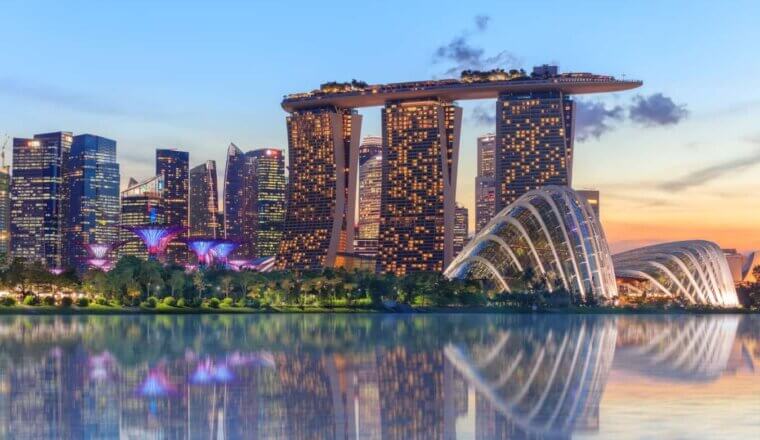
The 5 Best Hotels in Singapore
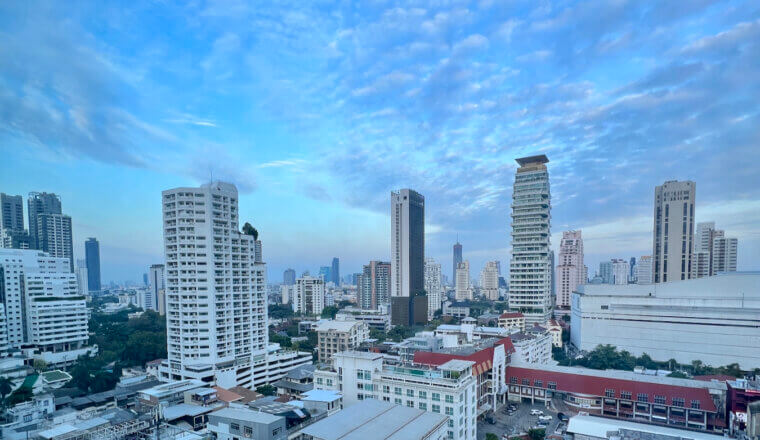
The 7 Best Hotels in Bangkok

The 4 Best Hostels in Singapore
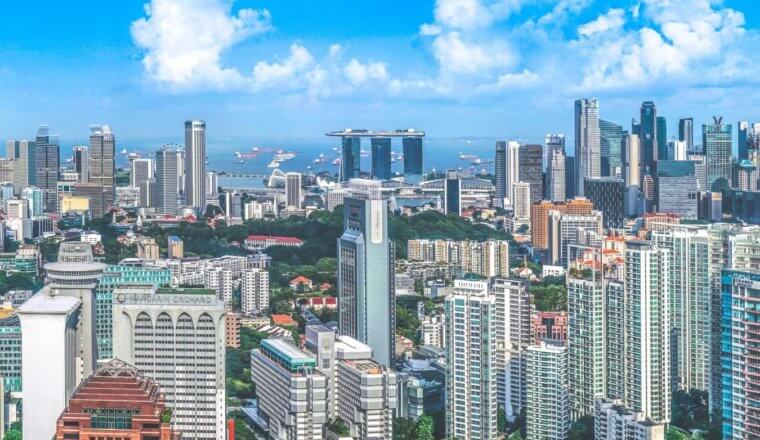
Where to Stay in Singapore: The Best Neighborhoods for Your Visit
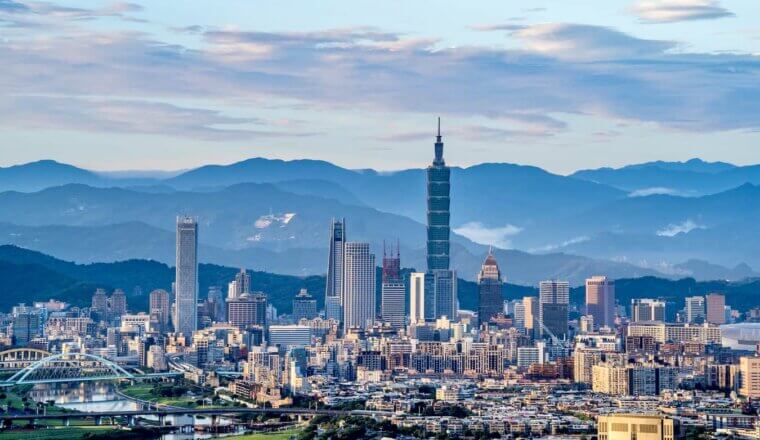
The 13 Best Things to See and Do in Taipei
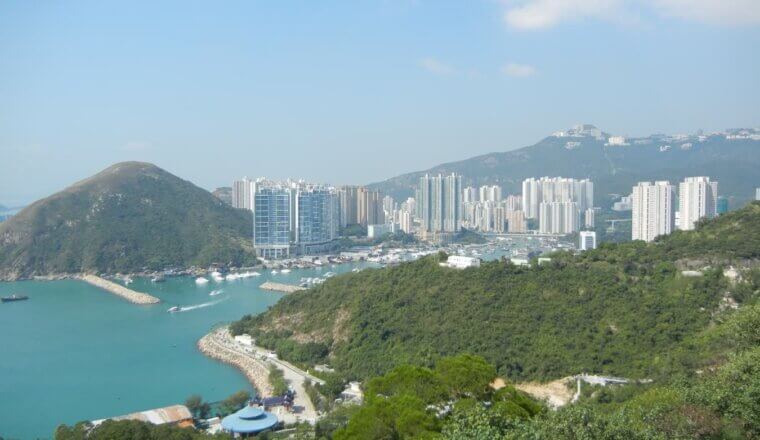
The 23 Best Things to Do in Hong Kong
Get my best stuff sent straight to you, pin it on pinterest.
- Where To Stay
- Transportation
- Booking Resources
- Related Blogs
16 things to know before heading to South Korea

Feb 18, 2024 • 10 min read
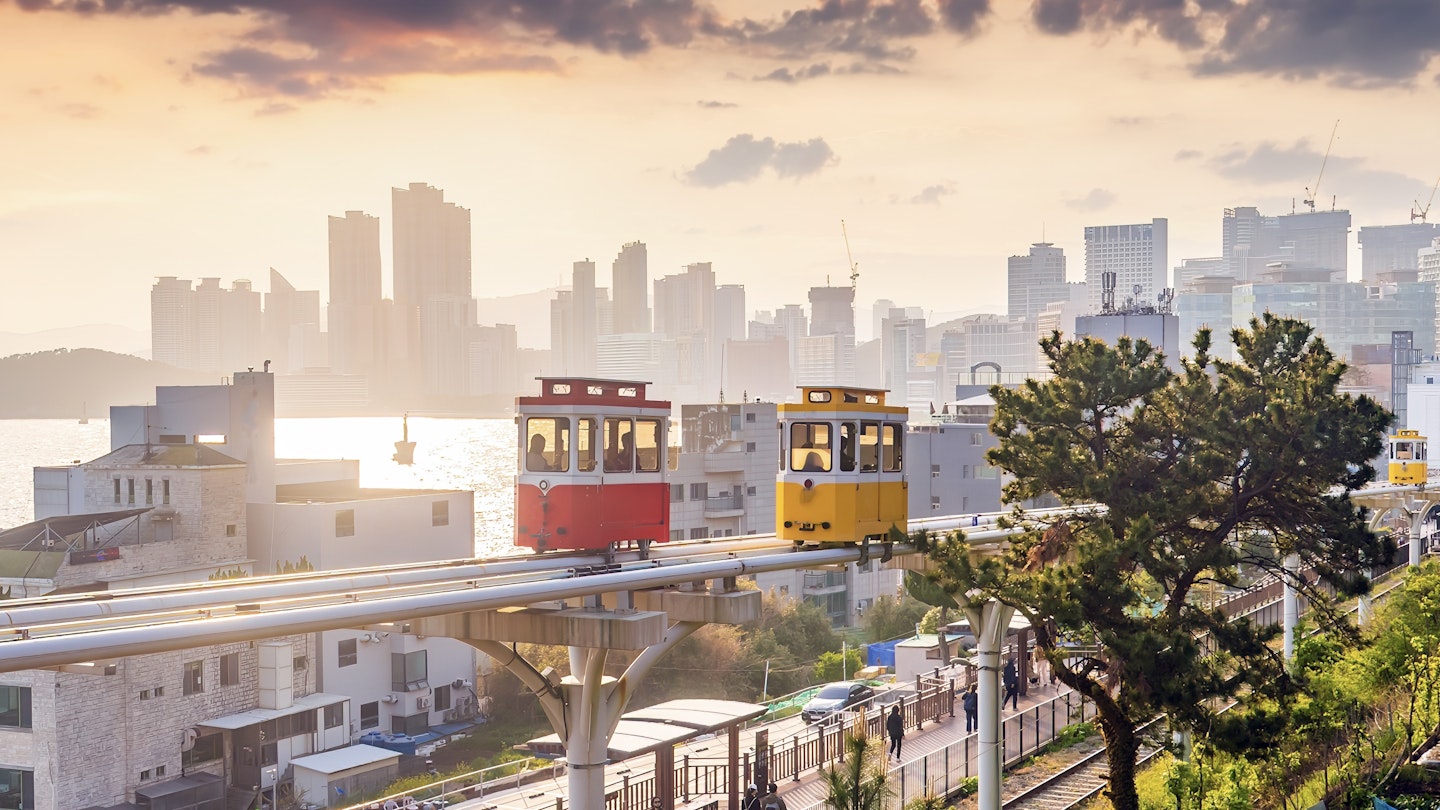
South Korea’s public-transport choices – including Busan’s Sky Capsule – are the envy of the world. As you plan your trip, count on using the nationwide network © By f11photo / Shutterstock
Has any place been on a run of late like South Korea ?
The country is on the lips of travelers around the world, thanks to its cutting-edge technology, world-class cuisine, chart-topping pop bands and some of the most exciting movies and TV series being made anywhere.
Add to all this centuries of tradition and copious natural blessings, all in a country scarcely larger than Ireland, and you’ve got one of the planet’s great travel destinations.
Safe, friendly and possessing superb infrastructure, South Korea is a truly easy – not to mention rewarding – place to explore. Read on for tips to make your visit even easier.
1. Complete your pre-trip registration three days before your flight
Most travelers – including citizens of the US, Australia and the UK – can visit South Korea visa-free for up to 90 days (up to six months for Canadians). You’ll still need to apply for a Korea Electronic Travel Authorization on the K-ETA website , however, at least 72 hours before departure. It’s a simple process, and your K-ETA is valid for two years from the date of approval.
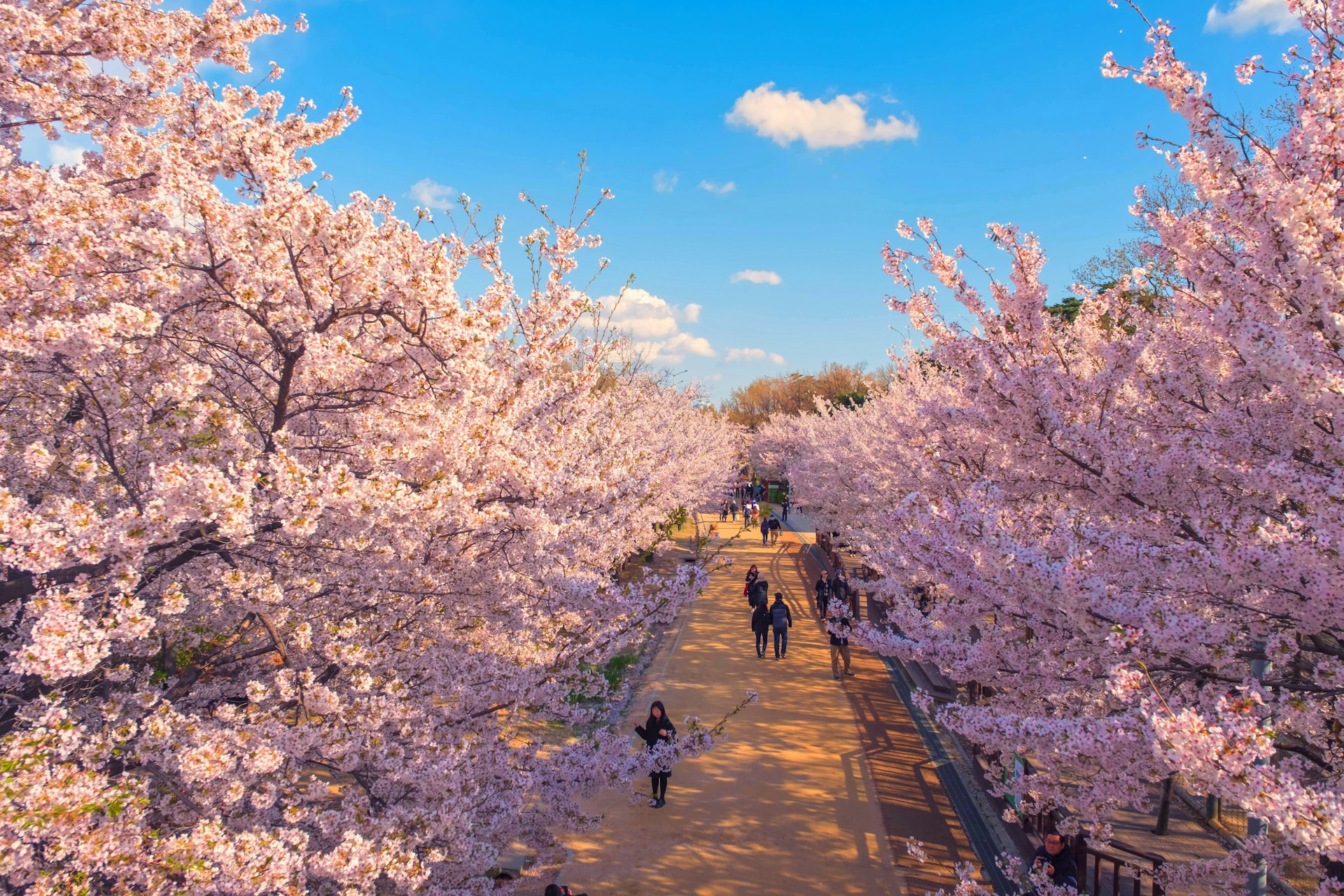
2. Time your visit with the trees
We recommend planning your visit to South Korea for spring or fall , when the peninsula gets its most temperate weather. Bonus points if you can time it to coincide with one of the country’s two periods of arboreal magic. Korea’s cherry blossoms start blooming in mid-March on Jeju-do Island , off the south coast, and typically appear in Seoul in early April. In late October and early November, the leaves of Korea’s many ancient ginkgo trees turn into brilliant golden torches, giving Seoul and other cities a particularly regal look for several weeks.
3. Mind these two major holidays
The two periods that can cause travelers real problems are the multi-day Lunar New Year and Chuseok (fall harvest) holidays. On these two occasions every year, Koreans hit the road en masse, making booking a bus or train ticket nearly impossible. The dates change each year, so be sure to check when these are before making travel plans.
If you can’t avoid a holiday, base yourself in Seoul or Busan for its duration. Plenty of businesses stay open, and the cities can be surprisingly peaceful with everyone out of town.

4. Take advantage of Korea’s world-class public transportation
Korea’s subways, trains and buses are clean, convenient and efficient . It can sometimes seem like a new station is added to the Seoul metro every month, and the rail and intercity bus networks will take you to every corner of the country. Public transportation is cheap: bus and subway fares in Seoul start at just ₩1250. In all of South Korea, Jeju-do is the only place where renting a car might make sense, and even there it’s probably not necessary.
With plentiful English information and sensible design, public transportation in Korea makes getting from here to there a breeze. To get moving, start by picking up a T-money transit card at a convenience store or from a vending machine in any subway station. Separate kiosks can be used to load money onto your card. Tap your card both when you board and get off the subway or bus. Fares are calculated by distance, so if you forget to tap when disembarking, you’ll be charged more and won’t be able to transfer for free. You can also use T-money cards in most taxis.
When traveling longer distances, it’s simple enough to just buy intercity bus or train tickets at stations. For the high-speed KTX train and some of the more popular routes and times – departing Seoul on Saturday morning, for example – it’s a good idea to purchase in advance. Bus tickets are typically readily available for purchase from machines and counters in bus stations. Buy train tickets on the website of KORAIL , the national operator.
5. Stay connected with these essential apps
Wi-fi is so prevalent in Korean cities that you can do without a local SIM card, but if you decide that you want one just in case, or if you plan to head to rural areas, the easiest place to pick one up is at one of the many telecom roaming centers at Incheon Airport upon arrival. You can also rent a phone if you didn’t bring your own.
Helpful apps to download include Naver Map ( iOS and Android ), which works better than Google Maps in South Korea; MangoPlate ( iOS and Android ) for finding restaurants and cafes; Subway Korea for navigating cities’ metro systems; and Kakao T ( iOS and Android ), which is like Uber but for taxis.
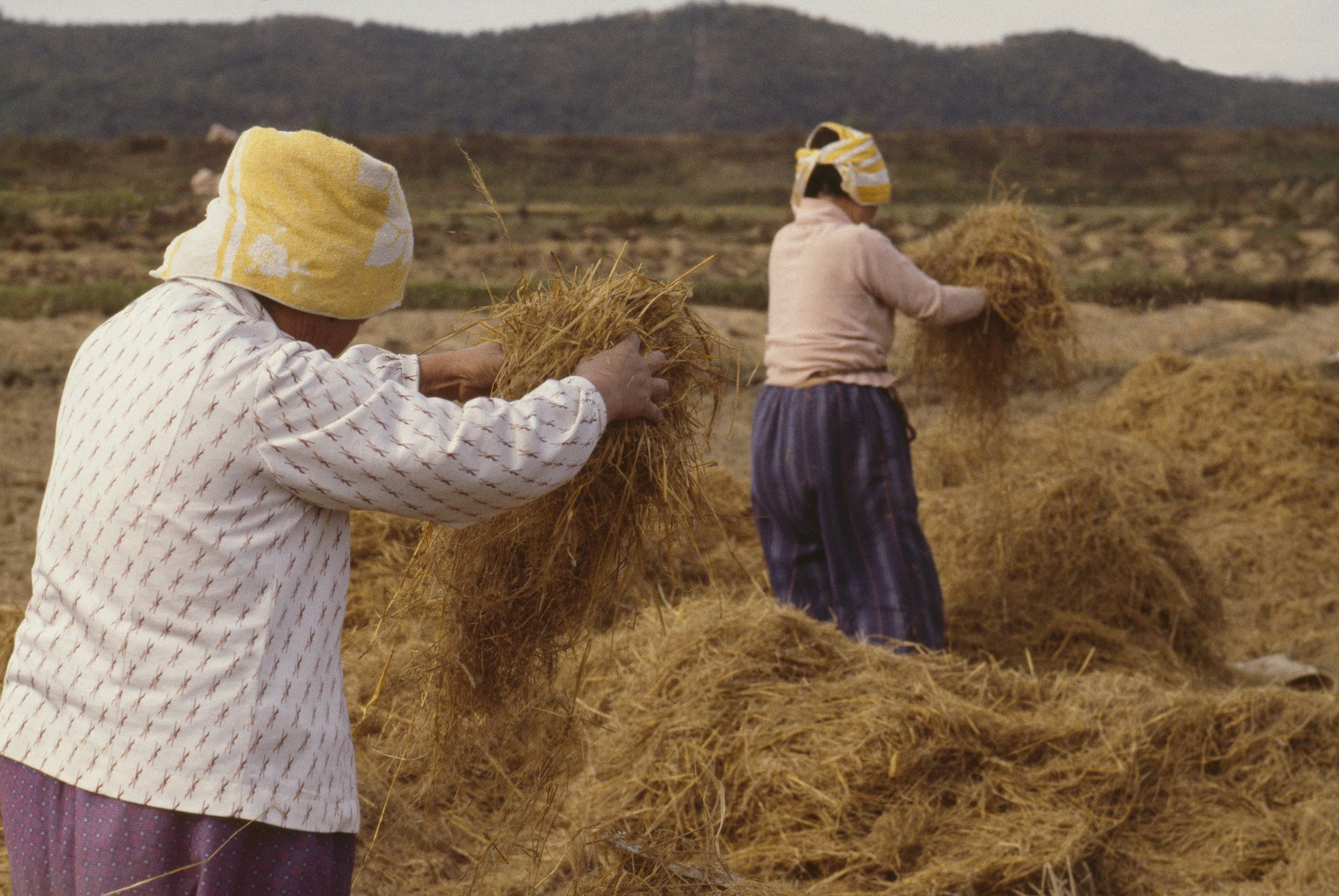
6. Get out of town
There are two Koreas. We don’t mean North and South, but rather Seoul and everything else – or, a bit more broadly, urban Korea and rural Korea. The country has a reputation for being a hyper-paced, highly wired pop-culture dynamo, but its hinterlands present a much different picture, and you’d be missing out big time if you skip them.
The Korean countryside is beautiful, mountains and rivers make for beautiful vistas, and life is lived differently here than in the cities. The population is older – most people under 40 have decamped to the cities – and the pace is slower. At least once on your trip, get out of the cities and immerse yourself in this more traditional side of Korea.
7. Learn your ga , na , da , ra , ma , bas
Basic English is widely understood in Korea by folks under 50, and signage is almost always in both Korean and English. Yet it’s still a good (and respectful) idea to learn a bit of the language.
Beyond memorizing a few essential Korean words and phrases, learning hangul, the Korean alphabet, is like gaining access to a secret bonus level of Korean travel. If you can sound out the letters, you’ll find that you already know what things like 카페 모카 ( ka-pe mo-ka ), 비빔밥 (bibimbap) and 사우나 ( sa-oo-na ) are.
Hangul is easy to learn. King Sejong the Great, who oversaw its creation in the 15th century, declared that a wise man could pick it up before noon and even an idiot could learn it in 10 days. Let’s Learn Hangul teaches the Korean alphabet in an interactive, easy-to-follow way.
8. Roll with the nudges
Koreans live life in a hurry, and they do so in a densely populated country, so you shouldn’t expect the same sense of personal space or public courtesies you find in your home country. Koreans won’t hold doors open for you or apologize if they bump into you when walking. When getting on or off the subway, they likely won’t say, “Excuse me” – they’ll just nudge you aside. They’re not being rude, though.
When you live in a city as crowded as Seoul, it’s just not practical to say sorry every time you knock shoulders with someone – you’d be apologizing constantly. This can be maddening to outsiders, but just accept it and roll with the nudges.

9. Be ready to get personal
The typical greeting here is a quick bow – nothing dramatic, just a head nod deep enough for your gaze to meet the floor – but you’ll sometimes be offered a handshake instead. If you are, expect more of a gentle clasp than the old squeeze-and-pump.
You’ll likely be asked questions more personal than you’re accustomed to by someone you just met. At the top of this list is your age. This data point is essential to Koreans, as it informs how they talk to one another: how formal their verb endings should be and whether to use honorifics. Inquiries about marital status, occupation and your opinion of Korea are also common. Answer politely, and feel free to return the question.
10. Wear what you like, but don’t pack anything too risqué
As a traveler, you can feel free to dress for the weather and comfort. Koreans are pretty relaxed about attire, even if they’re more modest than you might expect. If visiting a temple , while shorts are fine, tank tops and miniskirts are not. Both men and women frequently wear t-shirts at the beach (though it’s best to leave the Speedo or thong at home). Korean women almost never wear low-cut tops, and female travelers could find that doing so brings unwelcome looks. Tattoos are now common among young people, yet even still some bathhouses will deny entry if you show any ink.

11. Eat with others and don’t be afraid to shout for service
Eating is a communal activity in Korea, and many restaurants, especially barbecue joints, don’t offer single servings. So if you’re traveling solo, you might either have to drag someone from your hostel along with you (not a tough sell) or loosen your belt and order pork belly for two (poor thing).
At restaurants, servers won’t come check up on you, and most places have call buttons on each table. Give it a push, and someone will be right over. Otherwise, to grab the waitstaff’s attention, raise your hand and shout, “ Yogiyo !” (“Over here!”) Water is usually self-service, and occasionally side dishes are, too. If your server doesn’t set a bottle of water on your table, look around for a water dispenser and stacks of metal cups. At the end of your meal, take the check to the front counter to pay. There’s no tipping.
12. Is North Korea a concern?
Despite international headlines, South Koreans don’t worry about an attack from North Korea – and neither should you. Military clashes are very rare, and danger to civilians is rarer still. A guided tour to the DMZ can be a fascinating and truly find-it-nowhere-else experience. From afar, North Korea can seem almost comical in its eccentricities, but when you’re looking at South Korean soldiers looking at North Korean soldiers looking at you, the geopolitical stakes hit different. Plus, many tours offer what may be your only chance to actually step foot in the world’s most secretive country.
13. Monitor the air quality
Even in post-pandemic times, it’s a good idea to always carry a mask, as air quality can occasionally drop to pretty nasty levels. This is especially true in spring, when dust blown off the deserts of Mongolia and northern China combines with local pollution to create unhealthy air. Download an app like IQAir Air Visual (for iOS or Android ) to keep track of current conditions and the upcoming forecast across the country.
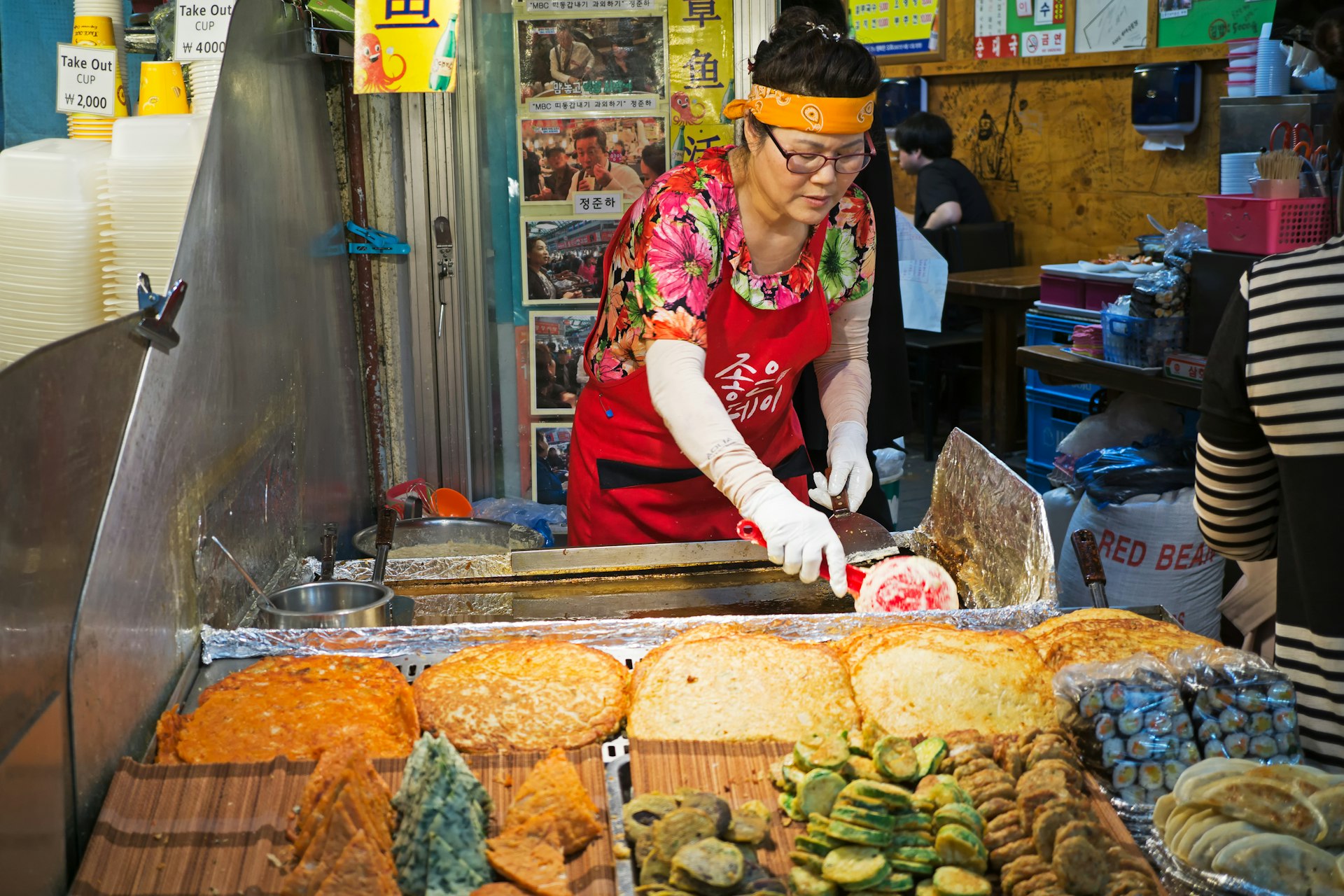
14. You might have to be flexible about your diet
If you have food allergies or a specific diet, you may have a hard time finding places to eat or getting clear information about ingredients. Vegetarianism and veganism are slowly gaining popularity in Korea, but not many restaurants cater to these diets. Even dishes that you might think are vegetarian are often made with anchovy broth or fermented shrimp.
15. Recognize that LGBTQI+ acceptance still has a long way to go
While attitudes are slowly changing, Korea remains a conservative society in many respects, and anti-LGBTQI+ prejudice is common. Even so, LGBTQI+ travelers are more likely to be on the receiving end of curious – if misinformed – questions than any sort of open hostility. Public displays of affection are generally frowned upon (though this goes for straight couples, too).
Seoul has small gay districts in Itaweon and Jongno-3-ga, while the Hongdae-Sinchon-Ewha university corridor is another place where LGBTQI+ Koreans feel comfortable being themselves.
16. Use common sense and keep these numbers handy, just in case
Theft and violent crime are rare in South Korea. Scams and pickpockets targeting travelers are virtually nonexistent, and Koreans typically go out of their way to be hospitable to visitors. Nonetheless – as anyone should anywhere – do exercise basic caution and common sense. South Korea has strict drug laws, and don’t even think about trying to sneak past them. Nightlife often revolves around heavy drinking, so know your limit to avoid putting yourself in a sketchy situation.
If you do have an emergency, call 112 to reach the police, 119 for emergency services or 1330 to reach the Korea Travel Hotline, where an operator will connect you to the appropriate service and serve as an interpreter. That number can also be used to reach the Korea Tourist Police .
This article was first published July 2022 and updated February 2024
Explore related stories
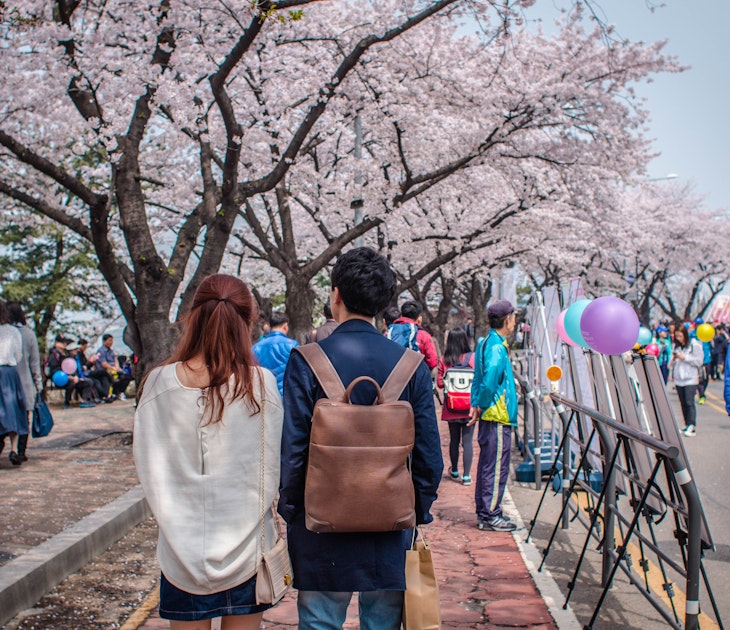
Public Transport
Feb 10, 2024 • 8 min read
Make the most of Seoul's incredible public transport but don't miss out exploring on foot.

Mar 28, 2024 • 7 min read

Feb 27, 2024 • 6 min read
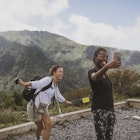
Feb 20, 2024 • 6 min read
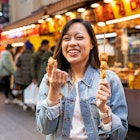
Feb 19, 2024 • 8 min read
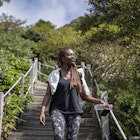
Feb 18, 2024 • 4 min read
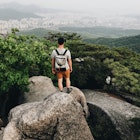
Feb 18, 2024 • 7 min read

Feb 17, 2024 • 10 min read
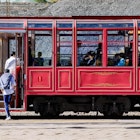
Feb 17, 2024 • 8 min read
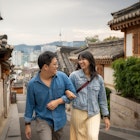
Feb 17, 2024 • 6 min read
Travel Guide South Korea
Book your individual trip , stress-free with local travel experts
- roughguides.com
- South Korea
- Travel guide
- Local Experts
- Travel Advice
- Accommodation
Plan your tailor-made trip with a local expert
Book securely with money-back guarantee
Travel stress-free with local assistance and 24/7 support
The Korean peninsula is a tantalizingly unexplored slice of East Asia – a pine-clad land of mountains, misty archipelagos and rice paddies of emerald green, studded with urban pockets of incomparable joie de vivre . While its troubled history has made Korea’s very existence nothing short of miraculous, amazingly its traditions and customs have largely survived intact – and for visitors, this highly distinctive culture is an absolute joy to dive into.
Where to go in South Korea
Country titles, the creation of hangeul, japanese occupation, the taegeukki, winter sonata, tailor-made travel itineraries for south korea, created by local experts.

14 days / from 3800 USD
Culture & Island life
Experience the highlights of Korea with a private guide by your side. Fascinating Seoul with a day trip to the DMZ, followed by days in Gyeongju and Busan. Afterwards, leave the mainland and fly to Jeju Island. Enjoy the crystal blue waters and island culture.

11 days / from 2400 USD
Highlights of Korea
From the skyscrapers of Seoul to traditional villages - this itinerary packs culture, history and cuisine in one compact itinerary. Enjoy a two-night temple stay as well as in-depth guided excursions in Seoul, Gyeongju, Yeosu, and Jeonju.

7 days / from 1950 USD
Temples and Nature in Korea
Start your Korean adventure in Busan. Continue to Yeosu and Suncheon, discovering temples and landscapes on the way. In Suncheon, you will stay at a Korean Buddhist temple. Proceed to the Bamboo Forest of Jeonju before heading to Seoul.
Having gone their separate ways in 1953 after the catastrophic Korean War – essentially a civil war, but one largely brought about by external forces, which left millions dead and flattened almost the whole peninsula – the two Koreas are now separated by the spiky twin frontiers of the Demilitarized Zone. North Korea has armed itself to the teeth since 1953, stagnated in its pursuit of a local brand of Communism and become one of the least accessible countries in the world. Unbelievably, many foreigners seem to expect something similar of South Korea , which shows just how well kept a secret this fascinating place really is: beyond the glittering city of Seoul, gimchi , dog meat and taekwondo , little is known about the country in the outside world (and in actual fact, one of those four has largely gone the way of the dodo anyway).
After the war, the South gradually embraced democracy and has since gone on to become a powerful and dynamic economy. Its cities , bursting with places to visit, are a pulsating feast of eye-searing neon, feverish activity and round-the-clock business. Here you can shop till you drop at markets that never close, feast on eye-wateringly spicy food, get giddy on a bottle or two of soju , then sweat out the day’s exertions at a night-time sauna. However, set foot outside the urban centres and your mere presence will cause quite a stir – in the remote rural areas life continues much as it did before the “Economic Miracle” of the 1970s, and pockets of islands exist where no foreigner has ever set foot.
And for all its newfound prosperity, the South remains a land steeped in tradition . Before being abruptly choked off by the Japanese occupation in 1910, an unbroken line of more than one hundred kings existed for almost two thousand years – their grassy burial mounds have yielded thousands of golden relics – and even the capital, Seoul, has a number of palaces dating back to the fourteenth century. The wooden hanok housing of decades gone by may have largely given way to rows of apartment blocks, but these traditional dwellings can still be found in places, and you’ll never be more than a walk away from an immaculately painted Buddhist temple . Meanwhile, Confucian-style formal ceremonies continue to play an important part in local life, and some mountains still even host shamanistic rituals.
As for the Korean people themselves, they are a real delight: fiercely proud, and with a character almost as spicy as their food, they’re markedly eager to please foreigners who come to live or holiday in their country. Within hours of arriving, you may well find yourself with new friends in tow, racing up a mountainside, lunching over a delicious barbequed galbi , throwing back makkeolli until dawn, or singing the night away at a noraebang . Few travellers leave without tales of the kindness of Korean strangers, and all of them wonder why the country isn’t a more popular stop on the international travel circuit.
Korea is still something of an unknown territory, and more than half of all its visitors get no further than Seoul. One of the largest and most technically advanced cities in the world, the capital regularly confounds expectations by proving itself steeped in history. Here, fourteenth-century palaces, imperial gardens, teeming markets and secluded tearooms continue to exude charm among a maze of skyscrapers and shopping malls. From Seoul, anywhere in the country is reachable within a day, but the best day-trip by far is to the DMZ, the strip of land that separates the two Koreas from coast to coast.

Gyeonggi, the province that surrounds Seoul, is a largely unappealing area dissected by the roads and railways that snake their way into the capital, but two of its cities certainly deserve a visit: Suwon, home to a wonderful UNESCO-listed fortress dating from the late eighteenth century; and cosmopolitan Incheon, where you can eat some of the best food in the country before making your way to the islands of the West Sea. By contrast, the neighbouring province of Gangwon is unspoilt and stuffed full of attractions – in addition to a number of national parks, of which craggy Seoraksan is the most visited, you can head to the unspoilt beaches and colossal caves that surround the small city of Samcheok, or peek inside a genuine American warship and North Korean submarine north of the sleepy fishing village of Jeongdongjin.
Stretching down from Gangwon to the South Sea lie the markedly traditional Gyeongsang provinces, home to some of the peninsula’s most popular attractions. Foremost among these is gorgeous Gyeongju; capital of the Silla dynasty for almost a thousand years, and extremely laid-back by Korean standards, it’s spotted with the grassy burial tombs of the many kings and queens who ruled here. There’s enough in the surrounding area to fill at least a week of sightseeing – most notable are Namsan, a small mountain area peppered with trails, tombs and some intriguing Buddhas, and the sumptuously decorated Bulguksa temple, another sight on the UNESCO World Heritage list. Although less picturesque as a town, Andong is almost as relaxed as Gyeongju, and a superb base from which to access Dosan Seowon, a remote Confucian academy, and the charmingly dusty village of Hahoe, a functioning showcase of traditional Korean life. The region’s rustic charm is actually best appreciated offshore on the windswept island of Ulleungdo, an extinct volcanic cone that rises precipitously from the East Sea, and where tiny fishing settlements cling barnacle-like to its coast. Thrills with a more urban flavour can be had in Busan, Korea’s second city, which has an atmosphere markedly different from Seoul; as well as the most raucous nightlife outside the capital, it has the best fish market in the country, and a number of excellent beaches on its fringes.
Even more characterful are the Jeolla provinces, which make up the southwest of the peninsula. Left to stagnate by the government while Korea’s economy kicked into gear, they have long played the role of the renegade, though this energy is now being rechannelled. Violent political protests took place in regional capital Gwangju as recently as 1980, though the city has reinvented itself to become one of the artiest and most business-savvy in the land. Jeonju has a similar feel, plus a delightful district of traditional hanok housing, and is justly famed for its wonderful, flavoursome cuisine. Earthy Mokpo is the hub for ferry trips to a mind-boggling number of West Sea islands, dotted with fishing communities where life has changed little in decades, while inland there are a number of excellent national parks.
The Chungcheong provinces at the centre of the country are bypassed by many travellers, but this is a shame, as they contain some fine sights. The old Baekje capitals of Gongju and Buyeo provide glimpses of a dynasty long dead, Daecheon beach hosts a rumbustious annual mud festival that may well be Korea’s most enjoyable event, and there are temples galore – the gigantic golden Buddha at Beopjusa is surrounded by 1000m-high peaks, while the meandering trails and vivid colour schemes at Guinsa make it the most visually stimulating temple in the land.
Lying within a ferry ride of the mainland’s southern shore is the island of Jeju, a popular honeymoon destination for Koreans. While it’s undoubtedly a touristy place, it has its remote stretches and anyone who has climbed the volcanic cone of Hallasan, walked through the lava tubes of Manjanggul or watched the sun go down from Yakcheonsa temple will tell you the trip is more than worthwhile.
And finally, of course, there’s North Korea. A visit to one of the world’s most feared and most fascinating countries will instantly earn you kudos – even experienced travellers routinely put the DPRK at the top of their “most interesting” list. Visits don’t come cheap and can only be made as part of a guided tour, but the country’s inaccessibility brings an epic quality to its few officially sanctioned sights.
Discover more places in South Korea

- Gyeongsang Travel Guide
- Jeolla Travel Guide
- Seoul Travel Guide
The Korean peninsula is split into the Republic of Korea (South Korea) and the Democratic People’s Republic of Korea (North Korea). The former is referred to throughout the site as “Korea”; this is how locals refer to their nation when talking to outsiders, though in Korean they use the term “ Hanguk ”. North Korea has, where necessary, been referred to as such, or as “the DPRK”; North Koreans’ own word for both country and peninsula is “ Choson ”.
One thing that will strike you on a trip around Korea is hangeul , the peninsula’s distinctive, almost Tetris-like alphabet. Amazingly, this was a royal creation, having been the brainchild of King Sejong in the 1440s. Most of this creative king’s subjects were unable to read the Chinese script used across the land at the time, so he devised a system that would be easier for ordinary people to learn. Sejong was forced to do much of his work in secret, as the plan did not go down well with the yangban – Confucian scholars who were even more powerful than the royalty at the time. As the only truly educated members of society, the yangban argued fiercely against the change in an effort to maintain their monopoly over knowledge.
Hangeul experienced periodic bursts of popularity, but was almost erased entirely by the Japanese during their occupation of the peninsula (1910–45). However, it’s now the official writing system in both North and South Korea, as well as a small autonomous Korean pocket in the Chinese province of Jilin; it’s also used in Bau-Bau, a small town in Indonesia.
The alphabet, while it appears complex, is surprisingly easy to learn , and demonstrating that you can read even a handful of simple words will generate gasps of admiration across Korea. Just a few hours of hard study should suffice.
• The Korean peninsula is split in two by the 4km-wide Demilitarized Zone (DMZ), sharing borders with China and – for about 20km, south of Vladivostok – Russia. These frontiers form a northern boundary with North Korea – the “Democratic People’s Republic of Korea” – whose population of around 24 million live in an area half the size of the United Kingdom. South Korea , also known as the “Republic of Korea”, is slightly smaller and has a population of 51 million, making it the world’s 26th most populous country.
• Ethnic Koreans dominate the peninsula's population, making North and South Korea two of the most ethnically homogeneous societies on earth. Before splitting, both were traditionally Buddhist nations – though deeply steeped in Confucianism and shamanistic ritual. Since then the North has followed Juche, a local brand of Communism, while in the South Christianity has become the most popular religion.
• Before the Japanese occupation in 1910, the Silla, Goryeo and Joseon dynasties were ruled over by an unbroken run of 116 monarchs , dating back to 57 BC.
• The economies of South and North Korea were almost equal in size until the mid-1970s. The “Economic Miracle” that followed in the South has propelled it to the cusp of the world’s top ten economies, while the North languishes just above 100th place.
On even a short trip around the country you’re more than likely to stumble across a special event of some sort. Many are religious in nature, with Buddhist celebrations supplemented by Confucian and even animist events. Most festivals are concentrated around spring and autumn, but there are many spread throughout the year. If you’re heading to one, don’t be shy – the locals love to see foreigners joining in with traditional Korean events, and those who dare to get stuck in may finish the day with a whole troupe of new friends.
Though there are some crackers on the calendar, it must be said that a fair number of Korean festivals are brazenly commercial, making no bones about being held to “promote the salted seafood industry”, for example. Other festivals can be rather odd, including those dedicated to agricultural utensils, clean peppers and the “Joy of Rolled Laver” – you’ll easily be able to spot the duds. The most interesting events are highlighted below, though bear in mind that celebrations for two of the big national festivals – Seollal , the Lunar New Year, and a Korean version of Thanksgiving named Chuseok – are family affairs that generally take place behind closed doors.
Cherry blossom festivals Usually early April. Heralding the arrival of spring, soft blossom wafts through the air across the country, a cue for all good Koreans to lay down blankets at parks or riverbanks, barbeque some meat and throw back the soju .
Jeonju International Film Festival w www.jiff.or.kr . Last week of April. Smaller and more underground than the biggie in Busan, JIFF focuses on the arty, independent side of the movie industry.
Buddha’s Birthday Late May. A public holiday during which temples across the land are adorned with colourful paper lanterns; there’s an even more vibrant night parade in Seoul.
International Mime Festival w www.mimefestival.com . May. Held in the Gangwonese capital of Chuncheon, this foreigner-friendly event is a showcase of soundless talent.
Dano Usually June. A shamanist festival held on the fifth day of the fifth lunar month, featuring circus acts, ssireum wrestling, mask dramas and a whole lot more. The city of Gangneung is host to the biggest displays.
July–August
Boryeong Mud Festival w www.mudfestival.or.kr . Late July. This annual expat favourite pulls mud-happy hordes to Daecheon Beach for all kinds of muck-related fun.
International Puppet Festival Aug. Puppets and their masters come from around the world to flaunt their skills in Chuncheon, a city in Gangwon province.
Firefly Festival Aug. Glow worms are the tiny stars of the show at this modest night-time event, which takes place over a weekend near Muju. One unexpected treat is the chance to don a firefly costume.
September–November
Gwangju Biennale w gb.or.kr. Sept–Nov. A wide-ranging, two-month-long festival of contemporary art, the biennale usually takes place on alternate autumns, though it has also been held in spring.
Andong Mask Dance Festival w www.maskdance.com . Late Sept or early Oct. Legend has it that if a person fails to attend a mask festival in their lifetime, they cannot get into heaven, so if you’re in Korea in the autumn you might as well have a crack at salvation by participating in one of the country’s most popular events – a week of anonymous dancing, performed by the best troupes in the land.
Busan International Film Festival w www.biff.kr . Usually Oct. One of Asia’s biggest such events, BIFF draws in big-shots and hangers-on for a week of cinematic fun (see Busan festivals ).
Baekje Festival w www.baekje.org . Early Oct. This annual event commemorating the Baekje dynasty is held each year in the old Baekje capitals of Gongju and Buyeo.
World Martial Arts Festival Usually Oct. A week-long series of international fisticuff action, held each year in Chungju.
Gimchi Festival Late Oct. In Gwangju. You’ll be able to see, smell and taste dozens of varieties of the spicy stuff, and there’s even a gimchi -making contest for foreigners keen to show off.
Pepero Day Nov 11. A crass marketing ploy, but amusing nonetheless – like Pocky, their Japanese cousins, Pepero are thin sticks of chocolate-coated biscuit, and on the date when it looks as if four of them are standing together, millions of Koreans say “I love you” by giving a box to their sweethearts, friends, parents or pets.
If you’ve done any sightseeing in Korea, you’ll no doubt have come across information boards telling you when, or how often, certain buildings were burnt down or destroyed by the Japanese. The two countries have been at loggerheads for centuries, but the 1910–45 occupation period caused most of the tension that can still be felt today. In this age of empire, Asian territory from Beijing to Borneo suffered systematic rape and torture at the hands of Japanese forces, but only Korea experienced a full-scale assault on its national identity . Koreans were forced to use Japanese names and money, books written in hangeul text were burnt and the Japanese language was taught in schools. These measures were merely the tip of the iceberg, and Japan’s famed attention to detail meant that even the tall trees were chopped down: straight and strong, they were said to symbolize the Korean psyche, and they were replaced with willows which drifted with the wind in a manner more befitting the programme. The most contentious issue remains the use of over 100,000 comfort women , who were forced into slave-like prostitution to sate the sexual needs of Japanese soldiers.
The atomic bombs that brought about the end of the World War II also finished off the occupation of Korea, which slid rapidly into civil war. This post-occupation preoccupation kept both factions too busy to demand compensation or apologies from Japan – they were, in fact, never to arrive. While some countries have bent over backwards to highlight wartime misdeeds, Japan has been notoriously stubborn in this regard – its prime ministers have regularly paid respects at Yasukuni , a shrine to those who died serving the empire, but notably also to at least a dozen Class A war criminals, and school textbooks have increasingly glossed over the atrocities. This has led to repeated and continuing protests; surviving comfort women, having still not been compensated, hold weekly demonstrations outside the Japanese Embassy in Seoul. Korea, for its part, has failed to debate successfully the role of local collaborators during the resistance, or to acknowledge fully in its own schoolbooks and museums the foreign influences that ended both the Japanese occupation and the Korean War.
South Korea’s national flag – the Taegeukki – is one of the most distinctive around, and is heavily imbued with philsophical meaning. The design itself has changed a little since its first unveiling in the 1880s, though its fundamental elements remain the same: a red-and-blue circle surrounded by four black trigams, all set on a white background. The puritanical connotations of the white are obvious, whereas the circle and trigrams offer greater food for thought. The four trigams make up half of the eight used in the I Ching , an ancient Chinese book of divination. Each can represent a number of different concepts: moving clockwise from the top-left of the flag, these may be read as spring, winter, summer and autumn; heaven, moon, earth and sun; father, son, mother and daughter; as well as many more besides.
The circle is split into the “Yin–Yang” shape, its two halves representing opposites such as light and dark, male and female, day and night. Though coincidental, connections with the divided Korean peninsula are easy to find, with two opposing halves forming part of the same whole – the red half is even on top.
Korean drama has recently enjoyed enormous popularity across Asia, with snow-filled Winter Sonata the biggest success to date. The story runs as follows: a boisterous girl named Yujin meets withdrawn Junsang on a bus. Despite being total opposites they fall in love and Yujin lends her gloves to her new man, who promises to give them back on New Year’s Eve. He doesn’t turn up, and Yujin hears that he died in a car accident on the way. Fast forward ten years to Yujin’s engagement ceremony, when she thinks that she sees Junsang – now, for some reason, choosing to wear pink lipstick – through the crowd. She later finds out that it isn’t Junsang but Min-hyung , a successful American architect. Yujin ends up working at the same company, and one further car crash later it transpires that unbeknown to Yujin not only is the man Junsang after all, but that he’s Yujin’s half-brother. As the pair part ways, Yujin hands him the blueprints for a beautiful house she’d designed as a farewell present. Of course, they’re not related after all, and when Yujin returns to Korea from France three years later she finds out that Junsang is in fact the half-brother of her erstwhile fiancé. She then happens across the house that she once handed Junsang in blueprint form, finds him inside – now blind, just to heighten the tragedy – and they fall in love once more.
Junsang got hearts racing all over Asia, and Bae Yong-jun , the actor who played him, is now an international superstar whose face is plastered across all kinds of merchandise – just look at the socks on sale in Seoul’s Myeongdong district. Nowhere was he more successful than in Japan, where he is now revered as Yon-sama , a title roughly equivalent to an English knighthood. Junsang also helped the stereotypically strong-but-sensitive Korean male replace the martial arts hero as Asia’s role model, and Korean men now enjoy considerable demand from females across the continent.
Travel advice for South Korea
From travel safety to visa requirements, discover the best tips for traveling to South Korea
- Eating and drinking in South Korea
- Getting around South Korea: Transportation Tips
- Travel Tips South Korea for planning and on the go
- Culture and Etiquette in South Korea
- How to get to South Korea
- Sports and Outdoor activities in South Korea
- Best time to visit South Korea
The Rough Guides to South Korea and related travel guides
In-depth, easy-to-use travel guides filled with expert advice.

Find even more inspiration here

Planning your own trip? Prepare for your trip
Use Rough Guides' trusted partners for great rates
written by Rough Guides Editors
updated 08.01.2024
Ready to travel and discover South Korea?
Get support from our local experts for stress-free planning & worry-free travels.
- Where to stay
- Travel advice
The Seoul Guide
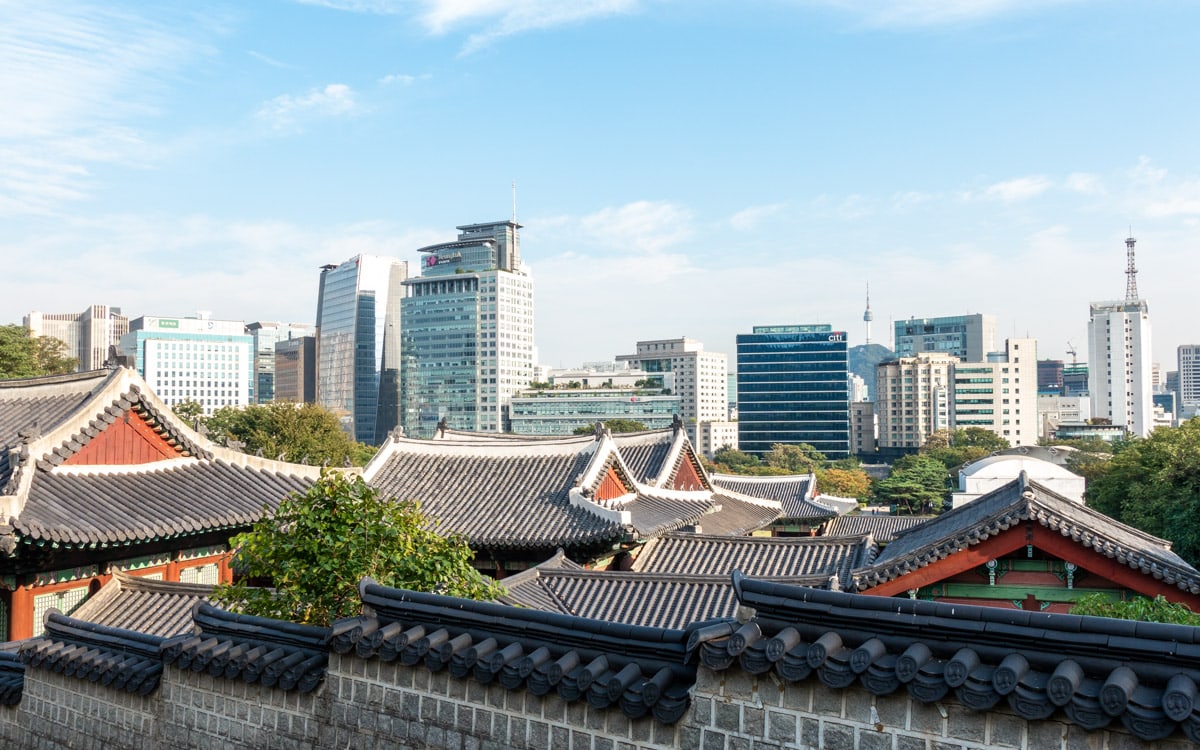
The Seoul Guide is a free online travel guide for visitors planning a trip to Seoul, the historic, cutting edge, and fast-paced capital city of South Korea. This site is designed and intended to help visitors plan their trip, whether it be your first time or 100th. Here you will find information about sights and attractions , transportation and getting around, food and restaurants, and the history of this great country through the use of photos, maps, high definition videos, and more.
For many visitors to Asia, Seoul is one of those places on their wish to visit list. One day, but not today. It’s often bypassed for the tropical beaches of Thailand, historic Japan, or for hectic China. Ask about South Korea to your friends and more often than not, the most they will know about South Korea is about the ongoing conflict with the north. But there’s more to this amazing country with thousands of years of history. In the beautiful city of Seoul, thousands of years of history and traditions coexist with neon signs.
Once a poor and war-torn nation, it has since turned itself around in just 50 years to make it one of the most important financial cities in Asia. This city is a city like no other on earth. Nowhere can you find such a perfect blend of history, cutting-edge technology, and promise for the future.
Seoul has a rich history which can be seen by wandering the grounds of one of the magnificent and historic Five Grand Palaces. It has large, open public parks that will make you forget that you are in the center of one of the largest urban areas in the world.
If you want to shop at any hour of the day, then you will be sure to find an almost endless amount of bustling markets and malls selling everything from fresh fish straight from the ocean at the Noryangjin Fish Market to high end fashion items at the COEX Mall, Asia’s largest underground shopping mall.
You can also find advanced technology, amazing architecture, unique foods and dishes, and friendly locals who are always welcoming to new visitors. Many neighborhoods and districts here have a small town feel to them. A sort of personal and down to earth experience, which is rare for a mega city with a population of over 25 million including its surrounding areas.
This city and its people have a special soul. It is an attack on all senses from the palaces to the markets to the food to the shopping to the people. Only those who have visited this unique destination can truly understand what it is like to be in one of the most dynamic and exciting cities on earth.
Last Updated on Dec 23, 2021

- Accomodation
- Attractions
- Food & Drink
- K-Entertainment Tours
- Korean Culture
- Shopping Destinations
- Transportation
- Travel Essentials
- Travel Tips
- Travel News in Korea
- Gyeonggi-do
- North Gyeongsang (Gyeongsangbuk-do)
- North Jeolla (Jeollabuk-do)
- South Chungcheong (Chungcheongnam-do)
- South Gyeongsang (Gyeongsangnam-do)
- South Jeolla (Jeollanam-do)

First-Timer’s Ultimate South Korea Travel Guide – Things to Know Before Traveling to South Korea

5,026 total views, 3 views today

Before making your travel plans South Korea, check out this South Korea travel guide that will help you in finalizing your travel itinerary!
South Korea is a country of juxtaposition. You can find serene mountain valleys bumping against pulsing lights and rush of 24-hour cities. Korean tradition collides with ultra-modern fashion and design. To experience the depth and vibrancy of the country, you must see the serene countryside as well as rapidly changing cities.
There is something for everyone in the country, whether you like city-life, mountains, beaches, or anything in between. Planning can become a bit difficult as there is so much to see and do in South Korea.
Traveling to a new country like South Korea can be very exciting. It’s a whole new adventure waiting for you, but the entire planning and going to a different country can be a bit distressing. The culture, the people, and the laws governing the country are probably very different from where you are from. This is why we have compiled a guide for you of what to expect when you visit South Korea for the first time.
Table of Contents
South Korea Travel Guide
Most travelers do not need to get a visa to travel to South Korea. You can check the visa requirements on your country’s State Department website. Citizens from many countries have visa-free entry for a limited period under certain conditions. To check whether you can enter Korea without a visa issuance, please contact a Korean Embassy or consular offices in your country or visit the Ministry of Foreign Affairs to confirm.
There are some changes to visa requirements for Jeju Island in lieu of COVID-19 situation worldwide.
The local language is Korean, and it script is Hangeul. But there is no need to worry! There are lots of signs in and around the city in English as well. A lot of restaurant menus also include translations of main dish ingredients.
You can always learn a little Korean before you travel from apps like Duolingo . The locals are definitely going to appreciate your efforts!
Money Matters
The official currency of South Korea is ‘ Korean Won .’ Most places accept credit cards too. Small stores and mom-n-pop food outlets generally accept cash only.
Getting around in South Korea is very easy. There are domestic airlines, trains, and intercity buses. It’s easy to move around within the country. Even intercity travel is very convenient with all the available public transportation.
We have covered transportation in detail in the guide about understanding Korean culture.

Travel Apps
For first time travelers to South Korea, travel Apps are handy and can be useful as guide. The train and bus maps might look complicated, but you can use maps with English translations. Apps like KAKAO Maps and Naver Maps are especially for use in South Korea and are the preferred travel Apps. For more traveling tips, you can download the VisitKorea App. It can provide you with suggestions regarding food, tourist destinations, and many more.
Read More: 10 Best Apps for South Korea Trip You Must Download
There are quite a number of public toilets wherever we go, and they are generally clean. If you can’t find one right away, you can search in any of the travel map Apps “화장실,” which means toilet in Korean. On the other hand, it is challenging to find dustbins around, so you may have to carry your trash for quite a distance before you find one bin.
Read More: Understanding Korean Culture: Hygiene Culture in South Korea
South Korea has four distinct seasons — Spring, Summer, Fall, and Winter. Each season has something unique to offer visitors to the country, but depending on what you want out of your Korean experience, sometimes are better to travel than others. The best time of year to visit South Korea is generally the spring months of April, May & June, and the autumn months of September, October & November. During these two seasons, days are typically sunny and dry with comfortable average temperatures.
Read More: South Korea Travel Guide – When is The Best Time of Year to Visit South Korea?
Drinking-Water
Tap water in South Korea is drinkable. If you are not comfortable with it, you can purchase bottles of water from convenience stores or vending machines.
Accommodation
No matter what your budget is, you will find amazing places to stay during your trip to Korea. You can stay anywhere, ranging from a youth hostel to a luxurious hotel. For a unique cultural experience, you can also arrange a homestay like hanok stay via the Korea Tourism Organization.

Tour and Travel Services
Some places are only accessible with a tour guide or a tour bus to bring you around. The added benefit is that you can relax on the bus while you are going from one destination to the next.
Internet Connectivity
South Korea is a well-connected country. Wherever you are, you will have access to mobile data and public Wi-Fi. Did you know that you can get free WiFi in most of the buses in Seoul?
Read More: Korean Sim Card Guide for All the Travelers
Most tourists are familiar with Korean barbeque and look forward to having the authentic dish right from the source. You can find it in abundance no matter where you go in Korea! To avoid any goof-ups in restaurants, you can check out our restaurant guide . You can also check out the post on Netflix-fame street food places.

Read More: What to Eat in Seoul – Best Korean Food
Shopping Tips
The prices are pretty much fixed in stores. Most store owners hardly speak in English, even in tourist places. You won’t face such problems in popular shopping areas with big brand stores. Some of the shopping places in Seoul include Myeongdong, Dongdaemun, Common Ground , and many others.
Read More: 10 Exquisite Handmade Gifts You Can Buy in Seoul
Travel During COVID-19
The South Korean government raised the coronavirus disease threat alert level to its highest on February 23, 2020. Many attractions have been temporarily closed, and festivals have been postponed or canceled throughout the country. Travelers are recommended to check the attractions’ official website before visiting.
Korea aggressively maps and tracks infected cases. Self-quarantine is strictly monitored and enforced. The country also prohibits individuals who have been in contact with confirmed cases from exiting Korea during the day 14-day self-quarantine period. Korea provides advanced medical care to confirmed patients. The treatment is free-of-charge for both Koreans and foreign nationals.
The KCDC has urged everyone to participate in an enhanced social distancing campaign for the next 15 days (March 22 – April 5). The KCDC strongly recommended that all non-urgent international travel plans be canceled or postponed. Persons who are unable to avoid traveling for a critical reason are advised to refrain from visiting any enclosed facilities or healthcare facilities.
Starting March 22, the KCDC is conducting COVID-19 diagnostic testing for every inbound traveler entering from Europe. Asymptomatic Korean nationals (with domestic residence) will be directed into self-quarantine at home and get tested at their local public health center within 3 days of arrival. Foreigners will be quarantined at the facility and tested.
Apps to Track COVID-19 in South Korea
You can use a locally developed App like ‘Corona 100m,’ which, as its name implies, alerts users if they breach a 100-meter (328-foot) radius of the latest tracked whereabouts of the coronavirus patient. The person using the app can see how close they are to coronavirus patients. It also allows people to see the date that a coronavirus patient was confirmed to have the disease, along with that patient’s nationality, gender, age, and where the patient visited. It was launched on February 11 and had a million downloads in the first 17 days.
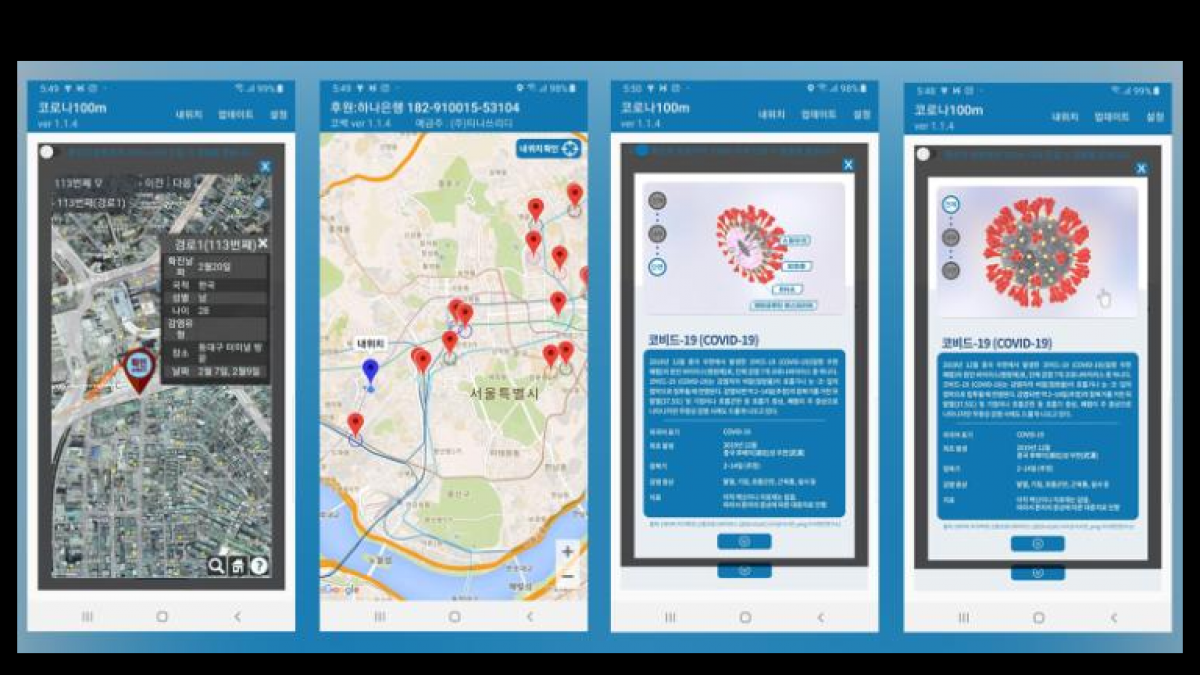
‘Corona Map’ is another such app that tracks the locations of people know to have COVID-19. Like Corona 100m, Corona Map plots the places where people known to have had COVID-19 have been, to make avoiding these areas easier.
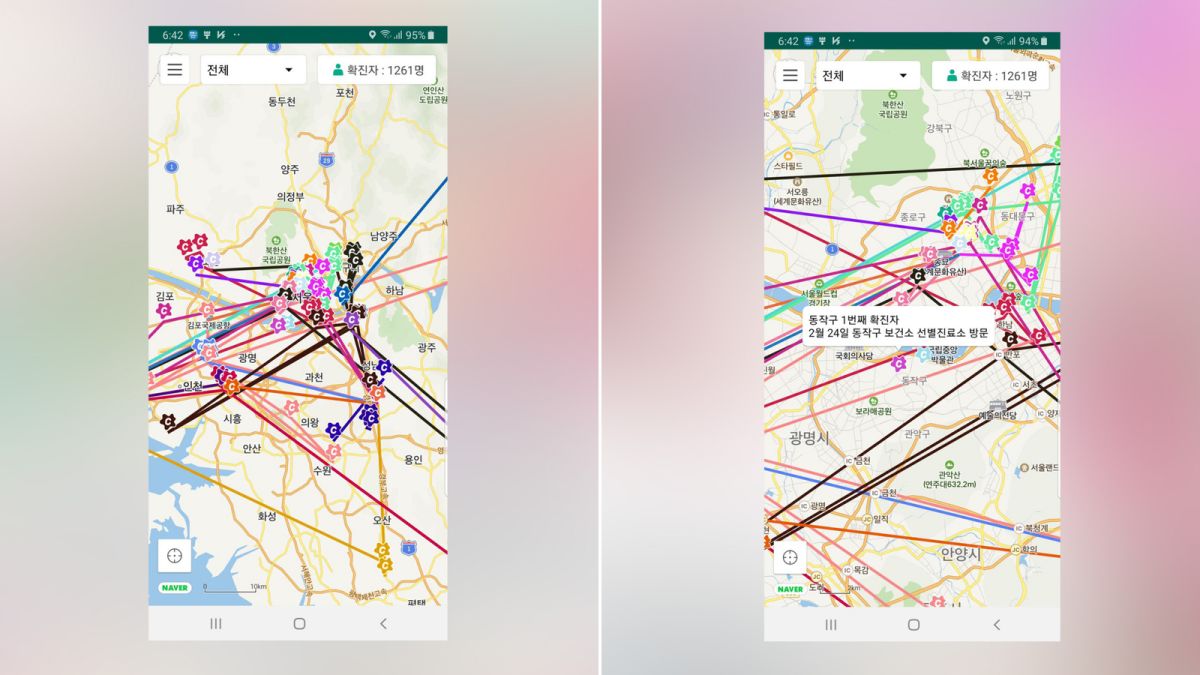
These are some of the essentials that you need to know before making your travel plans to South Korea and this travel guide will be helpful in making your itinerary!
KoreaTravelPost Editor
Hello there! I'm the Features Editor for KoreaTravelPost.
Related Posts
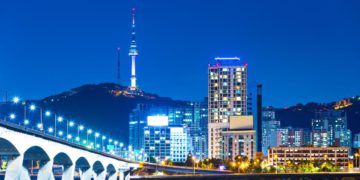
Explore Korea Like a Boss with InterparkTriple TRIPLE Korea
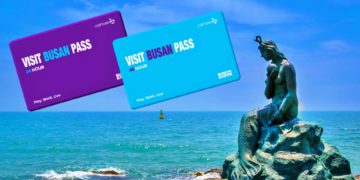
Temporary Suspension of VISIT BUSAN PASS Sales – Important Information for Travelers

Seoul Trip PASS App: Your Ultimate Travel Companion for Hassle-Free ID, Seamless Payments, and Instant Tax Refunds!
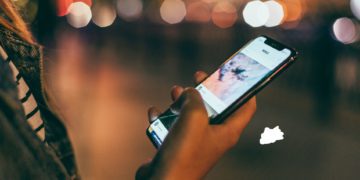
Best Korean to English Translation Apps for Your Korea Trip
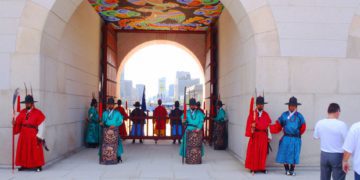
Discover South Korea with the Best: Top 10 Tour Operators
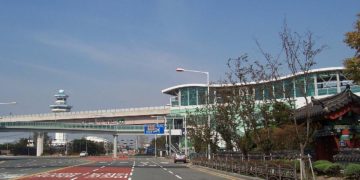
A Complete Guide to Gimhae International Airport

5 Best National Parks in South Korea
Leave a reply cancel reply.
Your email address will not be published. Required fields are marked *
Save my name, email, and website in this browser for the next time I comment.
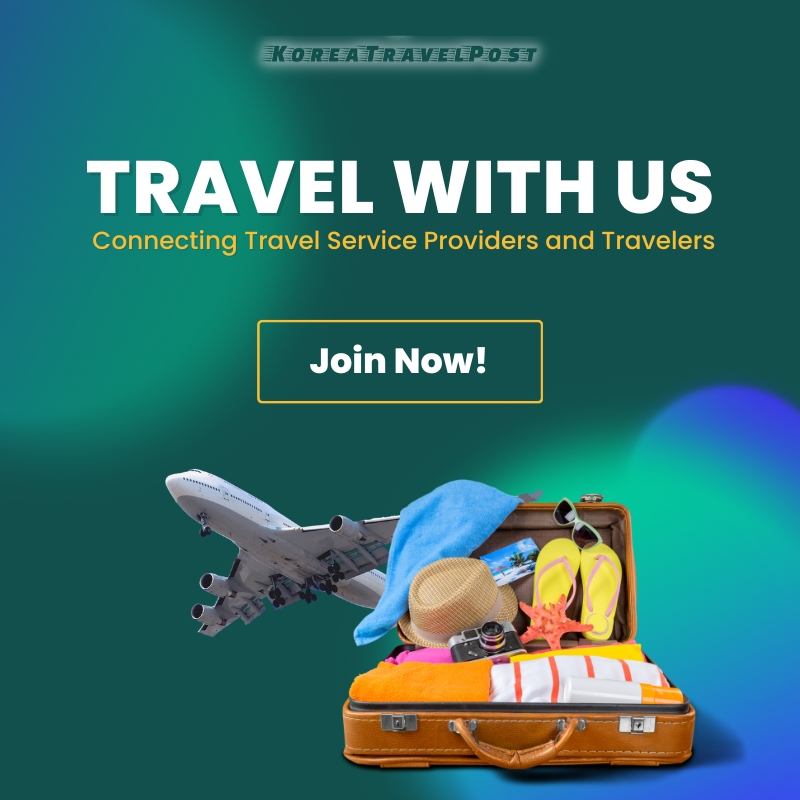
TESSAN Germany France Travel Power Adapter

Lonely Planet Korea 12

Korean Snack Box Variety Pack

OSULLOC Lovely Tea Gift Box Set
More from our network.

- Medical Tourism
FREE NEWSLETTER
Copyright © 2024 About Us| Terms of Use |Privacy Policy| Cookie Policy| Contact : [email protected]
Login to your account below
Fill the forms bellow to register
Retrieve your password
Please enter your username or email address to reset your password.
In My Korea
Plan Your Dream Trip To Korea
Here’s your complete South Korea Travel Guide with all the essential information you need to plan your dream trip to the Land of Morning Calm.
When Are You Visiting Korea?
Start planning your travels to Korea by exploring these season guides, which include the best activities to do in each season, information about the weather in that season, where to see cherry blossoms, autumn leaves, and snow, and lots more.
In My Korea’s Best Articles
These are some of the most popular articles by In My Korea which showcase the best of Korea. These articles include some of the main travel highlights, such as where to see snow in Korea, when to visit for cherry blossoms, and the best autumn foliage sights.
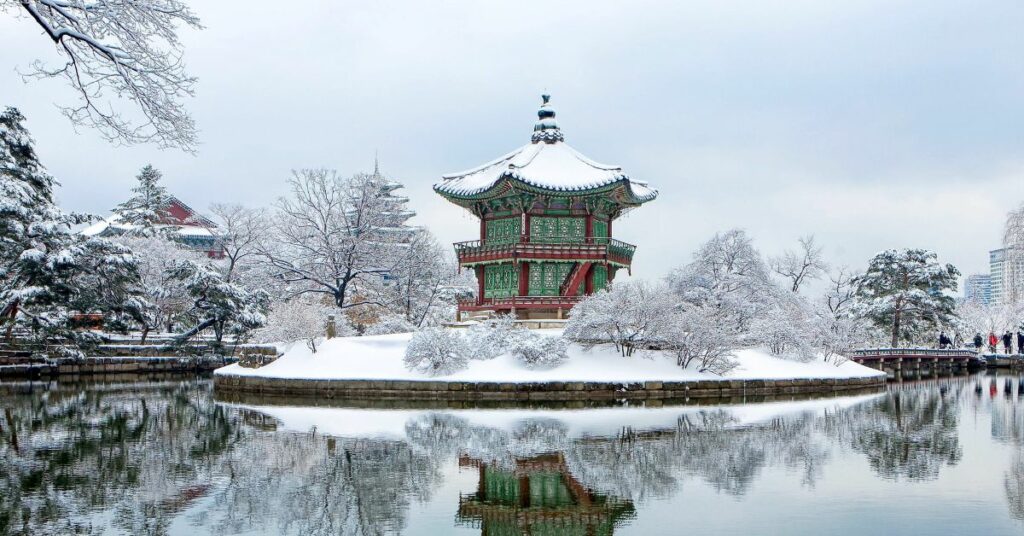
A Guide To Winter In Korea 2024: 20+ Best Winter Activities
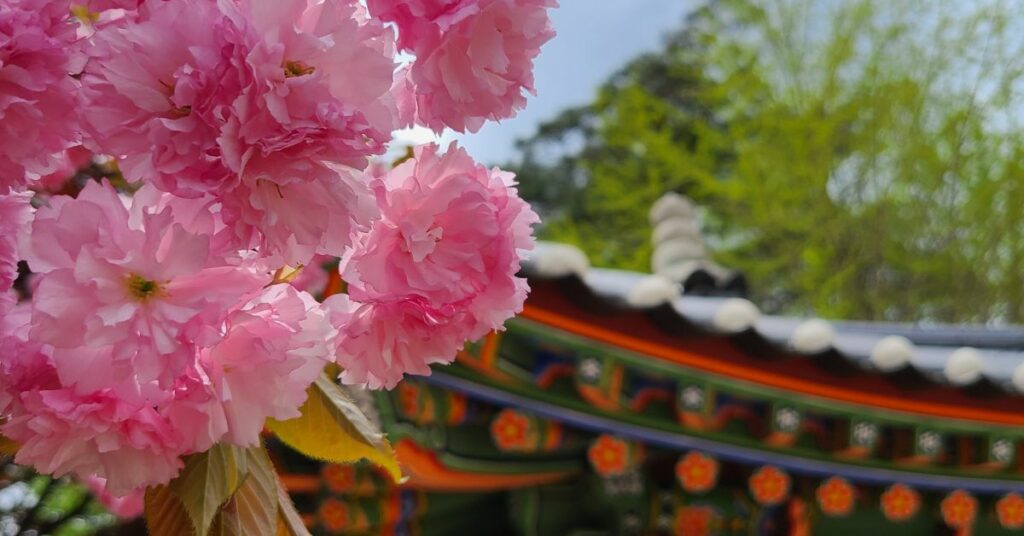
Where To See Cherry Blossoms In Korea 2024: Seoul And Beyond

Where Does It Snow In Korea? Snow In Seoul And Korea 2024
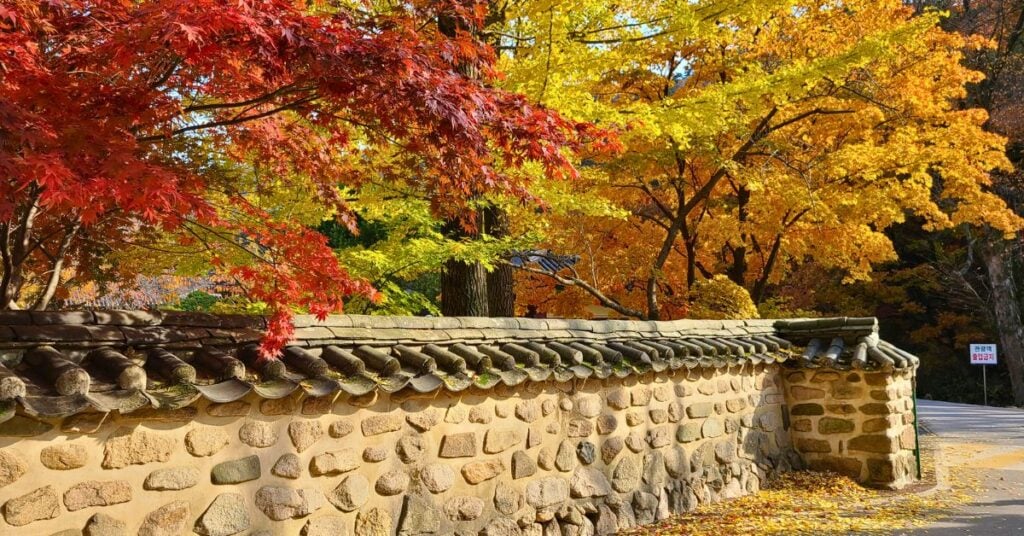
Autumn Leaves In Korea 2024: Best Korean Autumn Foliage Spots
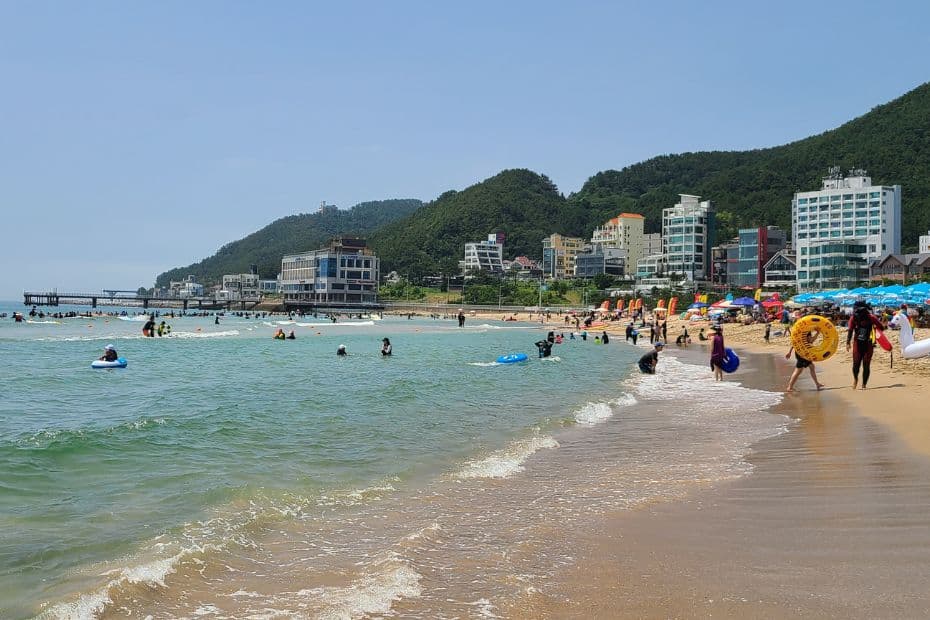
20 Cool Summer Activities In Korea: Korean Summer 2024
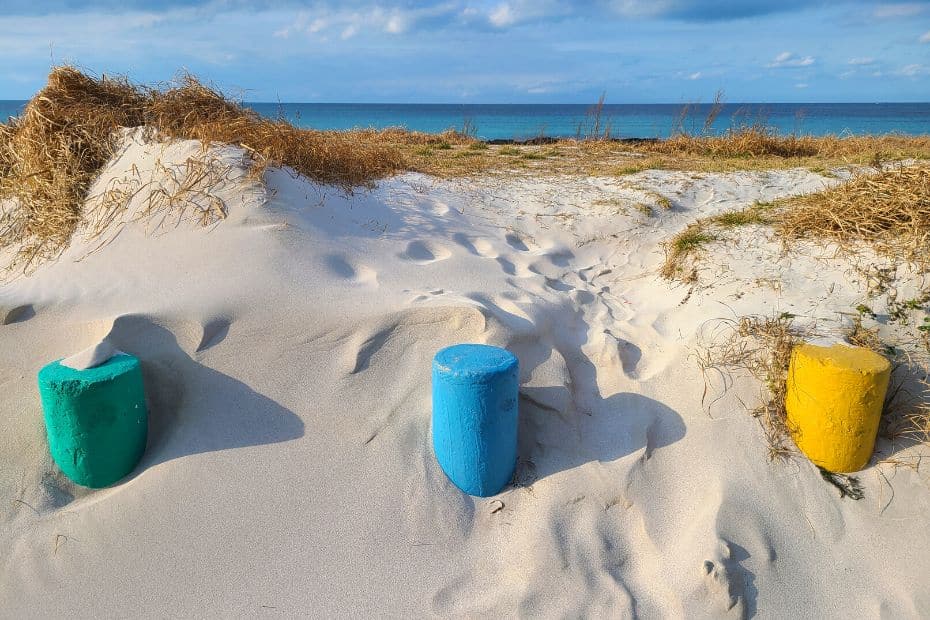
What To Do On Jeju Island In Winter: Jeju Winter Itinerary 2024
Receive the latest articles in your inbox.
You have successfully joined our subscriber list.
Travel Essentials
Travelling to a country like Korea, with a completely different language and culture, might seem a bit daunting for many travellers. That’s why I’ve put together essential travel articles like these to make travelling in Korea easier and to help you save money in Korea.
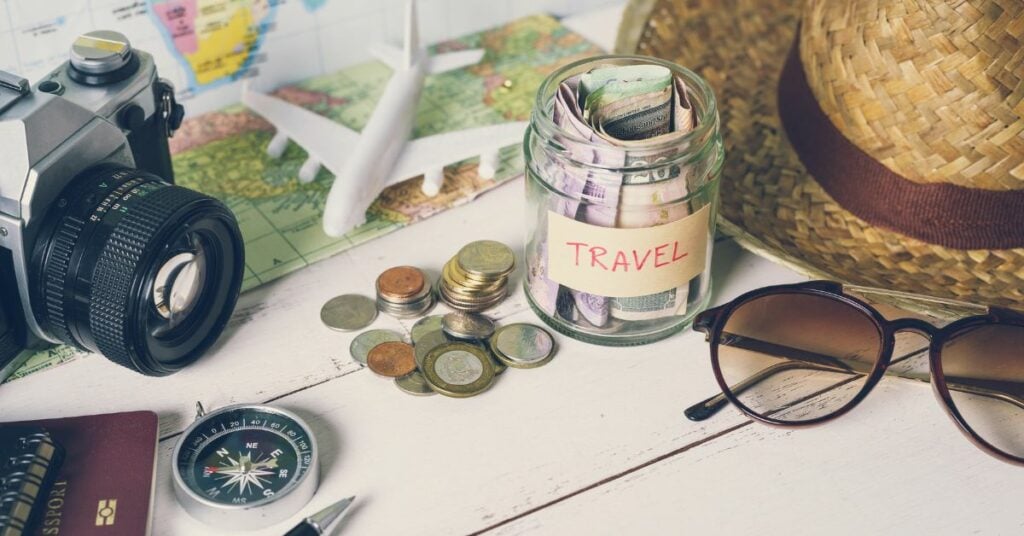
How To Pay In Korea: Cash, Card And Other Payment Methods
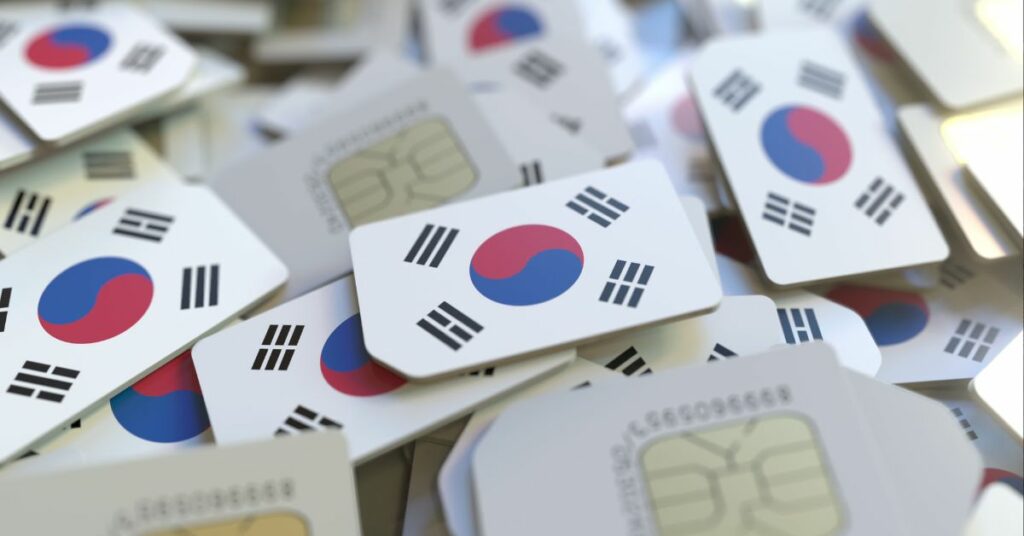
Korean SIM Cards And Tourist ESIMs At Incheon Airport 2024

Flying To Korea: How To Get Cheap Flights To Korea In 2024
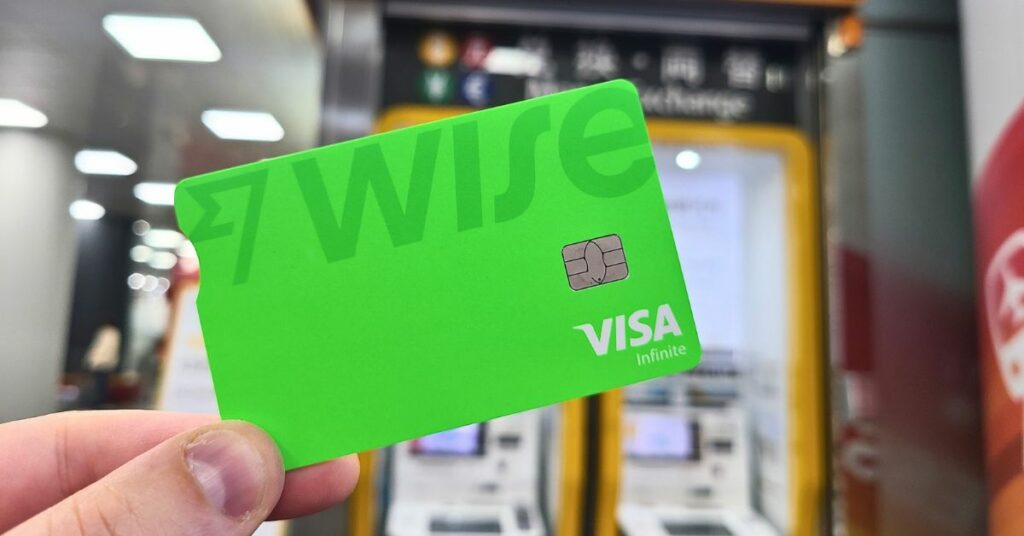
How To Use The Wise Card In Korea For Travel Money And Cash
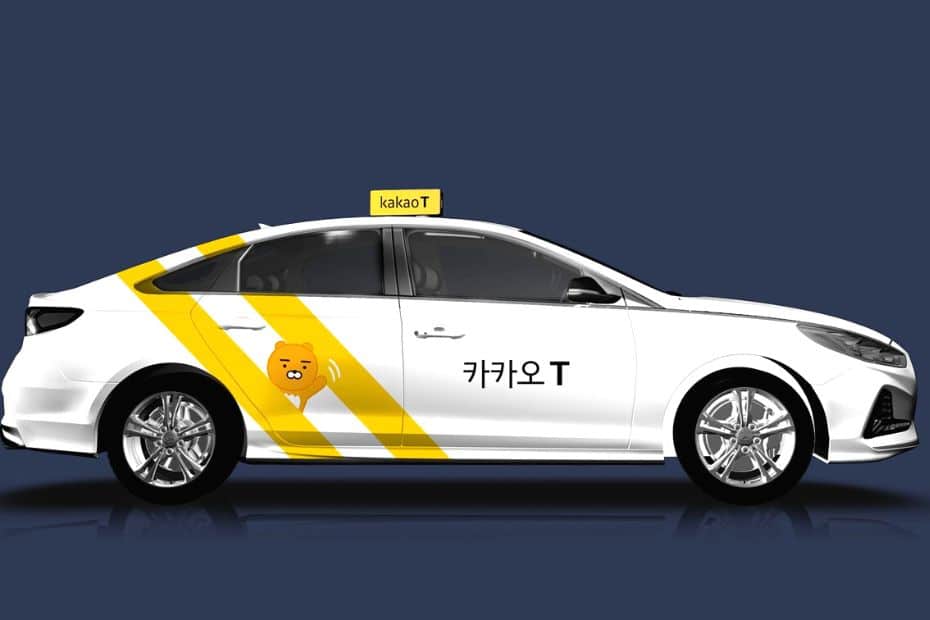
How To Use Kakao Taxi App To Book Taxis In Korea 2024
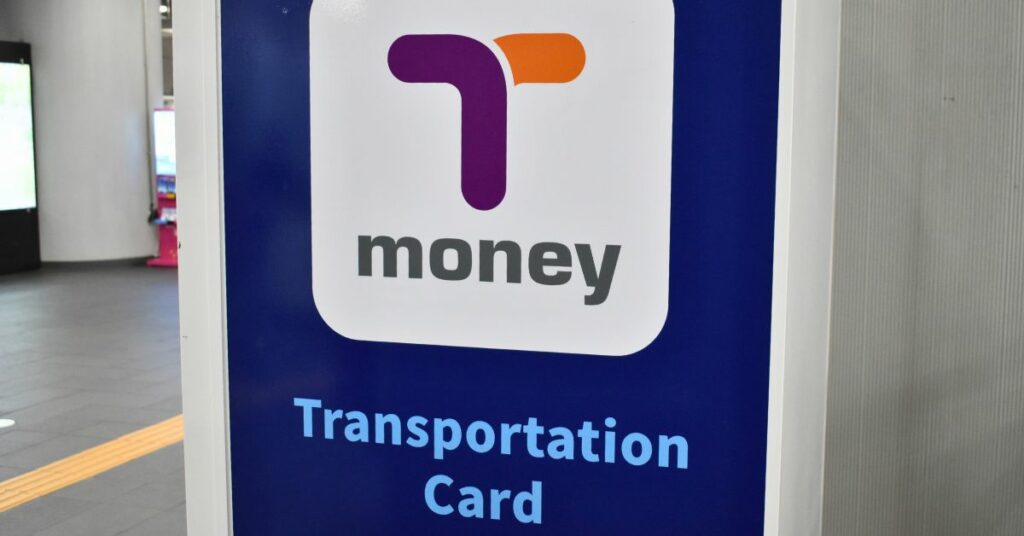
Korea’s T-Money Card Guide 2024: How To Buy And Use T-Money
Where to stay in seoul.
One of the first steps to planning your trip to Korea is deciding where to stay in the capital. These articles will show you the best places to stay in Seoul and help you work out which area is perfect for you and which hotel will suit your needs and budget.

Where To Stay In Seoul 2024: District Guide For Tourists
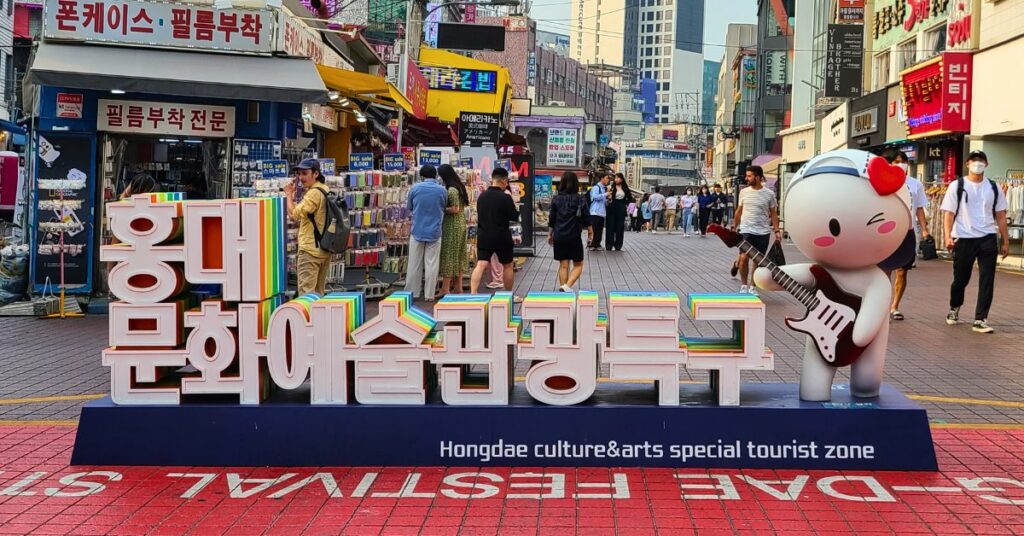
10 Best Hotels In Hongdae 2024: Seoul’s Coolest District
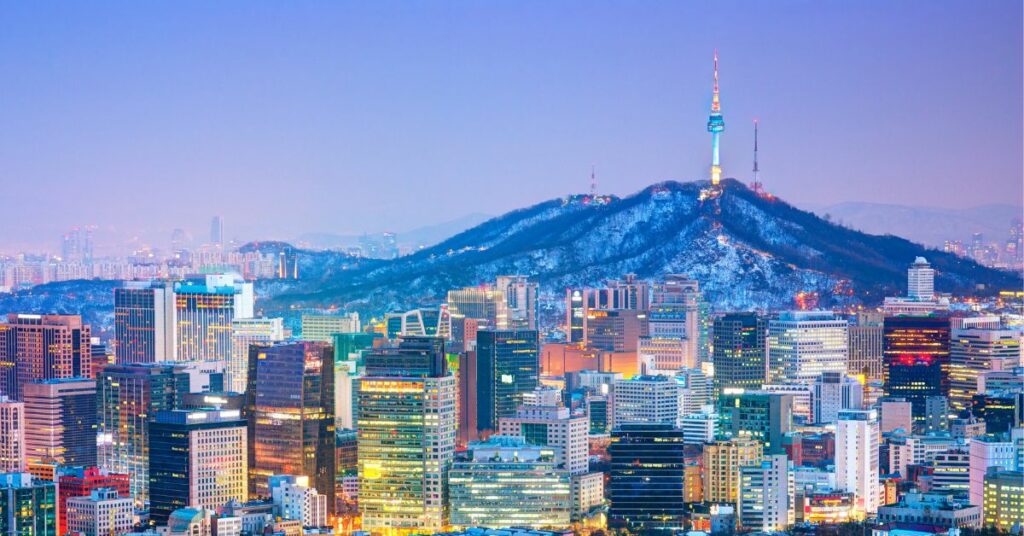
Best Hotels In Myeongdong: Where To Stay & 2024 Travel Guide
Korean food.
Discover the best foods and snacks that Korea has to offer with this mouth watering selection of articles about Korea’s traditional and modern culinary delights. You’re sure to find a few new favourite dishes that you must try when you visit Korea.
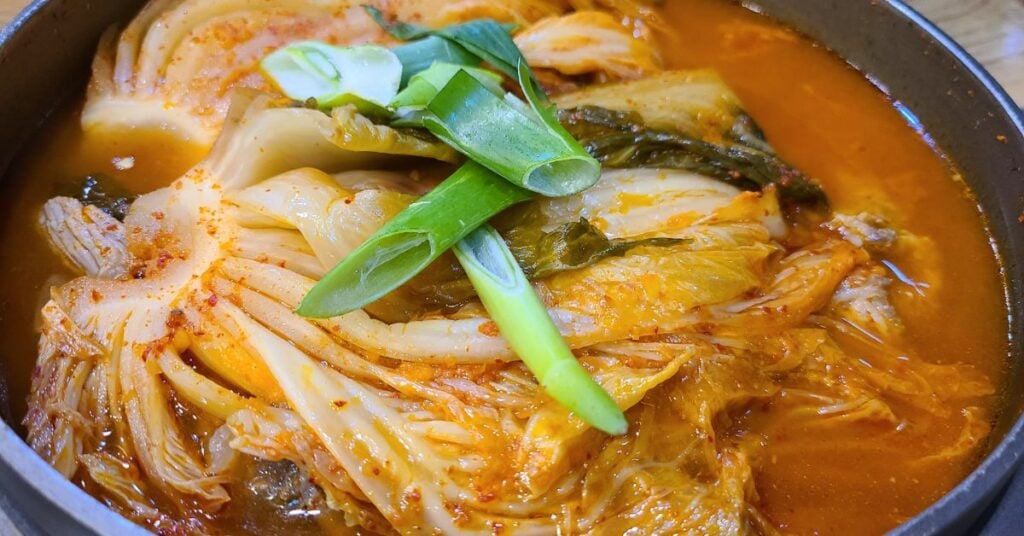
These 30 Traditional Korean Dishes Will Make You So Hungry!
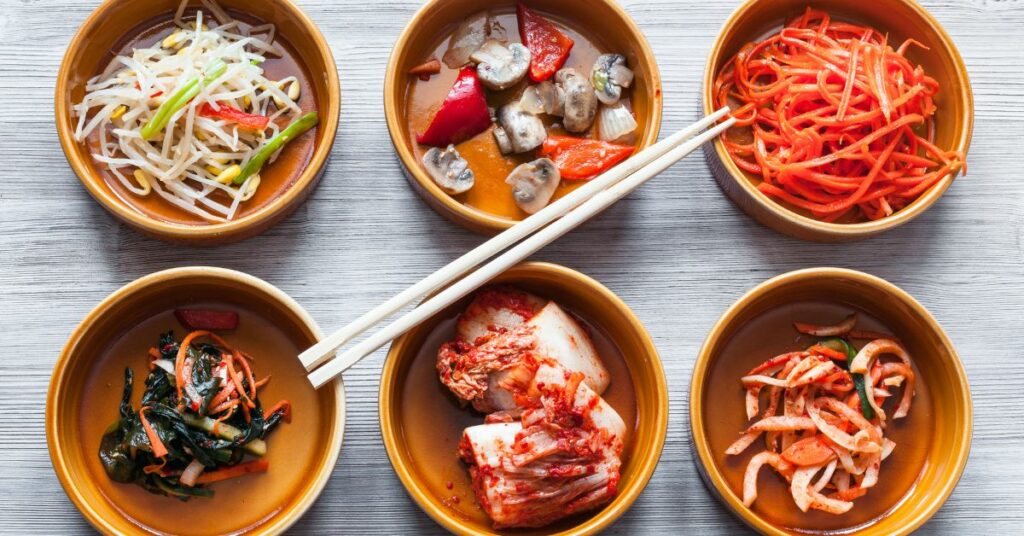
10 Best Korean Side Dishes: Banchan You Can Make At Home
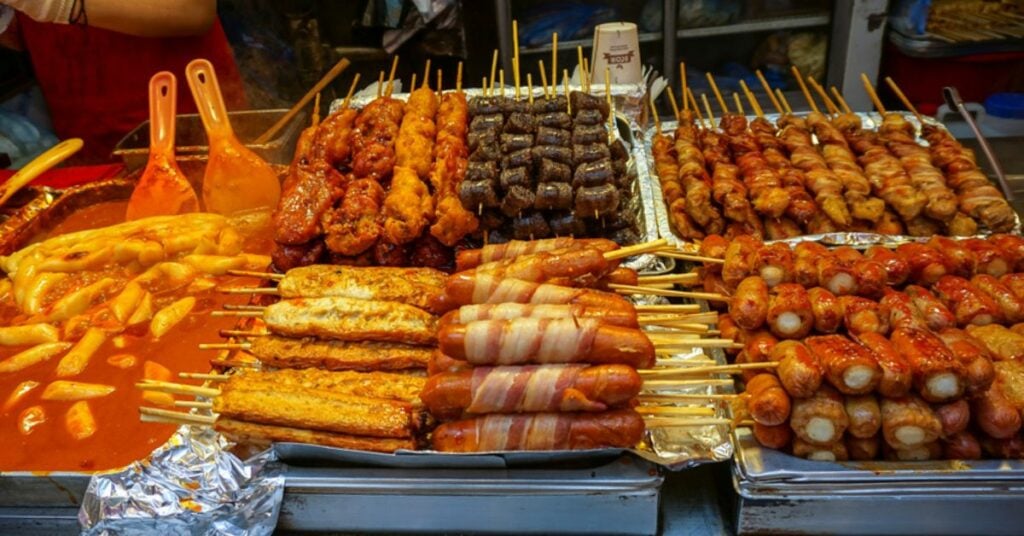
30 Best Korean Street Food: Seoul Street Eats To Try In 2024
Latest articles from in my korea.
Check out the latest articles from In My Korea for the most up to date and relevant news and advice about travelling to Korea, Korean culture, and lots more.
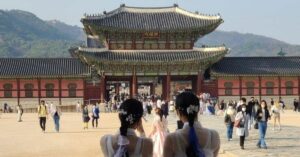
A Weekend In Seoul: Perfect Two Day Itinerary For Seoul 2024
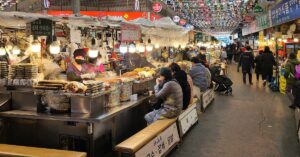
10 Best Traditional Markets In Korea For Food And Shopping
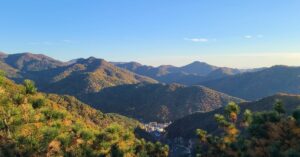
10 Best National Parks In Korea To Visit For Beautiful Views
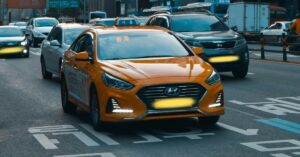
How To Get A Taxi In Korea: Hailing Or Booking A Taxi 2024
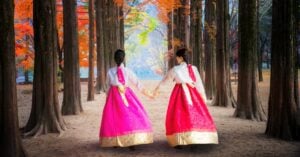
25 Best Day Trips From Seoul: Tours From Seoul To Try In 2024
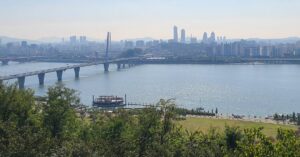
Seoul River Bus Service 2024: Travel The Han River By Boat

How I Use Wise To Send Money To Korea From Other Countries
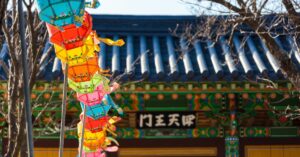
Do A Temple Stay In Korea For An Amazing Experience In 2024
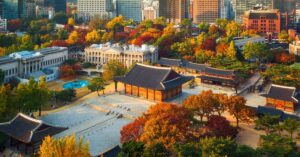
30 Best Free Things To Do In Seoul: Cheap Fun In Seoul 2024
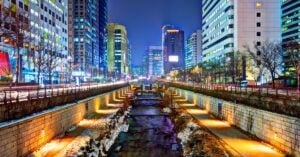
Is The Chilgapsan Ice Fountain Festival 2024 Worth Visiting?
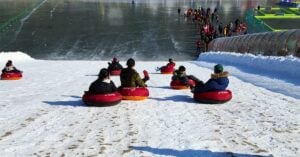

Hwacheon Sancheoneo Ice Festival 2024: Korean Ice Fishing Fun

I Tried Kimjang! Korean Kimchi Making Day Is Tough But Fun
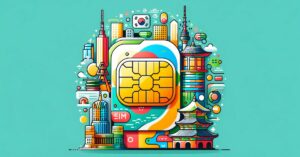
4G SK SIM Card Review: The Best Korean SIM For Tourists 2024
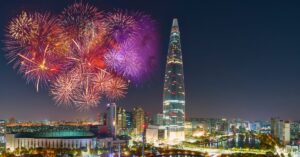
The Best Winter Festivals In Korea You Must Visit In 2024
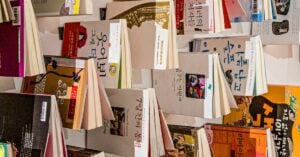
10 Must-Read Korean Novels in English That You’ll Love
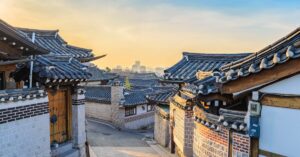
What To See And Do in Bukchon Hanok Village Seoul In 2024
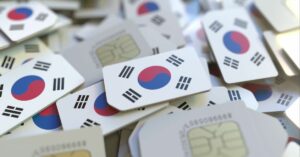
The Korea Tour Card: Tourist Transportation Card 2024

A Brit In Korea
Hi! My name is Joel, I’m the author of In My Korea. I’ve lived and travelled across Korea since 2015. I love learning more about Korean culture, hiking the many mountains, and visiting all the coolest places in Korea, both modern and traditional.
I’m a Brit, a lover of exploring, travelling, hiking, trying new things, meeting new people, digging into foreign cultures, understanding how things work, learning about history, eating all the foods, and playing in the snow.
Thanks For reading! Have a Great Time In Korea

Seoul Itinerary: Ultimate DIY Travel Guide for South Korea for 5 Days (More or Less)
by Aileen Adalid Itineraries , South Korea 134 comments
- French Riviera Road Trip: Top 10 Places to Visit (Côte d’Azur)
- Lunch with Legendary Michelin-Starred Chef Anton Mosimann
- How to Visit Korea’s JSA & The DMZ Tour (World’s Most Heavily Guarded Border)
- Japan Itinerary for First-Time Visitors: 4 to 21 Days or More (Ultimate Travel Guide)
- Big Berry: A Luxurious Lifestyle Camp in Slovenia (Review)
- Best Hotels in El Nido, Philippines: From Cheap to Luxury Accommodations and Places to Stay
- Best Hotels in Santorini, Greece: From Cheap to Luxury Accommodations and Places to Stay
- 2-Day Rome & Vatican Tour with Through Eternity Tours (Review)
- Best Hotels in Kathmandu, Nepal: From Cheap to Luxury Accommodations and Places to Stay
- Best Hotels in Brussels, Belgium: From Cheap to Luxury Accommodations and Places to Stay
One of my recent adventures was to the dynamic metropolis of Seoul in South Korea — a bustling city that not only holds a strong presence in Asia but also in the rest of the world. To date, this influence is largely due to Seoul’s cutting-edge technology, a strong economy, and vibrant culture (I’m sure that a majority of you have encountered K-pop , K-dramas, Korean cosmetics, and Korean food among many others at least once in your life!) (Seoul Itinerary)
TRIVIA : Seoul has 25 districts ( gu ) that are further subdivided into 522 sub-districts ( dong ), and with the Han River that runs through the middle of the city, there are distinct 2 sections: Gangbuk (the northern area that’s more traditional) and Gangnam (southern area that’s more modern). But… asking for the “center” of this whole metropolitan area is a difficult thing to answer because Seoul’s districts can somehow each function like a city center itself.
It actually baffles me that I didn’t go to Seoul sooner; nevertheless, the important thing is, I’ve finally seen this city for myself, and well… I just LOVED it! I am totally smitten about how it is constantly brimming with incredible things-to-do of sorts — all of which are enough to satisfy any kind of traveler out there.
Where to Stay in Seoul?
Come and check out my list of the ‘ Best Hotels in Seoul ‘ which features the top recommended choices for cheap to luxurious accommodation choices PER district.
Clearly, the days I spent there were not enough and I would have absolutely loved to stay longer. And now, as I recall the vast array of activities and sights that could be done and seen, I’ve decided to whip up this comprehensive Seoul itinerary travel guide that spans 5 days/nights to help travelers (like you) to plan a trip with ease and speed.
Rest assured, the Seoul itinerary below is totally customizable to fit any number of days that you might be spending — but first, here are some important tips for your travel to South Korea!
Table of Contents
South Korea Travel Guide
» quick travel planning.
- Top tours & experiences
- Find flights to Korea
- Visa requirements
- Best hotels & hostels
- Travel insurance (5% discount)
- Stay connected
– – –
» Best Time to Visit
I suggest coming during autumn to see the amazing fall foliage , but of course, if you want to witness cherry blossom season then spring is a considerable option too.
- Spring : The city becomes a hit with all the flora that start to bloom and bud. And of course, much like Japan, the city has cherry blossoms which tourists often seek. Given this demand, there tends to be a slight increase in costs, but the weather and season are quite desirable.
- Summer : This is arguably the peak season in the city so things get busier and costlier. It doesn’t help either that this is the vacation month of schools and Korean companies so everyone is out and about. That’s why if I were you, you should avoid these months — also because the weather can get quite humid with occasional downpours.
- ★ Autumn : (This is the best time to visit Seoul because the weather is pleasant, prices are more affordable, and crowds are thinner. Not to mention the number of great destination must-sees for viewing vibrant leaves of autumn in South Korea . However, do take note to avoid Chuseok or Korea’s autumn harvest festival.
- Winter : As the temperatures drop, prices and airfare also drop. Take note though that it can get very chilly; but, supposing you’re not that sensitive to the cold, this can be a fun time given all the amazing ski resorts and festive atmosphere.
Other South Korean blooms to watch out for?
See this list of the most popular spring flowers in Korea — when to see them and where to go!
ADDITIONAL TIP: Arrive and start your Seoul itinerary before the weekend. For example, if you’re visiting for 5 nights, make sure to come from Wednesday to Sunday. I say this because most places, museums, and shops close on Mondays and Tuesdays. Moreover, a lot of cosmetic stores hold sales starting on Thursdays and up to the weekend .
- WINTER: Dec to Feb
- SPRING: March to May
- SUMMER: June to Aug
- AUTUMN: Sept to Nov
» Getting in to South Korea
International visitors typically arrive at the main airport called Incheon International Airport (ICN) . To get here, I recommend browsing through Skyscanner to find the best flight deals from your point of origin. If you’re from the Philippines like me, Skyscanner also scans through budget airlines such as Air Asia and Cebu Pacific in order to find which of the 2 has the cheapest rate on the dates you choose.
From ICN, below are the following modes of transportation to get to Seoul…
By train. AREX (Airport Railroad Express) or ‘airport train’ connects ICN to Seoul station and Gimpo Airport, operating from 5:20AM to 12:00AM (midnight). There are 2 types of AREX, namely ‘express’ and ‘all-stop’. As the name suggests, ‘express’ is fast as it goes directly to Seoul Station (43 minutes) whereas ‘all-stop’ will arrive at 12 stations before finally arriving at Seoul Station (53 minutes). ‘Express’ tickets typically cost ₩8,000 but if you purchase online , you can get it at a discount for about ₩6,500~ only — and if you use code AILEEN5OFF , you’ll get an additional 5% off! Contrarily, in case you hold a Discover Seoul Pass , you can avail of one (1) FREE one-way ride.
By private transfers . If you want the utmost convenience and ease, especially without having to drag your luggage around, I recommend booking a private transfer to your hotel for only $63~ (or Php 3,300~ / ₩67,000~). This works best if you’re coming together with other people so that you can share the cost and save more. Otherwise, there are taxis at the airport that charge around ₩60,000 to ₩90,000 depending on your destination (take note that if the taxi passes by a road toll, you’ll have to pay for it).
By airport limousine/bus or shared transfers. There are limousine buses that travel directly to major areas and big hotels in Seoul and are a great option when you’re traveling with a lot of luggage. To get a discounted rate on this at about ₩14,000~ only, book with KAL or via shared transfer .
» Visa for South Korea
If you’re NOT a citizen of any of South Korea’s exempted countries , you are then required to avail of a visa beforehand. (If you’re from the Philippines, you can read my guide on how to get a South Korea visa in Manila here .)
- Check full visa requirements here as per your nationality.
» Where to Stay (South Korea Accommodations)
To search for the best hotel accommodation in South Korea at the best prices, I suggest cross-checking hotel prices between Agoda and Booking.com . But if you’re rather interested in renting comfortable houses or apartments, you should search through AirBnB .
Otherwise, if you’re interested in seeing the top picks per district in Seoul, see here .
» South Korea Currency
South Korean Won (KRW / ₩) wherein KRW 1,000 is equal to about USD $0.9~, €0.7~ or Php 49.00~ (this is as of May 2021). In the event that you want to exchange your money for KRW, I highly advise that you do NOT exchange your money at the airport since the rates there are not competitive.
- How to best exchange your currency? Either exchange your money at a bank or at a money exchanger in your home country or in Seoul’s city center. Better yet, just withdraw from an ATM with your debit/credit card (do one big withdrawal to minimize fees with your bank) . Speaking of cards, a lot of Seoul’s establishments accept credit cards but it’s always advisable to have cash on hand.
» Cost of Travel in Korea
While the cost of living in South Korea is far from being cheap, your trip doesn’t have to break the bank! To give you an idea, you should expect to travel in South Korea with an average daily cost of about USD $35~ per person on a budget, or at least $100~ if you want to experience more comfort on activities, tours, hotels, and more. (Values below show low budget to medium budget ranges).
- Hotels: $20 to $100 USD / day
- Food: $10 to $30 USD / day
- Fun: $10 to $25 USD / day
- Transport: About US$1 per subway ride*
*Buy a T-Money card that saves you ₩100 on all trips.
» How to Get Around Seoul
I would recommend using Naver Map ( iOs / Android ) for researching your day-to-day route on your Seoul itinerary because it will show in detail the fastest connections you can do (by walking, by car, by bus, and by subway). To make this work, get your own pocket WiFi or SIM Card .
You might be wondering why I am not recommending Google Maps which is the app that I typically use in my travels. Well… this is because Google Maps’ driving and walking directions don’t work in South Korea. This is mainly due to the country’s old security laws that were set after the Korean War (I guess, as a way to protect their detailed topography from North Korea).
By subway . Seoul’s metro is impressive, well-connected, and cheap. To save time and make the most of the fares during your stay, it’s best to buy a T-Money card which is basically a stored value smart card that you can recharge and use between buses, trains, and subways while saving you ₩100 on all trips. You can buy this online beforehand at a cheaper rate — otherwise, it can be purchased at most of Seoul’s subway stations, newspaper kiosks, and convenience stores.
Take note that a T-money card is applicable to other locations as well in South Korea such as Gyeonggi-do, Incheon, Busan , Daegu, Daejeon, and Gwangju buses — plus Incheon, Busan, Daegu, Daejeon, and Gwangju Metropolitan Subway networks.
However, if I may give you a tip, you can actually avoid paying the cost of acquiring this card (₩3,000) if you have a Discover Seoul Pass (which I will discuss in the next section below).
NOTE : Single-ride cards cost about ₩1,200~ and they can be purchased on vending machines which accept coins and bills only. Reloading your T-Money Card can also only be done with cash. Meanwhile, remember that the last train usually departs by midnight (the subway does NOT operate for 24 hours).
By bus. The city also has an extensive and well-connected bus service that similarly makes use of the T-Money card. Just always remember to tap your card before exiting the bus or else you’ll be charged the maximum fare possible on that bus’ route. If you’re rather looking for an unlimited hop-on-hop-off bus to the city’s major spots, you can check this out.
By foot . Seoul technically isn’t too huge of a place and most of the city highlights can be reached by foot.
By taxi. There are various taxi types in Seoul and in order to learn more about them and their corresponding fares, read here . (It’s also possible to book an Uber car) .
» Money-Saving Tips in Seoul
I advise that you purchase a Discover Seoul Pass for your Seoul itinerary because it is an amazing cost-effective card that is offered only to foreigners. To illustrate, below are the range of benefits that you can get from this pass:
- Gyeongbokgung Palace
- Deoksugung Palace
- Changgyeonggung Palace
- Changdeokgung Palace
- Jongmyo (Royal Shrine)
- N Seoul Tower Observatory
- Seoul City Tour Double-Decker Bus
- COEX Aquarium
- TrickEye & Ice Museum
- Hello Kitty Island in N Seoul Tower
- PooPoo Land
- Lotte World Adventure
- Eland Cruise
- LOTTE Duty Free
- NO WORRIES! Using your Discover Seoul Pass as a T-Money card for public transportation does NOT activate it. The Discover Seoul Pass will only activate when you first use it on its listed attraction s.
To get the best rate for a Discover Seoul Pass, you can purchase it online (it’s available in 24H and 48H options), and then pick it up either at Incheon International Airport or at Myeongdong’s Tourist Information Center.
- TIP : The last Wednesday of each month has been designated as a “Culture Day” in Korea since 2014. During this day, participating museums, galleries, and other cultural facilities will offer FREE or discounted admissions. Examples are the royal palaces, Jongmyo Shrine, National Museum of Korea, Korean National Ballet etc.
» Staying Connected in South Korea
South Korea is said to have the fastest internet in the world (and yep, it’s true!) so you’ll be assured of great connection wherever you go. To add, most places even offer FREE WiFi — but in order to consistently stay connected online during your Seoul trip, I recommend getting your own pocket WiFi or SIM Card ; otherwise, consider getting an eSIM for a hassle-free experience.
» Safety in South Korea
The Republic of Korea or South Korea remains to be one of the safest countries in the world — and also one of the safest countries for solo female travelers . Petty theft may happen but they are quite rare; so, just practice common sense at all times and you’ll be fine!
- HOW TO: Find the right travel insurance for you
» Helpful Korean Phrases
English is not widely spoken in South Korea even if it is taught in a lot of schools, but you’ll have better luck in the capital of Seoul where a lot of people put time, effort and money in learning English. Nevertheless, it doesn’t hurt to learn a bit of the local language!
- RELATED READ: Best translation apps for travel
Hello (formal): Annyeong haseyo Hello (informal): Annyeong Thank you: Gamsahamnida You’re welcome: Cheonmanyeyo Yes: Ye/Ne No: Aniyo Goodbye (to person leaving): Annyeonghi gaseyo Goodbye (to person staying): Annyeonghi gyeseyo Goodbye (informal): Annyeong
Excuse me (getting attention): Sillyehamnida I’m sorry: Joesonghamnida Is there someone here who speaks English?: Yeogi-e yeong-eoreul hasineun bun gyesimnikka? Help!: Dowajusipsio! Cheers!: Geonbae!
Other F.A.Q.
It is not customary in South Korea to tip, and sometimes, much like in Japan, they consider it as an insult so tipping is not recommended at all. In hotels and some restaurants though, you will sometimes see a 10% service charge on your bill.
South Korea typically uses type F (two round pins). The country operates on a 220V voltage and a frequency of 60Hz.
Please check their latest travel advisories page for more details.
All visitors to South Korea must have a passport that is valid for at least 6 months after the period of their intended stay (as well as have 2 blank pages).
There is and you can easily claim a tax refund for being a tourist; simply read this page for more info.
It is legal to fly a drone in the country but one of the top restrictions is to NOT fly above 150 meters and if your drone is more than 250 grams, it needs to be registered. For more info, see here .
Seoul Itinerary Guide
Take note that the 5-day Seoul itinerary below does not take into account your arrival day in Seoul — at any rate, if you’re staying longer in the city, you can make use of the last tab called ‘ Extra Days ‘ to see the other activities or trips you can do for filling up the rest of your vacation days.
TIP: It’s best to arrive and start your Seoul itinerary trip before the weekend. So for example, if you have 5 whole days, make sure to arrive on Tuesday and then start your whole tour from Wednesday to Sunday . I say this because most places, museums, and shops close on Mondays and Tuesdays. Moreover, a lot of cosmetic stores hold sales starting on Thursdays and up to the weekend so it would be a good idea to take advantage of that.
NOTE: The following section is in a tabbed format; so, in order to see the next day’s contents, just click the headings below.
DAY 1: Explore and enjoy Korean culture in a hanbok!

Photo by: Shutterstock
◘◘ Rent a hanbok and explore some of Seoul’s cultural highlights
(Nearest subway station: Gyeongbokgung Station, Exit #4) You must never leave the city without trying on the elegant Korean traditional clothing called ‘ hanbok’! Much like how Japan has kimono rental shops, South Korea has hanbok rental shops for tourists. Through these places, you can borrow and wear hanbok for a day (or more ) whilst you venture out to the cultural spots in Seoul to snap wonderful photos.
This is certainly a MUST-do activity in your Seoul itinerary because aside from the fact that you can have the chance to feel as though you’ve been transported back to the Joseon period or to a set of an old K-drama, the experience itself is also supported by the Koreans as a part of promoting their history (so yes, it’s one way of immersing yourself with their vibrant culture too). And if those reasons are not enough, wearing a hanbok grants you FREE entry to the palaces in the city!
TRIVIA : The term ‘hanbok’ literally means “Korean clothing” but it just basically refers to the traditional clothing for both men and women from the Joseon period.
There are a LOT of hanbok rental shops in Seoul but if you want the best, I highly recommend renting with Seohwa Hanbok . Apart from its prime location, it has more intricately-designed hanbok garments that are set at an affordable price! For a more comprehensive guide on this, read my ‘ Hanbok Rental ‘ post here .
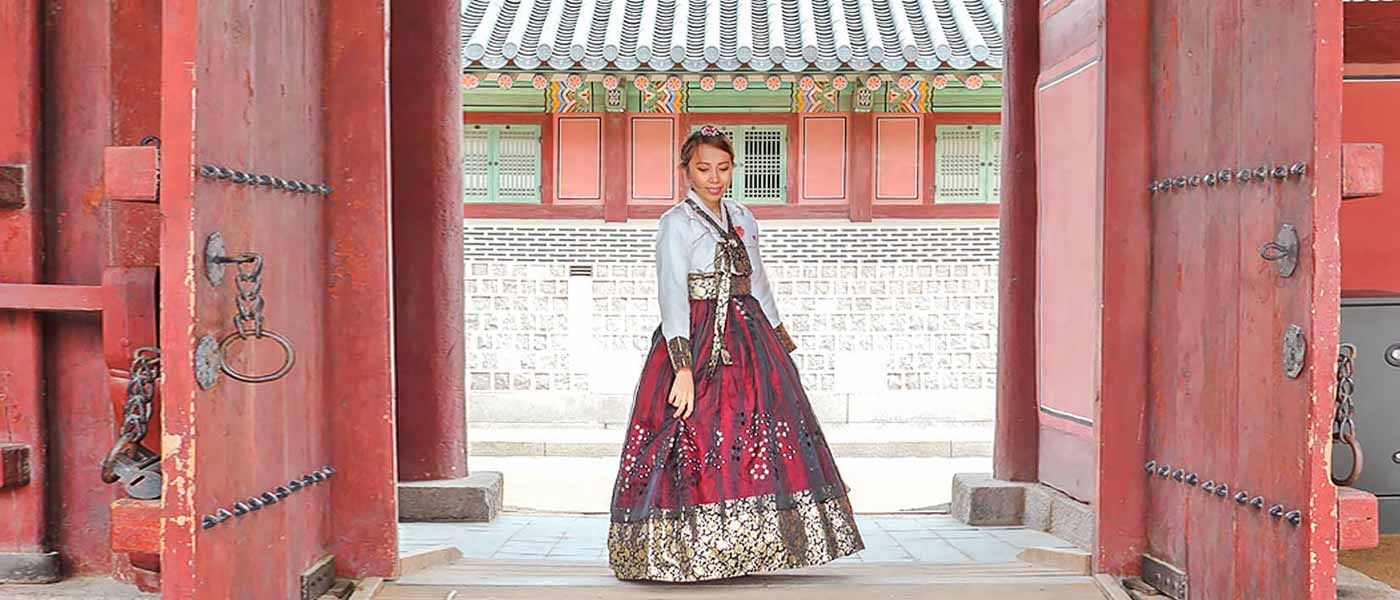
As you would see on the online booking platform , Seohwa Hanbok has 3 rental options: 4 hours, 1 day, or 2 days .
NOTE: If you have purchased the Discover Seoul Pass (no matter if it’s the 24H or 48H option), it’s preferable that you do NOT activate it on this day because you’ll already be given FREE entry to 4 of the ‘Five Grand Palaces’ if you’re wearing a hanbok. Not to mention that this whole hanbok activity will already likely fill up your whole day, so it’s best to activate the pass the next day. . Unless of course, you plan to avail the FREE hanbok rental use instead that’s under the Discover Seoul Pass’ perks. Personally, I think it’s best that you avail a hanbok rental separately for longer hours because the free hanbok rental under the pass is only for 90 minutes).
Once you are clad in a hanbok of your own choosing, I recommend doing the following route:
- The Changing of the Royal Guard ( Sumunjang ) ceremony is held for FREE daily, except Tuesdays, at 10:00AM and 2:00PM in front of Gwanghwamun or the main gate of Gyeongbokgung. If you can’t make it to these time slots, you can also witness a Guard-on-Duty Performance at Gwanghwamun gate at 11:00AM and 1:00PM or a Sumungun (Gatekeeper) Military Training in Hyeopsaengmun Gate at 09:35AM and 1:35PM.
- If you’ve got time, you can check out the huge golden King Sejong Statue at the nearby Gwanghwamun Square. (King Sejong is best remembered as the inventor of ‘Hangeul’ or the Korean alphabet.)
- ★ Changdeokgung: This was the 2nd palace that was built after Gyeongbokgung and it has since been recognized as a World Cultural Heritage site by UNESCO in 1997. An interesting feature of this place is its ‘Secret Garden’ because there are only a limited number of admission slots per day that are given out. If you’re lucky, you can get the chance to go in if you want to!
- Deoksugung: This palace is famous for its picturesque stone-walled road (which is often featured in K-dramas like Goblin). And much like Gyeongbokgung, Deoksugung Palace has a Changing of the Royal Guards Ceremony and it is held at 11:00AM, 2:00PM, and 3:30PM daily, except on Mondays.
- Changgyeonggung: This used to be the residential quarters for queens and concubines of the king, and it later became a park with a zoo and a botanical garden during the Japanese colonial rule (today though, the zoo and garden are relocated to Seoul Land ).
- Gyeonghuigung: Located near Deoksugung Palace, this site served as the secondary palace for the king in the latter half of the Joseon period. For a time, Gyeonghuigung was of considerable size but most of its major structures have long been disassembled and moved to other parts of Seoul. .
- To get here, look for Bukchon-ro street. It will be hard to miss because the tourism board had recently appointed staff there in red clothing to help tourists and distribute maps. Basically, there are 8 major viewpoints to see in Bukchon Hanok Village and those that you must NOT miss are the Gaehoe-dong areas that are typically appointed as Views #3 to #7. If you’re coming with elderly companions, take note that there are a few uphill climbs in this area.
- Unlike other hanok villages (like Namsangol Hanok Village), Bukchon was not built for tourists as it is rather a residential village inhabited by Seoulites. Therefore, make sure to keep quiet so as not to disturb the locals.
- As you leave Bukchon, drop by the nearby neighborhood of Ikseon-dong . Much like Bukchon, it’s one of the oldest hanok villages in Seoul; but in case you want to escape the crowds, it would be a great idea to explore this hidden gem! .
- Lunch: You can either have it at Bukchon Hanok Village or at Insa-dong. There are a lot of cafes and restaurants in these areas so you won’t have a difficult time picking a place; though if I may put in my two cents, do check out Jokagbo at Bukchon (across the street near the entrance to the village) or Gogung at Insa-dong for their bibimbap (mixed rice bowl). For other food or restaurant options, click the “Extra Days” tab on top of this section — or go to this link to see a list of restaurants that you can book online at special deals. .
- Drop by Insa-dong: (Nearest subway station: Anguk Station, Exit #6) As you make your way to the last stop of this route, you must not skip on the neighborhood of Insa-dong in the Jongno-gu district of Seoul. After all, its streets are one of the best places in Seoul when it comes to culture and crafts (perfect for souvenirs!). If I may also share another tip, try to stop by Ssamziegil which is a unique building wherein each of its levels is connected in the form of a spiraling walkway! .
- (OPTIONAL) Visit Namsangol Hanok Village: (Nearest subway station: Chungmuro Station, Exit #3) Located at the foot of Namsan, this village was built to feature 5 traditional houses of different social classes from the Joseon era, all relocated to this spot from different locations in Seoul in order for guests to understand the daily lives of its past people. Of all these 5 houses or hanok, only one is open to the public which is the house of Yoon-ssi of Okin-dong. It has been transformed into ‘Yoon’s Tearoom’ where visitors can learn about Korea’s tea culture. If you’re interested, you could join the tea ceremony program for only ₩7,000. (For a list of other activities in this village, see this link ).
Is it possible to just try on a hanbok for FREE? Yes. If you hold a Discover Seoul Pass , you can wear a hanbok of your choice outdoors for 90 minutes via HANBOKNAM, or take photos with a hanbok in the indoor studio of Namsan Seoul Tower Hanbok Experience Center . However, if you do not have a Discover Seoul Pass, Korea Tourism Office’s Main HQ allows you to wear simple hanbok and take shots of yourself in it indoors. . Is there a service where I can just rent a hanbok indoors and have a professional photographer take photos of me? Of course! You can book this kind of experience online for just ₩15,000~ (or USD$14~ / Php 730~). It even has the option of doing outdoor shots.
◘◘ Visit the awe-inspiring structure of Dongdaemun Design Plaza
(Nearest subway station: Dongdaemun History & Culture Park Station, Exit #2)
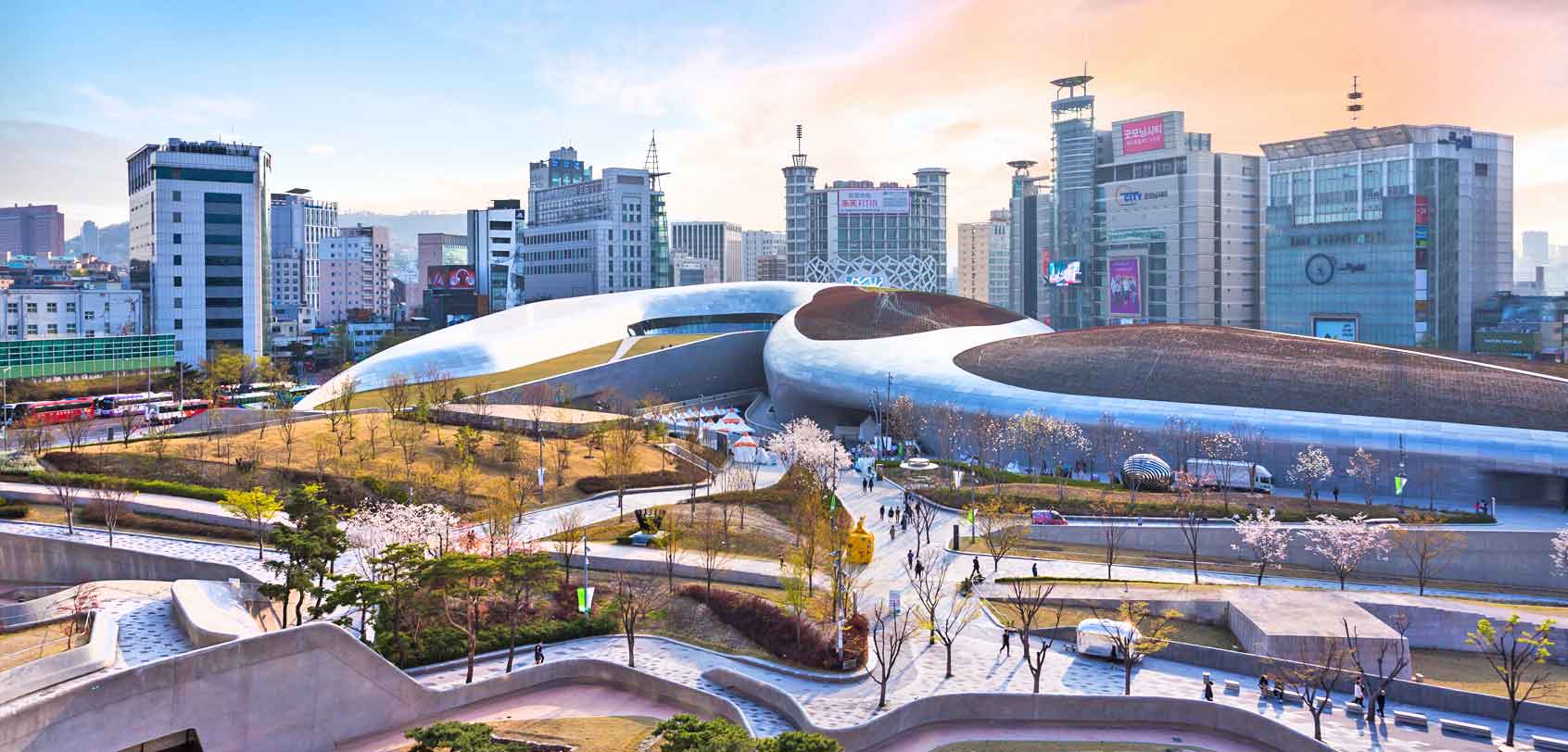
Also called “DDP”, this structure is a new major urban landmark in the heart of Seoul which has a distinctly futuristic design made by world-renowned architect, Zaha Hadid. As such, it’s not strange that it is one of the most Instagrammed locations in Korea.
Other than enjoying its grand outer architecture for your Seoul itinerary, you can also stroll through DDP’s huge 5 halls namely, Art Hall, Museum, Design Lab, Design Market, and Dongdaemun History and Culture Park — places where you can shop and watch various exhibitions, fashion shows, and performances among many others.
- From late May to late October every year, Seoul Bamdokkaebi (Goblin) Night Market will open in DDP from 6:00PM to 11:00PM, so don’t forget to make a stop here to not only buy a variety of food and goods but to also enjoy the various performances made available during this event.
- TRIVIA : This display was first put up on National Liberation Day in 2015 which is in celebration of Korea’s 70th year of independence. Hence, the number of 25,550 comes from 365 days multiplied by 70.
BONUS: If you still have some time, drop by Ihwa Mural Village, a picturesque neighborhood in Seoul that is famous for its amazing murals — as well as for its fascinating cafes and shops. It’s no wonder that a lot of K-dramas and movies have started to do their filming here. You can basically find this near Naksan Park (which also yet another hidden gem that provides great views of the cityscape).
◘◘ Eat and shop through any of Seoul’s night markets
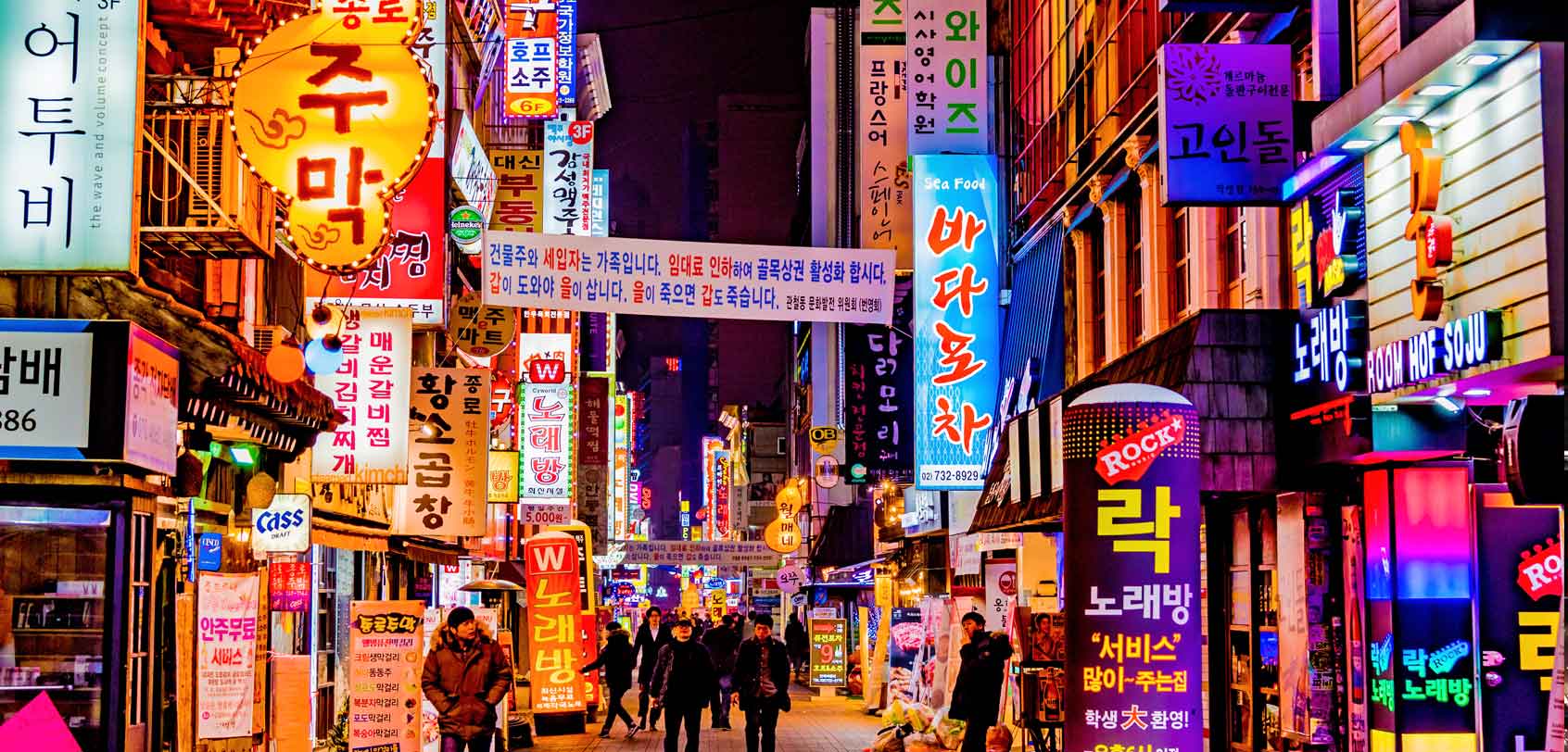
Like the rest of Asia, Seoul has no shortage of vibrant night markets, so for dinner, go and drop by any of the following spots ( it’s best to choose only one! )
- Bamdokkaebi (Goblin) Night Market: (Nearest subway station: *various spots*) Like I’ve written above, this night market opens from May to October. It originally opened in Yeouido (Yeouinaru Station, Exit #3) but has since expanded to several locations such as DDP. The other remaining places would be Cheonggyecheon Stream (Jongno5(0)ga Station, Exit #7) and Banpo Hangang Park (Express Bus Terminal Station). .
- Dongdaemun Night Market: (Nearest subway station: Dongdaemun History & Culture Park Station, Exit #4) Take note that this is different from the night market found in DDP. Apart from the retail haven found in this vicinity, you will also find the ‘Open market’ with its bright yellow tents, all selling various apparel, souvenirs, and items at affordable prices starting from 10:00PM up to 5:00AM. If you’re rather looking for delicious Korean eats during your Seoul itinerary, drop by Mukja Golmok (“Let’s Eat Alley” at exit #8 of Dongdaemun Station) to feast on snacks like tteokbokki (rice rolls). .
- ★ Myeongdong Night Market: (Nearest subway station: Myeongdong Station, Exit #7) Even if this is not one of those ‘traditional’ night markets, it remains to be a popular destination for travelers as it is set in the bustling shopping district of Myeongdong that holds some of the biggest stores like Lotte and Shinsegae as well as cosmetic brands of all kinds. Starting from 5:00PM and onwards, you will start to see food stalls filling up the main street with fares like gyerangbbang (Korean egg bread), dak-galbi (spicy stir-fried chicken), etc. .
- ★ Namdaemun Night Market: (Nearest subway station: Hoehyeon Station, Exit #5) Open from 11:00PM till 4:00AM, this traditional night market is the largest in Seoul and it holds every possible thing that you can think of — from food to clothing, they have it all! .
- Gwangjang Market: (Nearest subway station: Jongno 5(o)-ga Station, Exit #8) If Namdaemun is the largest, then Gwangjang would be the oldest in Seoul, making it a common go-to place for many Korean shoppers. You can actually find this close by Dongdaemun and DDP so it’s possible to check off several of those night markets in the same night if you will it so! (TIP: This place is best if you’re looking to buy a hanbok for yourself). .
- ★ Noryangjin Fish Market: (Nearest subway station: Noryangjin Station, Exit #1) Operating 24 hours a day, this place is more than just a night market. If you come in the early morning, you can witness a bustling fish auction (reminiscent of Japan’s Tsukiji Fish Market). Anyhow, the fun part about this place is that you can buy some fresh seafood and then have it cooked by a restaurant located on the 2nd floor — and if you’re brave enough, maybe you can try the infamous Korean activity of eating a LIVE octopus?
TIP : Want a hassle-free foodie experience? With the help of a local guide, you can join a Korean Food Walking Tour or a Korean Night Dining Tour .
◘◘ Watch the famous Nanta Show
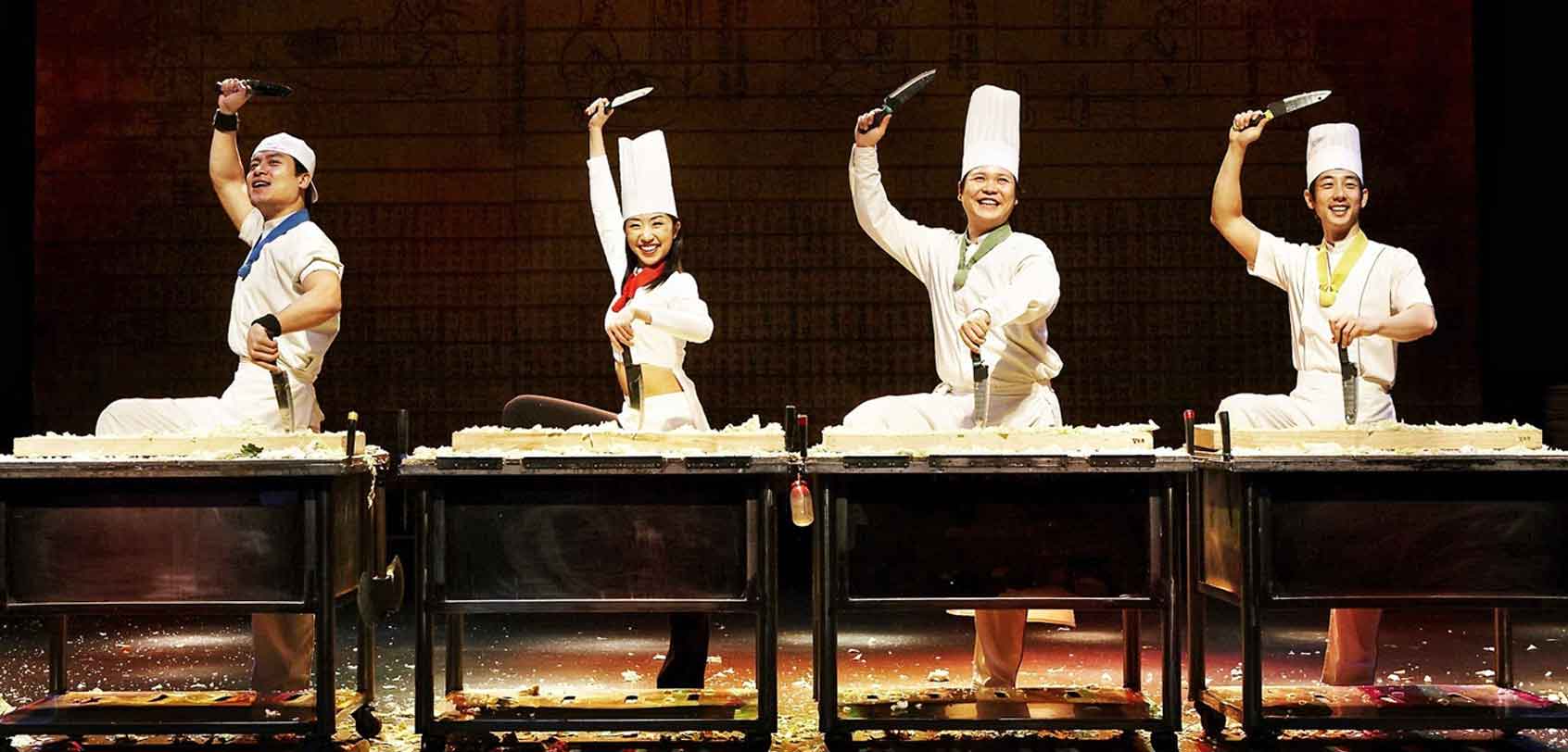
If there’s one show that you should NOT miss for your Seoul itinerary, it will be witnessing the award-winning long-running NANTA Show at Myeongdong Theatre. This is basically a non-verbal comedy show (so it’s fine even if you don’t know Korean) that incorporates traditional ‘ samul nori ‘ rhythm (which is a genre of percussion music distinct to Korea) as they do a slapstick play that mimes the story of cooks who are preparing for a wedding.
I’ve seen this show myself and it was quite entertaining as I saw knives fly and fire blasting from pots — but don’t worry, it’s all safe! But I must say that it did have a distinct sense of humor that may or may not work for you. Either way, it’s an energetic performance that has garnered distinctions and awards from Edinburg Fringe Festival and on New York’s Broadway, so I say: give it a try!
NEAREST SUBWAY: Myeongdong Station, Exit #7 BOOK: Online to get 30% off on tickets
DAY 2: “Discover” more of Seoul!
NOTE: If you have purchased the Discover Seoul Pass (no matter if it’s the 24H or 48H option), this would be a good day to start its activation.
◘◘ Explore and shop in Myeongdong and Hongdae

Myeongdong: (Nearest subway station: Myeongdong Station) This is is arguably the shopping mecca of Seoul and its 2 main streets meet in the center — the first spanning from Myeongdong Subway Station and the second from Lotte Department Store at Euljiro.
For the shopaholics, there is a wide range of branded shops and department stores that line Myeongdong’s streets and alleys (e.g. Lotte Department Store, Shinsegae Department Store, Noon Square, etc.), and they are often set relatively cheaper than the other shopping areas in the city like Cheongdam-dong.
Of course, let’s not forget that Myeongdong is a beauty lover’s dream too given the number of Korean cosmetic stores that regularly hold insane sales for their high-quality products.
As an example, I went here to shop for face masks and one piece averaged at only USD$0.40~ or Php 20~! Some of the top stores you need to check are: Innisfree, Nature Republic, Holika Holika, Tony Moly, Nature Republic, and Laneige. (If you have heard of the Instagram-famous place called as Style Nanda Pink Hotel , you can find it here in this neighborhood or ‘dong’).
TIP : Try to NOT buy from the first shop that you set foot into because most of the time, they will hand out free samples and masks, which could be quite a treat! In fact, I know that some people would hop from store to store just to collect samples, haha. Anyhow, in case you want to check out other places because you’ve got some time, shops in Hyehwa and Sincheon neighborhoods can have cheaper cosmetic products too. And oh, of course, do NOT ever forget claiming your tax refund!
Hongdae: (Nearest subway station: Hongik University Station, Exit #9) It’s no surprise that this area is often compared to Japan’s Harajuku because of its hip and youthful ambiance — with a dash of unique cafes and indie fashion shops here and there. Aside from strolling through ‘ Hongdae Walking Street’, ‘ Picasso’s Street ‘ and ‘ Club Street’ , below are some of the places in and around Hongdae that you should consider stopping by for your Seoul itinerary:
- Hongdae Free Market: Open on Saturdays from March to November at Hongik Children’s Park. You will find here an array of local artist works.
- Trickeye and Ice Museum: TrickEye museum is an interactive 3D space that gives off impressive optical illusions; whereas Ice Museum, as the name implies, is a space where you can enjoy a cool icy environment (e.g. a living room with a TV and couch made of ice and more). Entering these places is free if you hold a Discover Seoul Pass , but if you don’t have the pass, you can reserve your tickets online .
- If you’re looking to spend some time in cute cafes, go to ‘ Chuu ‘ or ‘ Zapangi’ .
BONUS: Ewha Woman’s University is an educational institute with picturesque grounds, but more than this, it’s actually smacked in a shopping area that sells a variety of affordable and stylish clothes for young people; therefore, this is also a good place to shop.
◘◘ Get lunch
It’s time to feast on a delicious Korean BBQ meal! While you’re already in Hongdae, try out either of these places: Gogigo or Old House Charcoal Meat Restaurant .
For other food or restaurant options, click the “Extra Days” tab on top of this section — or go to this link to see a list of restaurants that you can book online at special deals.
◘◘ Make full use of your Discover Seoul Pass
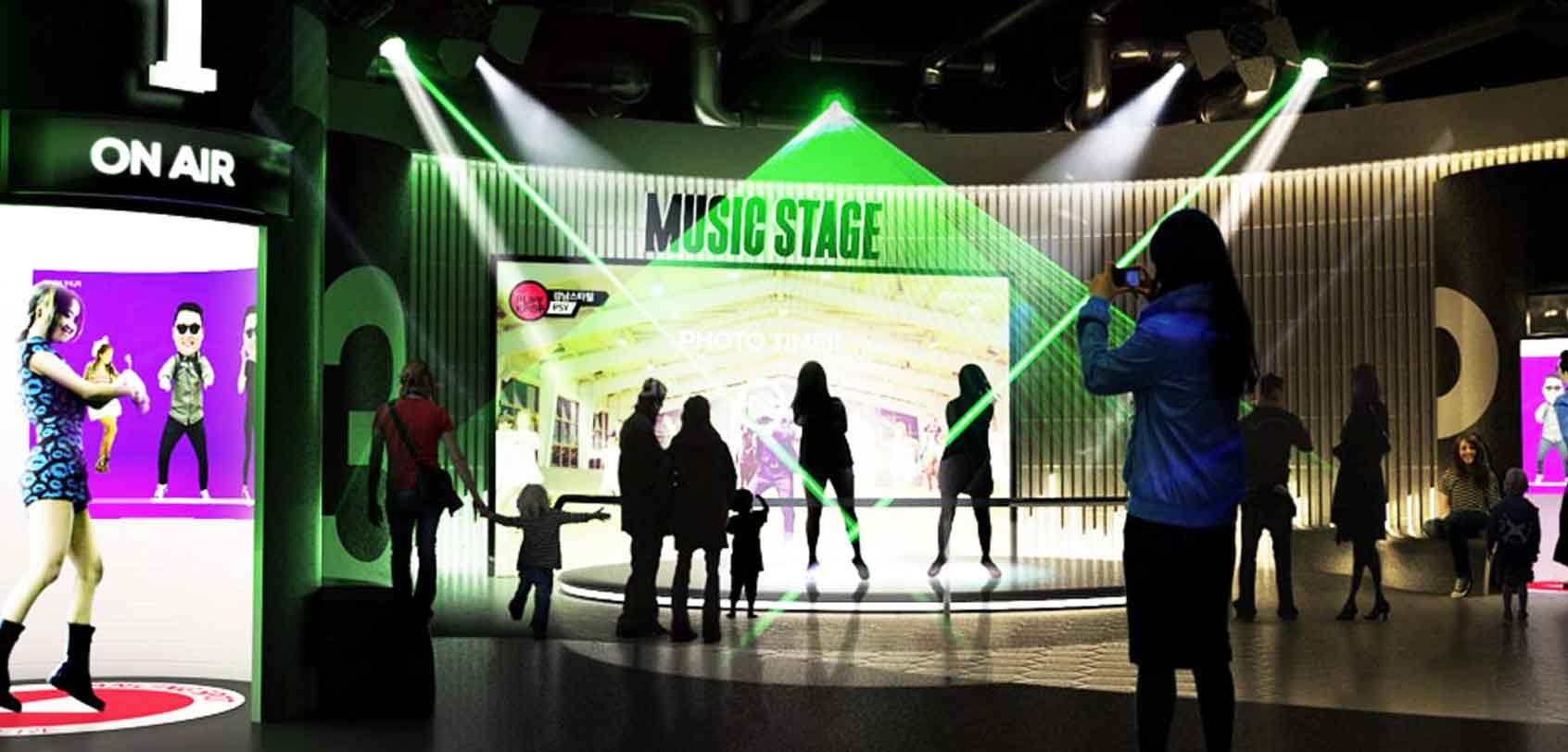
If you’ve followed my advice and got yourself a Discover Seoul Pass , you can enter any of the establishments below for FREE during your Seoul itinerary! Take your pick from any of the following to fill up the rest of your day ( best to pick 2 at most ).
For a complete list of FREE admissions under the Discover Seoul Pass, you can also visit this page .
- MBC World: (Nearest subway station: Digital Media City Station, Exit #9) Are you a fan of K-pop, K-dramas, or Korean stars — or just ‘ hallyu ‘ (Korean Wave) in general? Then MBC World is a great destination for your Seoul itinerary, as it will give you the chance to experience hologram K-pop concerts, virtual reality drama sets, and more. (If you don’t have the Discover Seoul Pass and want to separately book a ticket, go here ) . .
- SM Town Museum: (Nearest subway station: Samseong Station, Exit #6) Still in line with the ‘hallyu’ fever, this place is dedicated to famous K-pop artists under the powerhouse of SM Entertainment in South Korea. Avid fans can tour through their training rooms, recording rooms, and so much more. (If you don’t have the pass and want to separately book a ticket for this, go here ) . .
- Grévin Museum: (Nearest subway station: Euljiro 1-ga Station, Exit #1) This is like Korea’s version of Madam Tussauds. You can find about 80 wax figures of Korean and international celebrities, as well as several thematic interactive experiences. (If you don’t have the pass and want to separately book a ticket, go here ) . .
- 63 Square: (Nearest subway station: Yeouinaru Station, Exit #4) Other than gaining access to panoramic views of Seoul, you can also enter in 63 Square the first aquarium in Korea called Aqua Planet 63. If you’re a K-drama fan, this is actually the aquarium used in ‘Legend of the Blue Sea’ and where a Mermaid Show is regularly held. (If you don’t have the pass and want to separately book a ticket, go here for combination tickets or here for the aquarium only. .
- COEX Aquarium: (Nearest subway station: Bongeunsa Station, Exit #7) This place has the largest collection of marine life in Korea and you can watch feeding shows and interactive exhibits here too. (If you don’t have the pass and want to separately book a ticket, go here ). .
- Seoul City Tour Double-Decker Bus: Go on a hop-on-hop-off bus tour through the center of Seoul to get a glimpse of all of its past and present glory. (If you don’t have the pass and want to separately book a ticket, go here ). .
- Alive Museum: (Nearest subway station: Euljiro 3(sam) Station, Exit #1) This place is similar to TrickEye Museum but it is arguably larger with several other exhibits such as the ‘Dynamic Maze’ (where participants must work together to overcome challenges) and the ‘Black Wonderland’ (where fairy tales like Alice in Wonderland, Frozen, Cinderella and Aladdin can be experienced in the dark ). If you don’t have the pass and want to separately book a ticket, go here . .
- Seoul Zoo and Skylift: (Nearest subway station: Seoul Grand Park Station, Exit #2) Seoul Zoo is South Korea’s largest zoo with over 330 species of animals, inclusive of a botanical garden and a forest park. The icing on the cake? You can even ride the Sky Lift which can transport you to several places such as the Seoul Land theme park and more. (If you don’t have the pass and want to separately book a ticket for your Seoul itinerary, go here ). .
- Running Man: (Nearest subway station: Euljiro 1-ga Station, Exit #3) Do you want to be a part of Korea’s popular variety show, Running Man? Well with this thematic experience, you can do so! This will surely be a hilarious and fun adventure for you and your travel companions as you make your way through 6 zones, including Maze Battle. (If you don’t have the pass and want to separately book a ticket, go here ). .
◘◘ Visit Namsan Park and N Seoul Tower
(Take Namsan Shuttle Bus, Circulation Bus No. 2, 3, or 5)

Mt. Namsan’s Namsan Park is a symbolic place in the center of Seoul. To get up here, you can ride a cable car, a bus, or just simply walk up its stairway path. Most visitors come to this place to enjoy nature, to see the city skyline, or to do some of the hiking trails — but a majority makes a stop at the famous N Seoul Tower which is the first tower-type tourism spot in South Korea.
Rising at almost 480m above sea level, it is certainly one of the tallest towers in Asia. Once you set foot on its premises during your Seoul itinerary, you can explore its other attractions such as the LED tunnel, Hello Kitty Island, Ssentoy Museum & Showroom, and more.
- BOOK: Online to get a discounted ticket to the tower’s observatory as well as grab great combo deals.
- TIP : Other than N Seoul Tower, you can also find Palgakjeong Pavillion (octagonal hall) and Bonghwadae (beacon mounds that were used to signal incoming enemy invasions in the past).
◘◘ Grab dinner
I have two options for you, depending on what you fancy:
- A traditional royal Korean cuisine dinner: Feast on fresh and high-quality Korean cuisine set in a traditionally-styled restaurant called Myongdongjeong . What’s more? You can also rent their hanbok for free while eating to really feel as though you’ve been transported to a royal palace. .
- A cruise buffet dinner through Hangang River: Hangang or Han River is a major river in South Korea, and it is best enjoyed during the night with Eland Cruise as you glide through the waters and taste a delectable food buffet. Before the end of your cruise, you can even witness a firework show and a front-row view on the colorful Banpo Bridge Rainbow Fountain Show. To reserve your spot, go here .
For other food or restaurant options, click the “Extra Days” tab on top of this section — or go to this link to see a list of restaurants that you can book online at special deals for your Seoul itinerary.
◘◘ Walk through Cheonggyecheon Stream
(Nearest subway station: Jongno5(0)ga Station, Exit #7 )
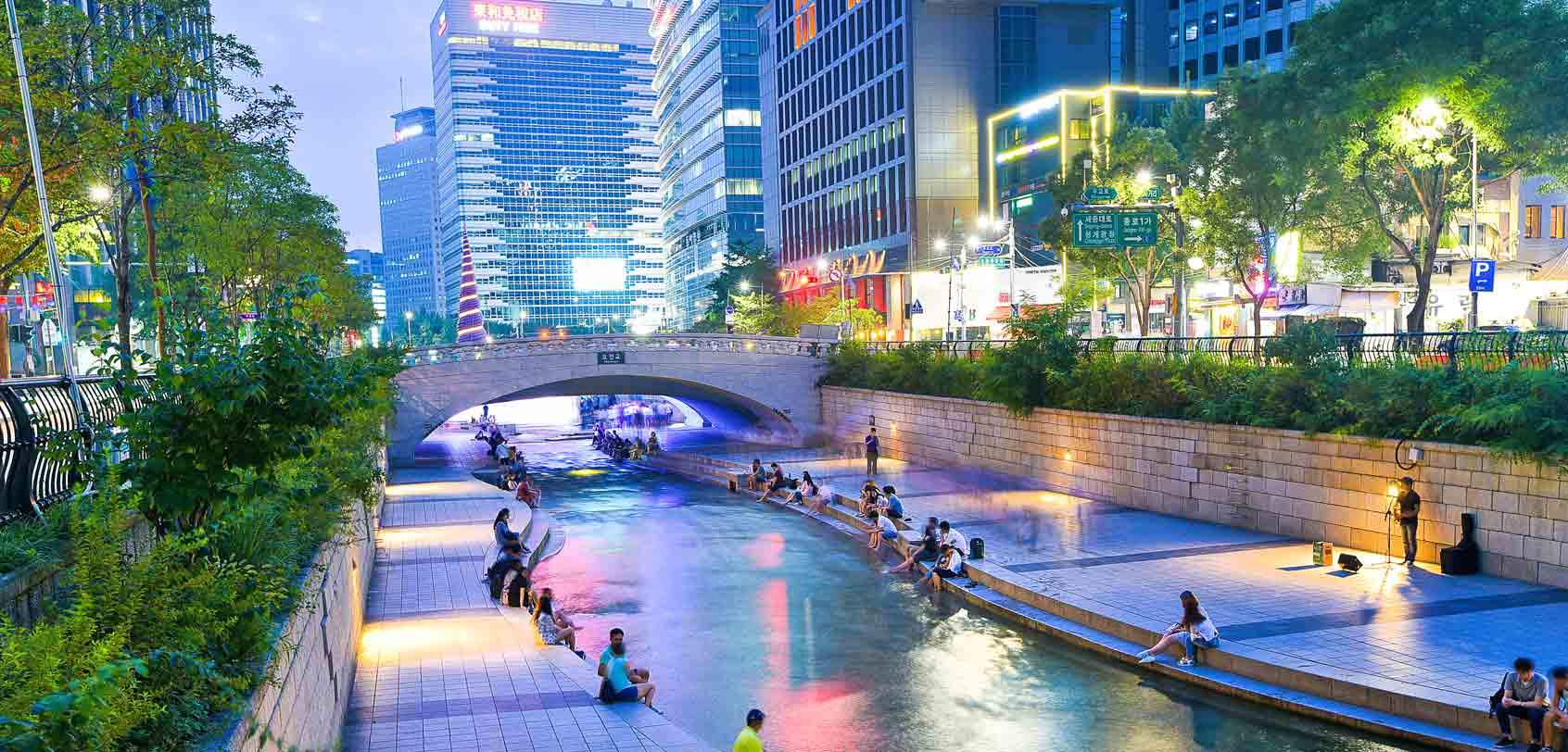
Cheonggyecheon is a picturesque 11 km-long modern stream that runs through a total of 22 bridges before flowing into the Hangang or Han River. Some examples of the beautiful bridges that it has are the Narae Bridge (which represents a butterfly) and Gwanggyo Bridge (depicting the harmony of the past and the future).
A lot of Seoulites wind down to this spot to chill and bask under the city lights, the lush ambiance, and the surrounding man-made waterfalls, if not partake in the Bamdokkaebi (Goblin) Night Market from May to October — so why not do the same during your Seoul itinerary?
DAY 3: A chill kind of day
◘◘ Do a “ Discover Seoul Pass ” or “Extra Days” activity
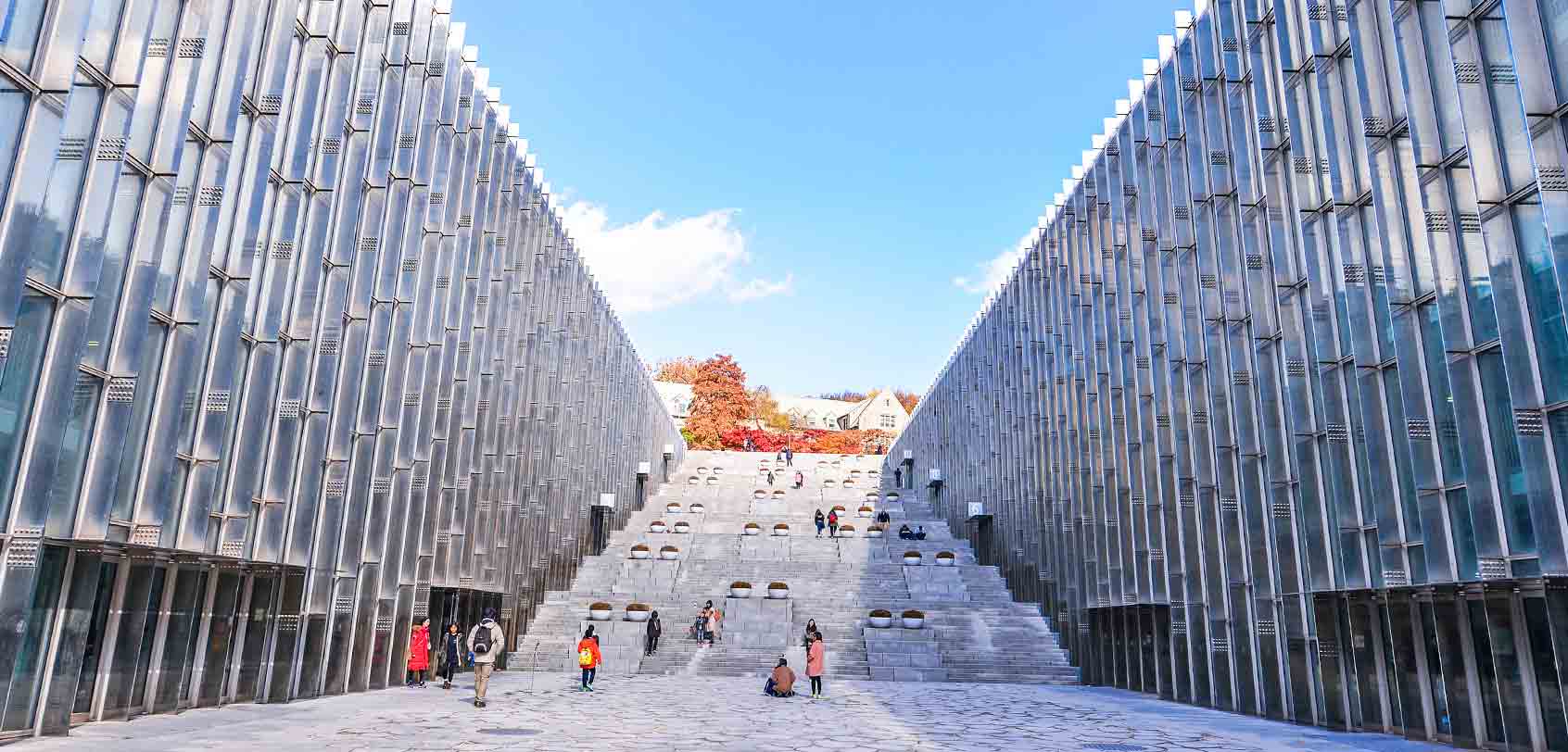
I recommend that you pick up an activity that you prefer from any of the previously listed things to do that I’ve written under Day #2’s ‘Discover Seoul Pass’ options of this Seoul itinerary. If not, you can also browse through the “Extra Days” tab above.
If you ask me, doing a cooking class , a kimchi class or a K-pop dance class will be a LOT of fun! (Read more about my Kpop dance class experience here ).
Did you ever want to try spending a day with a Korean ‘oppa’ (older brother)? Join this walking tour that’s led by a local guide!
◘◘ Grab lunch
- Hangaram: (Nearest subway station: Express Bus Terminal Station) Hangaram is a great choice if you want to taste some of the beloved Korean staples like bibimbap (mixed rice bowl), bulgogi (stir-fried beef), japchae (stir-fried glass noodles), kimchi (fermented vegetables) , etc. .
- Tosokchon Samgyetang: (Nearest subway station: Gyeongbokgung Station, Exit #2) Another Korean dish that you need to taste is samgyetang or ginseng chicken soup, and this restaurant is often lauded as the BEST place to eat in.
For other food or restaurant options, click the “Extra Days” tab on top of this section — or go to this link to see a list of restaurants that you can book online at special deals for your Seoul itinerary .
◘◘ Shop for highly discounted Korean food and snacks at Lotte Mart!
(Nearest subway station: Seoul Station, Exit #4 ). Naturally, going through any of the night markets I’ve listed under Day #1 will already grant you access to the cheapest food and snacks possible. However, other than those, I think that you should also go on a crazy chow shopping spree at Lotte Mart’s Seoul Station Branch! Why so? Well… as one of the leading discount store chains in South Korea, they sell ridiculously low-priced goods.
I swear to you, I bought only USD$20-worth of snacks here, yet it was enough to gift them to more than 20 people! (On top of the discounted items, you can get at most an 8% tax refund, and more to that, they also provide a free self-packing station so that you can pack all your purchased items in sealed boxes).
- For the must-buy snacks? It would be tteokbokki junk food, Binggrae banana-flavored milk, choco pies, yogurt jelly, honey butter chips, fire noodles (called also Buldak Bokkeum Myeon ), Lotte stick biscuits, and honey butter almond among many others!
- TIP: While you’re here, don’t miss dropping by the nearby newly-opened sky garden walkway called Seoullo 7017!
◘◘ Walk around Gangnam
(Nearest subway station: Gangnam Station)

There’s probably not a soul in this world who hasn’t heard of ‘Gangnam’ (and we have PSY to thank for that) .
For your info, Gangnam is Seoul’s upscale modern center that is home to high skyscrapers, designer brands, high-end restaurants, and pulsating nightclubs — so yes, it’s the home to many wealthy Koreans. In fact, you can think of it as the ‘Beverly Hills’ of Seoul. To make the most of your visit here during your Seoul itinerary, stop by the following ( it’s best to pick 3 at most ).
- Gangnam Terminal Underground Shopping Centre: You’ll find this from the moment that you step foot in Gangnam Station’s subway. With an array of accessories, clothing, cosmetics, and shoes, I have found a lot of sweet bargains here myself! .
- Gangnam Square: Right outside Gangnam Station’s Exit #5 is the spacious Gangnam Square which has a small section built as a tribute to PSY’s ‘Gangnam Style’ hit song, as well as the Gangnam-daero Road that’s speckled with various shops. .
- Apgujeong Rodeo Street and Cheongdam Fashion Street: (Nearest subway station: Apgujeong Rodeo Station, Exit #1 and Exit #3 respectively.) If you haven’t had enough of shopping but are looking for more upmarket shops. .
- Hallyu K-Star Road: K-pop fans must not skip this! Found between Apgujeong Rodeo Station and Cheongdam Station are adorable GangnamDols that are each autographed by K-pop groups like EXO, BTS, Super Junior, and more. For a detailed list, you can check here . .
- Garosu-gil Road: (Nearest subway station: Sinsa Station, Exit #8) This Gingko tree-lined street is a popular, trendy street in the city of Seoul and it is even often called an ‘artists street’ due to the number of quaint cafes and designer stores. Some charming cafes that you can choose from are Gingko Avenue, Line Friends Cafe, Cafe de Paris, and IKOVOX . .
- Starfield COEX Mall: (Nearest subway station: Bongeunsa Station, Exit #7) This mall is a shopping mecca, but more than this, it has interesting amenities too that are not limited to the COEX Aquarium and the Starfield Library. The latter is the newest built facility on the premises and it features 50,000 books and magazines in a grand yet relaxed setting. .
- SM Town Museum: (Nearest subway station: Samseong Station, Exit #6) This place is dedicated to famous K-pop artists under the powerhouse of SM Entertainment in South Korea. Avid fans can tour through their training rooms, recording rooms, and so much more. (If you don’t have the pass and want to separately book a ticket, go here ) . .
- Lotte World: (Nearest subway station: Jamsil Station) As Seoul’s largest indoor and outdoor amusement theme park, you will actually need a full day to enjoy this place — but I still felt like including this here, just so you know that it’s located in this Gangnam area. So if you have a spare day in your Seoul itinerary, it would be great to visit Lotte World. Another theme park choice would be Everland , but if you want other options, check the “Extra Days” tab above.
◘◘ Go up to Lotte World Tower
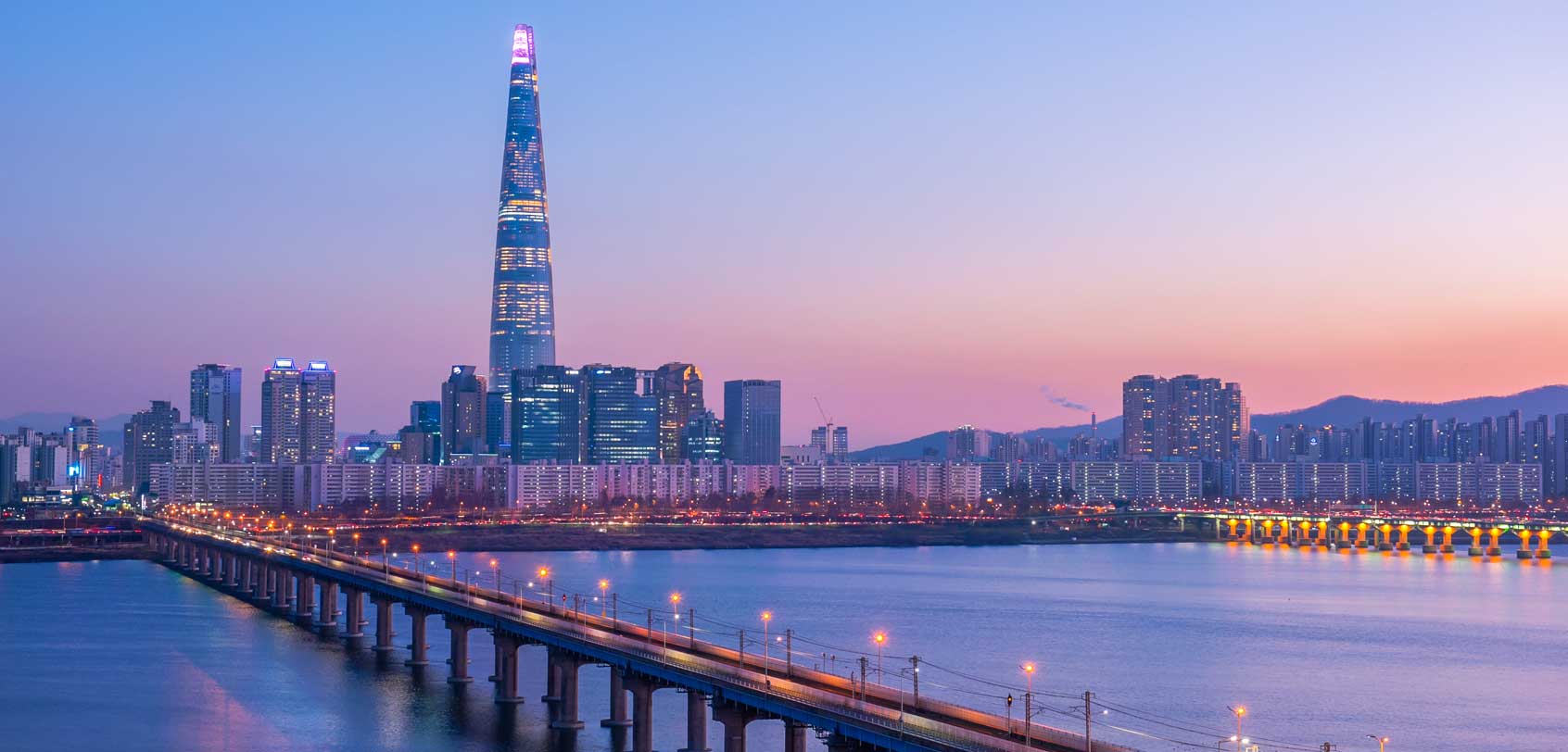
Towering at 554 meters, this new 123-floor skyscraper just opened last 2017 and it is currently the tallest building in Seoul and the 5th tallest in the world. It contains several cafes, galleries, a luxury hotel, a skywalk, and an observation deck.
Obviously, this is the best place for viewing panoramic views of the cityscape and I highly suggest that you go up to the observatory not only to enjoy the view with a cup of coffee but to also experience its glass floors! Though it was nerve-wracking at first, it was really cool to feel as though I was floating up in the air like that! (Another thing you can enjoy nearby is Lotte World Mall).
NEAREST SUBWAY: Jamsil Station, Exit #2 BOOK: ₩27,000 for adults and ₩24,000 for children (Pay less if you book online ).
BONUS : From April to October, head over to the Han River’s Banpodaegyo Bridge by 8PM (plays every 20 minutes until 9PM) to watch their famous Moonlight Rainbow Fountain show.
I think it’s time to have a meal with the guidance of a local during your Seoul itinerary, so why not try a Seoul street food tour for instance? If you’re not game for that, you can find other food or restaurant options under the “Extra Days” tab on top of this section — or go to this link to see a list of restaurants that you can book online at special deals for your Seoul itinerary.
DAY 4: All About JSA
◘◘ Visit the Korean Demilitarized Zone (DMZ)
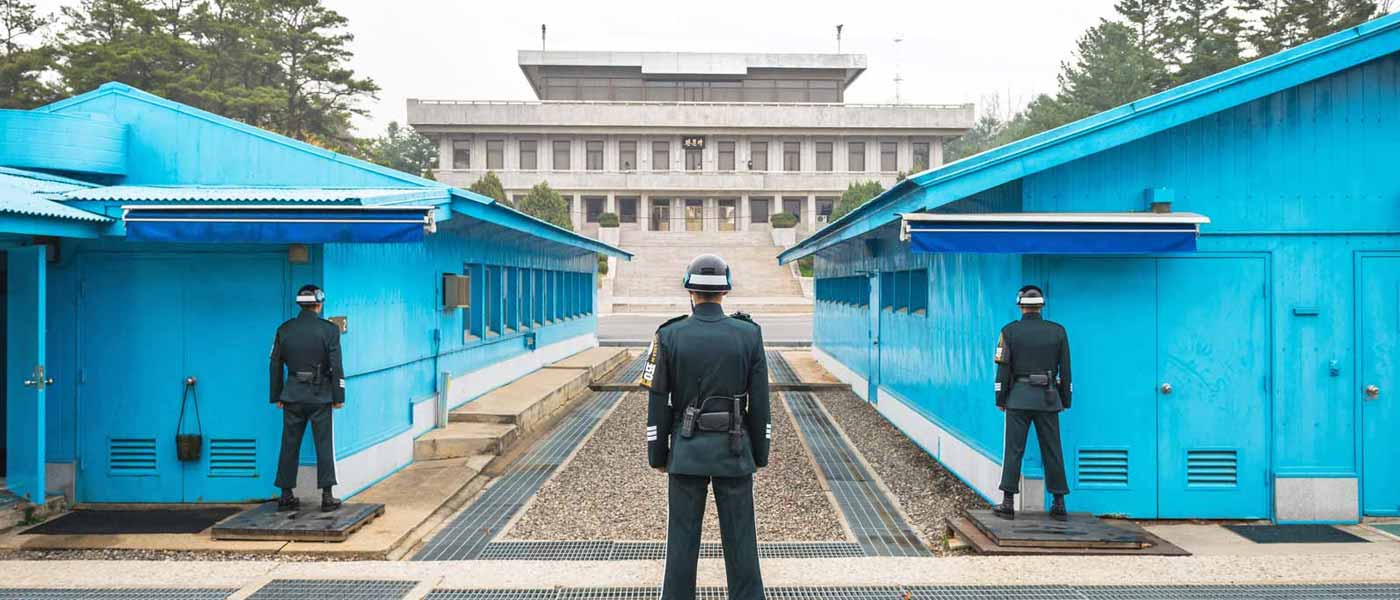
It’s no news that the Korean peninsula has long been divided into two countries: North Korea and South Korea. Unfortunately, it was not at all a peaceful separation given the infamous 250km-long buffer zone of the Demilitarized Zone ( DMZ ) that separates the two since 1953.
Today, it is referred to as the most heavily guarded area in the world with battle-ready armies, fences, landmines, and fences on both sides — it’s absolutely one of the scariest places in the world! …And yet, it continues to be a popular major tourist attraction in South Korea that attracts a lot of history buffs and curious folks worldwide who are seeking to witness this surreal land for themselves (people like me).
The available tours currently being held are as follows:
- Panmunjom Joint Security Area (JSA) Tour: This is the most sought-after tour by travelers to South Korea’s DMZ because this is the closest place to North Korean soil that anyone can step into without getting arrested or shot. A tour to JSA will only be possible through an organized tour that is approved by the government and it will basically take the guests to the iconic blue UN building that is smacked on the border — with both North and South Korean soldiers facing one another (as if they’re on a staring showdown). .
- North Korea Center of Unification Board: Shows over a hundred photos and documents showing the stark reality of North Korea.
- Mangbaedan Alter: The spot where Koreans separated from their families in the North. Koreans typically visit this place on New Year’s Day and Chuseok (Korean Thanksgiving) to perform ancestral rites to their home and relatives in the North.
- Bridge of Freedom: Where South Koreans crossed when they were released from North Korea. You will witness a lot of ribbons tied to the fences that each contain messages of hope, peace, and love.
- Dora Observatory: From here, visitors can look closer into North Korea with binoculars as they witness things like the North Korean propaganda village, Kaesong city, and others.
- Dorasan Station: This is the northernmost train stop on South Korea’s railway line and locals hope that it would one day connect North and South Korea when peace finally prevails.
It is possible to combine the two tours above for a whole-day experience during your Seoul itinerary (see here ).
BOOKING LINKS (use promo code AILEEN5OFF to get a 5% discount ) :
- Panmunjom Joint Security Area Tour (JSA) only = ₩85,000~
- Third Tunnel of Aggression only = ₩63,800~
- Panmunjom Joint Security Area Tour (JSA) & Third Tunnel of Aggression combo = ₩130,000~
◘◘ Visit a spa or a jjimjilbang
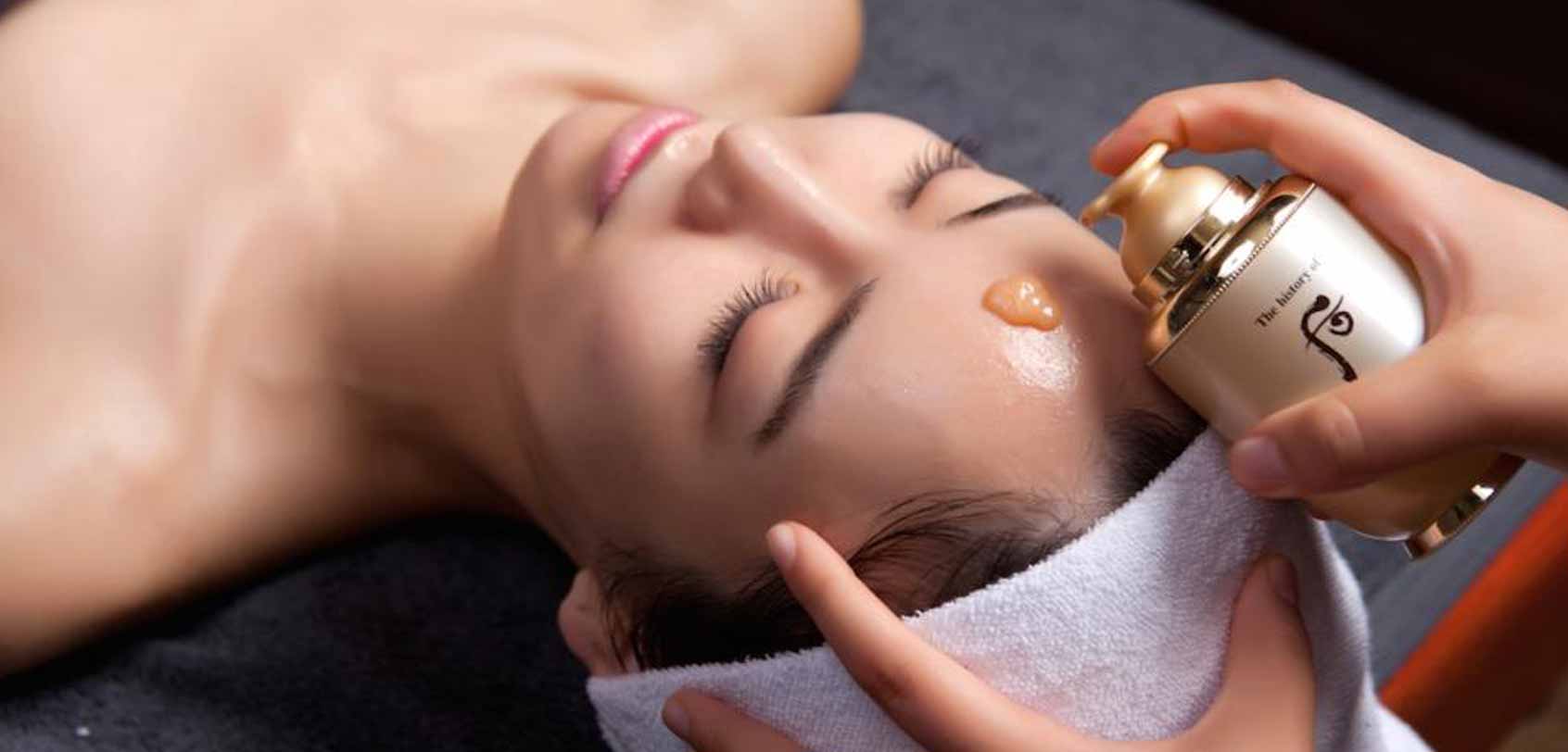
After your tense morning tour to DMZ, how about you relax and pamper yourself with Korea’s well-liked spa services? Apart from getting a Korean massage , I urge you to experience jjimjilbang or a large gender-segregated public bathhouse complete with hot tubs, showers, traditional Korean kiln saunas, and massage tables.
If you’re a fan of K-dramas, you will probably be familiar with this because it’s a common place that Koreans frequent for spa services. For this, you can visit Dragon Hill Spa (or if you hold a Discover Seoul Pass , it gives you free admission to Sealala jjimjilbang).
NEAREST SUBWAY STATION: Itaewon Station, Exit #3 BOOK: Go to this link to get a discounted rate
ALTERNATIVE : If you rather want to relax in nature during your Seoul itinerary, go over to the World Cup Park, a humongous space that used to be a landfill but has now been turned into a park with 5 different sections: Pyeonghwa (Peace) Park, Haneul (Sky) Park, Noeul (Sunset) Park, Nanjicheon Park, and Nanji Hangang Park. A crowd favorite would be Haneul Park as it’s the highest elevation of the five parks.
I have two options for you for your Seoul itinerary, depending on what you prefer:
- Buffet: Taste all kinds of gourmet food at Tavolo 24 .
- Korean gopchang: Taste the popular stir-fried Korean dish made up of small intestines from cattle or pork (often best paired with soju ) at Aunt’s Grilled Intestines Restaurant .
TIP : You can also check this link to see a list of restaurants that you can book online at special deals.
DAY 5: Day tour to Gapyeong County
◘◘ Explore Gapyeong County’s wonders

It’s time to venture out of Seoul’s busy metropolis to get some fresh air and tranquility. For this, a day trip to Gapyeong County’s top attractions is recommended for your Seoul itinerary!
READ: My detailed guide on this tour by clicking [ here ].
- Petite France: This is a charming place that serves as both a cultural village and a youth training facility with over 16 French-styled buildings. Petite France is also recognized as a top filming location for Korean dramas like ‘Secret Garden’ and ‘My Love from the Star’. With its European ambiance, it is also somewhat of a tribute to Saint-Exupery, the author of the famous French Novel: ‘Le Petit France’. ~Entrance fee: ₩10,000 adults / ₩5,000 children .
- Nami Island: A half-moon-shaped island nestling inside an artificial lake known for being the filming grounds of the well-known K-drama ‘Winter Sonata’. Nami Island is home to rows of majestic trees, roaming animals, and art exhibits, making it a sought-after destination in every season! I highly recommend that you rent a bike when you’re here; otherwise, there are other activities you can do such as water sports, trying on the roller skating rink, going to the shooting range, and more. ~Entrance fee: ₩13,000 .
- Garden of Morning Calm: This grand 30,000 sqm garden is open all year round and it is regarded as the oldest private garden in Korea with an artistic space that’s sure to leave anyone in awe. The Garden of Morning Calm becomes even more magical during winter (December to March) when they set up hundreds of multi-colored lights to create themed gardens, so make sure that this is on your Seoul itinerary! ~Entrance fee: ₩9,500 adults / ₩6,000 children .
- Gangchon Rail Bike: Built on a discontinued trail line, Gangchon Rail Bike is a fun attraction where you can pedal through old railroad tracks while taking in the amazing Bukhangang River scenery. Rest assured, it doesn’t require much effort to pedal the makeshift carts because the rail lines are slightly sloping downhill. ~Entrance fee: ₩30,000 for a two-seater .
- Edelweiss Park: Edelweiss Park is similar to Petite France, but instead, it focuses more on being a Swiss-based cultural village, so it’s filled with Swiss architecture, establishments, and sceneries. ~Entrance fee: ₩10,000 .
For a hassle-free experience on your Seoul itinerary, it would be advisable to go on a guided tour. Nowadays, there are different packages so feel free to take your pick from any of the combinations below (they often already include a delectable dak-galbi lunch, but there is also a halal option ; don’t forget to use promo code AILEEN5OFF to get a 5% discount ):
- (2 stops) Nami Island + Alpaca World
- (2 stops) Nami Island + Petite France
- (2 stops) Nami Island + The Garden of Morning Calm
- (3 stops) Nami Island + Alpaca World + The Garden of Morning Calm
- (3 stops) Nami Island + The Garden of Morning Calm + Gangchon Rail Bike
- (3 stops) Nami Island + Petite France + The Garden of Morning Calm
- (3 stops) Nami Island + Petite France + Gangchon Rail Bike
- (3 stops) PRIVATE TOUR: Nami Island + Petite France + Gangchon Rail Bike
- (4 stops) Nami Island + Petite France + The Garden of Morning Calm + Gangchon Rail Bike
If not, you can take the ‘Gapyeong Tourist Bus’ which can bring you to all of these locations for only ₩6,000 — the downside though is that the buses run only once every hour, and with the crowds that go to all of these places, it’s likely that the spots get filled quickly. (This is why I suggest going on a guided tour instead.)
I have two options for you, depending on what you prefer:
- Samgyeopsal : Taste this hearty grilled pork belly dish at Palsaik which is very popular with locals.
- Jokbal: Try this Korean dish consisting of soft pig’s trotters cooked in soy sauce and spices at Manjok Ohyang Jokbal .
TIP : You can also check this link to see a list of restaurants that you can book online at special deals for your Seoul itinerary. (Use promo code AILEEN5OFF to get a 5% discount).
Explore other TOP destinations in South Korea
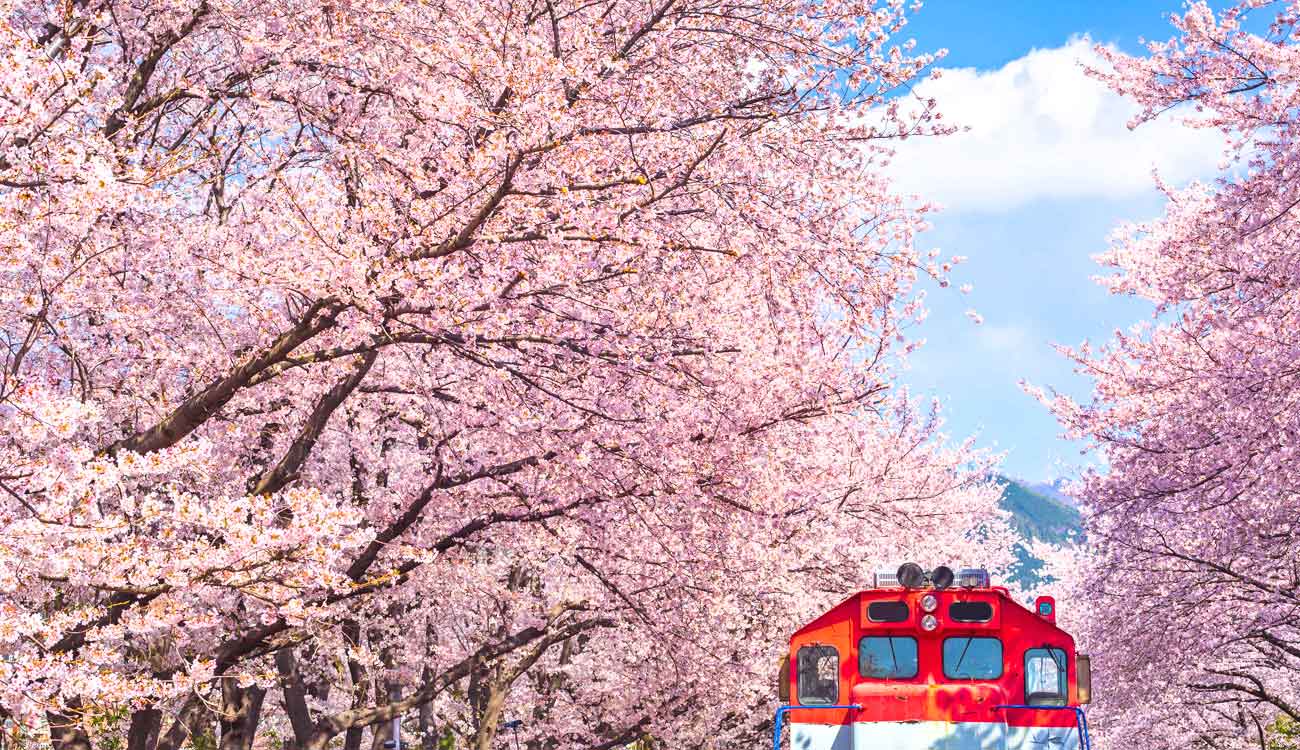
BUSAN Known for its colorful houses, mountains, and the largest fish market in Korea!
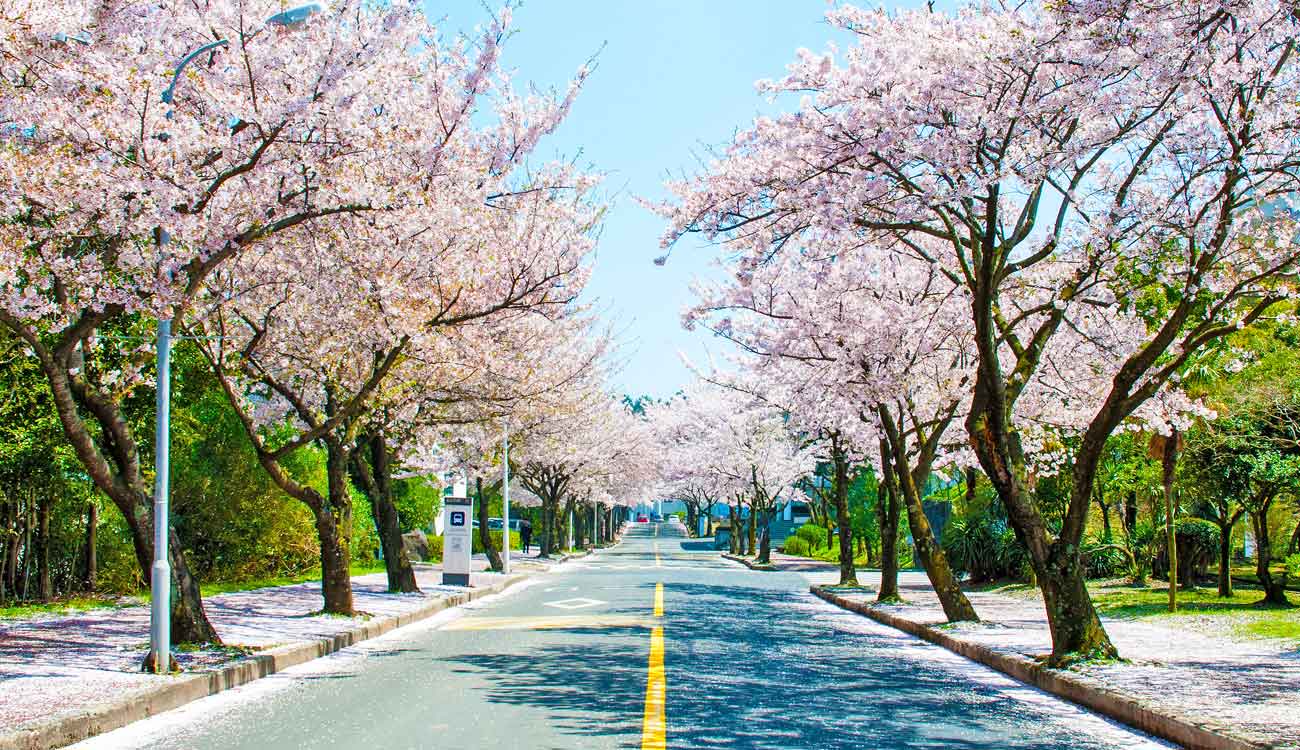
JEJU ISLAND South Korea’s top island destination beloved by tourists and locals alike.
TIP : Check out all of the top Instagram spots in Busan to fill up your feed and Seoul itinerary!
◘◘ Family Fun ◘◘
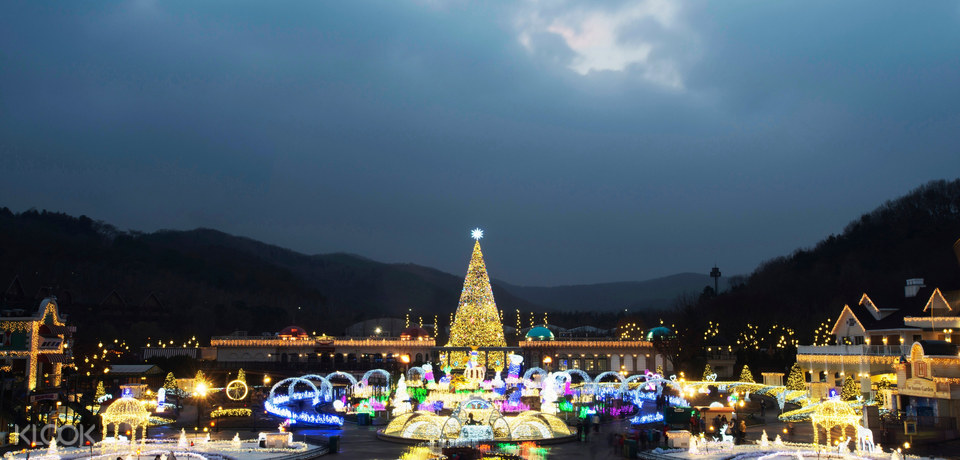
Everland Park South Korea’s largest attraction park.
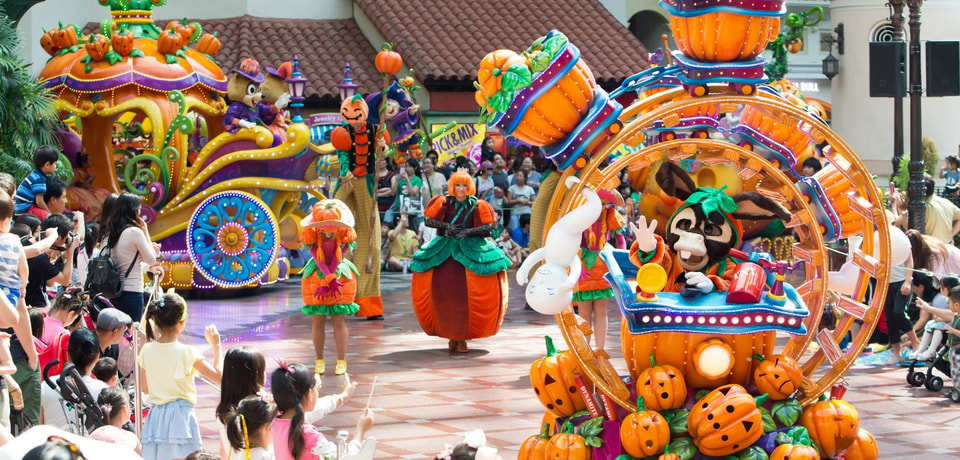
Lotte World Large indoor and outdoor theme park.
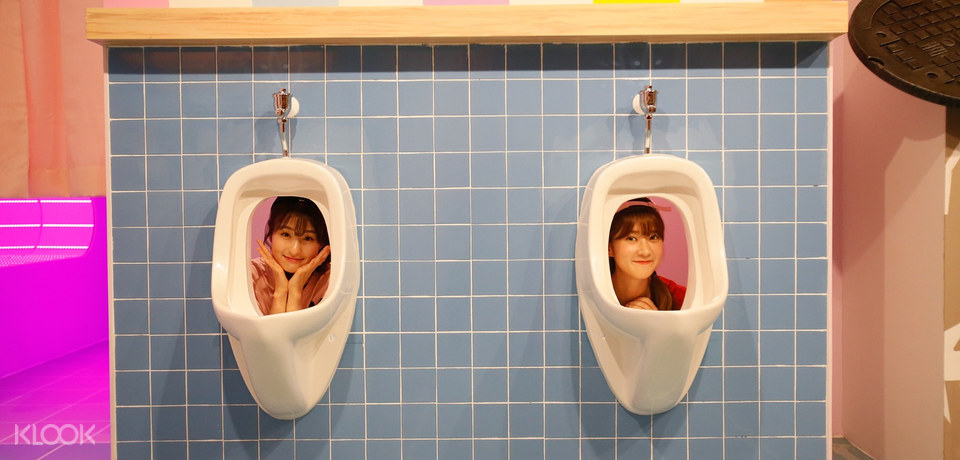
Poo Poo Land Unique and fun place for photo-ops and learning.
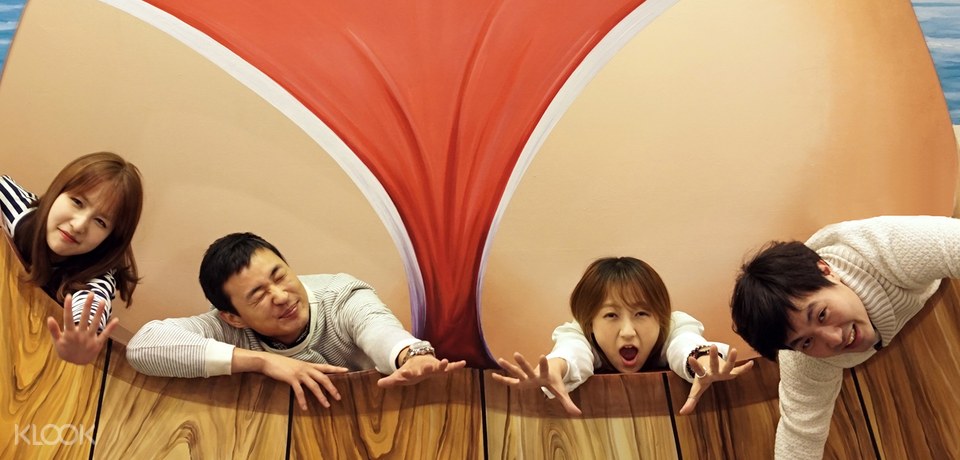
Love Museum Seoul’s first and only museum for adults!
◘◘ K-Drama & K-Pop ◘◘
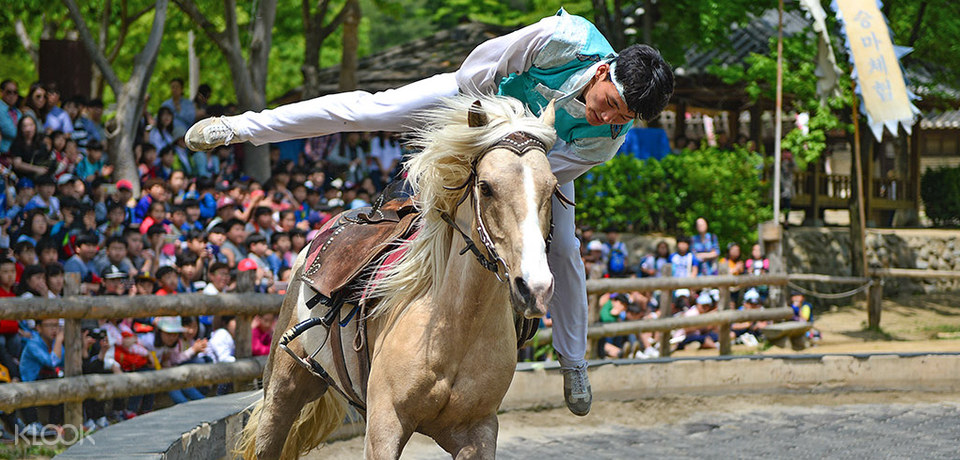
MBC Dae Jang Geum Park Tour Largest historical drama open set in Korea.
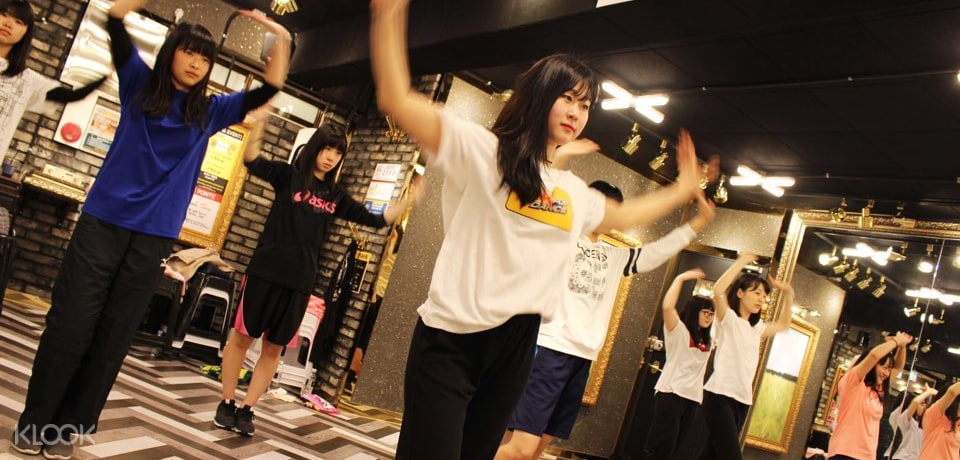
K-pop Dance Studio Class Learn popular K-pop dances and choreography.
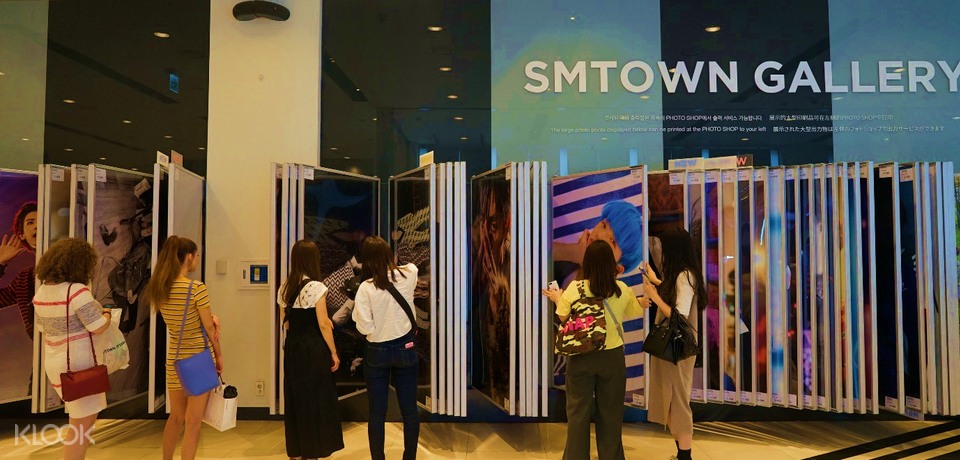
Seoul Hallyu Kpop Tour Ultimate KPop experience for your Seoul itinerary!
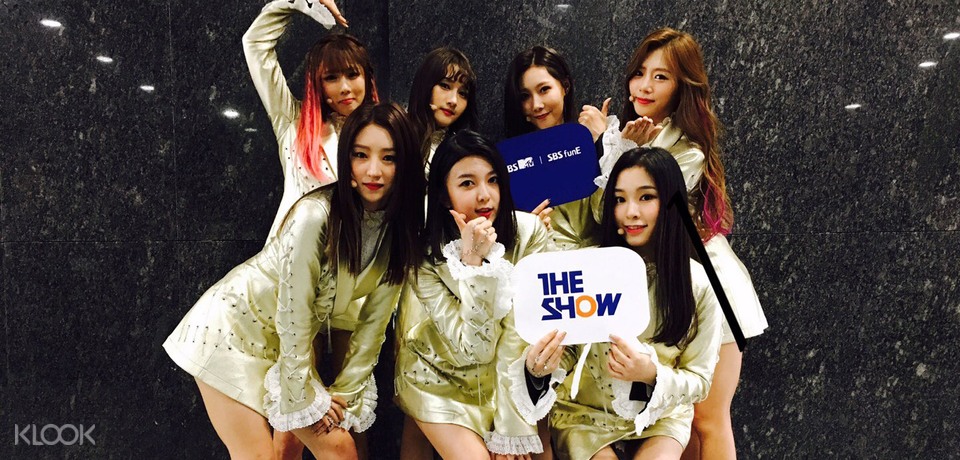
SBS MTV “The Show” Package Backstage access to live sets and broadcasts.
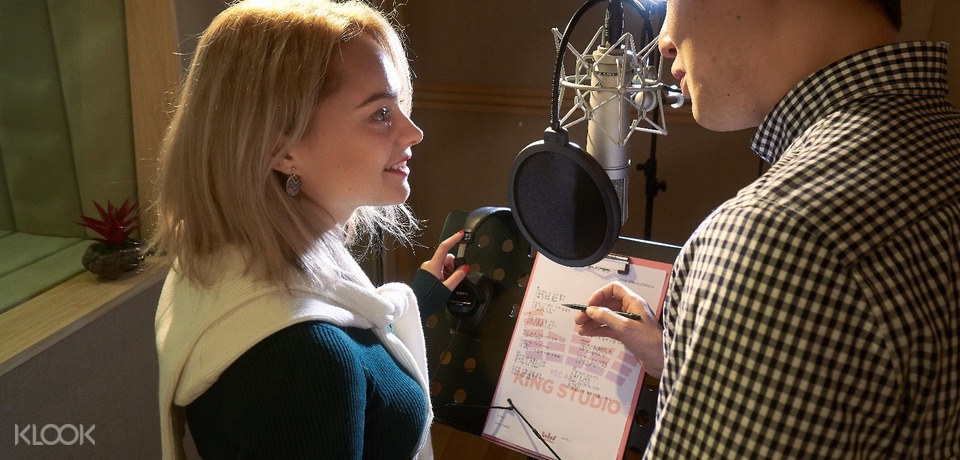
Everland Park Record your own K-Pop song at King Studio.
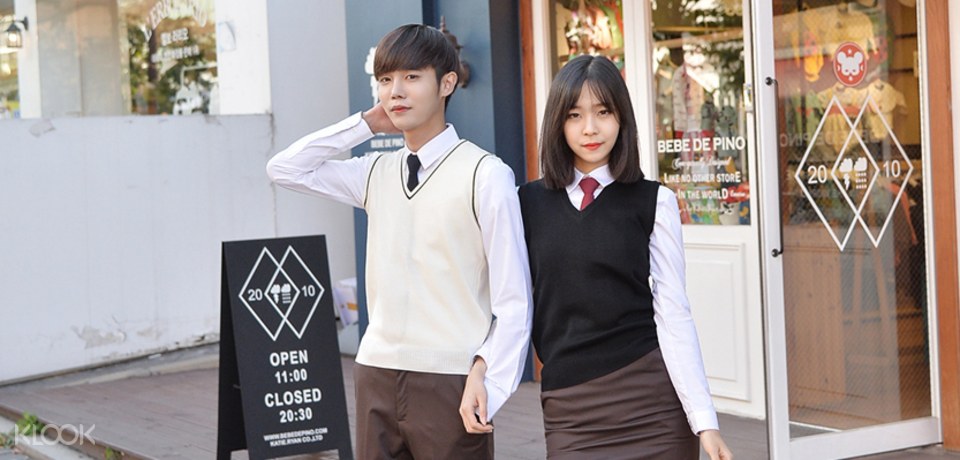
Korean School Uniform Rental Day rental of a Korean school uniform.

“Oppa” Tour Tour Seoul with an attractive “oppa”!
◘◘ Korean Performances ◘◘
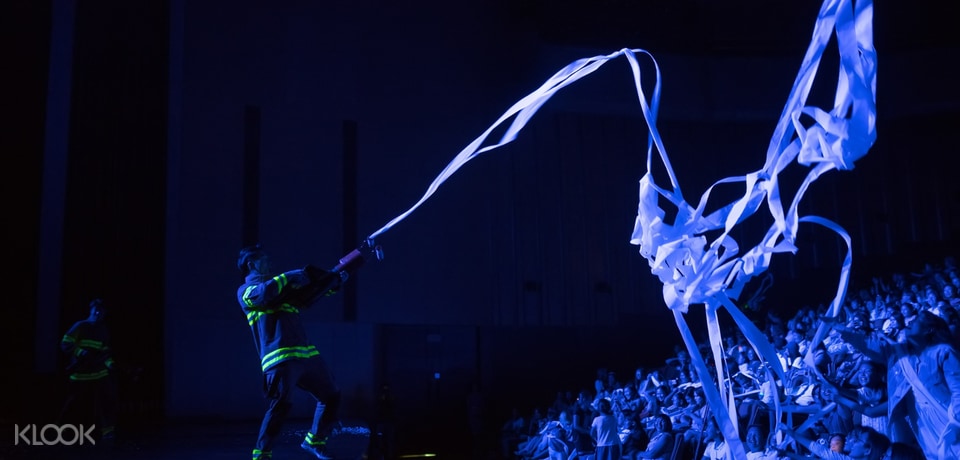
Fireman Show Action-comedy show full of stunts.
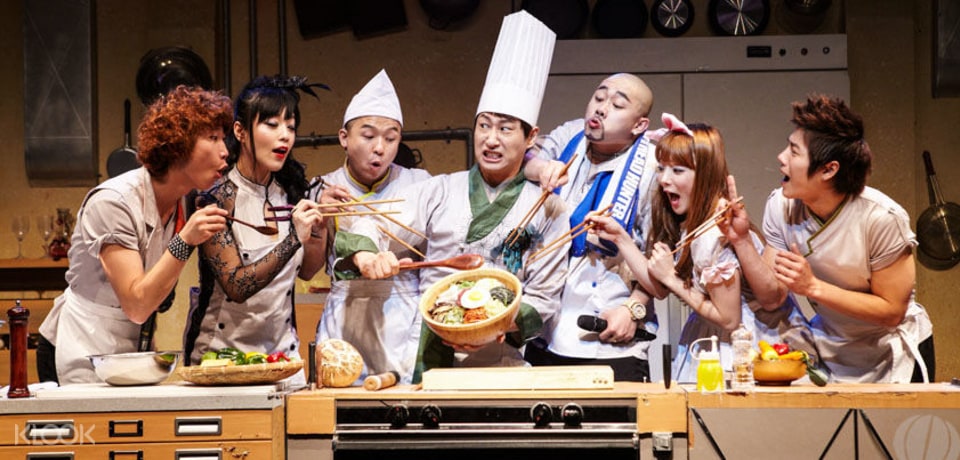
CHEF: Bibap Show One of the best Korean musical shows..
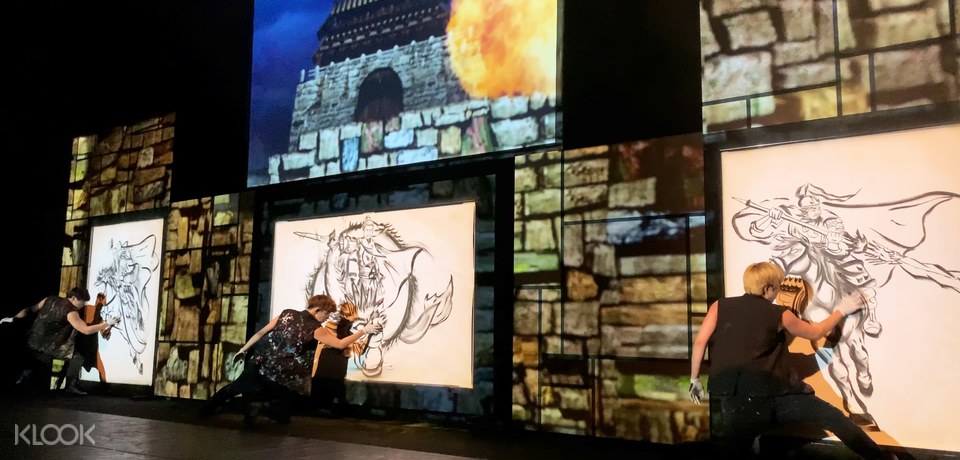
The Painters HERO Famous live painting non-verbal performance.
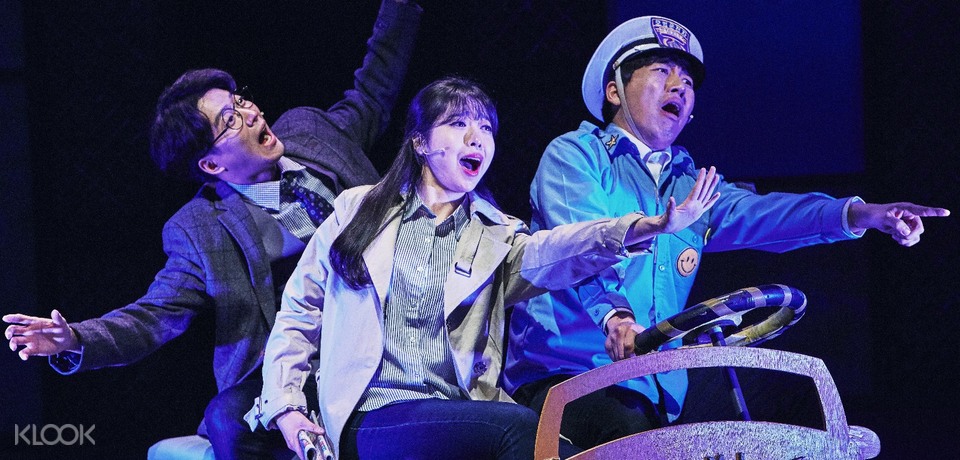
Finding Mr. Destiny Korean musical with subtitles.
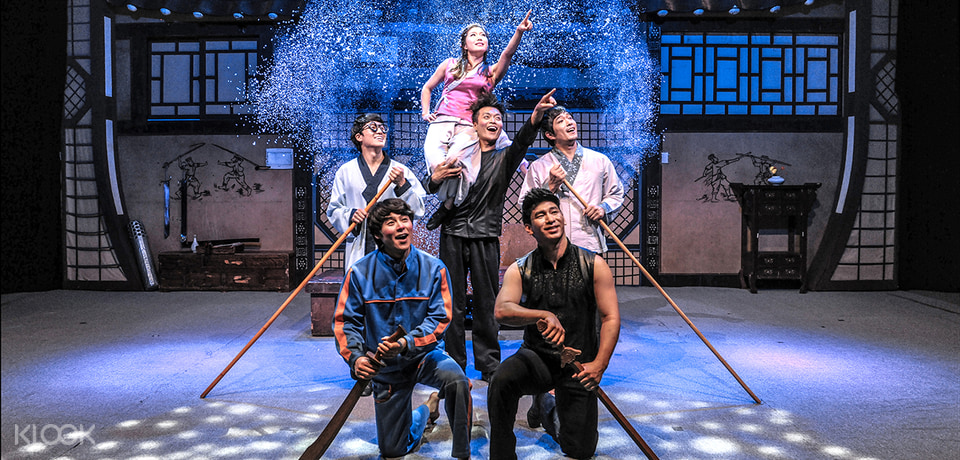
Jump – Martial Arts Show Seoul’s favorite martial arts theatre show.
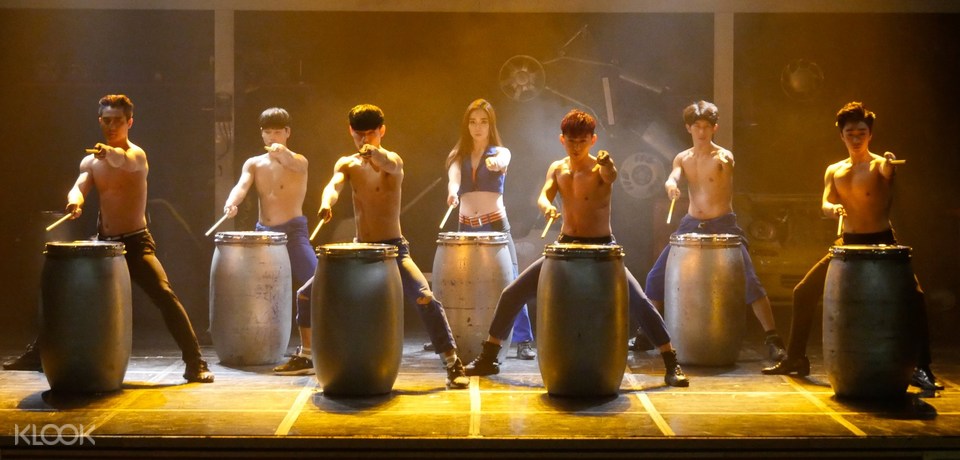
Fanta Stick Show Powerful percussion show.
◘◘ Beauty ◘◘
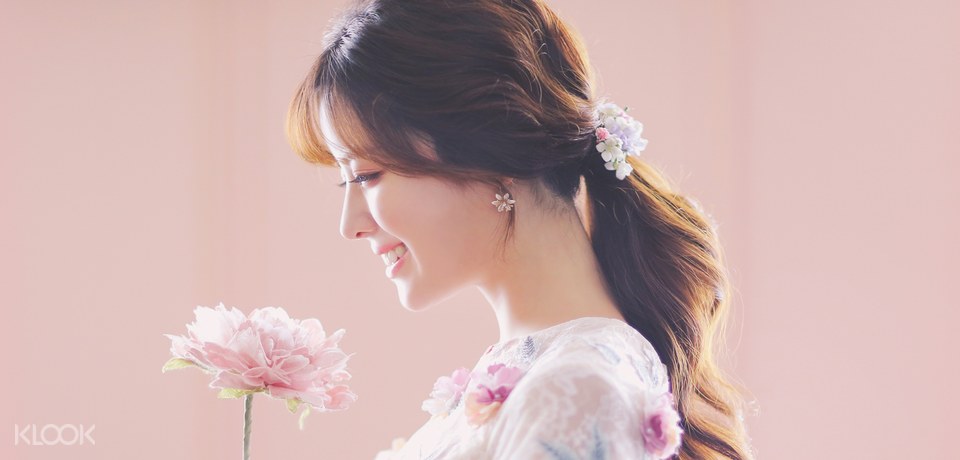
KPop Shoot & Makeover Full makeover at a famous studio.

Pre-nup Photoshoot Pre-nup shoot with makeup, hair, and clothes.

Korean ID Shoot ID shoot in Korean style makeup and hairstyle.
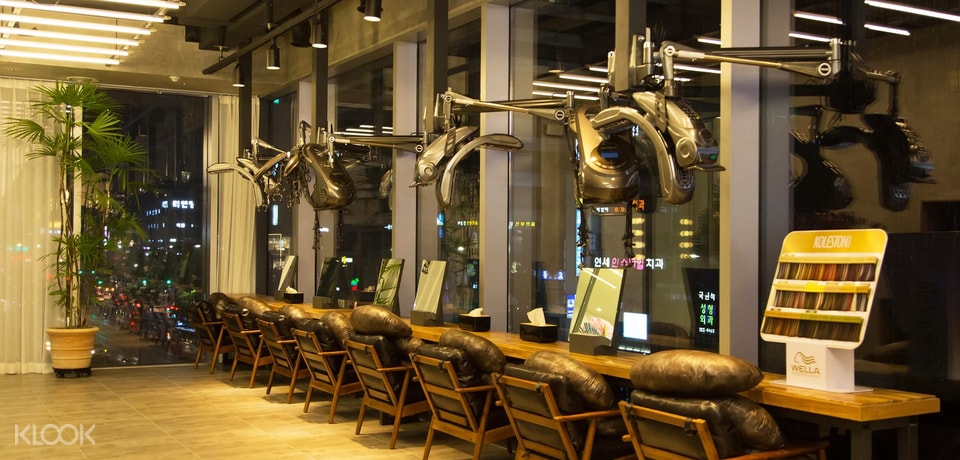
Korean Salon Service Style your hair in Gangnam’s top salon.
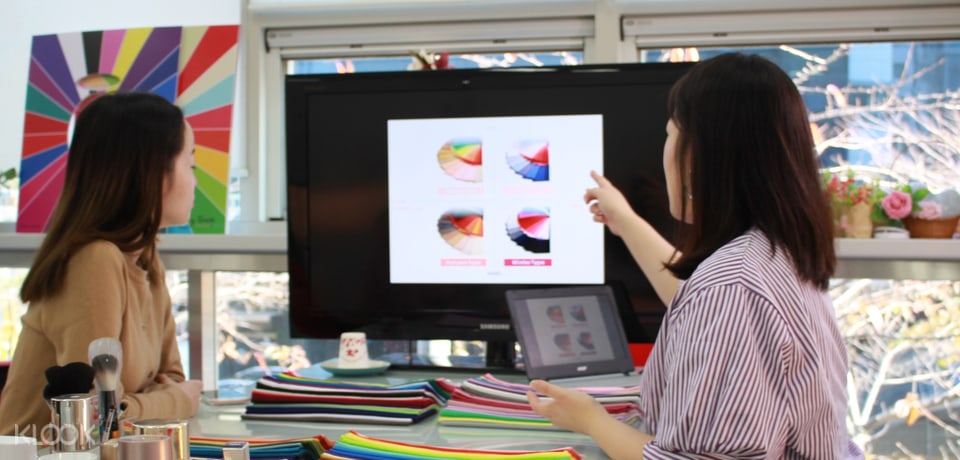
Professional Korean-Style Beauty Consultation Learn about your own personal color based on your skin, etc.
◘◘ Workshops ◘◘
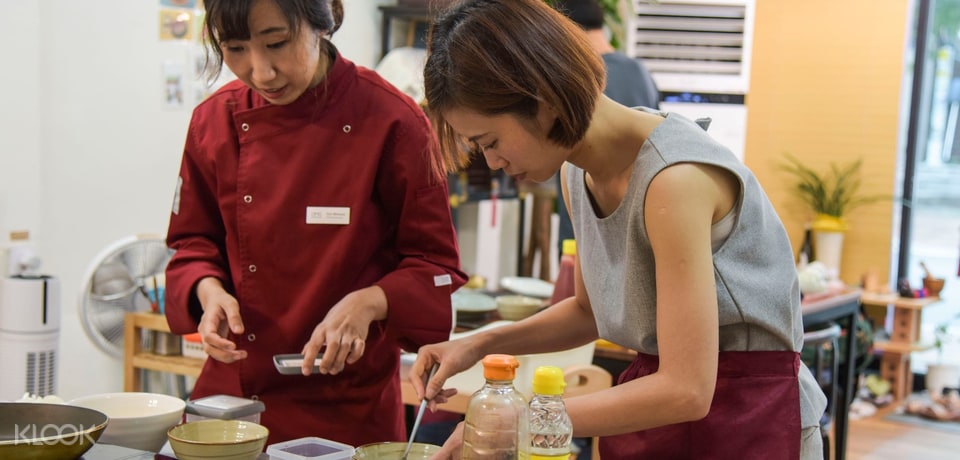
Cooking Class Cook authentic Korean dishes with a local.
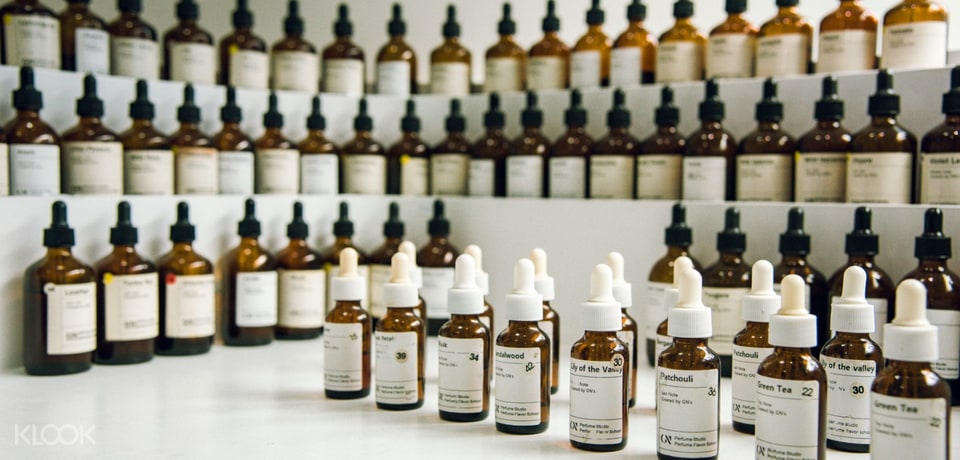
Perfume-Making Class Create your own signature scent.
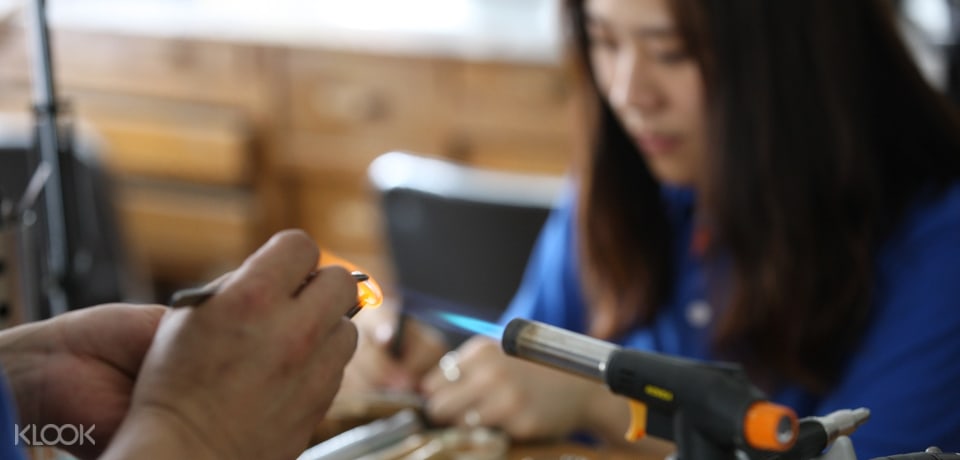
Ring-making Workshop Create your own unique accessories!
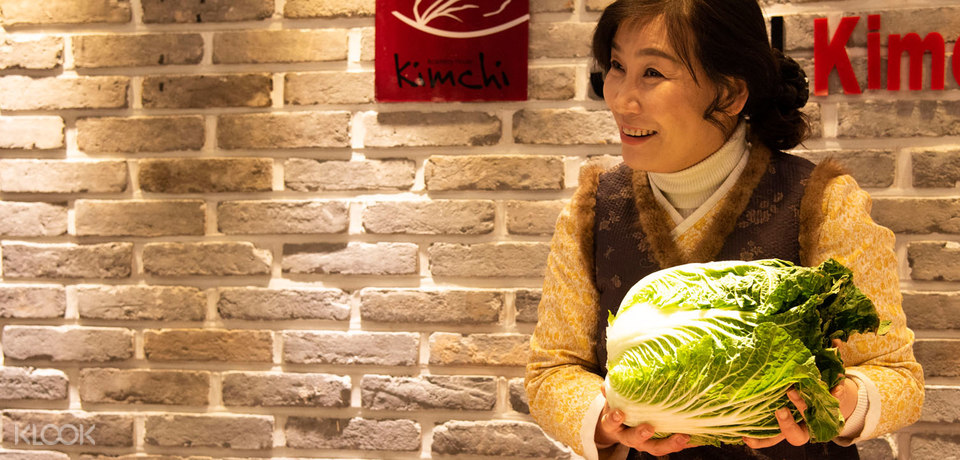
Kimchi Class Learn how to make kimchi and topokki!
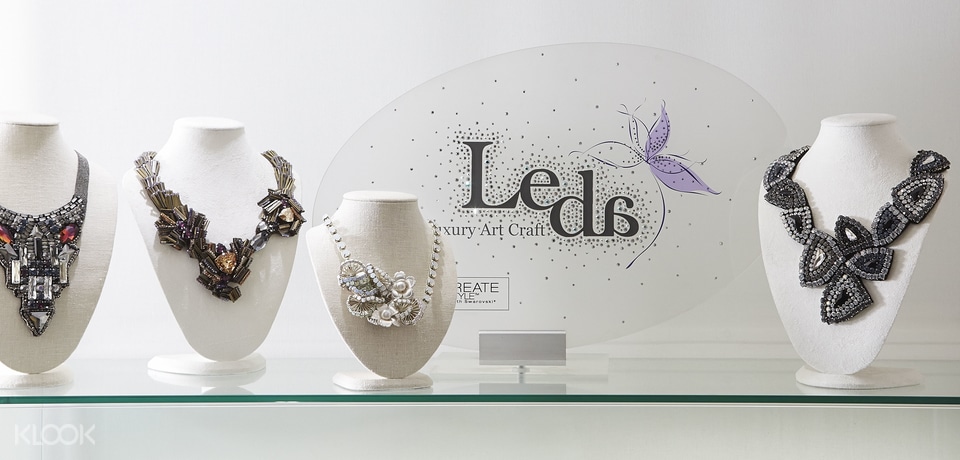
Handmade Jewelry Experience Learn hands-on exquisite art of jewelry making.
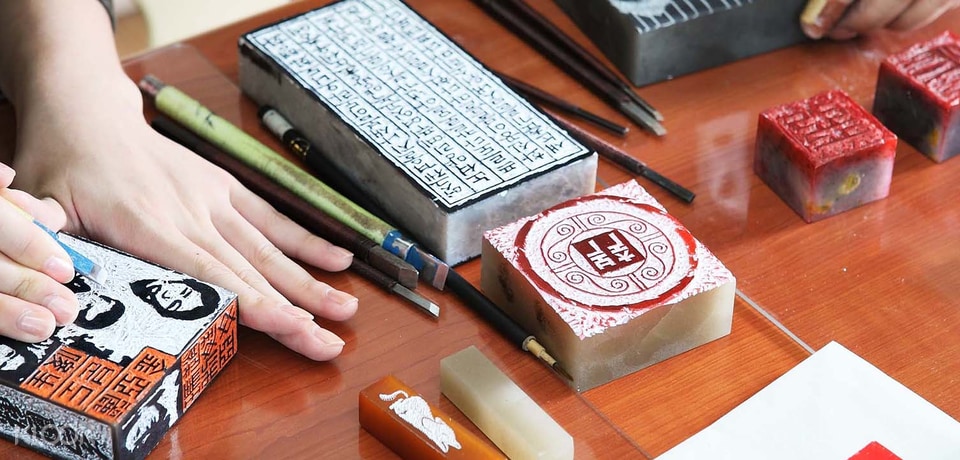
Handmade Stamp Engraving Create your own Korean-style hand engraved seal.
◘◘ Food & Restaurants ◘◘
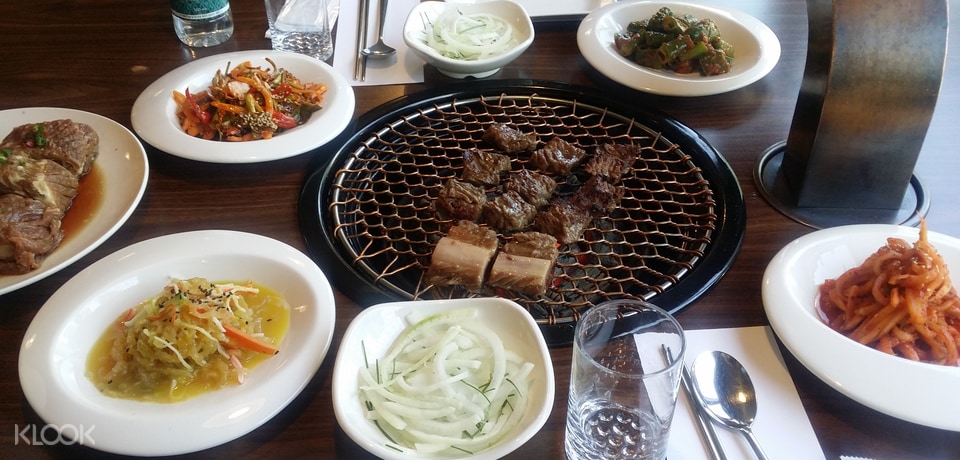
Assorted Grilled Beef Enjoy a Korean BBQ meal
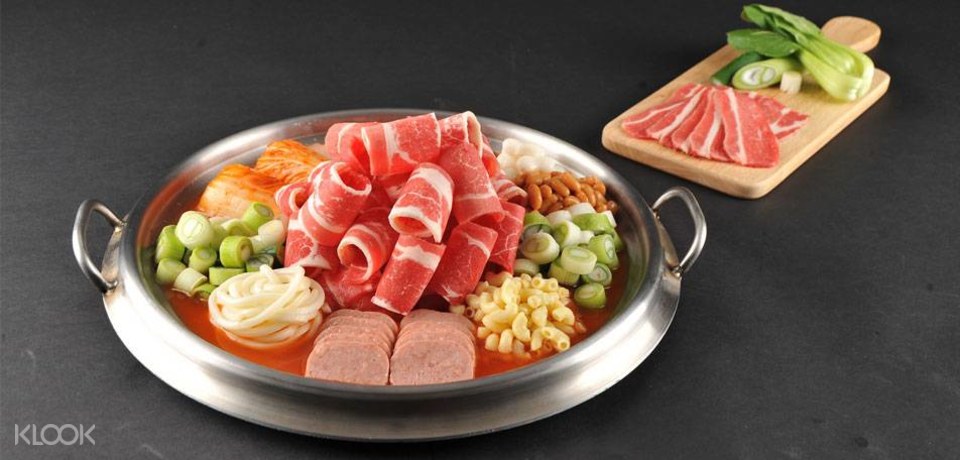
Budae Jjigae Try budae jjigae, the iconic Korean ‘Army Stew’.
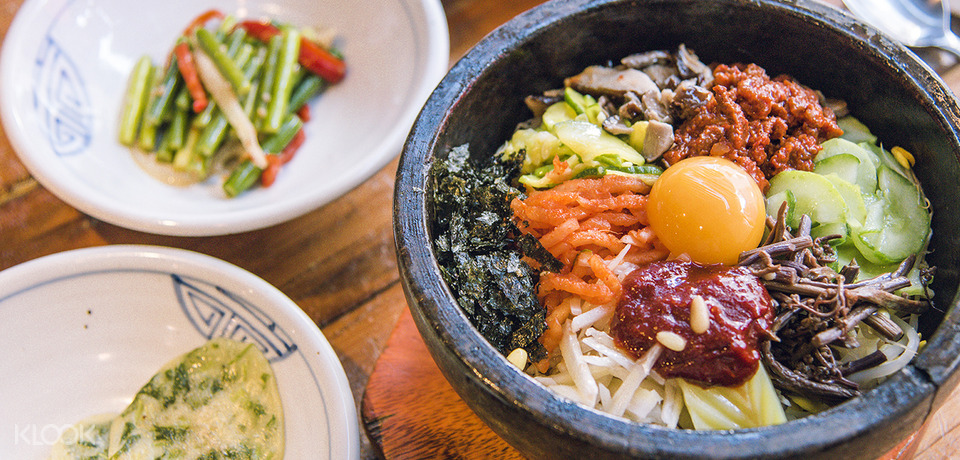
Gogung Bibimbap Specializes in authentic Bibimbap dishes!
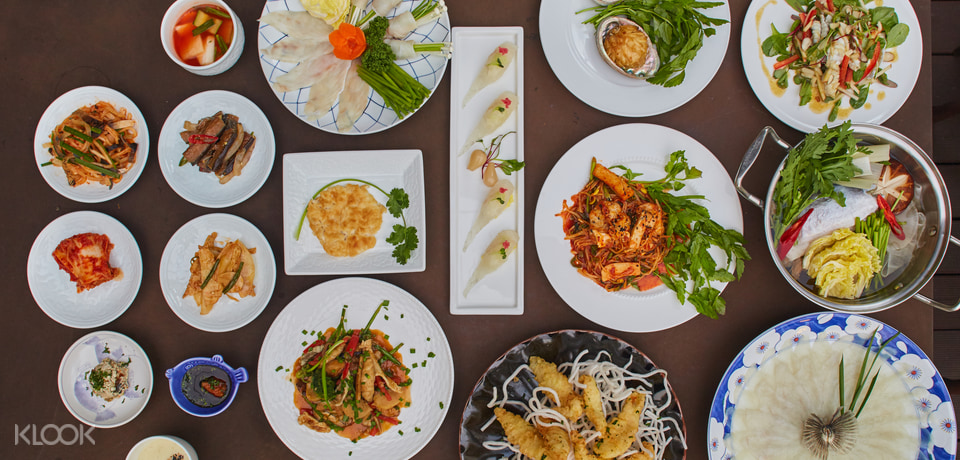
Puffer Fish Set The first puffer fish restaurant in Seoul.
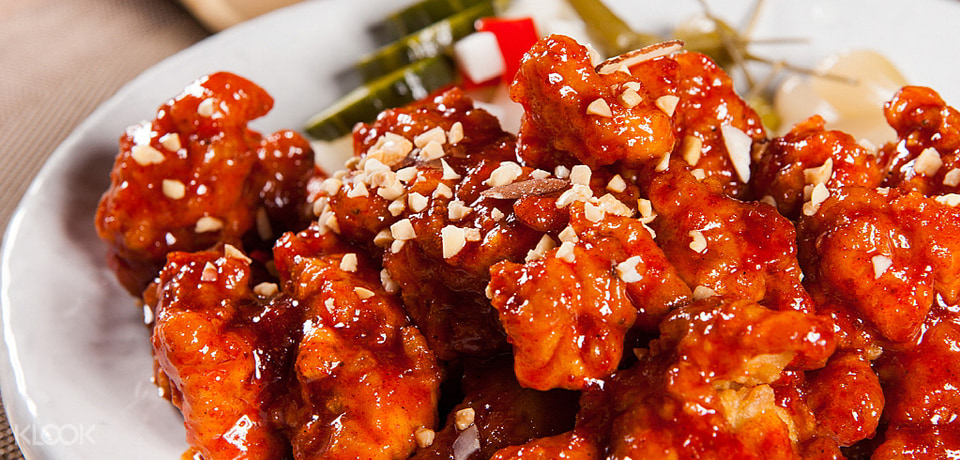
Korean Street Food Experience Korean eating and drinking culture!
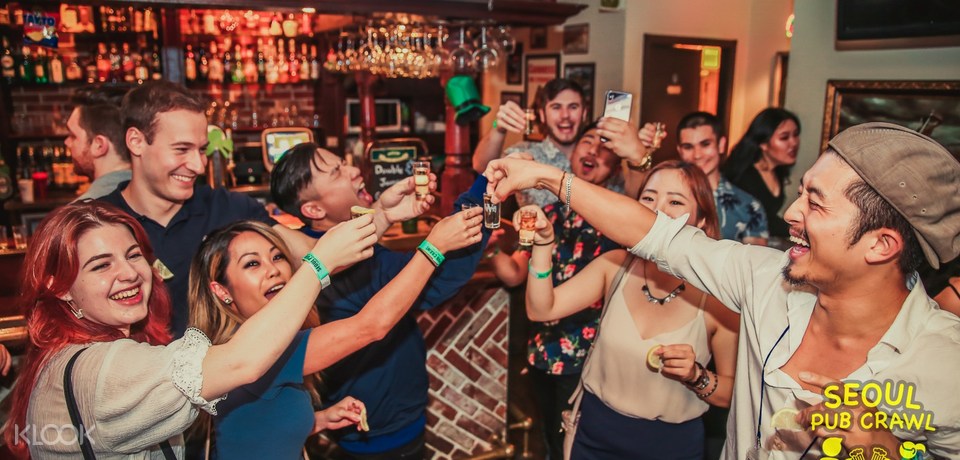
VIP Seoul Pub Crawl Experience Seoul’s vibrant nightlife!
◘◘ Day Trips from Seoul ◘◘
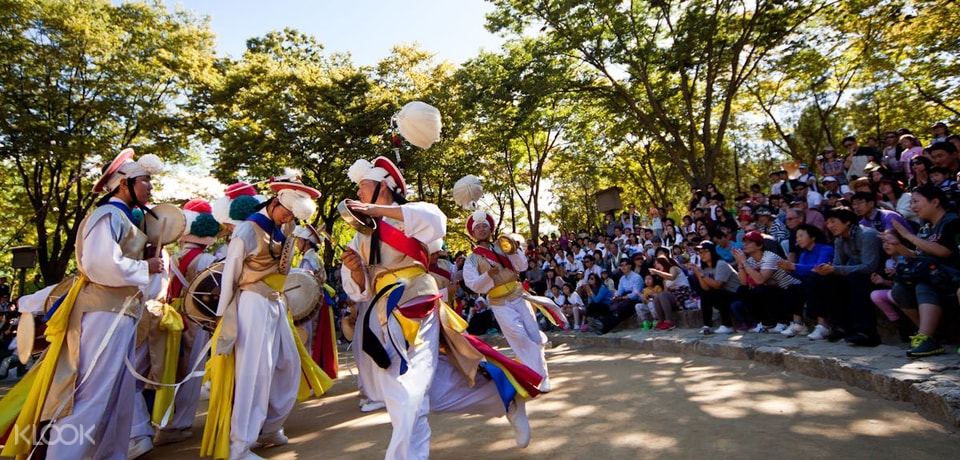
Minsok Korean Folk Village + Gwangmyeong Cave & Uiwang Rail Bike Day Trip.
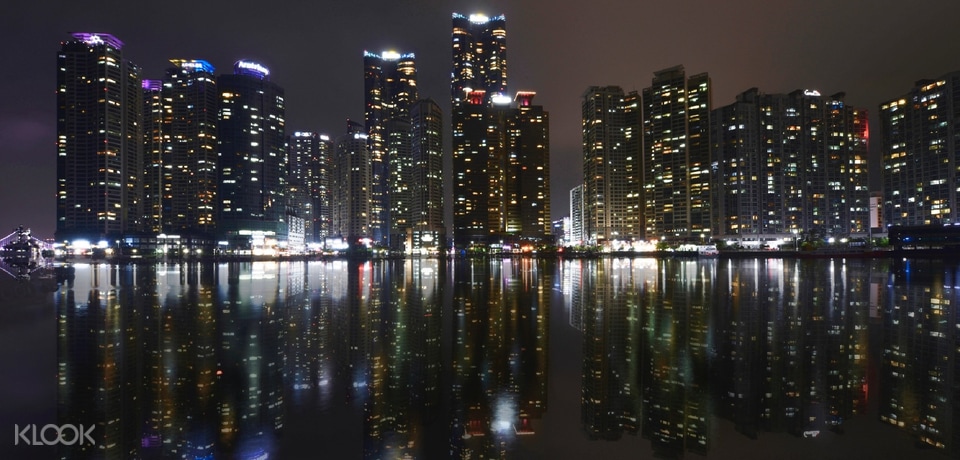
Busan Experience the best of Busan.
Booking Essentials

TIP: It’s a good idea to crosscheck the prices with other popular travel insurance providers like World Nomads and HeyMondo (as my reader, you get 5% off)! . However, take note that a travel insurance’s affordability typically means lesser coverage; so please always ensure that you read the fine print in order to decipher which travel insurance company is the right fit for you and your trip!
The Best Tours in South Korea?
Come and check out this list of the top things to do in South Korea which features the best activities and tours to do in Seoul, Busan, Jeju and more!
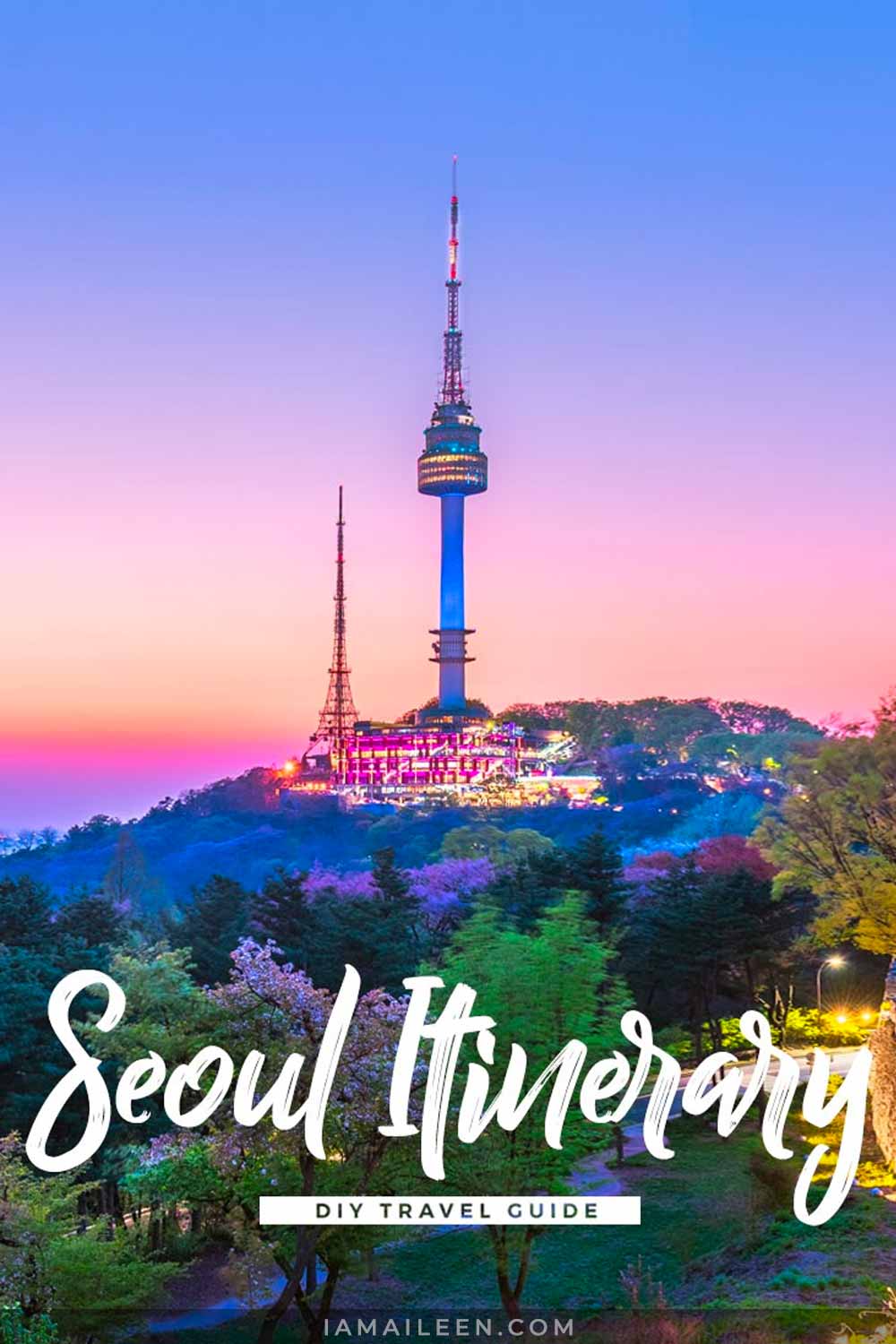
There’s still so much to see in Seoul! …But I believe that my Seoul itinerary travel guide here is already a good start.
Please feel free to tweak this itinerary and make full use of my extra activity suggestions in order to make your trip shorter or longer and better fitting for your travel style. Enjoy and do let me know how your trip goes!
Have you seen my latest vlog?

Hey there! I am Aileen Adalid. At 21, I quit my corporate job in the Philippines to pursue my dreams. Today, I am a successful digital nomad (online entrepreneur, travel writer, & vlogger) living a sustainable travel lifestyle.
My mission? To show you how it is absolutely possible to create a life of travel no matter the odds — and I will help you achieve that through my detailed travel hacks, guides, resources, tips, and MORE!
Follow Along
CURRENTLY BASED IN: The Philippines
- 100k Followers
- 51k Followers
- 80k Followers
- 10k Followers
- 23.1k Followers
Join over 1 million readers worldwide and get my FREE packing checklist, gain exclusive access to travel giveaways and more!
Success! Next, please check your email to confirm your subscription.
GET FREE PRINTABLE NOW!
Trending Now
Korean visa application requirements for filipino tourists in manila, philippines (single / multiple entry).
Make your South Korea travel dreams come true and get a single or multiple South Korean visa in Manila, Philippines!
Top 10 Things to Do on a Trip to South America
South America is one of the most diverse continents — full of natural wonders and fascinating cultures. Join us as we explore the top 10 things to do.
Top 10 Things to Do for Your First Tibet Travel
Make the most of your Tibet travel with these top 10 must-do activities, from exploring ancient monasteries to trekking mountains!
Geisha of Japan: Understanding the Facts, History & Myths
Japan’s geisha are cloaked in mystery & secrecy resulting in a number of false ideas about them — so let’s get the facts straight!
Maximizing Your Miles: Unlock Budget-Friendly Travel Hacks & Tips
Start traveling smart! Take note of these travel hacks that will help you in maximizing your miles or do points hacking.
Latest Posts
Learn Today
How to start a successful blog, 134 comments.
Your Seoul itinerary guide is a dream come true for wanderers like me! Planning a trip can be overwhelming, but your detailed 5-day plan simplifies everything. From activities to sights, you’ve covered it all. Seoul, here I come—thanks to your fantastic guide! ❤❤❤❤
Going to Paju would be another great option for a day trip from Seoul, especially during the week. It is close, easily reached by bus, and offers amazing landscapes no matter the season.
Seoul is one of my favorite cities in the world! I’m dying to return and explore it more.
If I was given a chance, I would love to go to Seoul. Seoul is one of my dream places to go in the near future and your blog really helps and encourages me to never stop dreaming. Thank you for this :))
Submit a Comment Cancel reply
Your email address will not be published. Required fields are marked *
Be notified of follow-up comments by email
Be notified of new posts by email
Submit Comment
Pin It on Pinterest
By subscribing you agree to our Terms of Use and Privacy Policy.
© 2024 Pedestrian Group Pty Ltd
6 Reasons South Korea Should Be On Your 2024 Bingo Card
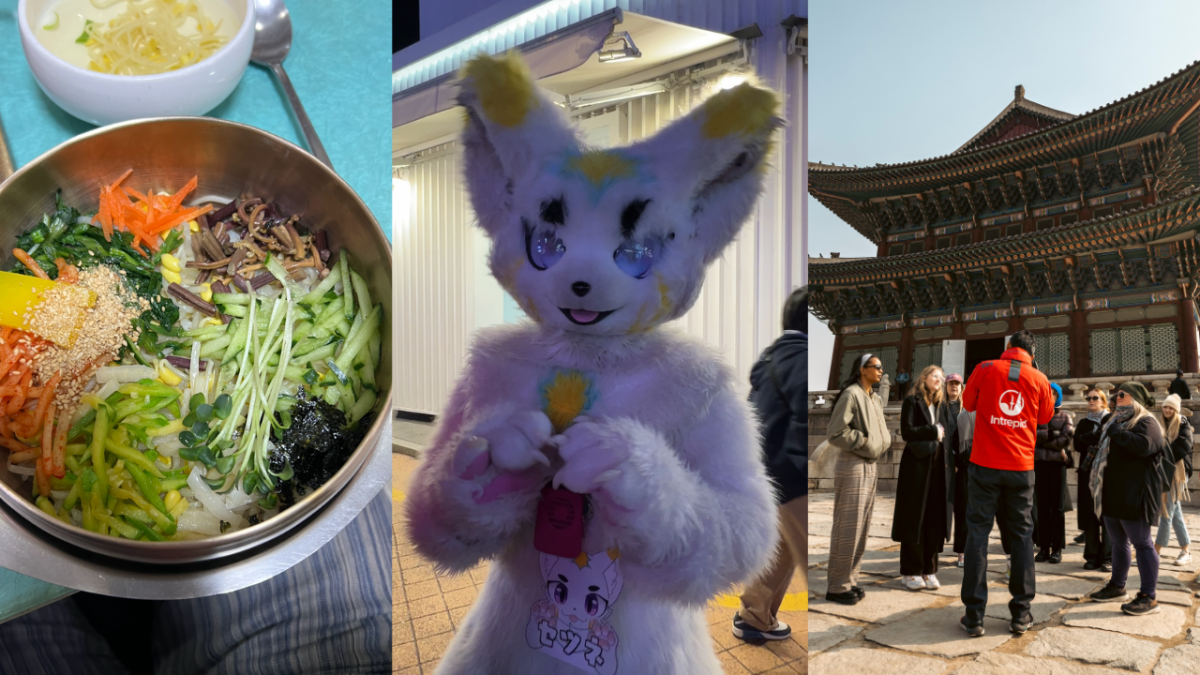
Issy Phillips
South Korea is, dare I say, the perfect place to take a holiday. It’s an ‘it’ girl destination and just a 10 hour flight from Australia direct to the capital of Seoul. You can be in the thick of a thriving city on a week night in Gangnam or relaxing in a local spa house in the sleepy town of Jeonju only a few hours outside of the capital.
Whatever you’re looking to do on your well deserved time off, South Korea is sure to have it.
So if you’re planning to revisit South Korea or head there for the first time, here are some places and activities you must add to your to-do list. Consider this your South Korea 2024 bingo card.
Best Places To Eat In South Korea
Eating and dining is a central pillar when you travel to South Korea. From markets to hot pots, the food I ate while I was there blew me away. Going to South Korea as part of Intrepid’s brand new 18 – 35 year old South Korea tour , food is a huge part of the experience and local guides do the work finding the best hidden gems so you get an authentic experience from street food to dine in restaurants.
Here’s a selection of some of the top picks if you’re after some super special eats in different cities around South Korea.
Jayeon Shabu Shabu This hot pot restaurant is an absolute must in Seoul, especially if you love mushrooms, as it boasts a selection that are out of this world. I’d also recommend paring your meal with a glass of somaek (soju and beer.) This is the perfect place for a cosy meal especially on a cold night in Seoul.
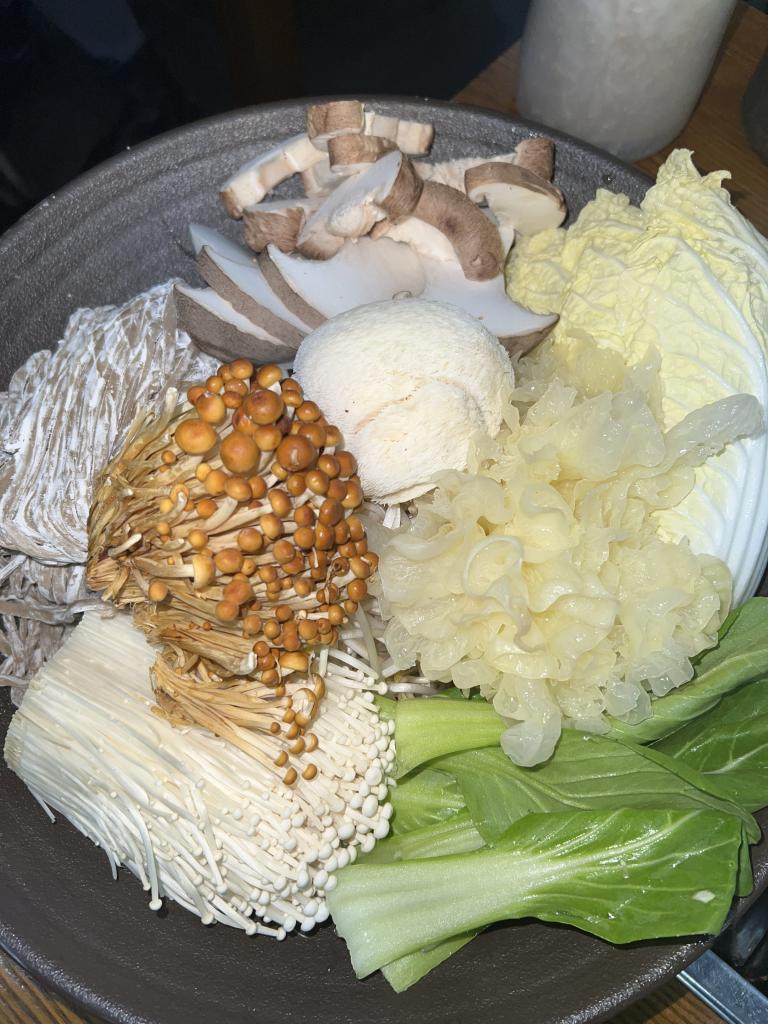
Jayeon Shabu Shabu – 197, Donggyo-ro, Mapo-gu, Seoul 03993 South Korea
Gajok Hoegwan If you find yourself outside of Seoul and venture to Jeonju (a really beautiful city two hours south of Seoul) this bibimbap restaurant (a.k.a a rice bowl topped with all sorts of seasoned sautéed vegetables and marinated meat) isn’t something you can skip.
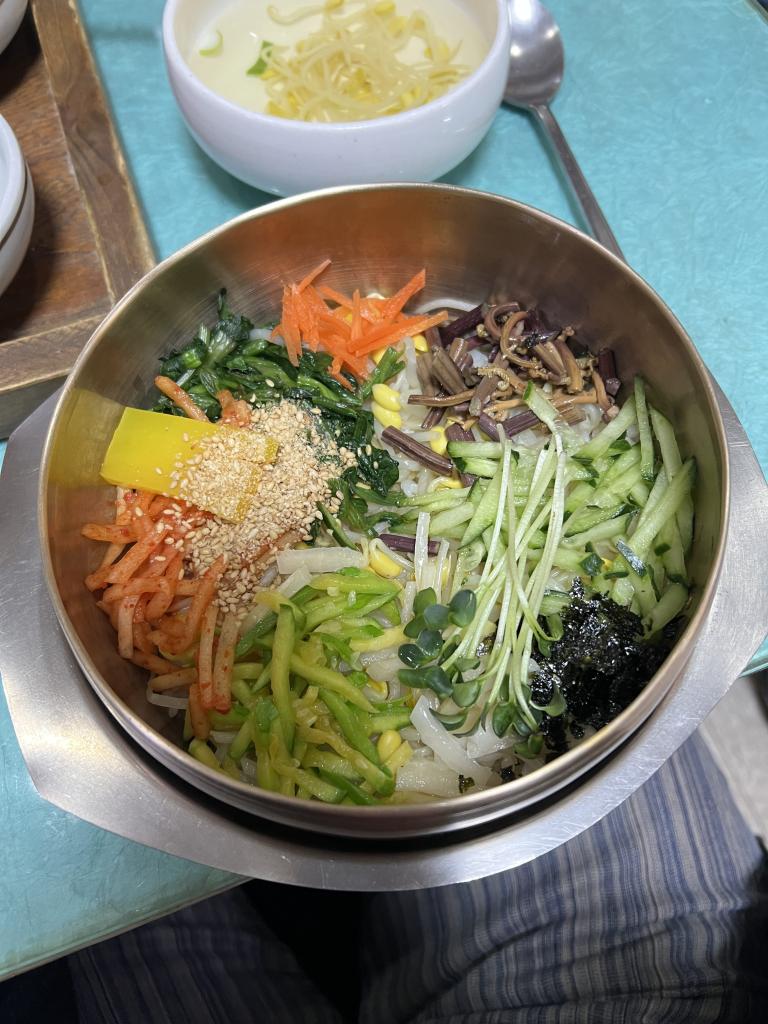
It’s been run by a mother-daughter duo for decades and they cater for vegetarians too, which can be hard to come by in South Korea. The bibimbap is fresh and delicious, and you’re supporting a mother-daughter business – what could be better?
Gajok Hoegwan – 17 Jeollagamyeong 5-gil, Wansan-gu, Jeonju, Jeollabuk-do 55038 South Korea
Taejongdae YOLO Grilled Clams This is without a doubt the best meal I ate in South Korea (or anywhere for that matter). It’s a seafood restaurant on the beach in Busan, South Korea’s second biggest city. You sit at a table with a BBQ overlooking the beach grilling up fresh seafood. I don’t think I can imagine anything better.
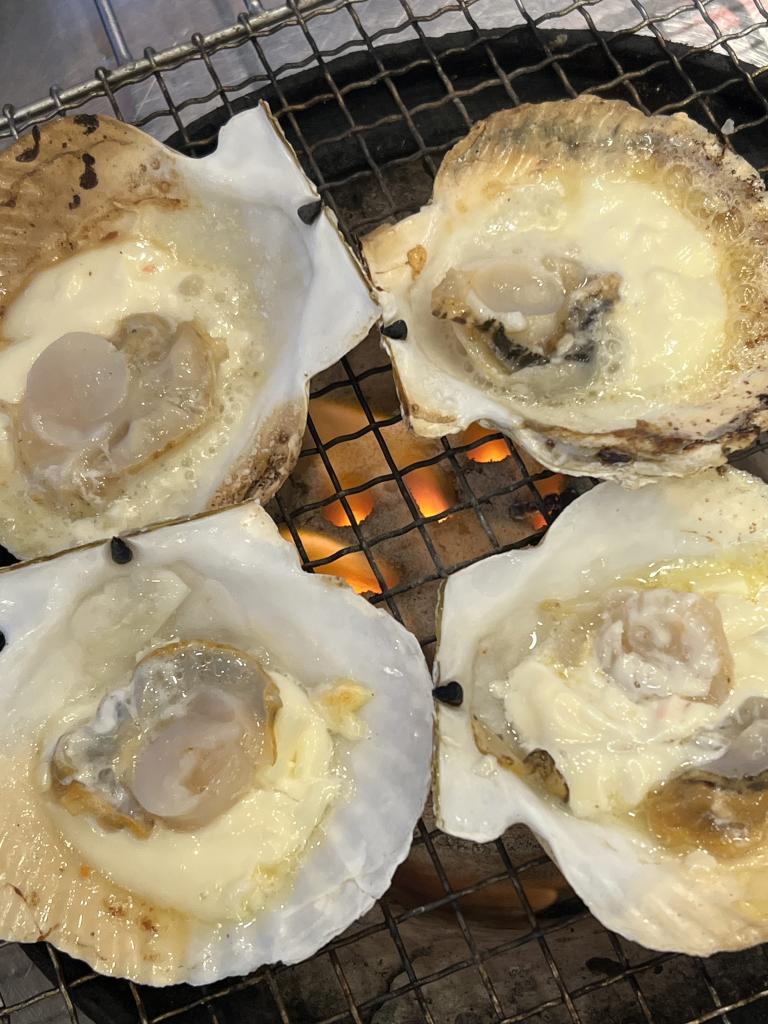
On top of the fresh seafood, you can also order gochujang fried rice, silk worms, spoon worms and even live octopus. If you’re in Busan and don’t end up dining here, sorry but you’ve missed out.
Taejongdae YOLO Grilled Clams – 21, Gajang-gil 87beon-gil, Yeongdo-gu, Busan 49126 South Korea
Best Things To Do In South Korea
Night out in Hongdae Hongdae is a university district in Seoul that is brimming with young people, bars, shopping and pumping nightlife. You can find anything from a fully pink bar called (you guessed it) Pink’s , to a beach themed bar complete with a sand floor all the way up on level 6.
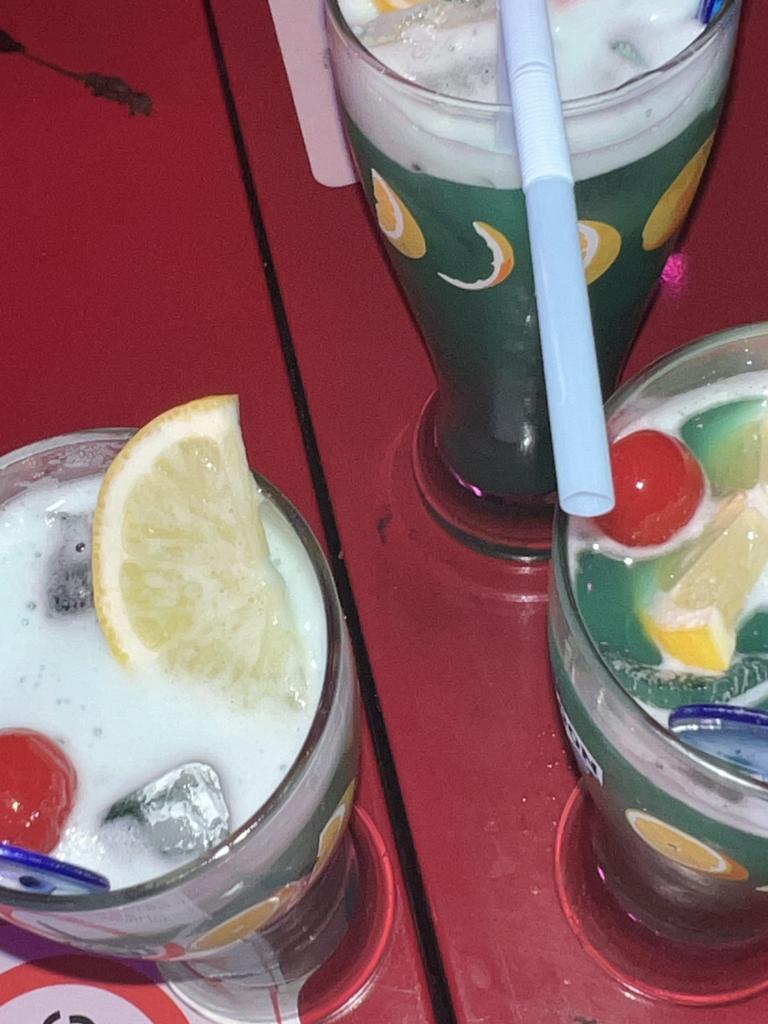
Whatever you decide to do from karaoke, to late night shopping or clubbing while having a night out in Hongdae, it’s sure to be a highlight of your trip.
Pink’s, 39 Jandari-ro 6-gil – Mapo-gu, Seoul, South Korea.
Have a relaxing night at the spa I don’t think I’ve never felt more relaxed after going to a Korean bath house. Spa Land in Busan is one of the biggest spa houses in South Korea and has a range of different treatments you can do including massages, saunas and the famous Korean scrub where you get every inch of dead skin scrubbed off your body and literally feel amazing afterwards.
Parts of the bath houses are gender segregated and depending on where you go in South Korea you can opt for a more modern spa house or dive into something more traditional.
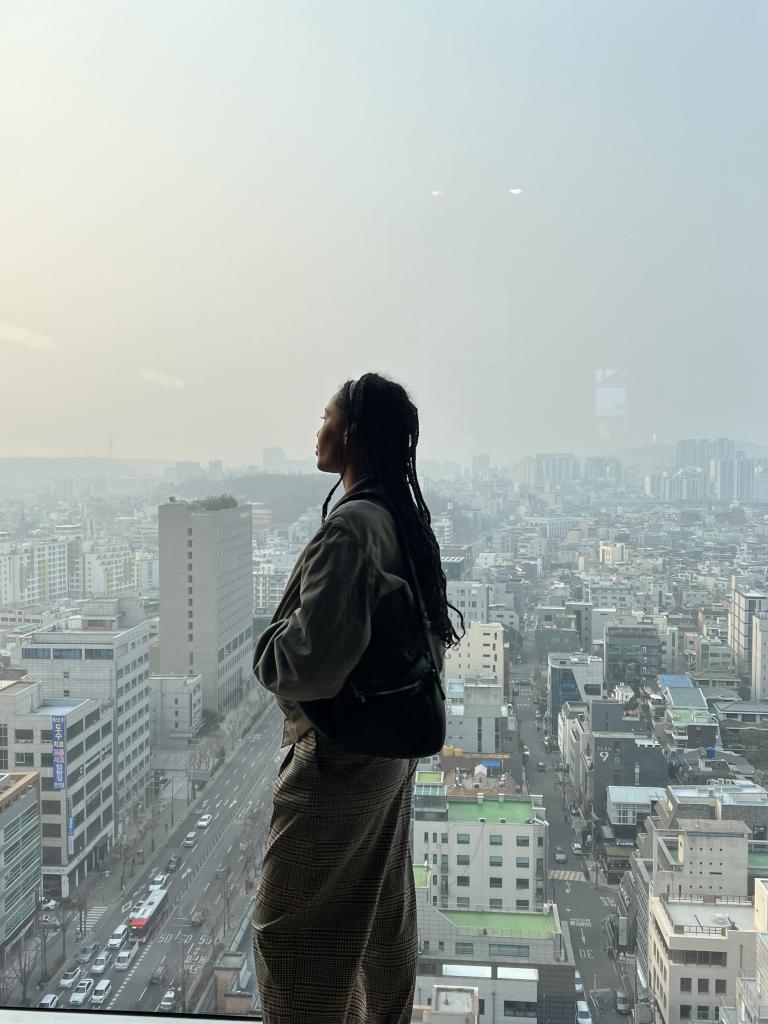
If you’re feeling exhausted from your trip or looking to recharge your batteries for your adventures ahead you can find a bathhouse in almost all cities around Korea. Prices and treatments range from bathhouse to bathhouse, but whatever you do if you go to a bathhouse that does the scrub – get the scrub! You won’t regret it.
Shinsegae Centum City Spaland – 35, Centum nam-daero, Haeundae-gu 1F, Shinsegae Mall Centum City, Busan 48058 South Korea.
Hit up Olive Young Olive Young is your go-to spot for all things make-up and skincare in South Korea. K-beauty is globally renowned for a reason, it’s bloody brilliant. From lip stains to sheet masks, whatever your beauty needs Olive Young is the place to get it. It’s a chain store with shops pretty much everywhere, like a Sephora but way better (sorry Sephora).
Olive Young is your HQ for skincare with serums, oils, masks and pretty much everything you could never need. Make sure you look at the sunscreen section as the products on offer range from sun sticks to light weight serums. If you’re hyped on sunscreen it’s honestly heaven.
Olive Young – locations all over South Korea.
So what are you waiting for? South Korea awaits you. You can do all of this and so much more on Intrepid’s new 18 – 35 tour of South Korea. Find out more information here .
More Stuff From PEDESTRIAN.TV
Trending now.

Eagle-Eyed MAFS Fans Have Spotted Former Bride Madeleine Maxwell In Another Aussie Reality Show

The True Story Behind Baby Reindeer Is Just As Chilling As The Netflix Series Depicts

Matty Healy Responds To Taylor Swift’s ‘Diss Tracks’ On The Tortured Poets Department

Taylor Swift Is ‘Worried’ Boyfriend Travis Kelce Won’t Stick Around For One Really Sad Reason

South Korea’s capital city is a living, breathing mashup of history and modernity. Centuries-old courtyards hug the roots of brand-new high-rises, and traditional teashops vie with Starbucks for customers. You’ll find this contrast everywhere: from the glitz and glamour of the Gangnam district (which the world now knows thanks to Korean pop star Psy’s massive hit song “Gangnam Style”) to the grand, tranquil palaces of the Jongno area. The dynamic capital burgeons with inventive restaurants, galleries, and boutiques. Having rebuilt after the Korean War and hosted the world for the 1988 Summer Olympics, Seoul has now emerged as one of eastern Asia’s most vibrant cities.
- Copy Link copied

Photo By DiegoMariottini/Shutterstock
When’s the best time to go to Seoul?
Seoul’s humid subtropical climate has four distinct seasons, and there is no official off-season. Some say that the city is at its best in the spring when cherry blossoms bloom, while others prefer fall, when leaves turn into a fiery mass of red, gold, and brown. Winters can be brutal, but they lend the capital city a whitewashed beauty. Summer temperatures often rise into the 90s, with rain falling during the late-summer typhoon period. No matter when you visit, however, there’s plenty to do both indoors and out.
How to get around Seoul
Incheon International Airport is located in the city of Incheon, about 50 miles from downtown Seoul. The fastest way to Seoul is via the Airport Railroad Express train: It’s a bargain, at under $10, and you’ll be in the heart of Seoul in precisely 43 minutes. Buses (also $10) and taxis (at least $70) are available as well, if you are prepared to battle Seoul’s legendary traffic.
The Seoul subway is vast, yet easy to navigate. You pay by distance, and most rides cost between $1 and $2. Aboveground buses roll to every corner of the city for prices that range between $.75 and $2, depending on the route. It’s easy to find taxis waiting on every corner.
Tip: When hailing a taxi on the street, it’s more polite to flag it with your hand facing down, not up. Seoul is well connected to the rest of South Korea with excellent transportation options including high-speed trains.
Can’t miss things to do in Seoul
The N Seoul Tower rises from atop Namsan Mountain in the center of the city. Look for it to get your geographical bearings, or better yet, take the cable car to the top to get 360-degree views—on a clear day, you can see all the way to North Korea.
Food and drink to try in Seoul
Until relatively recently, it was unusual to find anything but strictly Korean fare in Seoul. While thousands of authentic Korean restaurants continue to serve up staples such as kimchi, galbi, and bibimbap, it has become easier to find Mexican, Italian, Indian, and Thai options as well. Street food is available on practically every corner, and you can fill your belly with dumplings, rice cakes, or deep-fried veggies for less than $5.
When it comes to drinks, cocktails and wine are growing in popularity but soju (a vodka-like distilled rice liquor) and beer rule. And did we mention that Seoulites love coffee? Every street is now peppered with cafes, from huge chains like Angel-in-Us to small independent shops.
Culture in Seoul
Seoul offers classic beauty in the form of countless palaces, courtyards, and other royal property that has survived the city’s modernization process. The city’s energetic art, fashion, design, and architecture scenes earned it a UNESCO World Design Capital designation in 2010, and you’ll encounter contemporary culture in galleries, boutiques, and public art installations.
Korea is a country that celebrates tradition, and the numerous local festivals are a testament to the people’s immense national pride. The Fireworks Festival lights up the sky over the Han River in October and the Lantern Festival brings a gorgeous glow to the banks of Cheonggyecheon Stream in November, but no matter when you go, your visit will likely coincide with some sort of celebration. In addition to classic and historic culture, Seoul is known for its style, boy bands, and a quickly shifting pop culture. Dip your toe into the scene with a Seoul Night Tour in Hip Hongdae from AFAR’s walking tour partner, Context.
Local travel tips for Seoul
Navigating your way through Korea, with it’s challenging-to-decipher Hangul alphabet, can be daunting. Fortunately, most signs in Seoul are also written in English, and many locals will be eager to help you find your way and practice their English. Visitors, remember this phone number: 1330. It’s the English-speaking tourist help line. The operators will help you with whatever you need, be it train schedules or directions to the nearest movie theater. Don’t hesitate to call day or night, no matter how silly you think your question is. They’ve heard it all.
Local Resources
Groove Korea
Koreabridge
Korea4expats.com
Guide Editor
Leslie Patrick is a freelance writer who splits her time between South Korea and a nomadic life of slow traveling around the globe. Leslie writes about travel, culture and lifestyle, and her work has been published in Salon, Marie Claire (UK and Australia editions), Islands, Travel + Leisure, Monocle, United Airlines’ Hemispheres Magazine and various English language publications in Korea.

Update April 12, 2024
Information for u.s. citizens in the middle east.
- Travel Advisories |
- Contact Us |
- MyTravelGov |
Find U.S. Embassies & Consulates
Travel.state.gov, congressional liaison, special issuance agency, u.s. passports, international travel, intercountry adoption, international parental child abduction, records and authentications, popular links, travel advisories, mytravelgov, stay connected, legal resources, legal information, info for u.s. law enforcement, replace or certify documents.
Before You Go
Learn About Your Destination
While Abroad
Emergencies
Share this page:
South Korea
Travel Advisory July 24, 2023
South korea - level 1: exercise normal precautions.
Reissued with obsolete COVID-19 page links removed.
Exercise normal precautions in South Korea.
Read the country information page for additional information on travel to South Korea.
If you decide to travel to South Korea:
- Enroll in the Smart Traveler Enrollment Program (STEP) to receive Alerts and make it easier to locate you in an emergency.
- Follow the Department of State on Facebook and Twitter .
- Review the Country Security Report for South Korea.
- Visit the CDC page for the latest Travel Health Information related to your travel.
- Prepare a contingency plan for emergency situations. Review the Traveler’s Checklist .
Embassy Messages
View Alerts and Messages Archive
Quick Facts
Must be valid at time of entry
One page per stamp
No – From April 1, 2023, to December 31, 2024, the Korean Electronic Travel Authorization (K-ETA) is not required for US citizens traveling for short-term business or tourism purposes.
Embassies and Consulates
U.s. embassy seoul.
188 Sejong-daero, Jongno-gu, Seoul 03141, Korea Telephone: +(82) (2) 397-4114 (from within Korea, dial 02-397-4114) DSN:721-4114 Fax: +(82) (2) 397-4101 Email: [email protected]
U.S. Consulate in Busan
Lotte Gold Rose Building #612, Jungang-daero 993, Jin-gu Busan 47209, Korea Telephone: (+82) 51-863-0731 Email: [email protected]
The Embassy and Consulate are closed on weekends and on American and Korean holidays . Emergency After-Hours Telephone: +82 (2) 397-4114.
Destination Description
Learn about the U.S. relationship to countries around the world.
Entry, Exit and Visa Requirements
- You must have a valid U.S. passport to enter Korea. From April 1, 2023, to December 31, 2024, the Korean Electronic Travel Authorization (K-ETA) is not required for US citizens for stays of 90 days or less that are for tourism or business purposes.
- Visa required for all other purposes, including employment, teaching English, and for stays longer than 90 days.
Exceeding your authorized stay or not possessing a valid visa may result in detention and fines.
- In the event of an overstay, apply for a visa extension from the Korea Immigration Service (KIS) before attempting to leave the country. Also consult with KIS regarding changes in visa category.
Military Personnel/DOD and their families on orders:
- Consult DOD Foreign Clearance Guide , and follow all instructions.
- Enter Korea with DOD identification and travel orders.
- Do not transit other countries such as China without a passport and appropriate visas.
- Family Members/Dependents of Military Personnel/DOD on orders must present upon arrival passports valid for at least six months .
U.S. Government Executive Branch personnel on official business and DOD personnel assigned to the U.S. Embassy (Including family members/dependents):
- Employes assigned to Mission Korea should enter Korea with a diplomatic or official passport and a diplomatic or official Korean visa obtained through their sponsoring agency. Check with your sponsoring agency about other requirements.
- TDY visitors traveling to Korea for up to 90 days on diplomatic or official passports do not require Korean visas and do not require a K-ETA. TDY visitors must obtain country clearance using Department of State's eCC system or DOD APACS system .
HIV/AIDS Restriction: The Department of State is unaware of any such entry restrictions for visitors or foreign residents in Korea.
- Visit the Embassy of Korea website for current visa information. Please read our Customs Information page .
COVID-19 Requirements :
- There are no COVID-related entry requirements for U.S. citizens.
- Travel regulations and restrictions are subject to change, sometimes with little notice. You should review the information available on your nearest Korean Embassy or Consulate’s webpage before traveling.
Safety and Security
Public Demonstrations: Demonstrations and rallies are common in South Korea, particularly near the U.S. Embassy, Seoul City Hall, and areas surrounding military installations. You should avoid areas where demonstrations are taking place and exercise caution in the vicinity of any large gatherings, protests, or rallies. Even demonstrations intended to be peaceful can turn confrontational and escalate into violence.
North Korea (The Democratic People’s Republic of Korea, DPRK): An armistice agreement, monitored by the United Nations, has maintained general peace on the Korean peninsula since 1953. Tensions occasionally flare up because of provocative acts by North Korea, including ballistic missile and nuclear tests and limited armed incursions into ROK-held territory. Some provocations have escalated into geographically limited skirmishes. South Korea routinely conducts military training exercises and civil defense drills. North Korea often issues strongly-worded and threatening messages, frequently in connection with these exercises. Please see our Fact Sheet on North Korea .
Weather-related Events: Heavy rains and flooding may occur during the June - August monsoon season or the May - November typhoon season. See general information about natural disaster preparedness at the U.S. Federal Emergency Management Agency (FEMA) website.
Enroll in the Smart Traveler Enrollment Program ( STEP ): To receive security messages by email and make it easier to locate you in an emergency, register in STEP.
If the Embassy becomes aware of any specific and credible threat to the safety and security of U.S. citizens, we will inform you through our website, social media, and email.
Crime: For most visitors, South Korea remains a very safe country. Common crimes occur more frequently in major metropolitan areas, tourist sites, and crowded markets.
- Take routine safety precautions.
- Pay attention to your surroundings.
- Report any concerns to local police.
Violent crime is not common; however, remain vigilant:
- Exercise caution in crowded entertainment, nightlife, and shopping districts.
- If traveling at night, consider traveling in groups.
- Use legitimate taxis or public transportation only.
Victims of Crime: Call 112 for emergency assistance or to report a crime to local authorities. Call 02-397-4114 to contact the U.S. Embassy. We can:
- Help you find appropriate medical care;
- Assist you in reporting a crime to police;
- Contact relatives or friends on your behalf;
- Explain Korean judicial procedures in general terms;
- Provide an emergency loan for repatriation to the United States and/or limited medical support in cases of destitution;
- Help you find accommodations and flight arrangements to the United States;
- Replace a lost or stolen passport.
Sexual Assault: The Embassy regularly receives reports of sexual assault from U.S. citizens. Most cases involved young women assaulted by acquaintances they met on social media, dating, or messaging apps. Alcohol is often involved, and Korea’s low overall crime can create a false sense of security. Specialized hospital units and police are available in South Korea to assist victims, however services in English and responsiveness to the crime are not always consistent. In general, sex crimes are not punished as harshly in South Korea as in the United States and the road to prosecution is a challenging one for victims.
Domestic Violence: Victim’s assistance resources or battered women’s shelters exist in Seoul and other urban areas but may be limited in rural areas. Most are government administered and require a police referral. Call 112 for emergency assistance or 1366 to reach Korea’s 24-hour domestic violence hotline. Victims may also contact the Embassy, tel. (+82) 2-397-4114.
Lost or Stolen Passports: If your passport is stolen, file a report at the nearest police station.
Don't buy counterfeit and pirated goods, even if widely available. It is against South Korean law to purchase these goods and against U.S. law to bring them into the United States. The Computer Crime and Intellectual Property Division in the U.S. Department of Justice has more information.
Avoid fraud and scams: See Department of State and FBI websites for more information.
Tourism: The tourism industry is generally regulated and rules with regard to best practices and safety inspections are regularly enforced. Hazardous areas/activities are identified with appropriate signage and professional staff is typically on hand in support of organized activities. In the event of an injury, appropriate medical treatment is widely available throughout the country. Outside of a major metropolitan center, it may take more time for first responders and medical professionals to stabilize a patient and provide life-saving assistance. U.S. citizens are encouraged to purchase medical evacuation insurance. See our webpage for more information on insurance providers for overseas coverage .
Local Laws & Special Circumstances
Criminal Penalties: While in Korea, you are subject to local laws. If you violate Korean laws, you may be expelled, arrested, or imprisoned. Be aware that:
- Immigration violations can lead to arrest, fines, and deportation.
- There is little tolerance for illegal drugs.
- If you mail illegal drugs to/ from Korea, you will be prosecuted.
- Commercial disputes may lead to criminal charges being filed under local laws.
Be aware that some crimes are prosecutable in the United States, regardless of local law. For examples, see our website on crimes against minors abroad and the Department of Justice website.
Arrest Notification: If you are arrested or detained, ask officials to notify the Embassy. See our webpage for further information.
SPECIAL CIRCUMSTANCES
Dual Nationality and Military Conscription: Dual national males (including U.S. service members) may be subject to compulsory military service. If you have family ties to South Korea, consult the nearest Korean Embassy or Consulate or the Korean Military Manpower Administration regarding potential citizenship obligations before entering South Korea .
Passport Seizures and Exit Bans: If you are involved in a criminal investigation or commercial dispute, authorities may seize your passport and/or block your departure. While we may reissue a passport, we cannot lift an exit ban.
Exit Permits: Exit permits are not generally required. However, if a parent requests a travel restriction on his/her child, Korean authorities may prevent that child from departing even when traveling with the other parent. As of June 1, 2020, foreigners who are long-term residents of the ROK are required to obtain a re-entry permit four business days prior to departure from Korea. The permits are available online through an e-application at the www.hikorea.go.kr website.
International Child Abduction: See our website for information related to the prevention of international child abduction .
Working in South Korea: If working, including teaching or modeling, you must enter with the appropriate work visa. It is not possible to change your visa status without leaving the country. If you begin work without the appropriate visa, you may be arrested, fined, and/or deported. If you are working without a valid work permit and get into a contractual dispute with your employer, you have little legal recourse.
Students: See our Students Abroad page and FBI travel tips .
Women Travelers: See our travel tips for Women Travelers .
ROK National Security Law: Authorities may detain, arrest, and imprison persons believed to have committed acts intended to endanger the “security of the state,” including statements deemed to praise the political system and/or officials of the DPRK.
Customs Regulations: There is strict enforcement of regulations on importing and exporting items such as firearms, narcotics and prescription drugs, non-prescription health supplements, radio equipment, and gold. Importation of materials deemed to be obscene, subversive, or harmful to the public peace is also restricted.
- Amphetamines are illegal in Korea. Do not bring amphetamines or other prescription narcotics into the country without obtaining advance permission in writing from the Ministry of Food and Drug Safety. See the U.S. Embassy Seoul, Health Information page .
- Traveling with Pets: See Korea’s Animal and Plant Quarantine Agency website.
See the Korean Customs Regulations website for complete information.
LGBTI Travelers: Consensual same-sex sexual activity is not criminalized. Korea is a conservative country in regards to LGBTI issues. However, there are an increasing number of LGBTI-oriented clubs, festivals and NGOs advocating for LGBTI issues. The ROK National Human Rights Commission Act prohibits discrimination against individuals because of their sexual orientation, but there are no laws specifying punishment for persons found to have discriminated on this basis. Same-sex marriages are not recognized. Korean citizens can legally change their gender identity.
See our LGBTI Travel Information page and section 6 of the Department of State's Human Rights report for further details.
Mobility Issues: Korean law mandates access to transportation, communication, and public buildings. Cross walks typically have audio and visual signals. Older buildings and streets are generally less accessible than modern ones. Metro cars and buses in Seoul offer priority seating for the disabled and most metro stations have elevators. Metro platforms include Korean Braille information. Contact individual bus companies and subway associations for specific information. Foreign residents are eligible for disability assistance from local ward offices; assistance varies by ward.
Quality of Care : Western-style medical facilities are available in most large cities. However, not all doctors and staff, are proficient in English. A list of hospitals and medical specialists who speak English is available on our website. For emergency ambulance service dial 119. Ambulance services are widely available. For information on medical evacuation from South Korea, please see the State Department’s brochure on Air Ambulance/MedEvac/Medical Escort Providers .
We do not pay medical bills. Be aware that U.S. Medicare does not apply overseas. Verify your health insurance coverage before traveling overseas. See our webpage for information on insurance providers for overseas coverage . In most cases, health care providers will require payment in advance of treatment or will not release a patient until hospital bills are paid. We strongly recommend supplemental insurance to include coverage for medical evacuation.
Medication: Carry prescription medication in original packaging, along with your doctor’s prescription. Most prescription medications, except psychotropic types, can be obtained at Korean pharmacies (brand names often differ). Local pharmacies will require a prescription from a Korean doctor.
Update vaccinations recommended by the U.S. Centers for Disease Control and Prevention.
For further health information go to:
- World Health Organization
- U.S. Centers for Disease Control and Prevention (CDC)
Travel and Transportation
Road Conditions and Safety: Roads are well-paved, traffic signals functional, and most drivers comply with basic traffic laws. South Korea has a significantly higher traffic fatality rate than the United States. Causes of accidents include excessive speed, frequent lane changes without signaling, running red lights, aggressive bus drivers, and weaving motorcyclists. It is recommended that you photo document any traffic accidents.
Be aware that motorcyclists may drive on sidewalks, and drivers do not always yield to pedestrians in marked crosswalks.
Traffic Laws include:
- International driving permit (or ROK license) is required for all drivers.
- Left-hand turns prohibited except with green arrow.
- Seat belts and car seats are mandatory.
- Motorcycle passengers must wear helmets.
- Automobile drivers are presumed to have some fault in accidents involving pedestrians.
- Expect long waits at police stations while police investigate any incidents.
- Police may take your passport or detain you during an investigation.
- Even if negligence is not proven, criminal charges may be filed.
- Blood-alcohol content of 0.03% or higher is considered legally intoxicated.
- Police regularly set up DUI checkpoints. Drivers are required to submit to breathalyzer tests; refusal can result in cancellation of your license.
For information about driver's permits, vehicle inspection, road tax, and mandatory insurance, refer to our Road Safety page . You may also visit the Korea Tourism Organization (KTO) website.
AVIATION SAFETY OVERSIGHT: The U.S. Federal Aviation Administration (FAA) has assessed the Government of the Republic of Korea's Civil Aviation Authority as being in compliance with International Civil Aviation Organization (ICAO) aviation safety standards for oversight of the ROK's air carrier operations. Further information may be found on the FAA's Safety Assessment Page .
Maritime Travel: Mariners planning travel to South Korea should check for U.S. maritime advisories and alerts at the U.S. Department of Transportation’s Maritime Security Communications with Industry Web Portal . Information may also be posted to the U.S. Coast Guard homeport website and as a broadcast warning on the National Geospatial-Intelligence Agency’s website .
For additional travel information
- Enroll in the Smart Traveler Enrollment Program (STEP) to receive security messages and make it easier to locate you in an emergency.
- Call us in Washington, D.C. at 1-888-407-4747 (toll-free in the United States and Canada) or 1-202-501-4444 (from all other countries) from 8:00 a.m. to 8:00 p.m., Eastern Standard Time, Monday through Friday (except U.S. federal holidays).
- See the State Department’s travel website for the Worldwide Caution and Travel Advisories .
- Follow us on Twitter and Facebook .
- See traveling safely abroad for useful travel tips.
South Korea was cited in the State Department’s 2022 Annual Report to Congress on International Child Abduction for demonstrating a pattern of non-compliance with respect to international parental child abduction. Review information about International Parental Child Abduction in South Korea. For additional IPCA-related information, please see the International Child Abduction Prevention and Return Act ( ICAPRA ) report.
Travel Advisory Levels
Assistance for u.s. citizens, south korea map, learn about your destination, enroll in step.

Subscribe to get up-to-date safety and security information and help us reach you in an emergency abroad.
Recommended Web Browsers: Microsoft Edge or Google Chrome.
Check passport expiration dates carefully for all travelers! Children’s passports are issued for 5 years, adult passports for 10 years.
Afghanistan
Antigua and Barbuda
Bonaire, Sint Eustatius, and Saba
Bosnia and Herzegovina
British Virgin Islands
Burkina Faso
Burma (Myanmar)
Cayman Islands
Central African Republic
Cote d Ivoire
Curaçao
Czech Republic
Democratic Republic of the Congo
Dominican Republic
El Salvador
Equatorial Guinea
Eswatini (Swaziland)
Falkland Islands
France (includes Monaco)
French Guiana
French Polynesia
French West Indies
Guadeloupe, Martinique, Saint Martin, and Saint Barthélemy (French West Indies)
Guinea-Bissau
Isle of Man
Israel, The West Bank and Gaza
Liechtenstein
Marshall Islands
Netherlands
New Caledonia
New Zealand
North Korea (Democratic People's Republic of Korea)
Papua New Guinea
Philippines
Republic of North Macedonia
Republic of the Congo
Saint Kitts and Nevis
Saint Lucia
Saint Vincent and the Grenadines
Sao Tome and Principe
Saudi Arabia
Sierra Leone
Sint Maarten
Solomon Islands
South Africa
South Sudan
Switzerland
The Bahamas
Timor-Leste
Trinidad and Tobago
Turkmenistan
Turks and Caicos Islands
United Arab Emirates
United Kingdom
Vatican City (Holy See)
External Link
You are about to leave travel.state.gov for an external website that is not maintained by the U.S. Department of State.
Links to external websites are provided as a convenience and should not be construed as an endorsement by the U.S. Department of State of the views or products contained therein. If you wish to remain on travel.state.gov, click the "cancel" message.
You are about to visit:

- Destinations
South Korea Travel Guide
- Terms of Use
- Privacy Policy
- Your US State Privacy Rights
- Children's Online Privacy Policy
- Interest-Based Ads
- About Nielsen Measurement
- Do Not Sell or Share My Personal Information
- Nat Geo Home
- Attend a Live Event
- Book a Trip
- Inspire Your Kids
- Shop Nat Geo
- Visit the D.C. Museum
- Learn About Our Impact
- Support Our Mission
- Advertise With Us
- Customer Service
- Renew Subscription
- Manage Your Subscription
- Work at Nat Geo
- Sign Up for Our Newsletters
- Contribute to Protect the Planet
Copyright © 1996-2015 National Geographic Society Copyright © 2015-2024 National Geographic Partners, LLC. All rights reserved
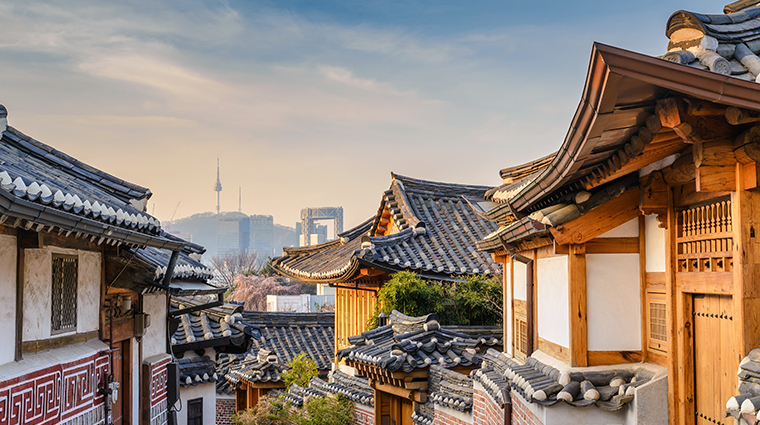
- Attractions and Landmarks
- Restaurants
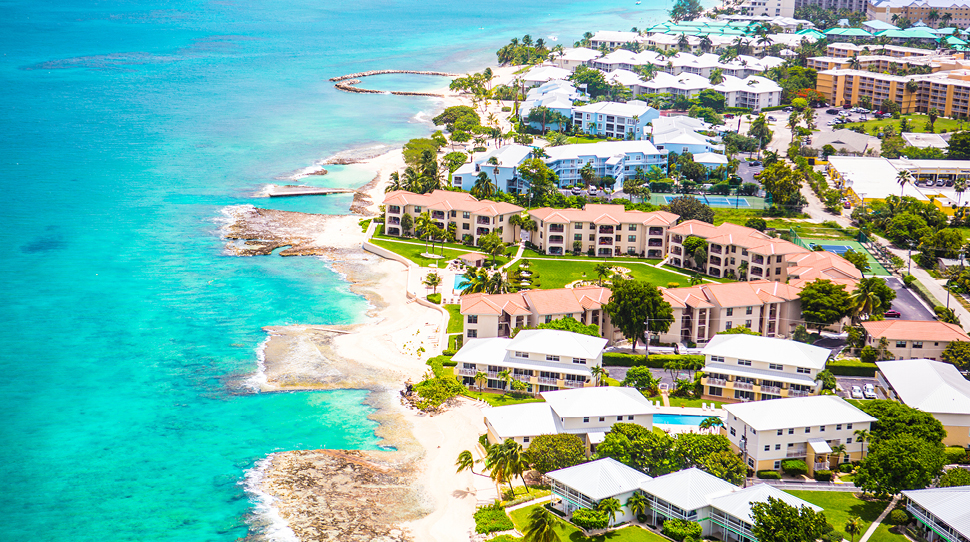
Dreaming of your next trip?
I agree to the Forbes Travel Guide Privacy Policy , Terms , and Cookie Policy . I understand I can withdraw my consent at any time.
Sign up for our newsletter
Living and traveling in Korea

An Epic Travel Guide To Seoul, Korea For The First Timer
Seoul, Korea is huge and has gained a ton of attention in the past decade for not only a beautiful culture but also the Hallyu wave that has swept over the world. When you begin to plan your trip to the capital city of Korea it can seem overwhelming and you may not know where to begin.
While I’m known for promoting the off the beaten path spots in and around Seoul and promoting new hot spots to check out, I wanted to create an essential guide for the first time visitor to this busy and fun capital of Korea.
Having lived here since 2006 when I first came as an English teacher, you can be assured, this is THE guide to read before you get here. Whether or not it’s your first time to Korea though, read through it and make sure you’ve seen everything there is to see. From Seoul’s quirky cafes to the best spots to get gorgeous views. it’s all here. Make your time in Seoul, Korea the best it can be!

This is a massive travel guide with all of the information you need for any trip to Seoul, Korea. Because it’s so long, definitely feel free to skip around. Here is what you’ll find in this post:
- What To do To Prepare For Your Trip To Seoul
- Is It Safe To Travel In South Korea?
What To Know About Money & ATMs In Seoul
- Which Is The Best Area To Stay In Seoul?
- What Is The Best Time To Visit Korea?
General Travel Tips For Korea
- A Korean palace
- A traditional market
- Rent a Hanbok
- Find the hotspots
- Visit the Han River
- Get a good view
- Visit lots and lots of cafes
- Visit a museum
- Visit a spa
- Visit an amusement park
- See the DMZ
- Check out these notable spots in between
To Join A Tour Or Not To Join A Tour
- Where To Get Out Of Seoul For A Day Trip
Want To Get Off The Beaten Path In & Around Seoul?
Places to take trips from seoul.
(This post contains affiliate links, which means I receive a certain percentage of a sale if you purchase after clicking at no cost to you. Thank you for your support.)
Need help with an itinerary? Elevate your travel experience with our downloadable Seoul Itinerary Pack. combine, and conquer the city’s wonders, one unforgettable day at a time.
What To Do To Prepare For Your Trip To Seoul
Are you traveling to Seoul soon? Here are some things to help you prepare for the trip:
Buy Your Plane Ticket: You can get some great deals on flights to Seoul, Korea. If you haven’t tried, check Skyscanner.com for the best rates.

Can I use the Wise Card In Korea? How To Send Money To Korea
Wise Travel Card: Whether you’re looking to travel to Korea for the first time or you’re moving to Korea and want to be able to use your money from home in Korea easily, you should look into the Wise travel card when it comes to converting currencies and getting away from card fees and bad exchange rates. The first time I came to Korea I had difficulty getting my debit card/Mastercard to work. Don’t be like me, come prepared. You can learn more about the Wise travel card in my review .
Get a Visa/Korea Electronic Travel Authorization: The process for coming into Korea has changed during Covid and now everyone must apply for a K-ETA before arrival. The K-ETA is for visa-free foreign visitors and while you’re visa free, they still want to know you’re coming and where you’re headed. Here is a guide to fill out the information for the K-ETA . Go to the K-ETA website to apply. You should find out if you’ve received approval within 24 hours, but usually faster.

Study Korean: 90 Day Languages has a great course on Korean and offers a lot of help if you’re interested in preparing before you come. A little goes a long way here and it actually only takes about an hour to learn how to read Hangul… no joke! You can also check out this guide to learning Korean online and through apps I put together to get some more Korean learning options.

Plan Your Airport Transfer: There are numerous ways to transfer from Incheon International Airport outside of the city into the city of Seoul from the subway/train and bus to taxis. To be honest, we almost always opt for the private transfer. It’s fast and easy and we don’t have to worry about dragging our bags this way and that and up and down escalators. TaDa is a great company that provides transfers as well as rides within the city. Book your transfer in advance to make the trip smooth and easy.
Get Good Hard Case Luggage: Packing all of the essentials is good only if they get to the other side with you. Make sure to have good luggage to get you and your belongings all the way. Roam Luggage has awesome customizable bags that will go the distance and look super cool on the way. We highly recommend using hard case luggage for any international flight.

International Driver’s License: To be honest, I wouldn’t recommend driving in Seoul if it’s your first time to this massive city. BUT, if you plan to and will rent a car while you’re here, then remember to bring your International Driver’s License. I highly recommend renting a car if you’ll be headed to Jeju Island or anywhere aside from Seoul and Busan because it’s much easier to get around that way in those cases.

Where To Buy A TMoney Card For Korea

How To Get A T-Money Card For Kids in Korea

The Discover Seoul Pass: Travel On A Budget In Seoul

The Seoul City Tour Bus Guide: What To See & Do When You Hop On Hop Off
T-Money Card/Discover Seoul Pass/Hop On & Hop Off Bus: To get around using the Seoul Subway System or buses or other public transportation options, you’ll need to get a T-Money card . This card allows you to put money on it and scan it at the turnstiles in subways and when you’re getting on and off buses and even works in taxis.
HOWEVER, if you’ll be doing a lot of touristy things and visiting the touristy sites, then you might be better off getting the Discover Seoul Pass . This pass comes with a variety of perks like access to Hanbok rentals, palaces, view points and other major attractions AND it also works as a T-Money card. On top of that, you get a free ride on the AREX and Airport bus to/from Incheon International Airport.
SO, if you’ll be touristy, grab the Discover Seoul Pass to get out and about plus this also acts as a T-Money card. But do know how to use it. Here is a guide and itineraries for using the Discover Seoul Pass to the max. There’s also a great Hop On/ Hop Off Tour Bus option here in Seoul you can use too.

Korea Rail Pass: If you want to get out of Seoul and plan to use the train more than twice, then the Korea Rail Pass is the economical/budget choice you want to have on hand. You can get back and forth between the popular Nami Island nearby the city or go as far as Andong or even Busan . The train line is the limits. Grab the card here and just head to the station with your confirmation and it’s as easy as that.
Wifi Eggs/Sim Cards: While there is great WiFi in many places around Seoul and Korea, nothing beats having your own Wifi Egg so there’s no lag in connection. You can pre-reserve Sim Cards via Klook so they’re ready and waiting for you when you fly into either Incheon International Airport or into Busan International Airport. You can alco get an eSIM with eSIM Korea which is even’t easier. Here’s a complete guide to the best Korean SIM cards for your trip to Korea.

Top 15 Apps to Download When You Come To Korea
Download Some Useful Apps: The Seoul subway system is super efficient and you can ride it for two hours or more, not pay an arm and a leg, and see a ton. Make sure to download the subway app to know where to go the easiest. The app even tells you which subway car to stand on when.
On the note of apps, do note that Google Maps is horrible when it comes to Korea and will be more difficulty than it’s worth. Another map app that you’ll find useful is Kakao Maps which can be used in both Korean and English. Kakao also has Kakao Taxi which is the best option should you want to get around using local taxis.

Pack The Right Clothes: Seoul has four distinct seasons. The summer is hot hot hot and the winter is cold cold cold! Be prepared. Check out this post for what to pack when you come to Korea . You’ll want to have everything from a fine dust mask to good walking shoes for the best trip you can have in Korea.

Recommended Travel Adapters For Korea
Don’t Forget A Travel Adapter: For some reason travel adapters are easily forgotten among the tourists I’ve met. Remember that not every place has the same plugs/outlets. Make sure you know which travel adapter to bring to Korea so your trip isn’t bumpy at the beginning as you race around trying to charge your devices.
Get Your TEFL: This is less for travelers than it is for the soon to be teachers. There are a lot of teaching positions available in Korea so to make yourself stand out, definitely make sure you get your TEFL before you come… though you can also get it online once you come too!
Is it safe to travel in South Korea?
Generally, yes, it is very safe in Korea. That said, many foreigners come here assuming that because there is no gun violence or drug issues in Korea it’s MUCH safer than it really is. While you will likely not have any problems while you’re here, certainly don’t put yourself in situations you wouldn’t in your home country.
While I don’t think there is a ton of scamming to look out for, I do want to say you should be wary of cults in Korea that will see tourists coming a mile away. Most vendors aren’t jacking up prices just because you speak a different language, but I would watch out for people that spike drinks. Just be mindful as you should be at all times.

Is it safe to drink tap water in South Korea?
After coming here and seeing how everyone consistently opts for bottled water over tap water, you might be surprised to learn that tap water is indeed potable in Korea and actually tested more than most other places for safety. Yes, you can drink the tap water in Korea, but read this article to find out why Koreans tend to drink bottled water.

The unit of currency is the Korean Won (KRW)
Your cards will likely work, but they will also likely not work. That is to say that for every ATM you find that your card works at, it won’t work at two others and this can be frustrating. While Koreans walk around swiping everywhere now and probably have NO cash in their wallets, as a traveler, you’ll want to have some.
Make sure to let your bank/creditor know that you’ll be traveling to Korea before you come and you will be able to find an ATM that works…. at some point. But bring at least W300,000 = $300.00 in cash to get by at the beginning just in case it takes you longer to find cash.
You could even bring more just to be safe. Most places downtown will also accept your card, but if you’re looking to get into some hole in the wall spots, you’ll probably find spots that won’t take your card. Just be prepared. This is one of the biggest worries for tourists here so better to be safe rather than sorry.
If you want to exchange when you get here, the best spot to do it is in Myeongdong if you have cash and can’t find an ATM that works.

Tipping culture in Korea : Tipping is not a common part of Korean culture. Yes, you can try to tip at restaurants, to taxi drivers, or to your tour guides, but it isn’t expected, though may be accepted. Learn more in this guide to tipping in Korea so you can understand.
Is Korea cheap?
It can be, but it also may not be. For instance, a mistake a lot of new residents and tourists make is heading to expensive bars for drinks or trendy restaurants. Eating out can definitely rack up the bills, however, eating at traditional markets or in small mom and pop shops will definitely make it cheaper.
There are numerous ways to make a trip to Korea more budget friendly like taking advantage of the 40 free walking tours in Seoul. There is even hiking gear available to borrow for free from the city. Find out more ways to save money on a trip to Korea and check out this list of completely free things to do in Seoul to help you if you’re on a budget.
Which is the best area to stay in Seoul?
There are some areas that are definitely better for tourists to stay in if you’re hoping to see the top sites, have the fun, and get in the cultural experiences. Seoul is massive and you definitely don’t want to be in an area that requires a lot of transportation to get to the major sites. I’ve written a complete guide to where to stay in Seoul here. Check it out. More concisely, here are the top areas to stay in and a bit of info about each:

Myeongdong: Myeongdong is a very central location and a great spot to stay for tourists, especially tourists that want to shop. It’s a big shopping district but that also means all of the restaurants and cafes have Korean AND English menus among other language options. Things open up with the tourists and stay open late with them too.
Transportation on the train, subway, and buses is easy from here and a lot of the tourists sites are within 20 to 30 minutes. I wrote a guide to the best places to stay in Myeongdong , but you can also go directly to Booking.com to find Myeongdong hotels here . If you want to check out the Airbnb options, look here.

Bukchon Hanok Village: If you’re looking for a more traditional Hanok house to stay in, then you’ll want to head to this area. The Bukchon Hanok Village is between the main palaces and near a lot of the cultural experiences. This is also a highly touristed area so restaurants will be able to help you and you’ll see some of the gorgeous older neighborhoods in the city.
You can find Bukchon Hanok Village stays here . If you’re an Airbnb person, then you can check here for some amazing Airbnbs in the Bukchon Hanok Village .

Hongdae: If you’re looking for a younger, hipper area with live music and an arts scene, this is the neighborhood for you. It doesn’t wake up as early as the above areas because it stays awake so late. There are a ton of restaurants and cafes here and it’s an area that best serves the night owls and the people that want to see busking, find a cool pub or bar, or see some live music.
I have culled a list of the best places to stay in Hongdae right here. But, if you want to get right to it, you can find Hongdae hotels here . For Airbnbs in the Hongdae area, look here .

Itaewon: Itaewon is the foreign area of Seoul and where a ton of foreign locals reside so there is GOOD foreign food if you’re looking for that foreign comfort food. I don’t usually recommend this area to tourists because I think the majority of sites you’ll want to see are more north, BUT if you’ll want to split your time between the Hanok villages and palaces and Gangnam which is south of the river, then Itaewon is your best bet so you have the same transportation time from here to there and everywhere.
You can find Itaewon hotels here . There are some great Airbnbs in the Itaewon area, too.

Dongdaemun: Another shopping district, Dongdaemun is very close to the touristy north and also has easy transportation to the south. This is a vibrant neighborhood with a lot of hidden gems and a lot fashionable people. There are quite a few subway line options, buses, and it’s easy to get taxis here too. You can find Dongdaemun hotels here . You can check here if you’re more of an Airbnb person.
What is the best time to visit Korea?
There are four distinct seasons in Korea… well maybe five if you include monsoon season. Since I live here and have gone through every season, I can honestly say that they are all amazing for one reason or another.

Summer (June ~ Mid-September): Summer can be horribly humid. If you aren’t used to humidity, then you definitely won’t want to stay in Seoul the entire time you’re here. Most Seoulites head to the coast whenever they can or up into the mountains to soak in the rivers and lakes because that is just the best way to cool off. There are beautiful beaches on the eastern, southern, and western coasts of Korea so make sure to have time to visit one.
Once you get here, you’ll definitely want to make the time because summer is hot hot hot! Find out all there is to know in this complete guide to summer in Korea for more information.
Autumn (Mid-September ~ November): Autumn is definitely one of the most beautiful times to visit Korea when the fall foliage bursts into an array of colors across the peninsula and the scents of cinnamony hoddeok waft down the streets. Not only do the leaves change, but there are flower fields that burst into bloom as well. You can find some gorgeous flowers in the World Cup Parks as well as at Nari Park .
The only problem with autumn is that it’s difficult to pin down. You can make plans, but the foliage can burst at any time. October is a sure bet and early November for flowers and foliage at the same time. Find out all there is to know in this complete guide to fall in Korea for more information.
Winter (December ~ February): Winter is not easy in Seoul. It can be beautiful if it snows and I know a lot of tourists headed here in the winter are hoping for that winter wonderland they may have seen in Korean dramas. Honestly though, if you definitely want to see snow, make plans to head out of Seoul to the mountains where you can ski or snowboard or just visit a resort with a ton of snow. There are some great options for getting out of the city to see snow if that’s what you’re looking for.
Otherwise, if you’re staying in Seoul this winter, just plan to wear a long parka and jump inside as often as possible. It is freezing especially in January and February. Find out all there is to know in this complete guide to winter in Korea for more information.
Spring (March ~ May): Spring is a gorgeous time to visit… again if it’s planned right. People often come looking for the cherry blossoms and that’s just so difficult to pinpoint early in the year. They’re often blooming on my birthday in mid April, but this year it was still soooo cold and no blooms that early, so it’s hard to say.
However, that said, there are lots of flowers to see around Seoul whether it be cherry blossoms, tulips, or daisies, so just be ready to look for some other bloomers if flowers is what you seek. Also, make sure to bring jackets and cover ups because it can still be quite chilly in the spring. Find out all there is to know in this complete guide to spring in Korea for more information.

A Guide To Spring In Korea: Cherry Blossoms and More

A Guide to Summer in Korea: Get Ready For Fun

A Guide to Fall In Korea: Foliage and More

A Guide To Winter In Korea: Snow and Ice and Everything Nice
- Tipping is not required or expected in South Korea.
- Water from the tap is potable, safe to drink.
- You won’t find large glasses of water at restaurants but you can find water machines so grab a water bottle to carry along with you.
The Top Things You Must See & Do In Seoul
1. a korean palace.
There are five palaces in the city of Seoul with the largest and most popular being Gyeongbokgung Palace . Gyeongbokgung Palace is beautiful and very much worth the visit. This is THE palace that a first-timer to Korea should see but it does get crowded during high tourist seasons so here’s what you should know about the other palaces nearby just in case.
A lot of tourists rent Hanboks and visit the palaces. Did you know you actually get free entry if you’re wearing a Hanbok? Keep reading to find the best places to go to rent a Hanbok in downtown Seoul.

The nearby Changdeokgung Palace and Secret Garden require a tour reservation and is known for having gorgeous views in every season. Changgyeonggung Palace is just around the corner from Changdeokgung Palace and actually connects in the back corner and yet most people never even see this one.
If you want a palace to yourself with a beautiful pond and a gorgeous greenhouse built during the Japanese colonization, don’t miss it and then you can walk through the back gate into Changdeokgung Palace. Kind of a two for one experience and a unique one at that.

Deoksugung Palace is one that’s rather well known because it’s easy to find near City Hall and they have a changing of the guard ceremony which is great fun to watch. This palace is unique in that there are numerous architectural styles on the grounds as well as an art museum inside one of the buildings in the grounds. This palace is much smaller than the others and easy to see quickly if you don’t have much time in your schedule.
Gyeonghuigung Palace is the smallest and least popular of the palaces, which doesn’t mean it shouldn’t be visited, so do look at the info for it.

Though that is the five that are well known, there is also a royal residence that is downtown that you could easily walk to and is very different from the others in that it’s unpainted and often used for photos by the locals. The royal residence is called Unhyeonggung Royal Residence. This beautiful spot is great for photos.
2. A traditional market

Gwangjang Market: This is my FAVORITE spot to take visitors and get good authentic eats in the city of Seoul. It is hustling and busy and there are good eats to be had from every vendor there.
If you want to see an awesome traditional market, the oldest traditional market, in Seoul, then go here and check out my guide t o Gwangjang Market if you want to know what to eat. This market was also featured in a Netflix series as well so if you’re a foodie, do not miss it.

Tongin Market: Tongin Market is another traditional market that does it just a bit differently. This market which is just west of Gyeongbokgung Palace , a neighborhood not often visited by tourists but more well known by locals, does a cool thing with old traditional coins and food.
This is a great option if you aren’t sure what you like yet and want to try a little of a lot of different things. Here is some information on how to use the coins at Tongin Market and what you can get.

Noryangjin Fish Market: If you want to see the largest fish market in Seoul, then Noryangjin Fish Market is the one for you. While it is by no means the ONLY fish market in the city, it is the most popular for tourists to visit.
If you want to see the real action, you’ll have to wake up before sunrise to see the sale, but if you want to some good eats, definitely go later so you can pick out your own fish and then eat it in the market. There is both an old and a new part of Noryangjin Market , so make sure you know where you’re headed.

3. Rent a Hanbok
Renting a Hanbok is one of the most memorable and unique experiences you can have in Seoul. On top of it being a great way to learn more about the culture, it’s also a lot more budget friendly than you might realize and you can even get into traditional sites for FREE when you’re wearing a Hanbok. Learn more about where to rent a Hanbok in Seoul and everything else you need to know about it.
4. Find the hotspots
Bukchon Hanok Village: One of the must see neighborhoods in the city of Seoul, the Bukchon Hanok Village is popular for a reason. The residential neighborhood is home to traditional Korean Hanok houses lined up all in a row. They are beautiful and there are a ton of intimate Hanok cafes and traditional experiences.
This is one of those areas that you’ve seen pictures of again and again but will want to visit on your own. Check out this guide to Bukchon Hanok Village to learn more about the area, where to go, and what to eat. Or, check out this Bukchon Itinerary .

Insadong District: Near Bukchon Hanok Village and Gyeongbokgung Palace, this is a popular district for traditional tea houses and Buddhist restaurants. If you want to prepare for the traditional tea houses, check out this guide to traditional Korean tea options because there are so so many!
This is also THE district to head to if you’re looking to purchase Korean souvenirs to take home to friends and family. If you want to learn more about the area, check out this guide to Insadong that I put together.
Gangnam: The district that became popular around the world when Psy’s song “Gangnam Style” took over the airwaves, this district is known for a bit of luxury, lots of cosmetic surgery, and some great eats too.
If you’re interested in seeing what there is to see in the area, then check out this guide to Gangnam to see it all from amazing street art to museums and more. Oh, and definitely make sure you see the Banpo Bridge Moonlight Rainbow Show .

Hongdae: Full of live music, artistic fun, and plenty of pubs, restaurants, and fun cafes to check out . Check out this guide to Hongdae for all of the best things to do there.
The area has grown and expanded and now when people saying they’re going to Hongdae, they might very well mean they’re headed to Yeontral Park (a play on Central Park) in Yeonnam-dong or they’re headed to the up and coming district of Mangwon-dong . There are buskers and groups of K-pop dancers that make the entire area very vibrant and fun.
Myeongdong Shopping District: Myeongdong is THE spot to go if you’re looking to get your shopping on while you’re in Seoul and is one of the best districts to try a ton of amazing street food options.
With all of the major international and local brands as well as a TON of K-beauty shops, you can get everything on your list in this area. Find out more in this guide to Myeongdong with some fun things to do in the area.
5. See a show
Nanta: This is the most popular and longest running theater show in Seoul. The show is a hilarious kitchen-based performance with a talented group of performers who have a mix of traditional folk pieces as well as modern skits.
Don’t worry if you can’t understand Korean, this performance is non-verbal and fun fun fun. Get your Nanta tickets through Klook to get an awesome discount.
The Painters: A new concept art performance that combines colorful live drawings with cutting-edge media art has been remodeled and reopened. Actors resembling idols, numbering from 4 to 8, express world-famous paintings such as Michelangelo’s ‘Creation of Heaven,’ Vincent Van Gohee’s ‘Self-Portrait,’ and Gustav Klimt’s ‘Kiss’ with splendid choreography and live drawings.
Their super luxurious stereoscopic images and live performances create a a new impression of painting. G et your tickets to see The Painters online with Klook for the discount.

6. Visit the Han River
The Han River cuts through the center of the city so at some point, you’ll definitely see it either when you’re crossing a bridge or from your tall hotel, but you should definitely take some time to go and visit one of the Han riverside parks. They are gorgeous and there is definitely going to be one near wherever you’re staying. Some of them have beautiful art installations while others are where you can jump on a Eland Hangang River cruise .
There are some great experiences to be had at the river. Check out this complete guide to all of the Han River parks to see which one will be near you. Some have outdoor swimming pools, one even has a beautiful infinity pool that ends at the river and it is super budget friendly. Some have bike rental kiosks, kayaks, sail boats and more.
7. Get a good view

Seoul Sky Tower: Seoul Sky Observatory is the third highest observatory in the world and features the highest glass deck in the world. The views are absolutely stunning and there are multiple floors for viewing from the 117th to the 120th floor. This is just next to Lotte World as well if you want to combine it with some fun and views! Seoul Sky Tower is a bit out of the way compared to a lot of the tourist sites but worth the subway ride.
And, to top it off, if you want to stay in the tallest hotel in Seoul and get the most beautiful views right when you wake up in the morning, then look no further than Signiel Hotel which is right in this tower too!

N Seoul Tower: While Seoul Sky is the newest dazzling spot in the city to get views from, Namsan Tower, also called N Seoul Tower , is older, more central, and a bit more romantic. Take a cable car up to the tower and then sit beneath a beautiful pagoda until your time to head up to the top. This tour is a major highlight in the city and is easy to combine with any bit of the itinerary in central Seoul. It’s an iconic spot that is definitely one of the top three must visit locations in the city.

Other Spots For Views: The two spots above are definitely the most popular for views, but they are not the only places to get views though they are the most iconic. If you want some more ideas though, here are more great spots in Seoul to get amazing views that also happen to be super budget friendly. These are definitely spots that will surprise you and even some that locals don’t know about.

8. Visit lots and lots of cafes
It honestly amazes me how many cafes there are and how interesting they all are. Koreans go all out with aesthetics and creating Instagrammable cafes and you can really find them all over but there are a few neighborhoods that you can literally hop from fun and quirky cafe to beautiful cafe and back again. How many coffees can you possibly drink in one day? Don’t miss the cafes in Mangwon-dong . If you want to know what some of the trendiest cafes are, check out this guide to the awesome greenhouse cafes that have been popping up over the past couple of years.
9. Visit a museum
The Korean War Memorial: There are some really amazing museums in Korea and what’s even better is that they’re budget friendly if not free. The Korean War Memorial is really interesting especially if you’re interested in learning about the Korean War and the numerous other wars in Korean history.
There are also often docents who actually fought in the Korean War available to show you around and offer stories and information. If you have children, it’s also great because there are historic planes and other relics outside that kids can climb up to and through to check out. You can learn more about the museum here .

The National Museum Of Korea: Another great museum that has both free and paid exhibitions, is the National Museum of Korea which also has a substantial park and pond with relics beautiful in all seasons. This is a museum more focused on the historical artifacts of Korea.
This is also a great option to have during monsoon season. Learn more about the National Museum of Korea here. FYI, you can also visit the National Hangeul Museum which is just in front of this one as well.
Seodaemun Prison History Museum: The Seodaemun Prison History Museum is a former prison that housed martyrs during the Japanese colonization of Korea and is now a museum dedicated to tell the stories about the people that were once housed there.
Again, this is a very impactful museum especially if you are interested in the tumultuous history in Korea. Here is more information about the Seodaemun Prison History Museum.

The War & Women’s Human Rights Museum: A much smaller but no less impactful museum in Seoul is the War and Women’s Human Rights Museum which is dedicated to tell the story about the comfort women. The issue of sexual slavery during WWII is still highly contested by Japan but certainly proven by enough groups at this point.
The Korean comfort women are still fighting to be heard. Go visit this museum to learn more about what they went through and the fight they continue to have today.
The Museum of Modern & Contemporary Art (MMCA): If you’re more interested in the arts, then don’t miss the Museum of Modern & Contemporary Art which is just east of Gyeongbokgung Palace so it’s easy to add to any itinerary in downtown Seoul. This museum uses varying architectural styles and hosts some gorgeous exhibitions. To check out the hours and learn more about the Museum of Modern & Contemporary Art, check out this guide .

Leeum Samsung Museum: The Leeum Samsung Museum is both architecturally stunning and always has some amazing exhibitions to check out. It’s in the easy to visit area of Hannam-dong and is one of my favorite art museums in the city. There are quite a few to choose from, but this is one that should be on your list if you like art museums and architecture.
This is probably a museum that is off the beaten path for most first-travelers but might just be up your alley if you like art and architecture. Here’s more information about Leeum Samsung Museum here .
Seoul Museum of Craft Art: SeMoCA is the first national museum in Seoul created to showcase Korean crafts. The museum is made up of seven buildings so you need to weave in and out and around much like some of the embroidery products you’ll see inside.
Not only is the museum amazing, the children’s museum is just wonderful and offers so many free experiences for kids. Learn more in this guide to the Seoul Museum of Craft Art.

10. Visit a Spa
There are some great options if you want the Korean spa experience. If you don’t want to get all the way nude but want to experience at least a Korean facial , you can do that too! Here are a couple great spas to check out in Seoul if you want the full experience complete with a Korean Italy towel exfoliating scrub.
Yeo Yong Guk Korean Traditional Medicine Spa: Want something more traditional? Visit this spa which is one of the 25 must visit wellness attractions in Korea as designated by the Korea Tourism Organization. After a quick physical analysis, the staff will provide a customized spa package using natural medicinal plants, pressure point, and massage. It’s a truly unique spa experience here in Seoul .
Hana Mud Spa: If you want a more local experience, check out this Korean bath house. The spa is a bit extra with their mud masks straight from the Boryeong mud that’s rich in minerals, but other than that, it’s a pretty standard spa for women only. Prepare to bare and enjoy the experience. If you want to know more about a Korean bath house and what to do inside, here’s a step by step guide to the Korean bath house culture.

11. Visit an amusement park
Lotte World: Lotte World is the most popular theme park in Seoul and is easy to get to right in the city. Get the Magic Pass to skip the lines and enjoy the rides. The rides to check out are the Conquistador, World Monorail, French Revolution, VR Space, and the Flume Ride. There’s fun, adventure, and more. Take a day and enjoy!
Everland: If you’ve got a bit more time, visit Everland, outside of the city of Seoul, but hop on the shuttle bus and you can get there. It is one of the world’s largest theme parks and features a ton of rides and experiences to be had. Make sure to get your tickets online before you go to get the discount that is available.

12. See the DMZ
While this isn’t technically IN Seoul, most tours to the DMZ start from Seoul . If you don’t know it yet, you’re technically visiting a country that is at war. Have I ever been scared living here? No. Let’s just get that question out the way.
Should you visit the DMZ? If you want to have a glimpse of North Korea and visit the most heavily guarded limit line in the world? Then definitely yes. There is a lot to be learned and some interesting spots to check out.

You can only go INTO the DMZ with a tour. You can get pretty close without one, but you need to be on a government approved tour if you want to go in. Most tours will take you to the DMZ area in Paju where you will first make a stop in the Nuri Peace Park and then head into to see one of the tunnels that the North Koreans dug to try and sneak into South Korea. If you want to go it on your own and try to get in, there is one option.

You can go in to see Camp Greaves which was formerly an American base which was given back to the Korean people and is now a museum featuring art and history information. Another option if you want to go it on your own a bit, head up to the Cheorwon DMZ area where you can enter with an approved taxi. No matter what, you can’t just wander in though so if you want to make it easy on yourself, sign up for a tour early as they do fill up. Here are some good options to choose from:
- Panmunjom & DMZ Tour: Visit the Unification Bridge and Panmunjom along with Imjingak/Nuri Peace Park and the 3rd Tunnel on this full day tour. Join this tour here.
- Imjingak Transfer Service: If you just want to get back and forth to Imjingak/ Nuri Peace Park area where you can get on the bus to Camp Greaves, or just enjoy the unification village, then look into this transfer service which will take you back and forth easily.
13. Check out these notable spots in between

Seoul Botanic Park: Seoul Botanic Park is one of the newest and beautiful parks in Seoul. There is a gorgeously huge greenhouse and if it’s winter, it is warm warm warm inside. If it’s summer, head inside, but then check out the substantial park that surrounds.
This is in an up and coming area of Seoul and it’s super easy to get to right out of the subway station. To learn more about this greenhouse and park, check out this complete post on the Seoul Botanic Park.

Cheonggyecheon Stream: The Cheonggyecheon Stream is another iconic spot in central Seoul. This stream was actually covered over in the modernization of the city after the war but during construction some years later was rediscovered and the high way built atop it was removed.
Not only did it make for a beautiful green space in central Seoul, but it helped in lowering the temperature downtown and birds and fish returned. Now, there are events like the Lantern Festival held here throughout the year. Walk along the stream from Gwanghwamun Square down to Gwangjang Market and even all the way down to Dongdaemun Design Plaza.

Dongdaemun Design Plaza (DDP): The Dongdaemun Design Plaza was immediately popular upon being built and opened to the public. Now the host of the Seoul Fashion Week as well as numerous other exhibitions and events, this eye catching structure designed by Zaha Hadid was the most Instagrammed location in Korea in 2015.
You’ll have to walk up, down, inside, and outside to really understand what is going on. Want to see some more architectural wonders in Seoul? Check out this list of really interesting architectural spots in Seoul .

Ihwa Mural Village: Ihwa Mural Village is a fun neighborhood in central Seoul near the palaces that provide a great spot to take a walk and area to learn about local communities. The neighbors didn’t ASK for their neighborhood to be turned into an attraction though, so it’s important to know the rules before you go.
Here’s more information on the street murals to see there and how to find it. See the murals and you can walk along a section of the Seoul Fortress Wall for great views out over the city as well.

Seoullo Walkway: In central Seoul just outside of Seoul Station, is a beautiful walkway that connects the downtown neighborhoods for pedestrians so that they never have to wait for a traffic light.
The walkway used to be an overpass but was renovated into a fun spot to take a walk with outdoor installations, trampolines for kids, tons of plants and greenery and there are often events held on the walkway. If you’re headed to the train station for any reason, this is an easy addition onto the day that doesn’t take too long to enjoy. Here is more info about Seoullo and what you can do there.

Oil Tank Culture Park: I personally like to check out unique spots that show how a city is growing and adapting. The Oil Tank Culture Park is just that. There are six massive oil drums that have been converted through a series of conservation measures to now be a public space.
The drums have been opened up so visitors can use them with one housing a cafe, another a performance space, and more. If you want to see some awesome eco-friendly innovation, this is a must visit. Learn more about the Oil Tank Culture Park here.
In general, it’s easy to get around and you’ll be able to see what you see, but if you really want to learn about a place, know what’s in the food you’re about to eat, and understand Korean culture and history, I’d highly recommend joining a tour or two to get some insight. The other reason to join a tour or at least book tickets for shows, entrance fees, etc, is because online is almost always cheaper.
Koreans use companies online always and that’s because tickets can be 10%-50% cheaper than when you just walk up. Don’t get left out of the discounts. Book what you can in advance. If it’s your first time in Seoul, then find a few tours, maybe one focused on culture, one on food, and one on adventure to join while you’re here.
Here are some ideas I’d recommend:
- History of Joseon Dynasty Tour: Spend the day visiting one of the royal palaces and witnessing a beautiful changing of the guard ceremony. Stop into the Jogyesa Buddhist temple and ginseng center while learning about history and architecture and culture and then end the day in one of the traditional folk villages. It’s an all encompassing tour to see traditional spots and learn a ton about how Seoul was started and built. Check out the tour here on Klook .
- Cooking classes in Seoul : There are a number of cooking classes in Seoul that I think are great not only to try some great food, but to learn about Korea’s culinary history, tradition, and culture and you can ask questions about dining etiquette in Korea and more.
Want help with your itinerary? I have a lot of experience building the perfect itineraries for travelers to Seoul. I’ve created 15 interchangeable daily itineraries for Seoul, Korea that cover the popular spots you must see, some districts that aren’t so touristy but offer great fun, and more.
Where To Get Out Of Seoul For a Day Trip
Daytrips are awesome and there are so many places you can get to if you’ve got a free day on your itinerary. Here are a few ideas, but if you want more, check out my list of “ Best Daytrips to take from Seoul “. There are 25 spots to see and enjoy and I’ll know there is something you’ll want to do.

Nami Island: This is by far one of the most popular day trip options and for good reason. It’s gorgeous. While it’s popular with K-drama fans, I can say, as someone who has NOT seen any drama that was filmed there, that it’s not just a fan that would appreciate this place. There are art installations, restaurants, cafes, and plenty of nature to see.
I’ve visited in the autumn and summer and would definitely go back in the winter and spring too. It’s an easy option for a day trip and can be combined with some other great spots in the area. Read this guide to Nami Island if its on your list.

The DMZ: At just 60km from Seoul, it’s easy enough to visit the DMZ, but only if you book a tour in advance. Tours do sell out so if you’re at all interested in visiting the border between North and South Korea, you’ll want to plan this ahead of time. The Demilitarized Zone is a 4 kilometer wide buffer zone between North Korea and South Korea.
There are various options from Seoul with the most popular being out to Nuri Peace Park in Paju and into the DMZ. If you do get out there and want to do something really special, visit Camp Greaves, an abandoned military base that’s been converted into an art experience. If you want to visit a spot that’s more off the beaten path but just a bit more involved, check out the trip to the Cheorwon DMZ .

Heyri Art Village: This is one of my favorite spots to take my daughter to, but it’s not just for kids, it is for everyone. There are chic art galleries and museums as well as artistic experiences for children to partake in. There are SO many museums and galleries to check out that you could stay an entire weekend and still not see everything.
We’ve gone and gone again and there’s always something new to do. If you want to know how to get there, and have some ideas on what to do, here is a guide to Heyri Art Village.

Anyang Art Park: The Anyang Art Park is an awesome natural area with art installations and exhibitions throughout the year. There are restaurants and cafes and it’s a great spot to check out if you want to get out into nature and take a walk.
The installations are super fun to find and require a bit of a walk up into a nearby mountain… but not to worry, it’s not really a trek and toddlers can even do it. Here is a guide to Anyang Art Park to help you on your way.

Seongsu-dong
Seongsu-dong has been called the Brooklyn of Seoul. Once a district known for shoe factories, today, many of those factories are being converted into cafes, galleries, and restaurants. This district is hip, it’s cool, and it is THE place to go if you want to do something different in Seoul. There is awesome street art and murals and a ton of hidden gems in this new hot spot in Seoul. If you want some suggestions for where to go, what to do, and what to eat while you’re there, check out this guide to Seongsu-dong .

Mullae-dong
Also a district known for factories, Mullae-dong is still very much filled with the iron works factories it’s famous for. Some years ago, artists from Hongdae that couldn’t afford the rent in the popular district moved south and found homes in Mullae-dong. By day, this area is noisy and gritty with iron workers, but come evening into night, there are galleries and restaurants owned by artists and musicians.
It’s off the beaten path to tourists for sure, but there are some cool things to be found if you like to have a good hunt. Here are my suggestions for what to see in Mullae-dong if you want to head there.

Yongma Land
Yongma Land is a popular abandoned amusement park in Seoul. It’s been showcased in various K-pop videos and dramas and anyone looking for some cool photos can head to the park to take their own photos. It’s a funky spot but a fun one especially if you’ve got some friends that want to get some quirky photos in Seoul or if you are a Hallyu fan and want to take photos in the same spots that you’ve seen in dramas and vids. Here’s more information on the popular abandoned Yongma Land in Seoul.

Ganghwado Island
Ganghwado is an island west of the city of Seoul that is easily accessible with public buses from the city. It used to be a bit more difficult to get to, but in recent years a bridge was added and now more and more Seoulites are making their way out to this island to see what there is to see, like the awesome Royyal Dog mural above.
There are cool restaurants and cafes, a few beaches, and some interesting historical spots to check out. Here are some flower fields and cool cafes to check out if you want to make your way out to Ganghwado.

Hannam-dong
Hannam-dong is the district that’s just up the road from the foreigner district known as Itaewon. Hannam-dong has art museums and a ton of cafes and restaurants with foreign treats if you want something in the American-fare style. Here’s a guide to the Hannam-dong area that has cool cafes, good eats, and a lot of Instagrammable book stores and staircases.
This isn’t a hugely popular spot for tourists but mostly for expats and foreigners in Korea that want to get good authentic foreign food. If you have a hankering for something other than Korean food, then you’ll easily find it over here.

Pocheon is an interesting area northeast of Seoul that has hidden wooden giants in forests, bridges, and lakes. There are some beautiful hidden wonders that are really only accessible if you’ll be renting a car for a day. But if you will be, look into this easy trip from Seoul that is off the beaten path.
Here’s a guide to Pocheon and what to see there. Again, this isn’t a spot that’s usually on the radars of most tourists, but if you want something unique, it’s a good area to get out to where can visit an amazing makgeolli, or rice wine, brewery and find nature too!

Busan is the second largest city in the country and on the southern coast of Korea. It’s the most popular spot to check out for most travelers that want to see something outside of Seoul. The city is easy to get to from Seoul using the KTX fast train and there are beaches, a seaside temple, a colorful seaside village, and a TON more to check out.
Some of the must see spots include Gamcheon Culture Village, Taejongdae , and Haeundae. You could easily spend a couple days or more in this awesome city.
Here’s a guide to Busan to help you on your way! Definitely don’t miss stops into the Huinnyeoul Culture Village and then take a ride on the cable car in Songdo or a ride on the now very popular Busan Sky Capsule . For a real treat, check out the premier spa in the country, Busan’s Spa Land . There’s so much to do, you could fill a week or more!

Gyeongju was the capital of Korea during the Silla Dynasty and the capital before Seoul. It’s one of the most historic, if not THE most historic, cities in the entire country and features more pagodas, relics, and historic sites in one city than any other in the country.
The small city is basically an open air museum as every corner you turn leads to another historic observatory, tomb, palace, or Buddhist relic. It was one of the first trips I made out of Seoul when I first moved here in 2006 and is an easy trip to make using the KTX from Seoul.
It’s a gorgeous area with history and culture and beautiful sites to visit. Definitely look into Gyeongju if you want to learn more about history in Korea and appreciate quite peaceful surroundings. Here is a guide to Gyeongju with more information on what you can find there.

Andong has been called the most traditional place in Korea. There is a beautiful huge traditional village and some amazing food to eat in Andong. It’s gorgeous in the spring when the cherry blossoms bloom and the Andong Mask Festival is an amazing event to check out in the autumn if you’re visiting at the same time.
From delicious food to traditional and cultural spots, Andong has it all. Here’s a guide to Andong , how to get there, and what to do if it sounds like the spot for you.

Most likely you came into Korea through Incheon but you probably didn’t stay too long as you headed into Seoul. You should definitely head back out there. There are some really interesting spots in Incheon including the only legit Chinatown in the country.
Incheon’s Chinatown was first started by the Chinese immigrants that came to Korea to work. Nearby there is also a fun fairytale mural village and a village made entirely of older buildings. It’s a fun area to walk around and makes for a great day trip from Seoul.
You could also plan to see what’s around the Incheon International Airport on your way in or out. The airport is on an island in Incheon and there’s plenty to do just around the airport. If you want to treat yourself on your way in or out, then definitely look into staying at the amazing Paradise City Resort . Even if you don’t stay there, there’s a free art museum and a beautiful pool and sauna that you can visit.
Want to see some amazing architecture, check out the Songdo Central Park where the awesome TriBowl is located. Another great option in Incheon is to take a ferry and visit nearby islands like Modo, Sindo, and Sido ! All of these spots are really in different parts of Incheon so don’t try to see them all in one day. You’ll have to pick one if you just have one day to travel.

Jeju Island is the most popular and largest island in Korea. It has been called the Hawai’i of Korea and is absolutely stunning. The island is bigger than you might expect so know that before you go. You can really only see things in one quadrant; northwest, northeast, southwest, or southeast at a time especially if you’ve only got a weekend. Choose what you want to see and then stay nearby (Here’s a guide to help you figure out where to stay on Jeju Island ) and an absolute must do is hiking up Mt. Halla .
If hiking isn’t your thing though, there’s also a walking trail that follows the entire coast of Jeju. Choose an area and you can walk and enjoy cliff views, black sand beaches, and forests too. If you want to get somewhere easily and have fun, check out Hamdeok Beach . Another hot spot for tourists is the O’Sulloc Green Tea Fields and the gigantic and gorgeous Jeongbang Waterfall .
But if you want my two recommendations, definitely get a ferry out to nearby Gapa Island which you can only leisurely enjoy via bicycle and then walk up Sanbang Mountain to visit a beautiful grotto Nearby you can walk along the rocky but beautiful Yeongmori Coastcoast . Jeju is amazing and there is just so much to do and see there. You can even go island hopping to visit nearby islands like Udo Island or Gapa Island . If you have time, don’t miss a trip there to get a completely different experience from the hustling bustling city of Seoul.

Danyang, Korea is in the central area of Korea so a lot of people pass right by on the way south without stopping. But if you like adventure and maybe have a bit less time, it’s definitely worth a look. Visit the Mancheonha Skywalk and then zipline down.
From there, head to Chungju Lake and ride a ferry to see the gorgeous views. Head down into the Gosu Caves that were formed over 450 million years ago and then end the weekend paragliding off of the mountains. It’s a spot for the adventure loving traveler. Here’s what you should check out in Danyang.

Oido & Daebudo Islands
Maybe you want to see the coast in quick fashion. Oido is an island you can actually reach using just the Seoul subway system! If you’ve got a car, you can go just a bit further to Daebudo Island to see the glass museum and watch the waves come in.
The islands are beautiful and great for a summer’s day. There is seafood to be eaten and a rest stop that even features an observatory. I love getting to the coast whenever I can and this is an easy spot to get to if you just have a day to work with. Here’s what you can find in Oido and Daebudo.
Did you like this post? Pin It!

You May Also Like

How To Rent A Car In Korea: From Seoul To Jeju

The Best Korean SIM Cards For Your Trip

10 Ways To Enjoy the Han River
Amaizing and so useful website! Congratulations! I will arrive in Korea on 20th of May and can’t wait to explore the country.
Michelle Topham
Wow, I just discovered your site and, honestly, it’s probably the best travel site I’ve ever seen.
I’m currently considering moving to Korea within the next 18 months, and was looking for a site that could answer the thousands of questions I have about the country.
And then I stumbled across yours.
(I’ve only been on an airport layover in Seoul a couple of times during the 14 years I lived in Bangkok so, weirdly, never actually visited Korea. But, after 6 years in Europe, I’m desperate to get back to Asia permanently and Korea interests me. A lot),
An absolutely superb site, with SO much useful information. I have you bookmarked and will be back pretty much every day as I read through everything you have written — and maybe with some questions too 🙂
Thanks for this. I couldn’t be happier to hav e found something so darned useful 🙂
I really envy you. I wish I could do the same thing. Thank you for sharing such valuable information. I am planning a trip to Seoul and this is definitely very very useful. thank you.
Hallie Bradley
I hope you have a fantastic trip!
Hi you mentioned a subway app under useful apps to download. I’m curious if you could tell me the name of the app? Thank you!
I am just amazed! What a fantastic job you did here Hallie. Hello from Centerville Ohio!
Leave a Reply Cancel reply
Your email address will not be published. Required fields are marked *
Sign me up for the weekly updates newsletter!
This site uses Akismet to reduce spam. Learn how your comment data is processed .
TheKoreanGuide is a reader-supported site. Purchases made through links may earn a commission.
Seoul Travel Guide: What To Do and Must-Visit Attractions

With airports opening back up and tourism increasing in the past year, there’s plenty of destinations for you to choose from.
One of those places is Seoul, South Korea, which is home to brilliant exhibits of culture and art. What is there for you to do in Seoul, and is it worth it?
Seoul, South Korea is a large city filled with culture and tourist activities that make it worthwhile. Not only is Seoul a very safe city to visit, but it is rising in popularity due to the impacts Korean culture, entertainment, and business has had on the rest of the world. Seoul is among the most visited cities in the world.
The rest of this article will cover what to do in the city, where to stay, what Seoul is known for, and a brief conclusion.
What To Do In Seoul
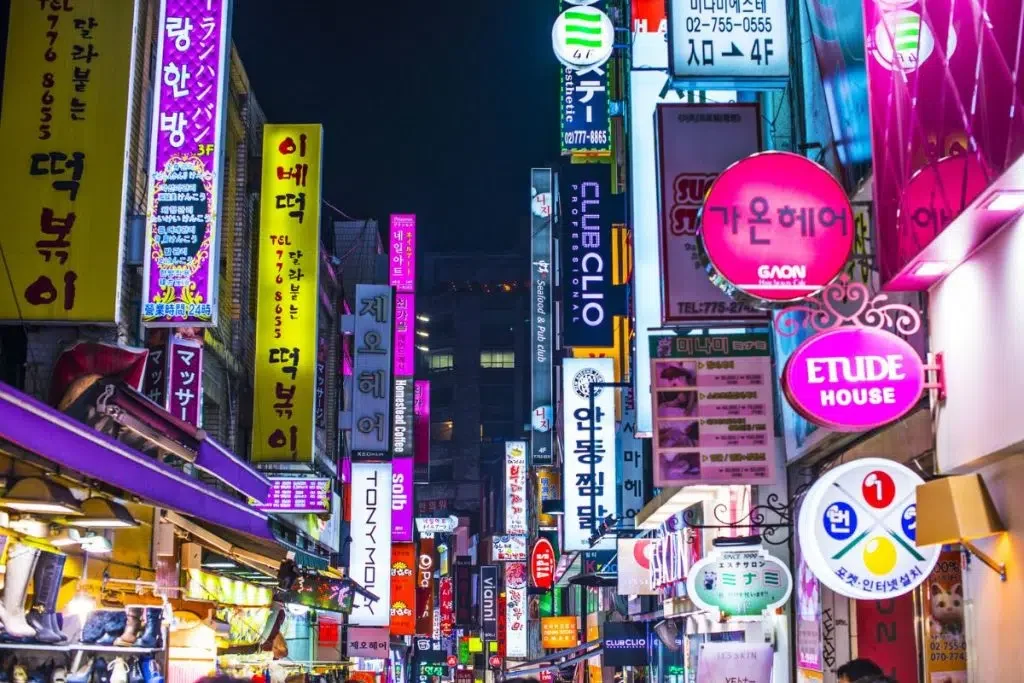
Seoul (서울) is a vibrant city with gorgeous sights and culture you have to see. But before we get into that, we have to talk about one of the most important parts of South Korean culture: the food. Between side dishes, street food, and stews, South Korea has a versatile cuisine!
Side Dishes
A staple of Korean culture are the side dishes served with each meal. Called Banchan (반찬) by Koreans, side dishes is an idea that dates back to the Korean royal court cuisine, which consisted of anywhere between 2 to 12 side dishes.
Cheaper restaurants tend to serve less, but each side dish is tasty and compliments the meal. Banchan arrives before meals, but don’t confuse them with an appetizer.
They are included in the cost of the meal, and the best part: they have free, unlimited refills!
Some common side dishes are: kelp noodle salad (cheonsachae salad or 천사채), spicy Korean coleslaw, sweet and salty soybeans (kongjabean or 콩자반), sweet and salty lotus roots (yeonkeun jorim or 연근조림), and Korean style sausage stir fry.
Street Food
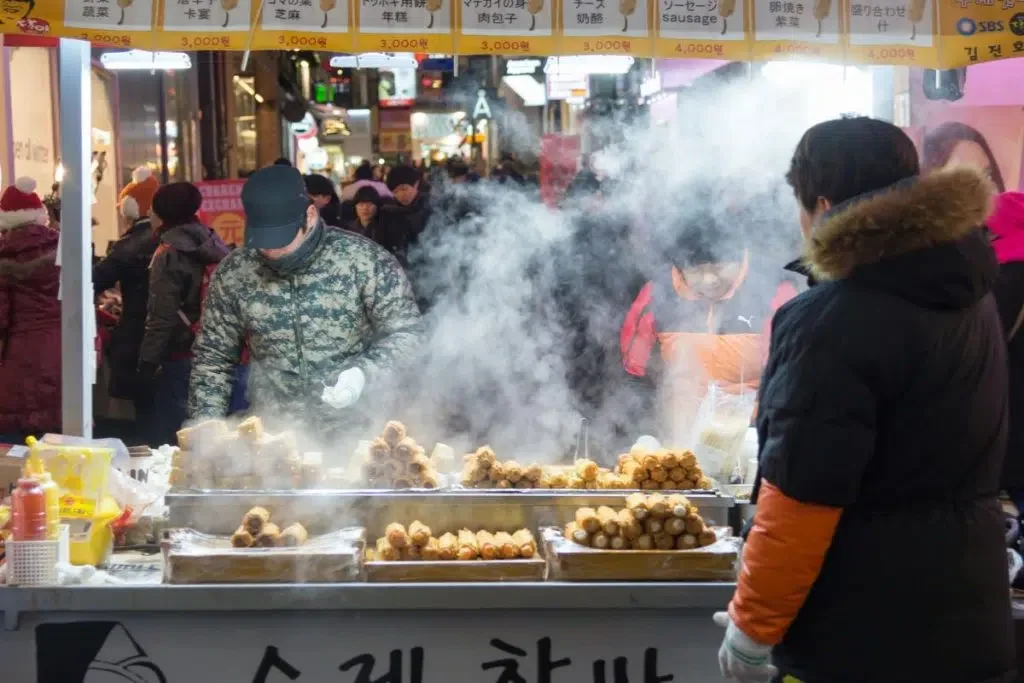
If you’re looking for an alternative to dine-in restaurants, street food is just for you! Street food is ready-to-eat food you can buy from local vendors.
Even better: vendors are easy to find and are lined up and down the Seoul streets, all you have to do is find the one that suits you!
There are plenty of foods to choose from, so get your chopsticks ready. For starters, you have to try Korean style fried chicken. It’s a must when you’re in Seoul.
Street vendors will absolutely sell Korean fried chicken, and you should at least try them while you’re there!
There’s also bibimbap (비빔밥). Bap (밥) in Korean literally means rice, or meal. Therefore, bibimbap translates to mixed rice.
Bibimbap has warm rice and sauteed and or seasoned vegetables. A raw or fried egg and sliced meat, normally beef, are included as well.
Korean dumplings ( mandu or 만두) are another commonly served street food dish. There are many different types of dumplings you can get such as vegetable dumplings, beef dumplings, and or pork dumplings. These foods are all super tasty and super affordable!
With Seoul having a cool climate, soups and stews are a significant portion of a Korean’s diet. One popular stew is known as Army stew.
This stew has American processed meat such as Spam, ham, bacon, and hot dogs. Those meats are mixed into a Korean stew with kimchi .
Kimchi-jjigae (김치찌개) is a stew made with kimchi and various other ingredients such as pork or seafood, scallions, onions, and diced dubu. This stew is a popular choice in South Korea, and it’s a common stew to find in Seoul.
Lastly, another popular stew is Korean crab stew (kkotgetang 꽃게탕). This stew is pretty self-explanatory. It’s a stew with a flower crab as the primary ingredient.
There’s also Korean radish, garlic, dried anchovies, and other ingredients that vary by the recipe.
The Sights In Seoul, South Korea
Seoul itself is an architectural landmark. There are specific sights in Seoul that are places you have to visit while you’re there.
A few of those places are: N Seoul Tower, the Ansan Starlight Village, and the Jogyesa. There’s also entertainment like underground shopping.
N Seoul Tower
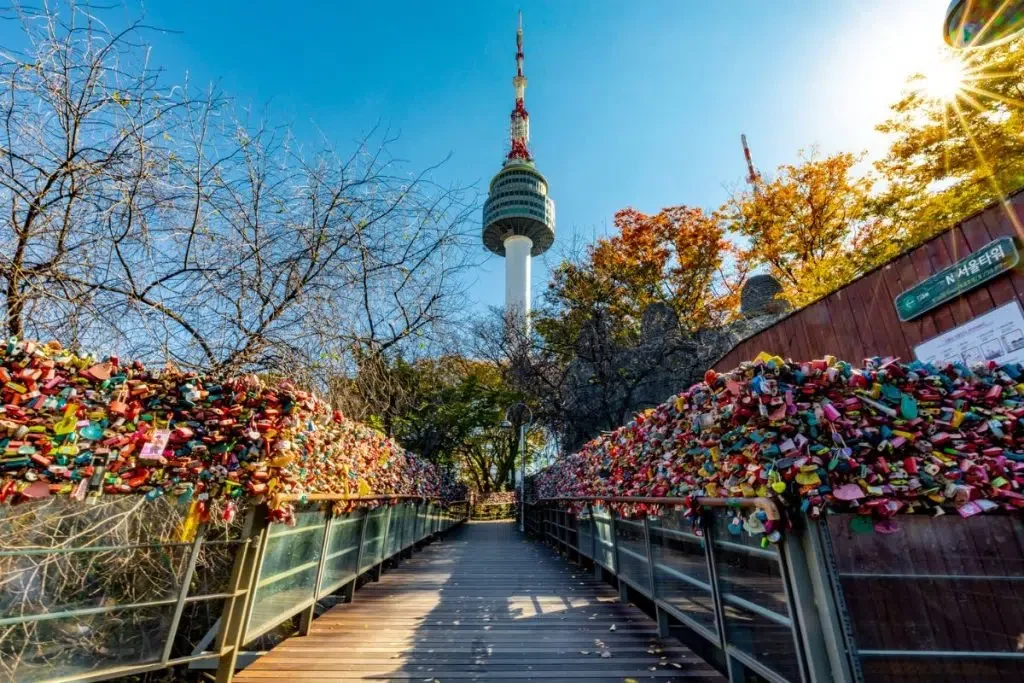
The N Seoul Tower is famous for its location and height allowing access to the gorgeous skyline of Seoul.
Back in 1969, it was utilized as Korea’s first general radio wave tower. TV and radio broadcasts would play from the N Seoul Tower to the surrounding metropolitan area.
This tower is 236 meters high and is the second-highest point in Seoul. It is a communication and observation tower on Nam Mountain.
The N Seoul Tower is in the center of Seoul, which is why the height and location is so perfect for tourists looking to get amazing pictures.
Ansan Starlight Village
Perhaps the brightest pick on this list, the Ansan Starlight village is a radiant garden along the expressway of Ansan.
It is known for being festive and romantic all-year-round, and displays of over 200 animals are there. These animals include: owls, cranes, swans, elephants, and more.
Not only does it provide an astonishing atmosphere for relaxation and Instagram posts, but it’s also an area that sparks romance.
Marriage proposals are a common occurrence there due to the perfect lighting and activities.
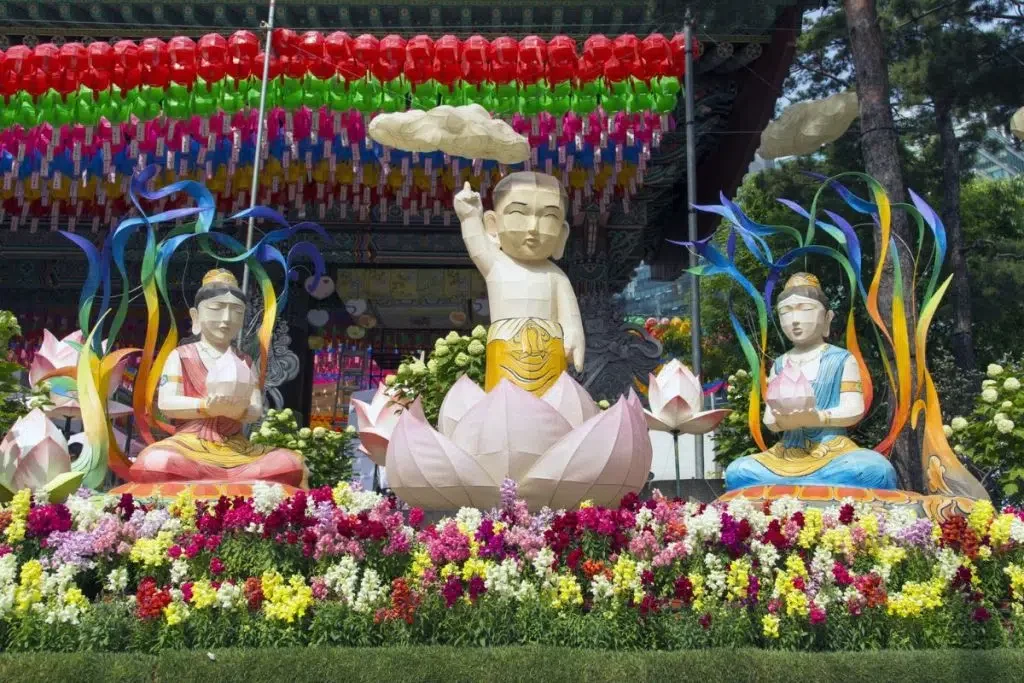
The Jogyesa (조계사) is a Korean Buddhist temple. It is the chief temple of the Jogye Order. The building itself dates back to the 14th century, becoming the chief temple in 1936. It is located in central Seoul, and it is known for its zen environment.
Not only is the architect magnificent, but the nature surrounding it is fresh and preserved, just like the temple.
The Jogyesa is a common tourist site for experiencing royal palace life. You can tour the building with a guide and see all the history and architecture with your own eyes.
Underground Shopping
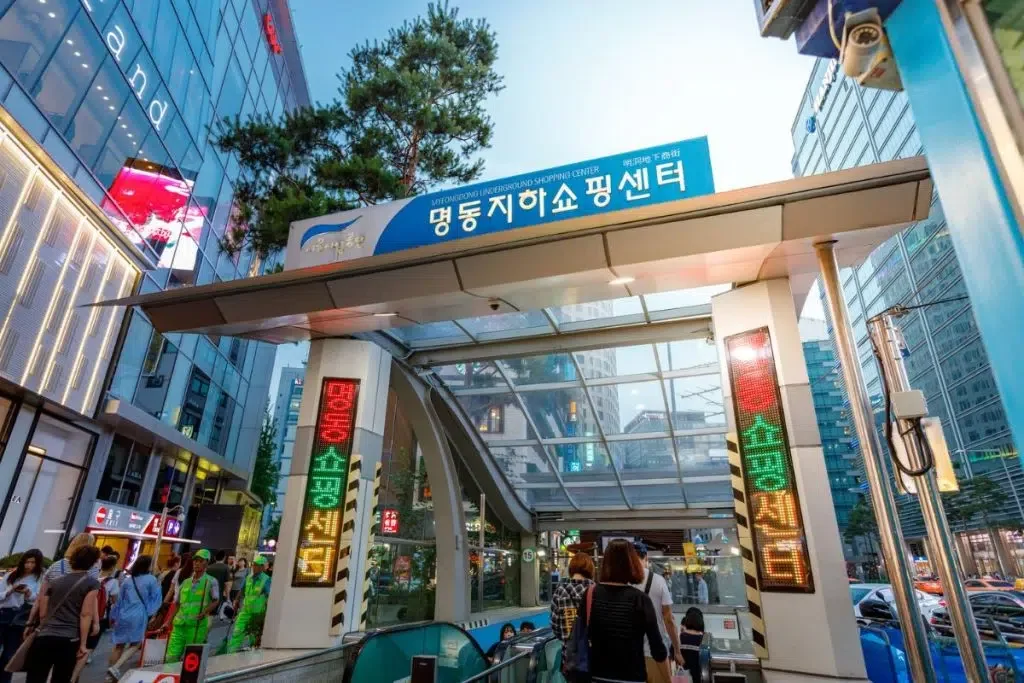
A famous activity in Seoul is underground shopping. Two examples of underground shopping areas are the Express Bus Terminal Underground Center and the Gangnam Underground Shopping Center.
These shopping areas are perfect for good finds, even on a rainy day.
Many of the shopping centers, both above ground and underground, are located in Myeongdong , the shopping district of Seoul.
Underground shopping centers don’t risk putting a large dent in your budget. They’re cheap yet fashionable and useful.
Some tips for underground shopping are to bring cash with you and check out the trendy stores. Some items require cash, no credit.
As for the trendy stores, you can find the latest fashion trends at underground stores for more affordable prices, so be on the lookout for that!
Where To Stay In Seoul
When it comes to the size of South Korea, it’s not as large as other countries like America. So, their compromise was to build their buildings upwards to make more space, not side-to-side. This means there are many apartment buildings and hotels all around Seoul.
There are 5 main districts in Seoul you should consider staying near: Myeongdong , Hongdae , Gangnam , Itaewon , and Jamsil .
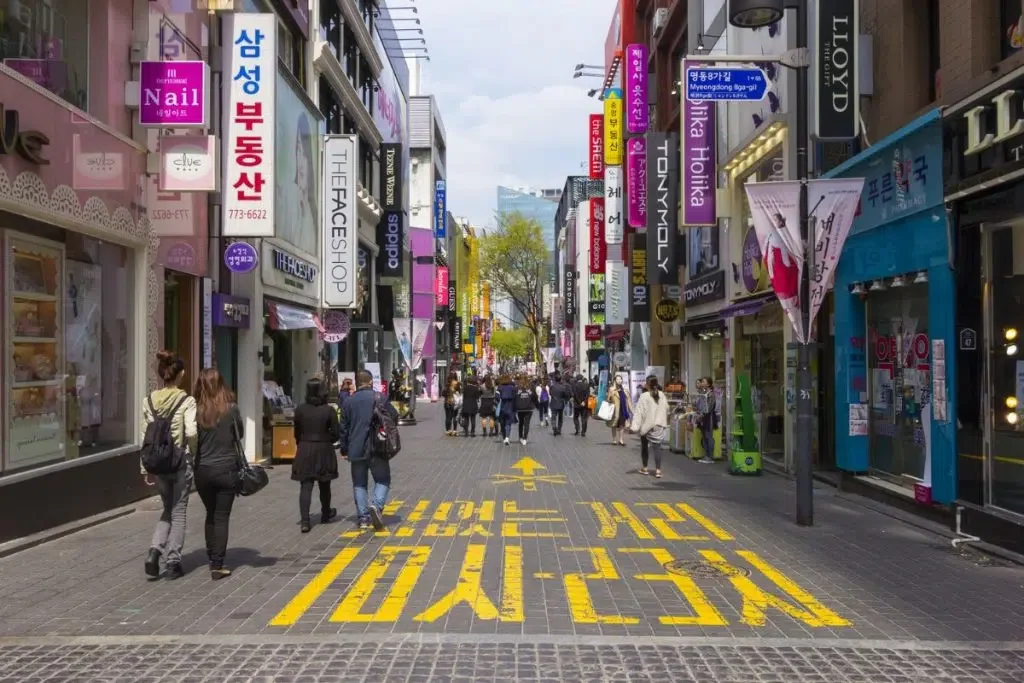
Prices and quality depends on which area you choose. There’s Myeongdong (명동), which is known for being a huge shopping district.
The Westin Josun Seoul Hotel is only a 5-minute walk away from the bustling life of Myeongdong. It’s a highly rated hotel with many activities inside.
The shopping district has everything you’ll need from body care items you misplaced to trinkets and K-pop albums. There are department stores, shoe stores like Adidas, perfume shops, skincare stores, H&M, and many more for all your traveling and souvenir needs.

Hongdae (홍대) is for those craving an adventure more indie and fashionable. It’s a creative district with plenty of cafes and Korean BBQ. Mono House Hongdae is a minimalist housing property that’s affordable and only 5 minutes away from the Hongik University Subway Station.
The entertainment value at Hongdae is incredible. The Tricky Eye Museum Seoul relies on visual tricks to keep you on your toes and show you various art. There’s also clubs for dancing and music. Hongdae as a whole values urban arts, indie music culture, and entertainment.
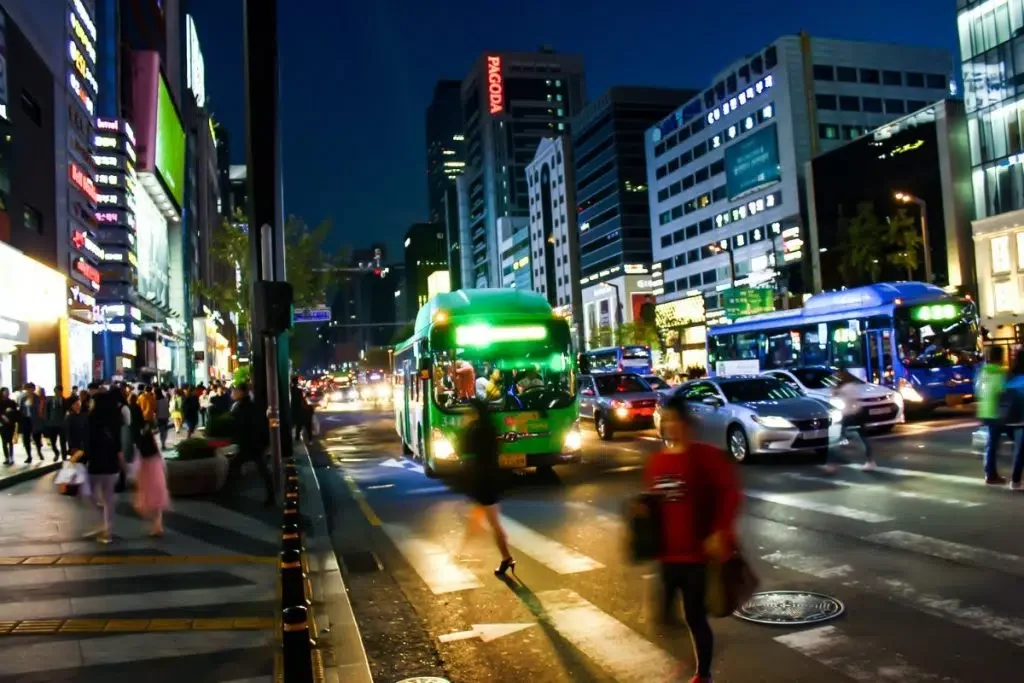
Gangnam (강남구) is a wealthier district of Seoul, meaning higher quality living, but at the cost of much higher prices. The Park Hyatt Seoul is an expensive 5-star hotel that has a relaxing spa and gorgeous views of Gangnam. It’s worth the price for the views alone!
There’s also the Aloft Seoul Gangnam. This is a cheaper, 4-star hotel that’s the better option for those wishing for a taste of the high life without losing a significant amount of money in the process. It includes business services, an on-site restaurant, free Wi-Fi, and a lounge.
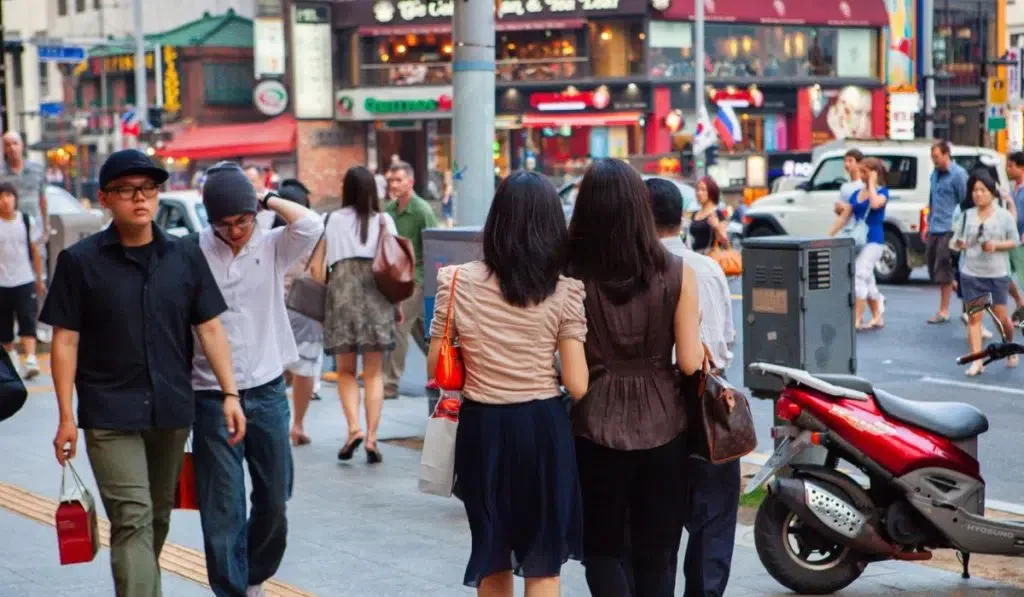
If you were called the life of the party growing up, Itaewon (이태원) is for you. It’s nicknamed the “Western Town” of Seoul due to the variety of international cuisine and entertainment offered there. It has multiple unique bars, restaurants, and activities around town all worth visiting.
The Grand Hyatt Seoul is a 5-star hotel with over 600 rooms and over 50 suites. It’s close to both Itaewon and Myeongdong, but it is expensive. However, it may be worth it since some amenities include an on-site restaurant, an indoor pool, and free Wi-Fi.
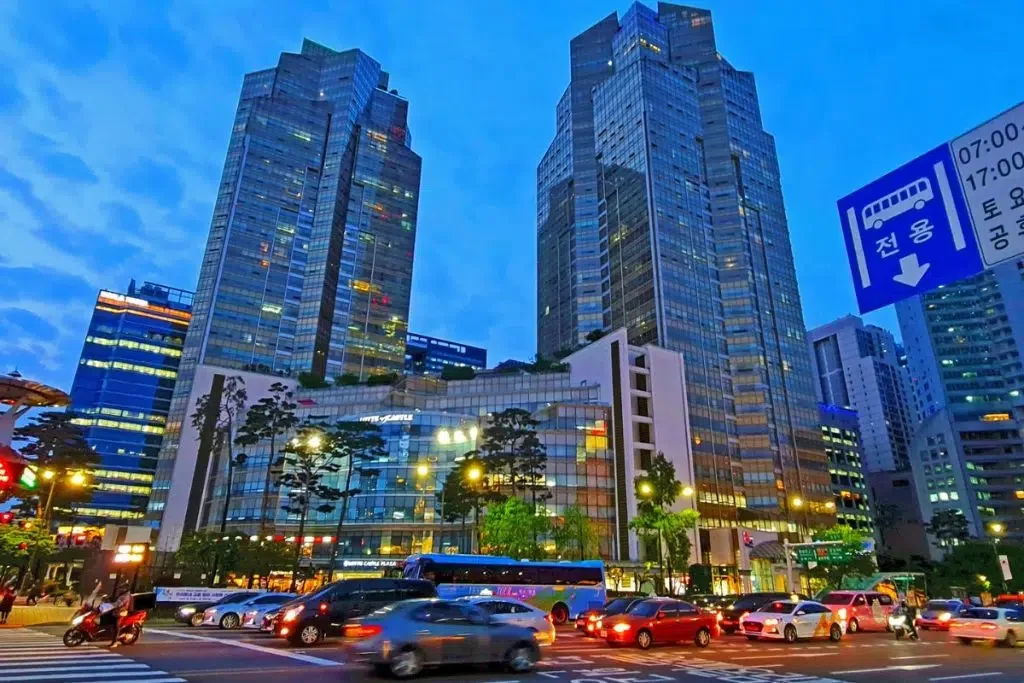
Jamsil (잠실동) is the best spot for families. It’s also great for those who love sports. Jamsil is home to not one, but two professional Korean baseball teams: the LG Twins and Doosan Bears. It’s rich with K-pop culture, and it’s also home to Lotte World, an amusement park.
The Lotte World Hotel is right beside the amusement park of the same name, and it is a 5-star hotel that also sits on top of Jamsil Subway Station.
It’s the perfect hotel for your family to travel across Seoul and Jamsil, experiencing the amusement park as well as the culture.
What Seoul Is Known For
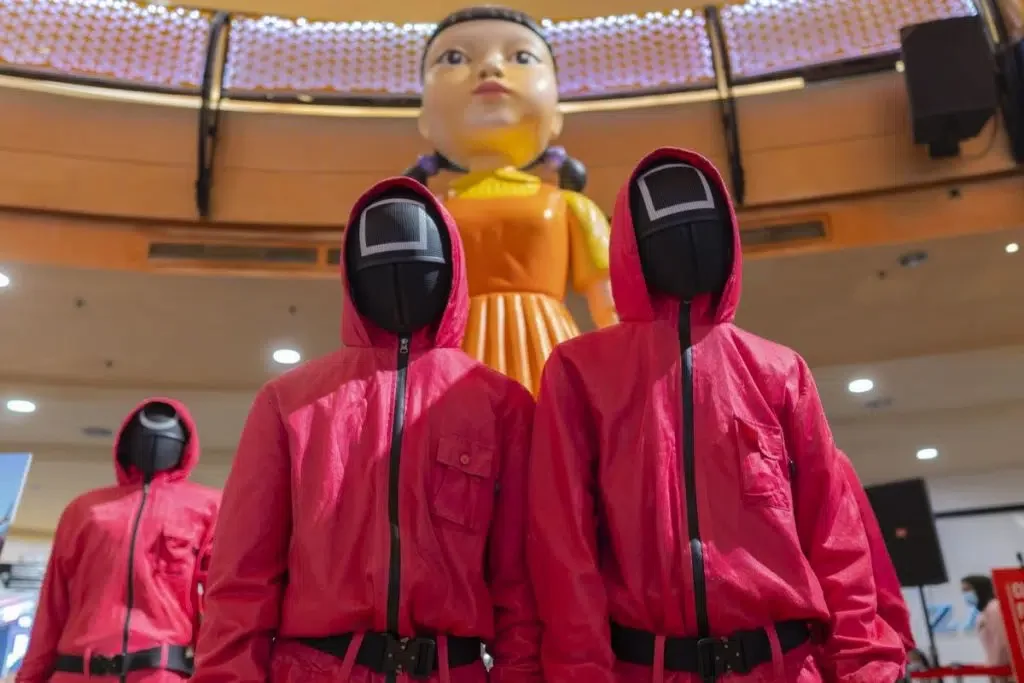
It would be impossible to talk about Seoul without mentioning the entertainment industry that has brought us popular K-dramas such as Squid Game, and the K-pop industry that brought us the worldwide superstars BTS. Seoul is overflowing with creativity and art.
Fun fact: Seoul is the birthplace of K-pop. Although the term wasn’t coined until 1999 by Cho Hyun-jin, Korean music groups rose from Seoul.
History and culture is thriving in the city, and that’s what tourists go to visit. Places like the Gyeongbokgung Palace (경복궁) are famous destinations.
One of the most famous aspects of Seoul is the street food. Street food is cheaper than restaurant food and it still tastes yummy. It’s a perfect alternative to when you don’t want to spend a lot of money, and you want to wander around the streets of Seoul while eating.
South Korea is known for its beauty standards and skincare . Koreans use natural ingredients to keep their skin clean and smooth. In the west, Korean skincare products and routines are popular because of the glowing skin they cause. Many of these products come from Seoul.
Lastly, Seoul is known for the preserved royal temples around the land. There are more than 900 traditional Buddhist temples that are centuries old. In total, there are over 20,000 temples in Seoul.
Seoul is a beautiful and safe city for tourists that has grown in popularity over the years. It is known for its rich culture, entertainment, skincare, K-pop, and preservation of traditional Buddhist temples.
The food is a must-have. There are various types of food such as side dishes, street food, and stews that will keep you invested in the culture surrounding you. There’s also the sights of Seoul like the N Seoul Tower, and those sights encourage you to snap countless pictures.
Lastly, the 5 main districts of Seoul you should consider visiting are: Myeongdong, Hongdae, Gangnam, Itaewon, and Jamsil.
Each individual place has its own lifestyle and culture. There’s the shopping, the indie culture, the wealthy, the partying, and the amusement park.
Don’t forget to check out Ulsan , Sejong , and Daejeon .
Enjoy the article?
You'll love my daily email! Learn something new about South Korea every single day. It's completely free. <3
About The Author
You May Also Like
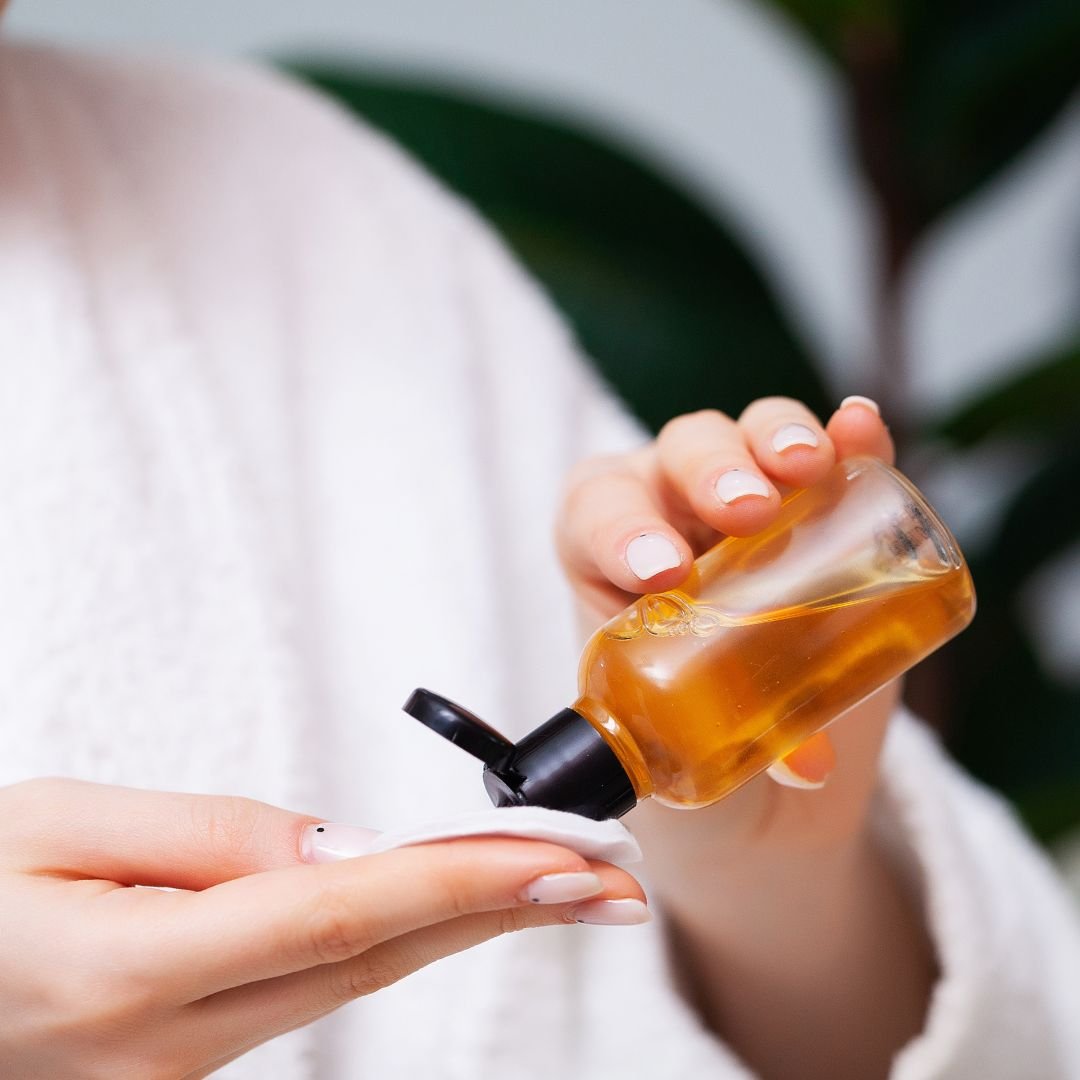
10 Best Korean Toners for Dry Skin (2024 Updated)
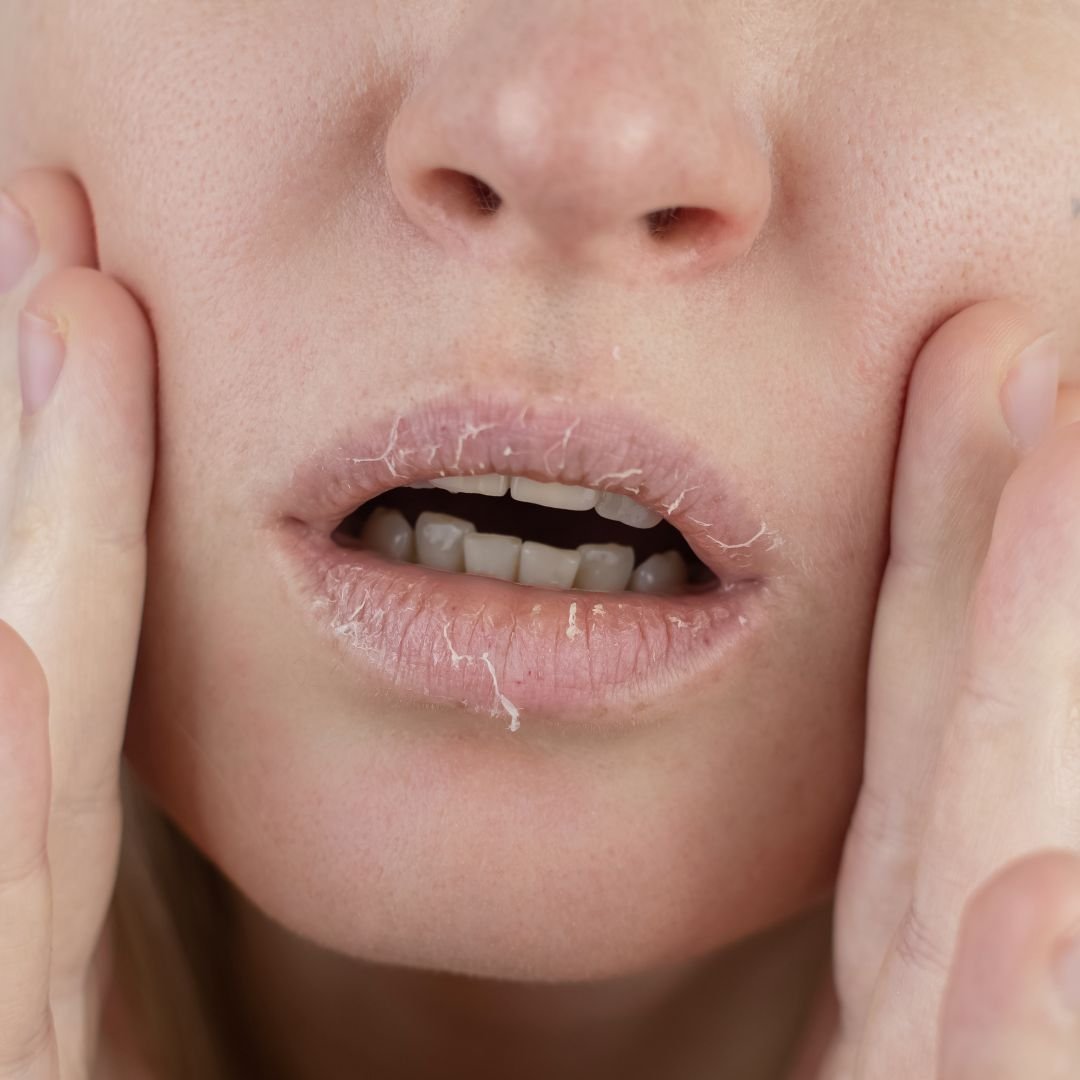
The 8 Best Korean Essences for Dry Skin (2024 Updated)

24 Best Korean Skincare Brands of All-Time

Is Korean Skincare Cheaper in Korea?
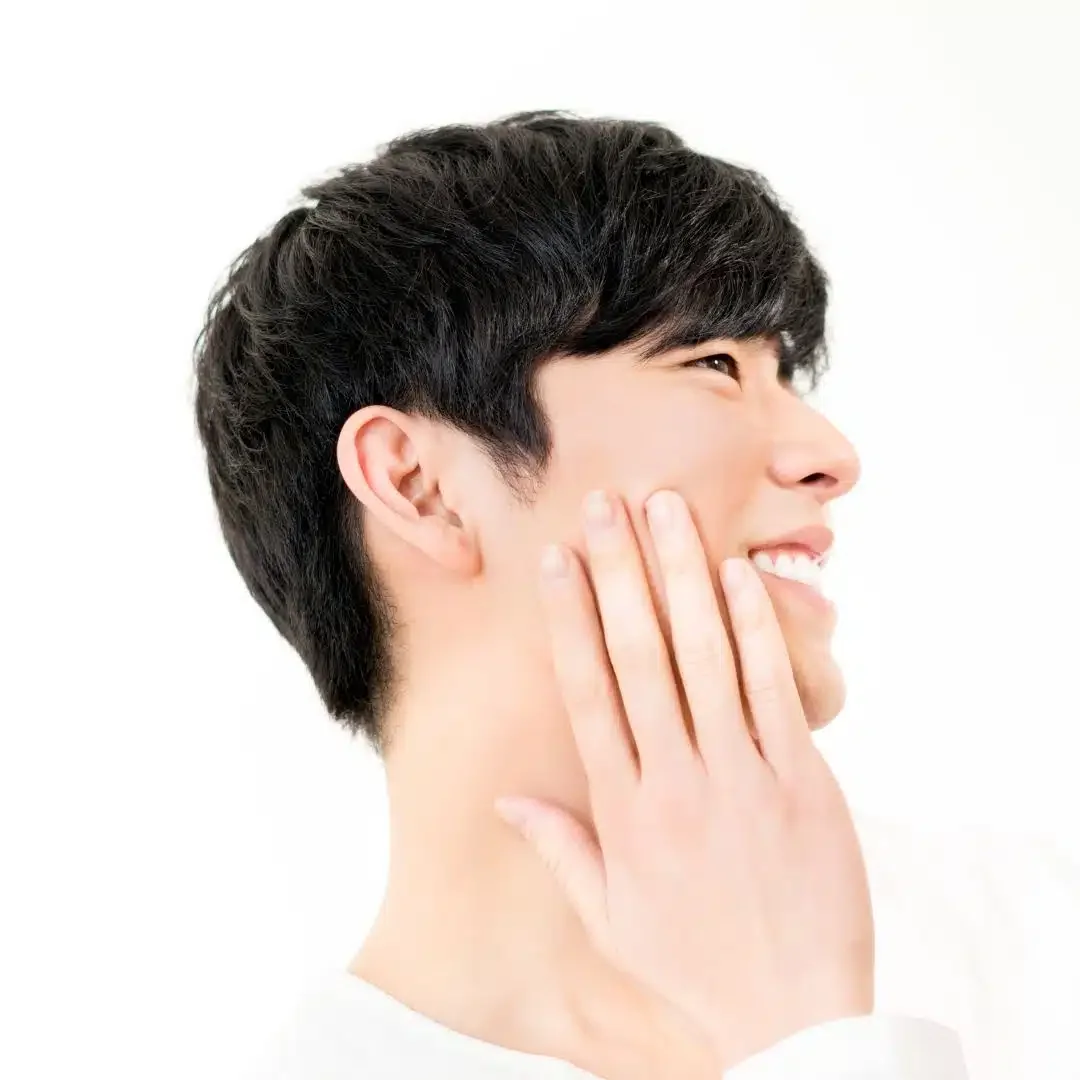
How Long Does It Take for Korean Skincare to Work?
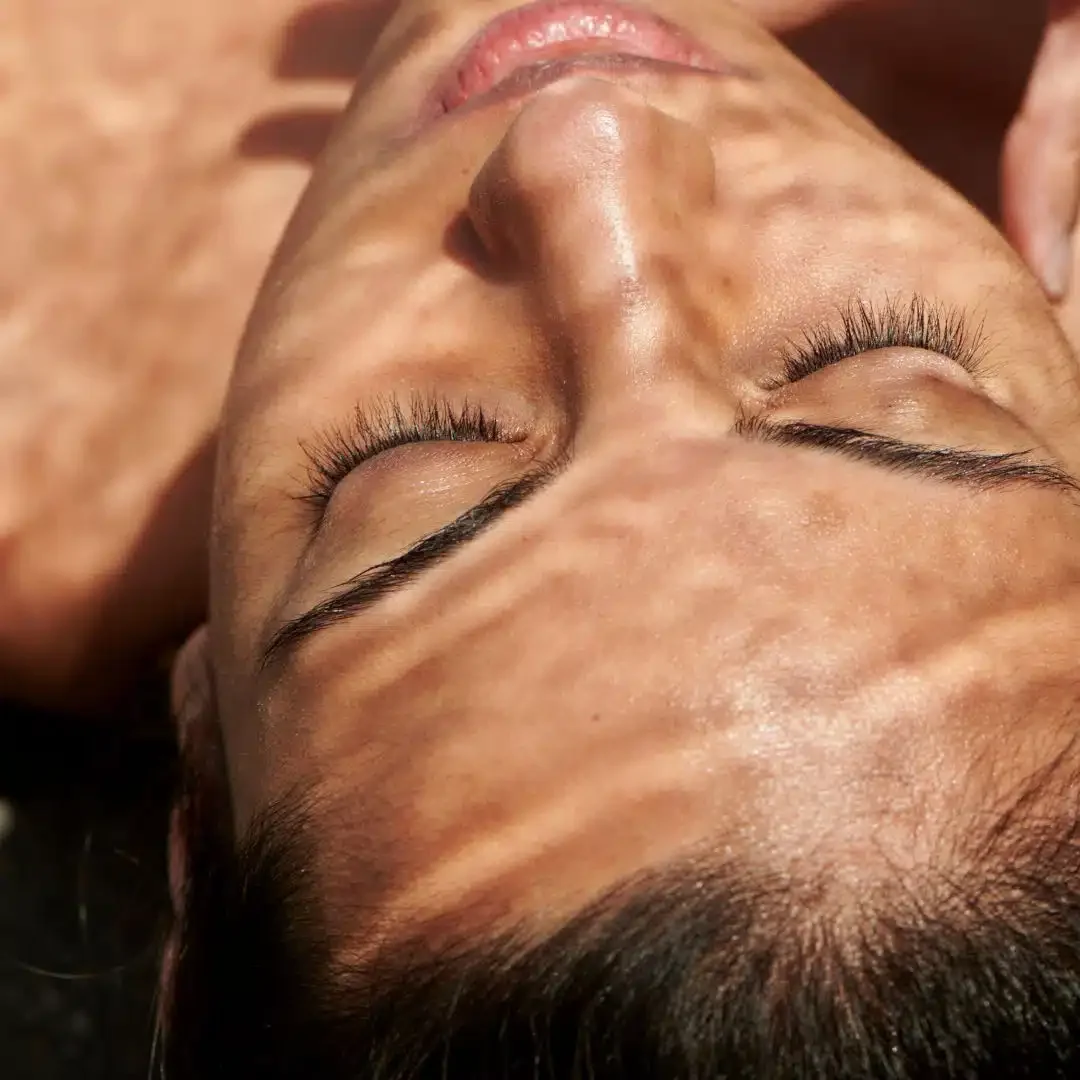
Is Korean Skincare Similar to Japanese?

© 2024 TheKoreanGuide.com | As an Amazon Associate, I earn from qualifying purchases.

A Korea Travel Guide
If you’ve found yourself on this page, yay! I love when people want to come visit one of my favorite places in the world. Korea has become somewhat of a second home to me – a place I always feel somewhat comfortable in, even if I’ve been away for a while. I first visited in 2011 when I studied in Seoul for the summer and returned in the fall of 2014 to teach English in the countryside. I spent two years living in Namwon and traveling on the weekends and then I came back in 2017 to teach for one more year in Suncheon! Now I go back at least once a year to visit friends and to continue exploring this country (although with how the world is, it’s been 2 years). I hope you find all my guides helpful!
Just Starting to Plan Your Trip?
Check these posts if you’re just starting to plan your trip to Korea, especially my very long travel tips post which will give you quite literally everything !

Tips & Guides
50 South Korea Travel Tips
80 Things to Do in Korea: The Ultimate Bucket List
Korea Trip Planner: All the Logistics
The Best Apps for Korea Travel: Which Ones I Use and the Ones I Don’t
22 Places in the Korean Countryside You’ll Love

Inspiration
102 Unbelievably Beautiful Places in Korea
20 Photos to Make You Fall in Love with Traditional Korea
85 K-pop Summer Songs from 1985 to Today: Your Ultimate Playlist
12 of the Best Korean Dramas I Recommend to My Friends (And 4 I Don’t)

Itineraries
How to Spend 2 Weeks in Korea: 4 Itinerary Ideas
The Only 1 Month Korea Itinerary You Need
A Very Efficient Korea Itinerary for 7 Days

Summer in Korea: What to Do + How to Stay Cool
Autumn in Korea: Forecast, Food, Festivals, and More
Best Places to See Fall Foliage
A Guide to Winter in Korea
Spring in Korea: Top Tips and Things to Do
Cherry Blossoms, Korea : A Forecast Guide & Where to Go

What to Eat & Drink
Your Guide to the Best Korean Food: 66 Dishes & Drinks!
All About Kimchi

Learn Korean
Getting a Tattoo in Korea – Is it Illegal?
14 Unique Gift Ideas for Your Friend Who Loves Korea
A Guide to Hiking in Korea
Seoul & Nearby
Every country has its major city, and for Korea that’s Seoul (which is also its capital)! Located up towards the northwest part of the country, it’s easily one of my favorite metropolitan areas in the whole world.
There’s just SO much going on no matter what you’re looking for, and it’s always changing.
It’s also very easy to see some cool nearby sights in Suwon and Gyeonggido, like a French storybook village, a kitschy island, a huge fortress, and more!

Seoul Guides
Seoul Travel Guide
13 Free Things to Do in Seoul
One Day in Seoul: 5 Layover Itinerary Ideas
7 Cool Libraries & Bookstores in Seoul

Where to Stay
Where to Stay in Seoul: Best Neighborhoods + Hotels
10 Best-Rated Hotels in Insadong
10 Best-Rated Hotels in Gangnam
10 Top-Rated Hotels in Hongdae
10 Best Hotels in Myeongdong by Reviews

The Palaces
The Five Grand Palaces of Seoul: A Guide
Gyeongbokgung
Changdeokgung Palace and its Secret Garden
Get an Aerial View of Deoksugung Palace

Cafes in Seoul
25 Cafes in Seoul: the Trendiest & Most Brewtiful
Seoulism (서울리즘): the Cafe with Views to Lotte World Tower
The Trendy Stylenanda Pink Hotel + Pink Pool Cafe in Seoul
The Dreamy Camera Cafe

Quirky Seoul
10 Quirky Things to Do in Seoul
What to Expect at the Hongdae Trick Eye Museum in Seoul (Some NSFW)
Complete Lotte World Guide
Complete Guide to Everland Theme Park

Scenic Seoul
Bugak Skyway: One of the Prettiest Views in Seoul
Ihwa Mural Village
What to Expect on a Han River Cruise
Guide to Seoul Sky Observatory

A Storybook Escape from Seoul
How to Visit the Incredible Suwon Fortress
17 Fun Day Tours in Seoul and Nearby
One of the most charming places to visit in Korea – Jeju! I always say it takes all my favorite parts about the mainland and does away with the more frustrating aspects. Definitely rent a car or arrange a driver so you can take your time and explore the island at the nice, slow pace you ought to!

Jeju Guides
Quick Guide to Jeju
30 Incredible Things to Do in Jeju + My Secret Spots!

Where to Stay in Jeju: An Expert Guide
25 Unique Jeju Airbnbs You’ve Got to Book

Specific Areas
Udo Island: A Little Travel Guide
Jeju’s West Coast
Jeju’s East Coast
North Jeolla Province (Jeollabukdo)
Jeollabuk (and Jeollanam below) are two of the provinces closest to my heart because they’re where I lived. Jeollabukdo, also known as North Jeolla or Jeonbuk, is down towards southwestern Korea and sits along the coast to the Yellow Sea.
Its main capital is Jeonju and as a province is known for its food. I’d go so far to say that Jeollabuk and Jeollanam are the best places to eat food in the whole country! Back when I lived in Namwon, I remember my friend going to Seoul and being unimpressed with the Korean dishes in the city compared to what we got everyday between our schools and ordering takeout!

City Guides
Namwon, Korea: A Local-ish Guide
Jeonju Hanok Village: A Complete Guide

Hiking in Jeollabuk
How to Hike Guryong Valley in Jirisan
Jirisan’s Baemsagol Valley Course
Naejangsan National Park: Finding Fall Colors
Hiking Wolchulsan to Cross One of Korea’s Must See Bridges

Temple Stay
Experiencing a Temple Stay in Korea at Naesosa
8 Lessons Learned from a Buddhist Temple Stay

Other Places
Enrogel Teapot Café
South Jeolla (Jeollanamdo)
Below Jeollabukdo is Jeollanamdo, aka South Jeolla or Jeonnam. This province sits all the way down to the southernmost tip of mainland Korea and surrounds the major city of Gwangju.
Historically, it, with Jeonbuk, was established in 1896 as one of the Eight Provinces of Korea (then they were both combined to be Jeolla). Today it’s home to some of the prettiest places in Korea! I’m talking a bamboo forest, a folk village, an ecological bay, tea fields, islands… There’s a reason I centered my tour around Jeollanam!

What to Do in Suncheon, Korea: A Local-ish Travel Guide
Suncheon Bay Garden – How to Visit
How to Visit Suncheon Bay Wetland Reserve
Suncheon Open Film Location – A Step Back in Time
Hiking Between Two Mountain Temples in Jogyesan
Naganeupseong Folk Village: How to Visit This Traditional Fortress Town

Damyang Travel Guide
Meta Provence, Damyang: A Little French Inspired Village in Korea

Seasonal Festivals
Gokseong Rose Festival
The Gwangyang Maehwa Festival: Finding Plum Blossoms in Korea
Visiting the Gurye Sansuyu Festival

Fun Things to Do in Yeosu, Korea + A Travel Guide
Boseong Green Tea Fields: Everything You Need to Know to Visit
Other Provinces
Admittedly, I don’t have quite as much experience with the other provinces on mainland Korea, which is part of what I’m hoping to fix with future trips!
Chungcheongbukdo and Chungcheongnamdo always felt a bit like the forgotten provinces that I passed through from Namwon to Seoul, but I couldn’t tell you what was there to do or see.
Gyeongsangbukdo and Gyeognsangnamdo are in the southeastern corner of Korea and surround Busan. They’re home to loads of cool coastal spots.
Gangwondo sits all the way up north and might be familiar as it’s where the Pyeongchang Olympics took place! I would say of all the provinces it feels the most like the countryside. Loads of amazing hiking and skiing in the winter.

Chungcheongbuk & Chungcheongnam
Hiking Daedunsan in the Fog
A Guide to Hiking Gyeryongsan in Korea

Gyeongsangbuk & Gyeongsangnam
A Quick Guide to Tongyeong, South Korea
How to Visit the Hwagae Cherry Blossom Festival
The Famous Jinhae Cherry Blossom Festival: ALL You Need to Know

Hike Seoraksan, One of Korea’s Tallest Mountains
A Hiking Guide to Odaesan National Park in Korea

18 Best Things to Do in Busan, Korea
A Guide to Gamcheon Culture Village: the Most Charming Place in Korea
Teaching & Living in Korea
For those of you hoping to live and work in Korea, hopefully these posts will help you out!

Your Ultimate Guide to Teaching in Korea

How to Save Money in Korea as a Teacher: Realistic Expectations, Budgeting, and How to Make Extra

How to Get a Korean E2 Visa in Japan

Promotions apply when you purchase
These promotions will be applied to this item:
Some promotions may be combined; others are not eligible to be combined with other offers. For details, please see the Terms & Conditions associated with these promotions.
Buy for others
Buying and sending ebooks to others.
- Select quantity
- Buy and send eBooks
- Recipients can read on any device
These ebooks can only be redeemed by recipients in the US. Redemption links and eBooks cannot be resold.

Download the free Kindle app and start reading Kindle books instantly on your smartphone, tablet, or computer - no Kindle device required .
Read instantly on your browser with Kindle for Web.
Using your mobile phone camera - scan the code below and download the Kindle app.

Image Unavailable

- To view this video download Flash Player
South Korea Travel Guide 2024: A Companion Guidebook to the Enchanting Realm of Tradition, Innovation, and Eternal Beauty (Explorer's Companion 9) Kindle Edition
- Book 9 of 16 Explorer's Companion
- Print length 104 pages
- Language English
- Sticky notes On Kindle Scribe
- Publication date April 11, 2024
- File size 470 KB
- Page Flip Enabled
- Word Wise Enabled
- Enhanced typesetting Enabled
- See all details
- Next 3 for you in this series $28.79
- Next 5 for you in this series $46.78
- All 16 for you in this series $142.58

Product details
- ASIN : B0D1KMFHFT
- Publication date : April 11, 2024
- Language : English
- File size : 470 KB
- Simultaneous device usage : Unlimited
- Text-to-Speech : Enabled
- Screen Reader : Supported
- Enhanced typesetting : Enabled
- X-Ray : Not Enabled
- Word Wise : Enabled
- Sticky notes : On Kindle Scribe
- Print length : 104 pages
Customer reviews
Customer Reviews, including Product Star Ratings help customers to learn more about the product and decide whether it is the right product for them.
To calculate the overall star rating and percentage breakdown by star, we don’t use a simple average. Instead, our system considers things like how recent a review is and if the reviewer bought the item on Amazon. It also analyzed reviews to verify trustworthiness.
No customer reviews
- Amazon Newsletter
- About Amazon
- Accessibility
- Sustainability
- Press Center
- Investor Relations
- Amazon Devices
- Amazon Science
- Sell on Amazon
- Sell apps on Amazon
- Supply to Amazon
- Protect & Build Your Brand
- Become an Affiliate
- Become a Delivery Driver
- Start a Package Delivery Business
- Advertise Your Products
- Self-Publish with Us
- Become an Amazon Hub Partner
- › See More Ways to Make Money
- Amazon Visa
- Amazon Store Card
- Amazon Secured Card
- Amazon Business Card
- Shop with Points
- Credit Card Marketplace
- Reload Your Balance
- Amazon Currency Converter
- Your Account
- Your Orders
- Shipping Rates & Policies
- Amazon Prime
- Returns & Replacements
- Manage Your Content and Devices
- Recalls and Product Safety Alerts
- Conditions of Use
- Privacy Notice
- Consumer Health Data Privacy Disclosure
- Your Ads Privacy Choices

5 Must-Visit Spring Travel Destinations in South Korea
① the representative flower festival of south jeolla province.
G urye in South Jeolla Province stands out as Korea’s prime spring travel destination. When spring comes, the Gurye Cornelian Cherry Festival is held as the cornelian cherry flowers bloom on the foothills of Jirisan. The cornelian cherries start to show their beauty in March. You can also enjoy the cherry blossom path along the Seomjin River and the bright yellow cornelian cherries.
The cherry blossom drive along the Seomjin River has been selected as one of Korea’s 100 most beautiful roads. This year’s Gurye Cornelian Cherry Festival will occur from March 9th to March 17th. The festival plans to create a lively atmosphere with various street performances, Trot song performances, and traditional Korean music performances. Traditional game experience events and traditional tea tasting will also be held.
The street is full of various experiences, making it a great family travel destination to visit with children.
- Address: 45 Sangwan 1-gil, Sandong-myeon, Gurye-gun, Jeollanam-do
- Festival Schedule: 03.09 – 03.17
The Gwangyang Maehwa Festival is held in Gwangyang, South Jeolla Province. Gwangyang is a travel destination where you can enjoy the plum blossoms along the Seomjin River. It is also known as one of the country’s most beautiful plum blossom spots.
Plum trees grow along the Seomjin River in Seomjin Village in Gwangyang. In March, white plum blossoms cover the neighborhood. The Gwangyang Maehwa Festival is a representative spring festival that attracts over a million tourists annually.
There are exhibitions, performances, and experience events along with the plum blossoms. You can participate in the plum party, barefoot walk along the Seomjin River, and plum highball experience.
- Address: 1563-1 Seomjingang Maehwa-ro, Daap-myeon, Gwangyang-si, Jeollanam-do
- Festival Schedule: 03.08 – 03.17
- Admission Fee: $3.76
② Famous Spring Travel Destinations in Gyeongnam
Not only Gwangyang but also Yangsan are famous for their plum blossoms. The Wondong Maehwa Festival takes place in Yangsan, Gyeongsangnam-do. The Wondong Maehwa Festival will start on March 9th.
Every March, the Wondong area becomes a spectacle as plum blossoms bloom. The area is famous for its beautiful natural scenery, and in spring, it is adorned with plum blossoms. The scenery of plum blossoms harmonized with the Nakdong River is quite stunning. The entire Wondong Village, where the plum blossom festival is held, turns into a festival venue. During the festival, there is food, and you can experience streets and flower viewing.
In addition to the plum blossom festival, the Wondong Water Celery Festival, which runs from February 23rd to April 30th, is also in full swing in Yangsan.
- Address: 2220 Wondong-ro, Wondong-myeon, Yangsan-si, Gyeongsangnam-do
Jinhae is a place where a representative spring festival is held. In Jinhae, you can enjoy one of the nation’s top cherry blossom festivals. Every spring, the “Jinhae Gunhangje Festival” begins. At the end of March, various places in Jinhae will be covered with cherry blossoms.
Many people are likely looking forward to the Jinhae Gunhangje Festival as spring begins. Jinhae, filled with 360,000 cherry trees, is a cherry blossom attraction throughout the city. Famous places to enjoy cherry blossoms in Jinhae include Yeojwacheon, Jehwangsan Park, Jangboksan Park, and the Environmental Ecology Park.
Among them, the “Romance Bridge” of Yeojwacheon has cherry trees lined up along a 1.5km (approximately 0.93 miles) stream. It’s a place that offers a romantic atmosphere where you can enjoy beautiful cherry blossoms more than anywhere else. It was also introduced in “50 Places to Visit in Korea,” selected by the U.S. broadcaster CNN.
Last year’s Jinhae Gunhangje Festival attracted 4.5 million tourists. This year, it is expected that a large number of tourists will revisit Jinhae.
- Address: 217 Yeojwa-dong, Jinhae-gu, Changwon-si, Gyeongsangnam-do
- Festival Schedule: 03.23 – 04.01
③ Jeju Island’s Canola Flowers Already in Full Bloom
In Jeju, the canola flowers are already in full bloom. You can’t leave out canola flowers when traveling to Jeju in the spring. The yellow canola flowers are in full bloom in areas such as Sanbangsan and Seongsan Ilchulbong. Jeju has various canola flower attractions, so you can enjoy a more abundant trip when spring comes.
The Seogwipo Canola Flower Festival is held in the Canola Flower Square area in Gasi-ri, Pyoseon-myeon, Seogwipo-si. Noksan-ro, selected as one of the 100 most beautiful roads in Korea, is full of canola flowers and cherry blossoms along its 10km (approximately 6.21 miles) path. This is a representative spring drive course on Jeju Island, which many tourists visit yearly.
This place is considered the first of the ten scenic views in Gasi-ri Village. During the festival, it operates as a pedestrian-only road, so you can enjoy a walk while admiring the canola and cherry blossoms.
In Jeju, you can enjoy canola flowers at Hueree Canola Flower Field, Eongdongmul Valley, Seopjikoji, Seoubong Beach, and Udo.
- Address: Gasi-ri, Pyoseon-myeon, Seogwipo-si, Jeju-do
Most Viewed in Gangnam Times
- Phu Quoc Luxury Escapes: Inside the 5-Star Bliss from $450 per Night
- Insider’s Guide: Secret Sanctuary Away from Bali’s Bustle
- Seoul’s Secret Gardens: Revealing the City’s Best-Kept Natural Escapes
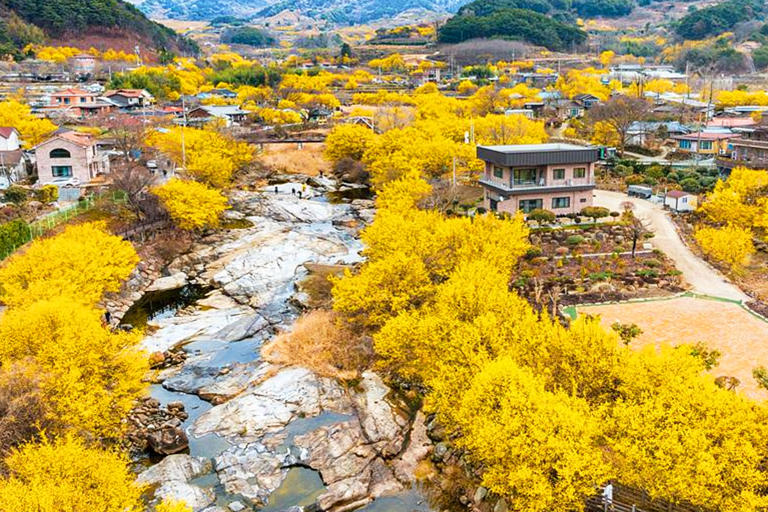
The 10th Korea Festival & Travel Expo (K-Festival 2024)
Select a region.
Save travel information you're interested in according to the region to view in your favorites list later on.
SNS Share Content!
- Facebook Link
- Share to twitter
This year celebrates the 10th anniversary of K-Festival 2024, bringing together festivals from across the nation, each showcasing cultural and historical themes. Join the K-Festival 2024 to experience a unique array of attractions, performances, and events exclusively available here, promising a delightful feast for the senses.
Directions Details
#FestivalExhibition #UniqueFestival #SeoulCityHall #SeoulPlaza #MayFestival #MayDate
Association recommendation information

- Seoul Plaza Seoul Plaza refers to the square located in front of Seoul City Hall.

- Tao Yuen This Chinese restaurant has been run by a hotel for 30 years, so you can expect high standards. Their menu features a balanced selection of the four main Chinese regional cuisines, ensuring a dining experience with a variety of different flavors. It's not uncommon to spot heads of large corporations and politicians dining here.
- 장기 폭염 예상 기간 프로그램 운영 중단: 7.23. ~ 8.11.
- 예약은 관광일 기준 최소 3일 전 까지 가능합니다.
- 3인 미만은 예약이 취소될 수 있습니다.
- 기존 등록된 예약 중 그룹별 정원을 초과하지 않는 예약에 한하여 1일 전 17시 까지 추가 예약 가능합니다.
- 다음달 예약은 전달 15일 이 후부터 가능합니다.
- 발열 또는 호흡기 증상(열, 기침, 가래, 근육통, 코막힘, 인후통 등)이 있는 경우 프로그램 참여를 삼가하여 주시기 바랍니다.
- 보호자가 동반하지 않는 만 14세 미만의 아동 관광객의 경우 현장에서 취소됩니다.
- 기상특보(폭염, 태풍, 호우, 미세먼지 등)로 인해 도보관광 운영이 어려운 경우 모든 예약은 일괄 취소됩니다. (발효 즉시 취소처리) ※예약 당일 기상특보를 상시 확인 바랍니다.
- 해설 진행 시 발생하는 안전사고에 대해서 서울도보해설관광 사무국과 서울문화관광해설사는 책임을 지지 않습니다.
- 한국어를 모국어로 사용하는 대한민국 국민의 경우, 외국어 해설 신청이 불가능합니다.
- 예약은 관광일 기준 최대 5개월 전부터 최소 5일 전 까지 신청 가능합니다.
- 희망하시는 날짜 및 코스에 활동가능한 해설사가 없는 경우 예약은 취소될 수 있습니다.
- 특히 주말 및 공휴일, 봄(4~5월) 가을(9~11월) 성수기에는 예약이 조기마감 되오니 이 점 유의하여 주시기 바랍니다.
- 예약확인을 위해 도보관광 사무국(02-6925-0777)에서 확인 연락이 진행됩니다. (최소 5일~한달 전)3회 이상 전화통화가 이뤄지지 않을 시 예약이 취소될 수 있습니다.
- 경복궁, 창덕궁, 창경궁, 덕수궁 35인 이상 관람 시, 해당 궁궐 사이트에서 15일 전 단체 입장신청이 필요합니다. (2014.1.1.부터 시행)
- 해설 진행 시 발생하는 안전사고에 대해서 도보관광 사무국과 서울문화관광해설사는 책임을 지지 않습니다.
- 예약은 관광일 기준 최소 1주일 전까지 가능합니다.
- 덕수궁의 경우 복지카드를 지참한 관광객에 한하여 무료입장이 가능합니다. ※ 중증(1~3급) 동반인 포함 2명 무료※ 경증(4~6급) 장애인 본인 1인만 무료
- 보호자 또는 보조자가 동반하지 않을 경우 이용이 불가능 합니다.※ 별도의 보조자가 없는 경우 사무국으로 문의 바랍니다. (02-6925-0777)
- 예약확인을 위해 도보관광 사무국(02-6925-0777)에서 확인 연락이 진행됩니다.(최소 5일~한달 전)3회 이상 전화통화가 이뤄지지 않을 시 예약이 취소될 수 있습니다.
- 덕수궁의 경우 복지카드를 지참한 관광객에 한하여 무료입장이 가능합니다. ※ 중증(1~3급) 동반인 포함 2명 무료 ※ 경증(4~6급) 장애인 본인 1인만 무료
- 본 프로그램은 수화해설 중심으로 진행되며, 수화가 불가능한 경우 이용이 불가합니다.
- 본 코스는 보행약자(거동이 불편한 고령자, 장애인, 유모차 이용자 등)를 위한 코스입니다.
- 보호자를 동반하지 않을 시 이용이 불가능 합니다.※ 보행약자 1명당 보호자 최소 1인 이상 동반 ※ 전동보장구(전동휠체어, 전동스쿠터 등) 사용자의 경우 보호자 1인당 보행약자 최대 4인까지 동반 가능 희망하시는 날짜 및 코스에 활동가능한 해설사가 없는 경우 예약은 취소될 수 있습니다.
- 미세먼지 비상저감조치 발령 및 기타 기상악화(폭염, 태풍, 폭우 등)로 인해 도보관광 운영이 어려운 경우 모든 예약은 일괄 취소됩니다. (관광일 전날 기준)
- Reservations must be made at least three days prior to the tour date.
- Additional reservations, one or two days before the tour starts, are only allowed for the tour that is already fixed.
- In the case of group tour, more than 10people, please contact us by e-mail.
- Reservations for the following month are available from the 15th of the current month.
- Please refrain from participating in any tour programs should you be experiencing any symptoms, including fever, coughing, congestion, muscle pain, stuffy nose, and/or sore throat.
- Reservations for tourists 14 years & under without an accompanying adult or guardian shall be canceled on site.
- All reservations will be canceled in the event of a weather warning being issued. (e.g. heatwave, typhoon, heavy rain, fine dust, etc.) (Cancellation will be processed immediately upon implementation) ※ Please always check the weather warning on the day of the reservation on the site below. (https://www.accuweather.com/en/kr/seoul/226081/weather-forecast/226081)
- The Seoul Guided Walking Tour administration office and tour guide affiliates are not responsible for any accidents that happen to occur during the tour program.
- Reservation shall be made at least 1 week before the tour day.
- The course is for tourists with mobility problems (Senior, people with disability, stroller user).
- Reservation may be canceled when a guide is unavailable on the desired date and course.
- Seoul Guided Walking Tour Office (02-6925-0777) will contact you to confirm reservation. (At least 5 days~1 month before tour day) Reservation may be canceled when Seoul Guided Walking Tour Office cannot reach you for more than 3 times.
- Seoul Guided Walking Tour Office and Seoul culture and tourism guide are not liable for the safety accidents during the Seoul Guided Walking Tour.
- 予約は観光予定日を基準に3日前までとさせて頂きます。
- 個人予約:最大10名 ※京福級、昌徳宮、昌慶宮は20名様までご予約頂けます。
- 既にご予約されたコースの中で、グループ別の定員を超えない予約に限り、観光予定日の1日前の17まで追加での予約が可能です。
- 翌月のご予約は前月の15日から可能です。
- 発熱または呼吸症状(熱、咳、痰、筋肉痛、鼻づまり、喉の痛みなど)がある場合は、解説プログラムへのご参加はお控えください。
- 保護者を同伴しない14歳未満の児童観光客は、現場でキャンセルとなります。
- 気象特報(猛暑、台風、豪雨、PM2.5)によりウォーキングツアーの運営が難しいと判断された場合、全ての予約は中止とさせて頂きます。 (発効後直ちにキャンセルを行う) ※ 下記のリンクにてご予約当日の気象特報をご確認ください。 (https://www.accuweather.com/ja/kr/seoul/226081/weather-forecast/226081)
- 観光中に発生する安全事故について、ソウル徒歩解説観光事務局とソウル文化観光解説士は責任を負いません。
- 予約は観光日を基準として少なくとも1週間前まで可能です。
- 本コースは、 移動弱者(移動が不自由な高齢者、障害者、ベビーカー利用者など) のためのコースです。
- 補助人(或いは同行人)を伴わない場合は利用できません。 ※歩行弱者1人当たり少なくとも1人以上の補助人を伴う ※電動補助具(電動車椅子、電動スクーターなど)使用者の場合、補助人1当たり歩行弱者最大4人まで同伴可能
- ご希望の日付及びコースに活動可能な解説士がいない場合、予約はキャンセルされることがあります。
- 予約を確認するため、徒歩観光事務局(02-6925-0777)で確認のための連絡が行われます。 (少なくとも5日~1ヶ月前)3回以上電話が通じない場合、予約が取り消されることがあります。
- 解説を進行する時に発生する安全事故に対し、徒歩観光事務局とソウル文化観光解説士は 責任を負いません。
- 观光日基准最少3日前方可进行预约。
- 最多可申请10人。 (※ 景福宫, 昌德宫, 昌庆宫是例外 最多可申请20人)
- 在已登记的预约团体中,只接待不超过预约人数的团体,可在前一天17时前追加预约。
- 下个月的预约可从前一月15日开始。
- 如有发热或呼吸道症状(发烧、咳嗽、痰液、肌肉痛、鼻塞、咽喉痛等),请避免参与解说活动。
- 无保护者随同的未满14岁儿童游客,会在现场取消解说活动。
- 气象特报(酷暑、台风、暴雨 、雾霾 等)导致徒步观光项目暂停时,所有预约将一律被取消。 (发布紧急措施时立即取消) ※ 请在以下网站上随时确认预约当天的气象特报。 (https://www.accuweather.com/zh/kr/seoul/226081/weather-forecast/226081)
- 对于解说活动中发生的安全事故,首尔徒步解说旅游事务局和首尔文化观光解说社不予负责。
- 观光日基准最少1日前方可进行预约。
- 本线路是为了行动不便者(行动不便的高龄者、残疾人、婴儿车利用者等)的路线。
- 无辅助人员(或同行人)伴随时,不可利用。 ※ 步行不便者1名至少需要1名以上的辅助人员陪同。 ※ 电动辅助器具(电动轮椅、电动独轮车等)使用者时,每一位辅助人员最多可陪同 4名步行不便者。
- 希望观光的日期及线路上无解说员时,预约有可能被取消。
- 为了确认预约,徒步观光事务局(02-6925-0777)会致电进行确认。 (最少5日~一个月前) 3次以上无法连接时,预约将被取消。
- 进行解说时,对于有可能发生的安全事故,徒步观光事务局和首尔文化观光解说员概不负责。
- 最晚請於預約日期3天前完成預約。
- 最多可申請10人。 (※ 景福宮, 昌德宮, 昌慶宮是例外 最多可申請20人)
- 已完成預約的團體若人數超過限制,可於前一天下午5點前追加預約。
- 每月15日將開放下個月的預約。
- 若有發燒或呼吸道症狀(發燒、咳嗽、咳痰、肌肉酸痛、鼻塞、喉嚨痛),請避免參與本活動。
- 未有保護者同行的未滿14歲兒童遊客,會在現場取消參與資格。
- 氣象特報(酷暑、颱風、暴雨 、霧霾 等)而導致徒步觀光無法進行時,將一律取消所有預約。 (發布限令時將立即取消) ※ 請在以下網站上隨時確認預約當天的氣象特報。 (https://www.accuweather.com/zh/kr/seoul/226081/weather-forecast/226081)
- 進行解說時,對於有可能發生的安全事故,首爾徒步解說觀光事務局和首爾文化觀光解說員概不負責。
- 觀光日基準最少1日前方可進行預約。
- 本線路是為了行動不便者(行動不便的高齡者、殘疾人、嬰兒車利用者等)的路線。
- 無輔助人員(或同行人)伴隨時,不可利用。 ※ 步行不便者1名至少需要1名以上的輔助人員陪同。 ※ 電動輔助器具(電動輪椅、電動獨輪車等)使用者時,每壹位輔助人員最多可陪同 4名步行不便者。
- 希望觀光的日期及線路上無解說員時,預約有可能被取消。
- 為了確認預約,徒步觀光事務局(02-6925-0777)會致電進行確認。 (最少5日~壹個月前) 3次以上無法連接時,預約將被取消。
- 進行解說時,對於有可能發生的安全事故,徒步觀光事務局和首爾文化觀光 解說員概不負責。
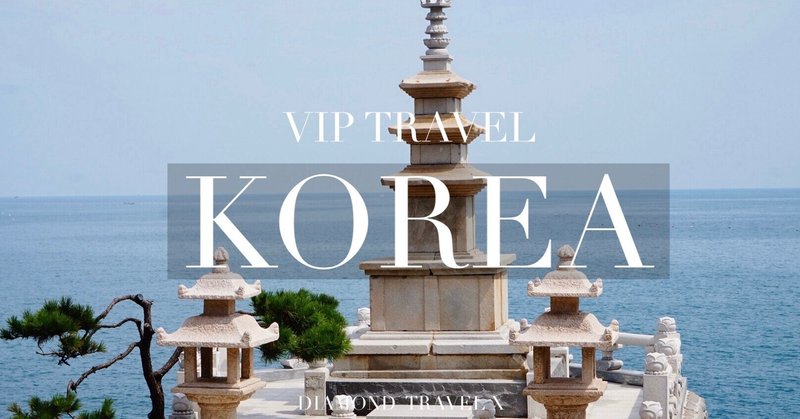
VIP TRAVEL KOREA Vol.5 釜山観光ガイド (絶景荒嶺山・ロッテホテル・釜山グルメ) Busan Travel Guide (Beautiful View of Mt.Hwangryeong, Lotte Hotel, Busan Gourmet)

VIP TRAVEL KOREA -地球次元調整の旅- (大韓民国)
-Journey to adjust the earth dimension- (Republic of Korea) By DIAMOND TRAVEL X TEAM
VIP TRAVEL KOREA Vol.5 釜山観光ガイド (絶景荒嶺山・ロッテホテル・釜山グルメ)
Busan travel guide (beautiful view of mt.hwangryeong, lotte hotel, busan gourmet).
Eng is below
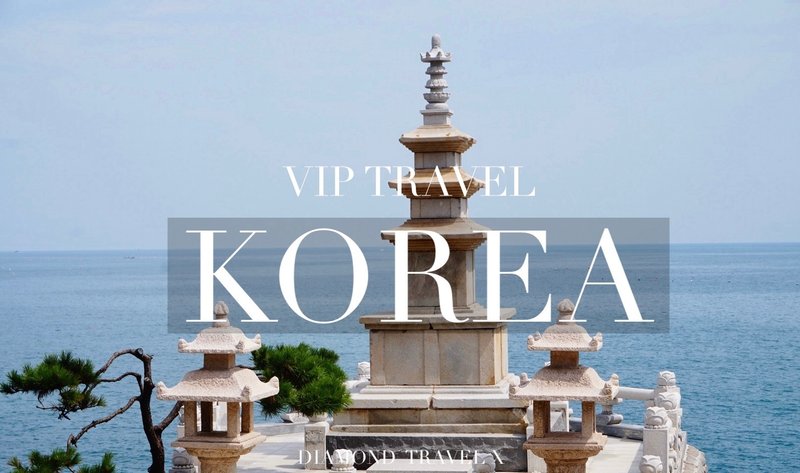
龍が宿る海辺の街 海雲台(ヘウンデ)とチョンサポ を巡った後は、 釜山の街を一望できる山に向かいました。
After visiting Haeundae and Cheongsapo. the seaside town where the dragon dwells, we headed to a mountain that overlooks the city of Busan.
Hwangryeong Mountain 황령산 荒嶺山 (ファンニョンサン)

荒嶺山は、 釜山広域市釜山鎮区(プサンジング)、 南区(ナムグ)、水営区(スヨング)に接している、標高427メートルの山です。
荒嶺山は 釜山の街を一望出来るので おすすめします。
上から眺めないと 街がどのように構成されているのか 把握できないので、 上から眺めるのは外せないポイントです。
Mt.Hwangryeong is a mountain with an altitude of 427 meters that borders Busanjin-gu, Namgu, and Suyeong-gu in Busan.
Mt. Hwangryeong is recommended as it offers a panoramic view of Busan.
It's impossible to understand how a city is structured unless you look at it from above, so seeing it from above is a must.
Hwangnyeongsan Observatory Cafe 황령산 전망쉼터 荒嶺山には 絶景を眺められるカフェもあり、 休憩するのにもベストな場所です。
私達はラグジュアリーな場所で 休憩したいので、 私達のプライベートハイヤーのドライバーは LOTTE HOTEL BUSAN に私達を連れて行きました。
There is also a cafe on Mt. Hwangryeong with a spectacular view, It's a great place to take a break.
We wanted to rest in a luxurious place, so our private hire driver took us to LOTTE HOTEL BUSAN.
LOTTE HOTEL BUSAN 롯데호텔 부산 ロッテホテル 釜山

ロッテホテルは釜山を代表する ラグジュアリーホテルです。
果たして釜山に 満足行くラグジュアリーホテルは あるのかと 不安に思っていましたが、 デリカテッセンのケーキの美しさには 大変感動しました!
東京のパークハイアットなどや その他のLuxury Hotelよりも 上のデザインレベルかもしれません!
Lotte Hotel is a luxury hotel representing Busan.
I was worried that there would be a luxury hotel in Busan that I would be satisfied with, but I was very impressed by the beauty of the cakes at the delicatessen!
The design level may be higher than Tokyo's Park Hyatt and other luxury hotels!

カジノをする方は、 ロッテホテルに宿泊して 同じ敷地内のカジノを楽しんで そのまま併設のロッテデパートでショッピング という流れですね。 ロッテホテルのある Seomyeon 서면역 の繁華街も見れて良かったです。
If you want to play the casino, you can stay at the Lotte Hotel, enjoy the casino on the same premises, and then go shopping at the attached Lotte Department Store.
It was also nice to see the downtown area of Seomyeon where Lotte Hotel is located.
ディナーは、釜山で 韓国の大統領や財界人、芸能人も お忍びで通うという ローカルな高級ホルモン焼肉に 連れて行って貰いました。
Exquisite Busan gourmet
For dinner, we were taken to a local high-class offal Korean BBQ restaurant in Busan that even Korean presidents, business leaders, and celebrities frequent in secret.

釜山の旅の行程を終えて 皆で乾杯する時間は 最高に楽しいです! 釜山出身の韓国人 プライベートドライバーに 釜山グルメや釜山の食文化を 沢山教えて貰いました。
世界どこを旅しても、 その旅先の地元の人に 話を聞くのが一番だと痛感します。
It's so much fun to have a toast together after finishing busy trip in Busan!
Our Korean private driver from Busan taught us a lot about Busan gourmet and Busan food culture.
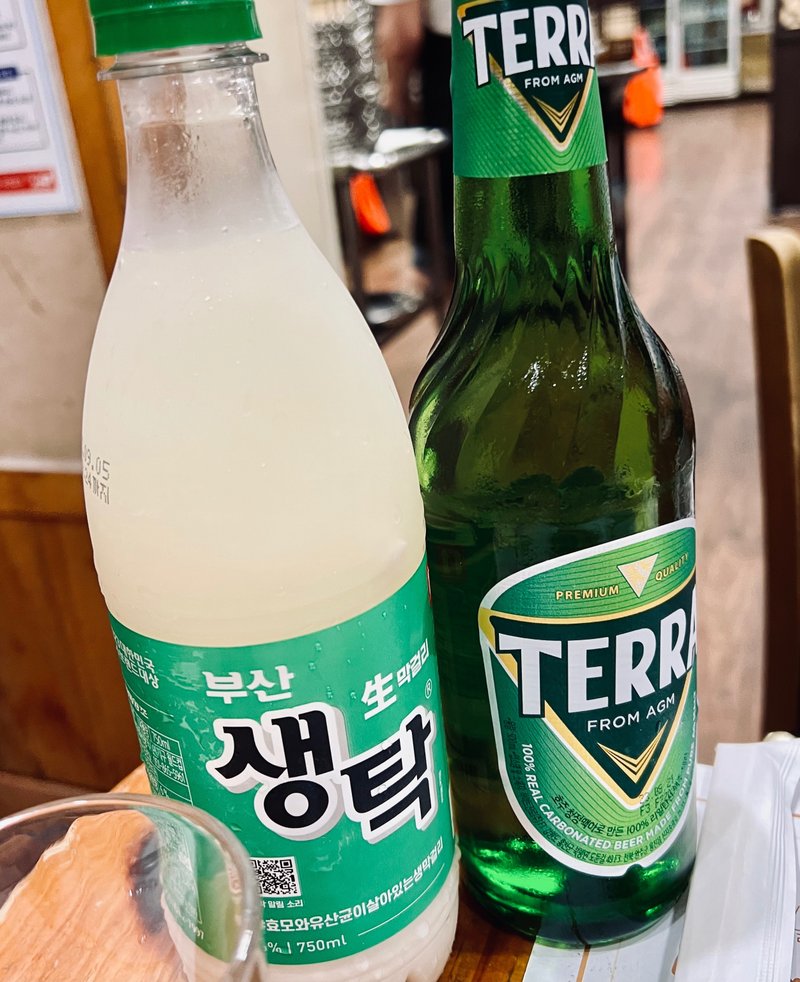
釜山名物 センタクという企業の 生マッコリは 最高に美味しかったです!
通常のマッコリと比べられない程美味しい! 発酵途中なので、 炭酸が入っていて、 とにかく美味しすぎました。 最高に美味しい釜山グルメを 満喫し、 次は、最後の目的地へと 出発しました。
大韓民国 次元調整の旅 の最後の重要なスポットです。
Busan's famous raw makgeolli from a company called Sentak was so delicious!
It's so delicious that you can't compare it to regular makgeolli! Since it's still fermenting, it has carbonic acid in it, and it was simply too delicious. After enjoying the most delicious Busan gourmet food, we departed for our final destination.
This is the last important spot for the dimensional adjustment journey in Republic of Korea.
Continue to the series below ↓
連載 VIP TRAVEL KOREA -地球次元調整の旅- -Journey to adjust the earth dimension-

VIP TRAVEL DIAMOND TRAVEL X
【WORLD VIP TRAVEL Expert】 TRAVEL JOURNALIST + VIP TRAVEL CONCIERGE
私達は世界旅行のプロフェッショナルです。 20年以上の億万長者のトラベルコンシェルジュ、 アテンドビジネスと、 10年以上の世界視察、ジャーナリスト経験を 組み合わせた、 プロフェッショナルのチームです。
We are world travel professionals. Billionaire travel concierge and attendant business for over 20 years. Overseas inspection by government and travel journalist experience over 10 years.
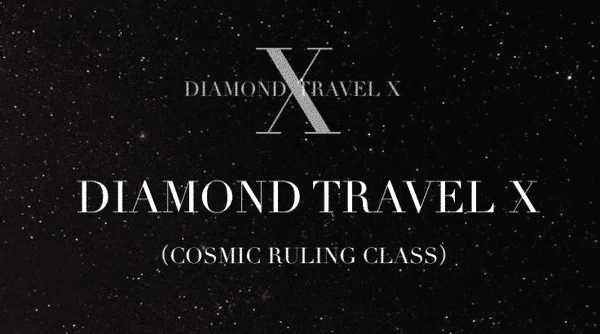
DIAMOND TRAVEL Xは 世界旅行、VIP、政府、国家、金融、精神世界、 地球科学/惑星科学の 卓越したスペシャリスト集団です。
世界各地 又は、地球を越えた場所で活躍しています。.
DIAMOND TRAVEL X is a group of outstanding specialists in world travel, VIP, government, nations, finance, spirituality, and Earth /Planetary science.
We are active in locations around the world and beyond Earth. Profile / Work Experience (in Space) 宇宙間のプロフィール/仕事経歴

【DIAMOND TRAVEL X のウェブサイト解説 /プロフィール /仕事経歴】 [website explanation / profile / work history]
【 DIAMOND TRAVEL Xの アセンションの歴史とアセンション方法の伝授 】 [Ascension history and teaching of the ascension method]
【SNS】 DIAMOND TRAVEL X : Instagram X Link REI NA LANI : Instagram Link
Copyright DIAMOND TRAVEL X All Rights Reserved. すべての画像と文章とその内容は 著作権法により保護されています
- #ダイヤモンドプリンセス
Thank you for your support for us. Blessings for you. Mahalo.

IMAGES
VIDEO
COMMENTS
Cost To Travel In South Korea In 2024. This part of the South Korea travel guide will help you understand some of your expected costs to travel to Korea. The costs to travel to Korea include flights, accommodation, food, drinks, transportation, activities, sim cards, visas, souvenirs, travel insurance, and lots more.
See Korea Travel Fair Schedule at a Glance! [Editor's Insight] Find Everything at Daiso Korea! ... April 25, 2024 Price: 10,000 won Sales locations: Klook, KKday, Seoul Travel Pass, Trippose, Get Your Guide, Trazy Pick-up period: April 27 - May 5, 2024 / 10:00-17:00 Pick-up locations: Incheon International Airport Terminal 1, K-Royal ...
South Korea. Asia. From Seoul's glittering nightlife to Seoraksan National Park's vertiginous hikes, South Korea offers the traveler a dazzling range of experiences, beautiful landscapes and 5000 years of culture and history.
Korean Seasons Guide. The best time to visit South Korea is during the warm spring or fall seasons. The weather is mild and clear, there's a range of festivals and seasonal activities to enjoy, and you can travel to Korea comfortably. The best months to visit are April, May, September, and October.
South Korea Travel Costs. Accommodation - A bed in a hostel dorm with 4-6 beds costs 20,000-25,000 KRW per night, while a bed in a dorm with 8 or more beds costs around 14,000-20,000 KRW. A single private room is around 40,000 KRW, while a double private room is 70,000 KRW.
4. Take advantage of Korea's world-class public transportation. Korea's subways, trains and buses are clean, convenient and efficient. It can sometimes seem like a new station is added to the Seoul metro every month, and the rail and intercity bus networks will take you to every corner of the country.
We hope this Korea Travel Guide can help you have an amazing, safe, and memorable trip. Considering the enormity of planning an entire Korea tour, we will focus on providing general tips and suggestions. Subsequently, a lot of the Korean tour tips will be related to Seoul, the overall most popular tourist destination.
The Taegeukki. Winter Sonata. Tailor-made travel itineraries for South Korea, created by local experts. 14 days / from3800 USD. Culture & Island life. Experience the highlights of Korea with a private guide by your side. Fascinating Seoul with a day trip to the DMZ, followed by days in Gyeongju and Busan.
Get information on South Korea Travel Guide - Expert Picks for your Vacation hotels, restaurants, entertainment, shopping, sightseeing, and activities. Read the Fodor's reviews, or post your own.
The Seoul Guide is a free online travel guide for visitors planning a trip to Seoul, the historic, cutting edge, and fast-paced capital city of South Korea. This site is designed and intended to help visitors plan their trip, whether it be your first time or 100th. Here you will find information about sights and attractions, transportation and ...
Discover South Korea with IVisitKorea: Essential Travel Tips, Activities, and Cultural Guides for an Unforgettable Journey.
Before making your travel plans South Korea, check out this South Korea travel guide that will help you in finalizing your travel itinerary! South Korea is a country of juxtaposition. You can find serene mountain valleys bumping against pulsing lights and rush of 24-hour cities. Korean tradition collides with ultra-modern fashion and design.
My name is Joel, I'm the author of In My Korea. I've lived and travelled across Korea since 2015. I love learning more about Korean culture, hiking the many mountains, and visiting all the coolest places in Korea, both modern and traditional. I'm a Brit, a lover of exploring, travelling, hiking, trying new things, meeting new people ...
To give you an idea, you should expect to travel in South Korea with an average daily cost of about USD $35~ per person on a budget, or at least $100~ if you want to experience more comfort on activities, tours, hotels, and more. (Values below show low budget to medium budget ranges). Hotels: $20 to $100 USD / day. Food: $10 to $30 USD / day.
Going to South Korea as part of Intrepid's brand new 18 - 35 year old South Korea tour, food is a huge part of the experience and local guides do the work finding the best hidden gems so you ...
Instead, try visiting Korea in the spring or autumn shoulder seasons when crowds are smaller and accommodations and flight prices are more reasonable. The best time to visit Korea is perhaps late March and early April when the cherry blossoms are in full bloom throughout the country. Autumn between October and November is another fantastic time ...
How to get around Seoul. Incheon International Airport is located in the city of Incheon, about 50 miles from downtown Seoul. The fastest way to Seoul is via the Airport Railroad Express train: It's a bargain, at under $10, and you'll be in the heart of Seoul in precisely 43 minutes. Buses (also $10) and taxis (at least $70) are available ...
Enroll in the Smart Traveler Enrollment Program (STEP) to receive security messages and make it easier to locate you in an emergency. Call us in Washington, D.C. at 1-888-407-4747 (toll-free in the United States and Canada) or 1-202-501-4444 (from all other countries) from 8:00 a.m. to 8:00 p.m., Eastern Standard Time, Monday through Friday ...
South Korea Travel Guide. Photograph by Jodi Cobb, Nat Geo Image Collection.
Seoul Travel Guide - Forbes Travel Guide. In recent years, Seoul has made a name for itself on the global stage as the high-tech, fashion forward capital of South Korea. The city is teeming with life and its more than 10 million inhabitants are constantly on the move, using an extensive public transportation system to work, shop, eat and play ...
If you want to know more about a Korean bath house and what to do inside, here's a step by step guide to the Korean bath house culture. 11. Visit an amusement park. Lotte World: Lotte World is the most popular theme park in Seoul and is easy to get to right in the city.
The Sights In Seoul, South Korea. Seoul itself is an architectural landmark. There are specific sights in Seoul that are places you have to visit while you're there. A few of those places are: N Seoul Tower, the Ansan Starlight Village, and the Jogyesa. There's also entertainment like underground shopping.
Explore CNN's South Korea Travel Guide and discover the best things to do and places to stay, plus get insider tips, watch video and read inspiring narratives.
A Korea Travel Guide. If you've found yourself on this page, yay! I love when people want to come visit one of my favorite places in the world. Korea has become somewhat of a second home to me - a place I always feel somewhat comfortable in, even if I've been away for a while. I first visited in 2011 when I studied in Seoul for the summer ...
10 of the most delicious reasons why you should visit the South Korean capital
South Korea Travel Guide 2024: A Companion Guidebook to the Enchanting Realm of Tradition, Innovation, and Eternal Beauty (Explorer's Companion 9) Kindle Edition . by Jessica Lampert (Author) Format: Kindle Edition. Book 9 of 16: Explorer's Companion . See all formats and editions.
Gurye in South Jeolla Province stands out as Korea's prime spring travel destination. When spring comes, the Gurye Cornelian Cherry Festival is held as the cornelian cherry flowers bloom on the ...
【Travel Guides】 Unearth Korea's most enchanting tourist spots and hidden cultural treasures. We provide comprehensive travel guides, from historic palaces to modern street art, from bustling traditional markets to serene beaches. We offer all-inclusive guides to help you plan your itinerary precisely.
The 10th Korea Festival & Travel Expo (K-Festival 2024)_4. ... Reservation may be canceled when a guide is unavailable on the desired date and course. Seoul Guided Walking Tour Office (02-6925-0777) will contact you to confirm reservation. (At least 5 days~1 month before tour day) Reservation may be canceled when Seoul Guided Walking Tour ...
VIP TRAVEL KOREA -地球次元調整の旅- (大韓民国) -Journey to adjust the earth dimension- (Republic of Korea) By DIAMOND TRAVEL X TEAM VIP TRAVEL KOREA Vol.5 釜山観光ガイド (絶景荒嶺山・ロッテホテル・釜山グルメ) Busan Travel Guide (Beautiful View of Mt.Hwangryeong, Lotte Hotel, Busan Gourmet) Eng is below 龍が宿